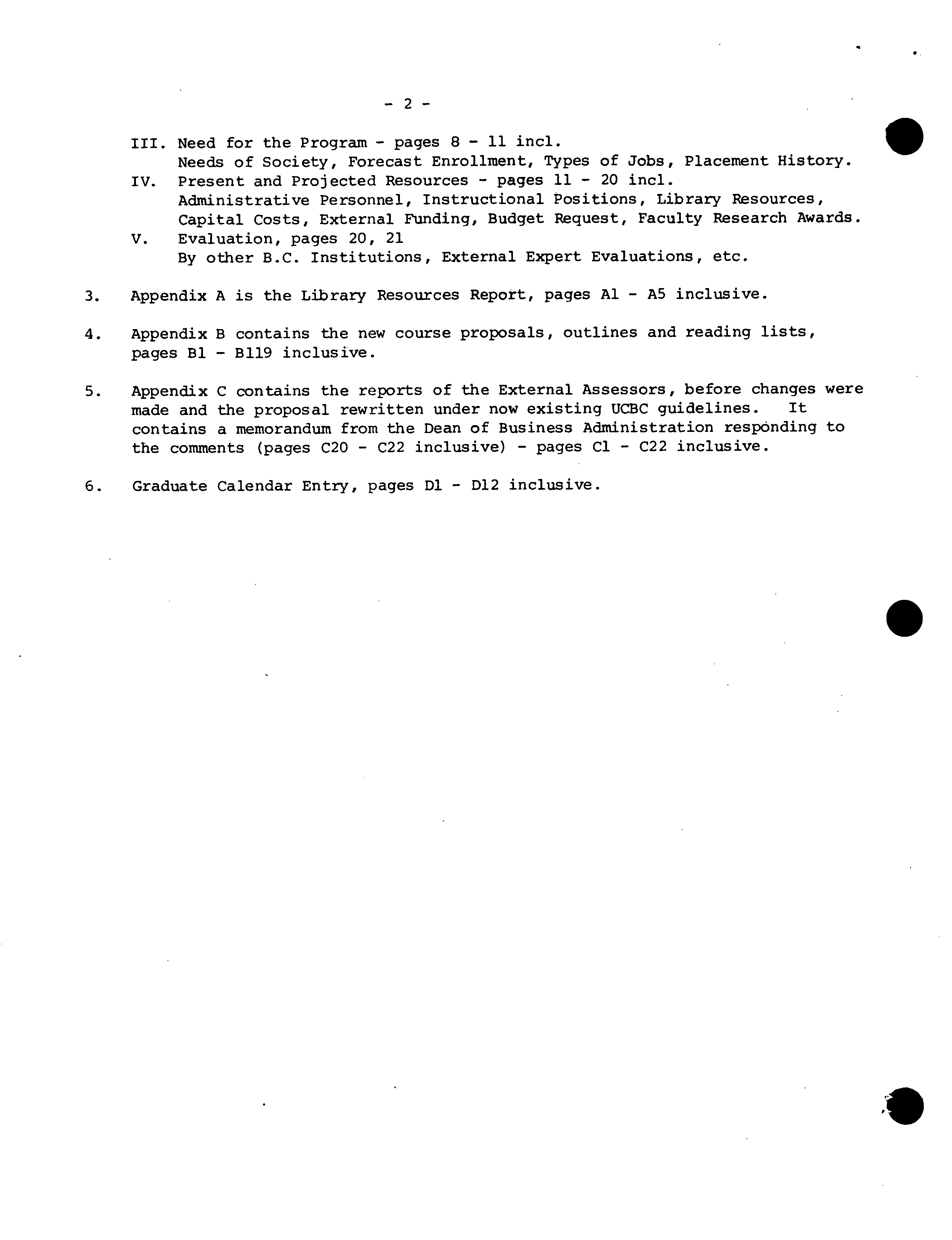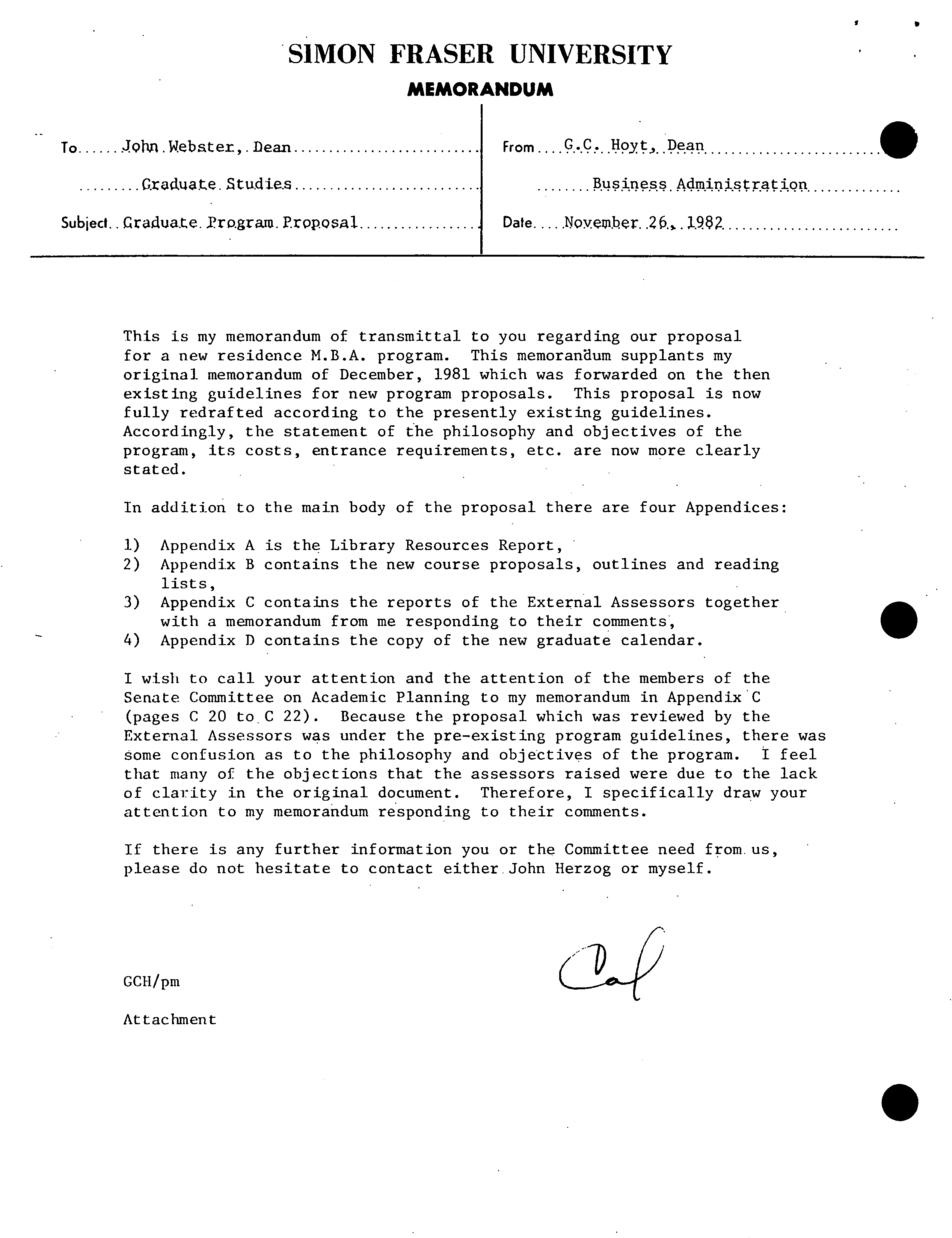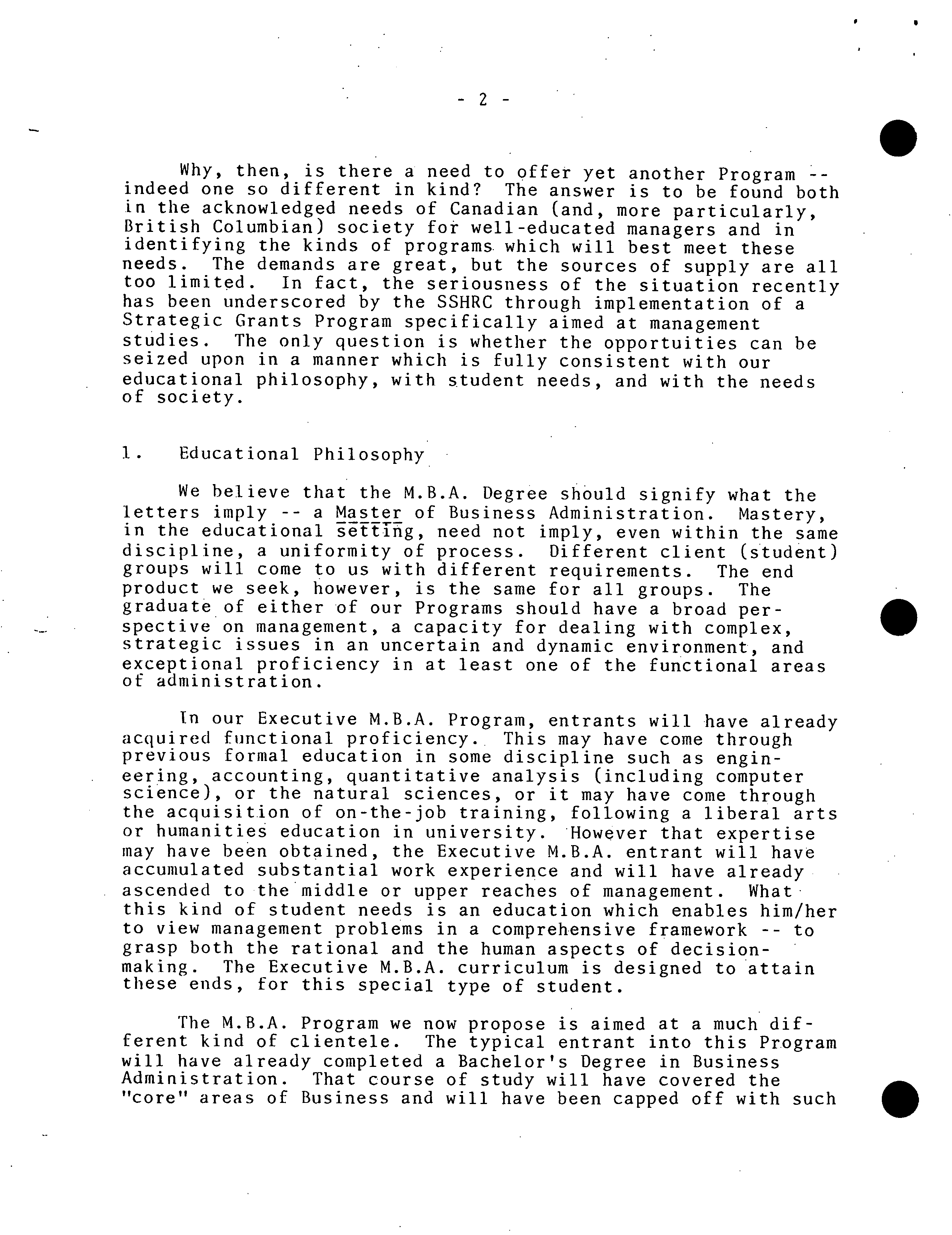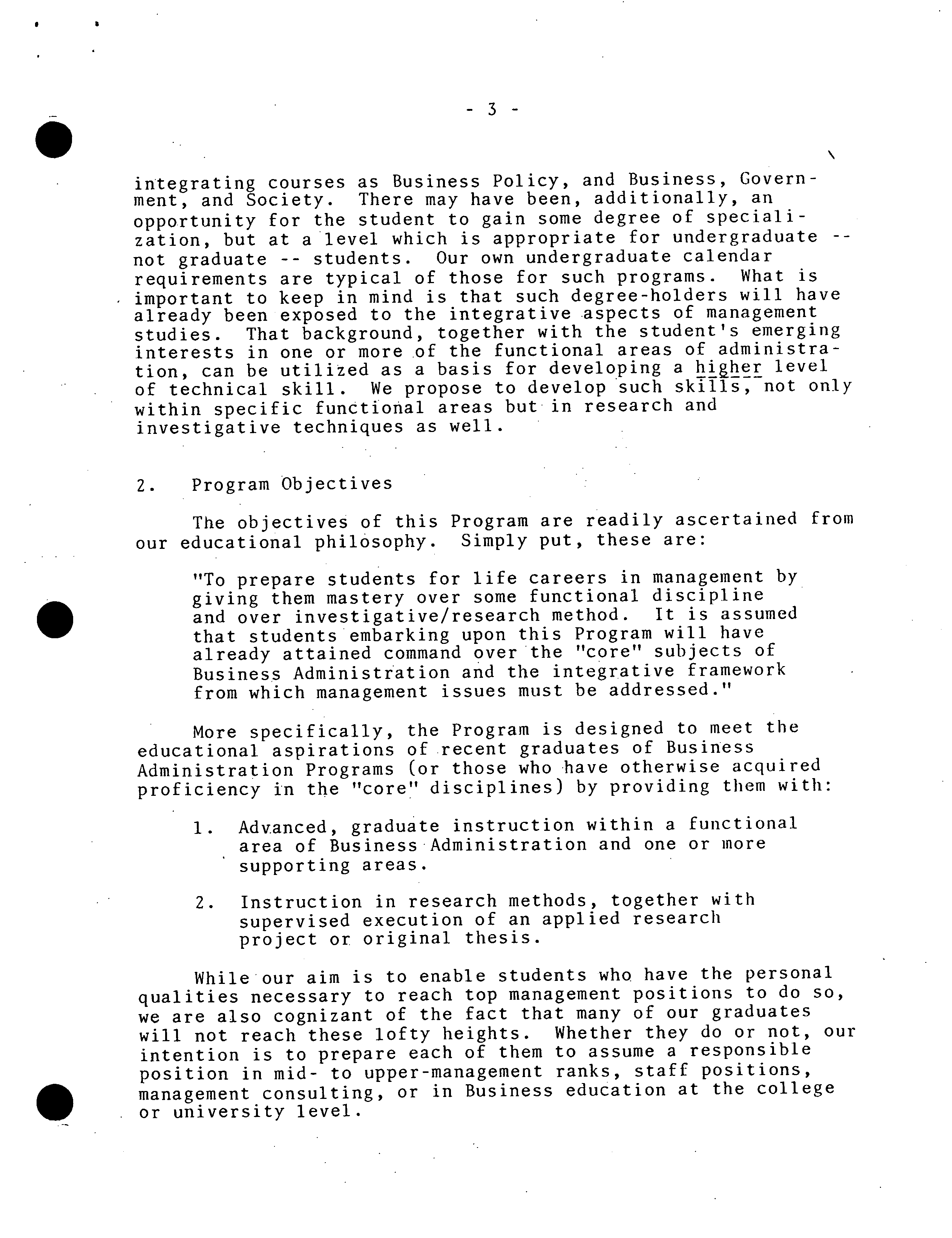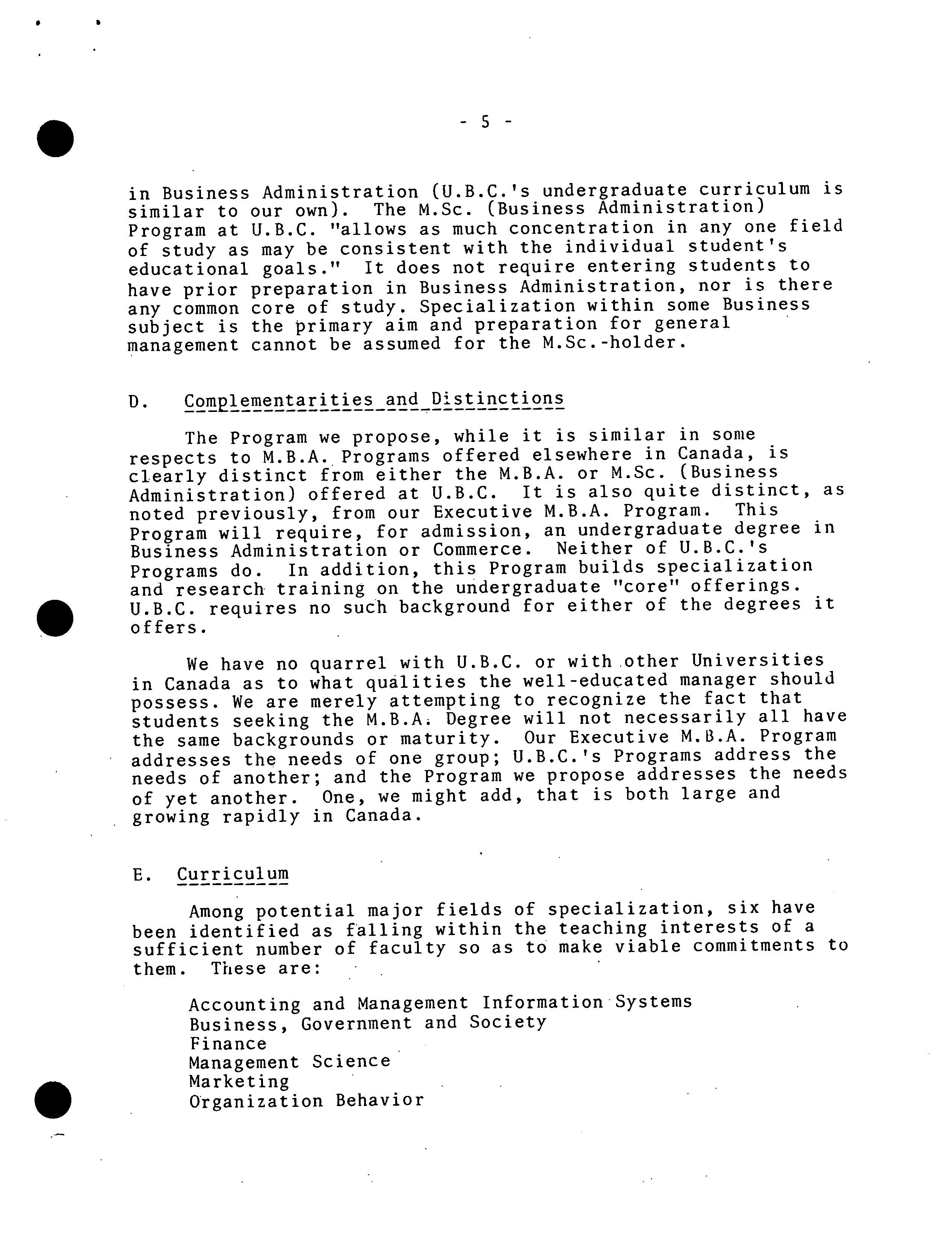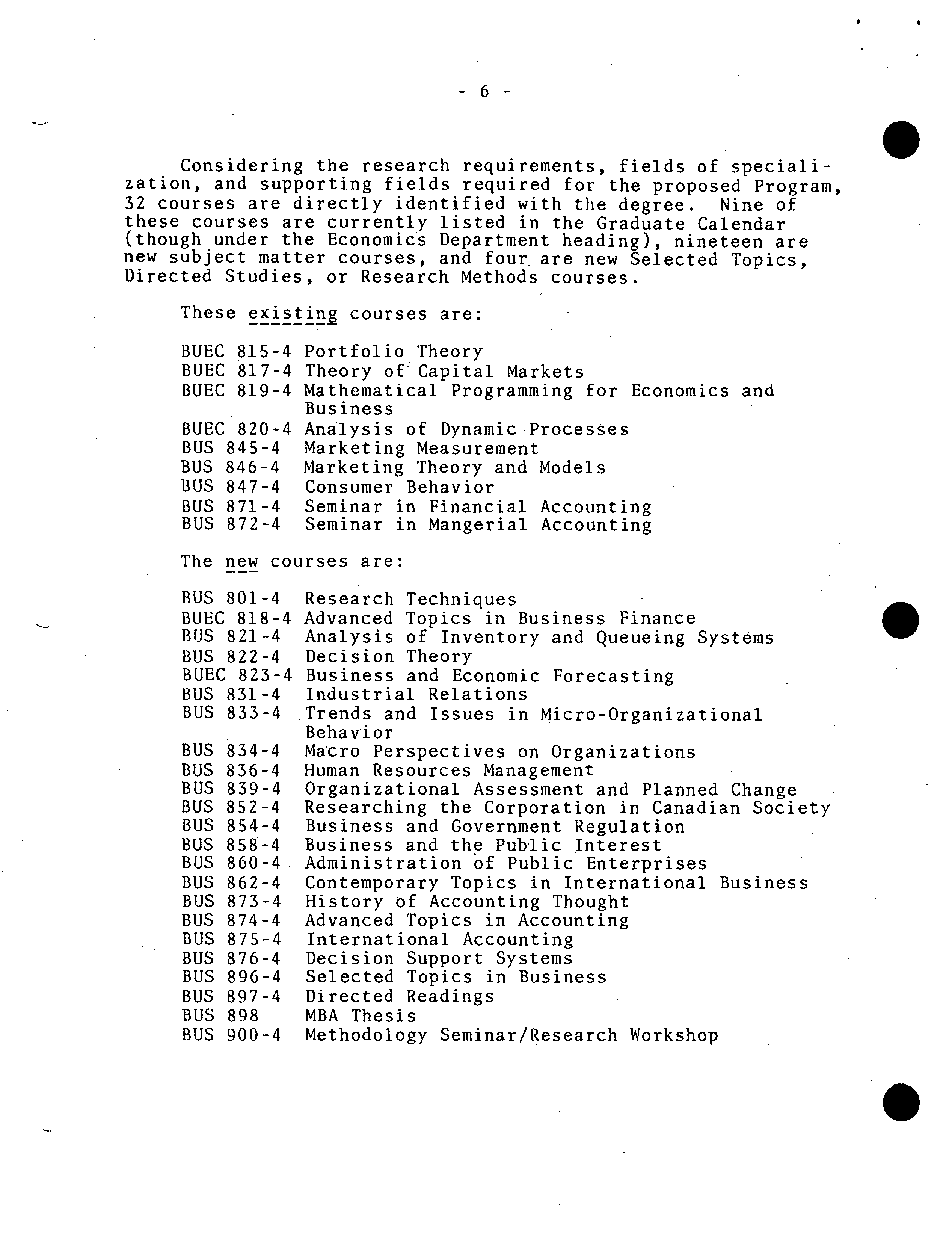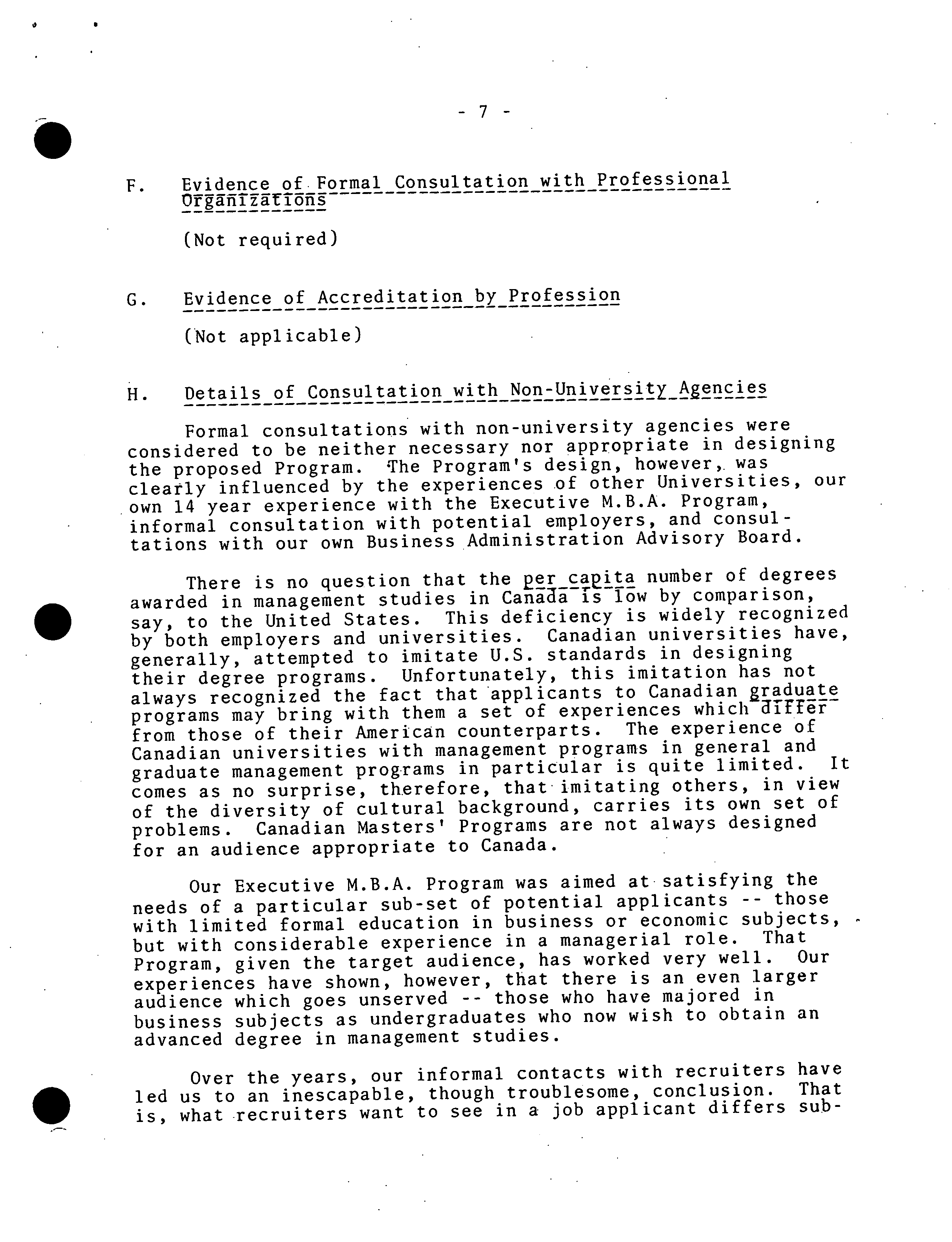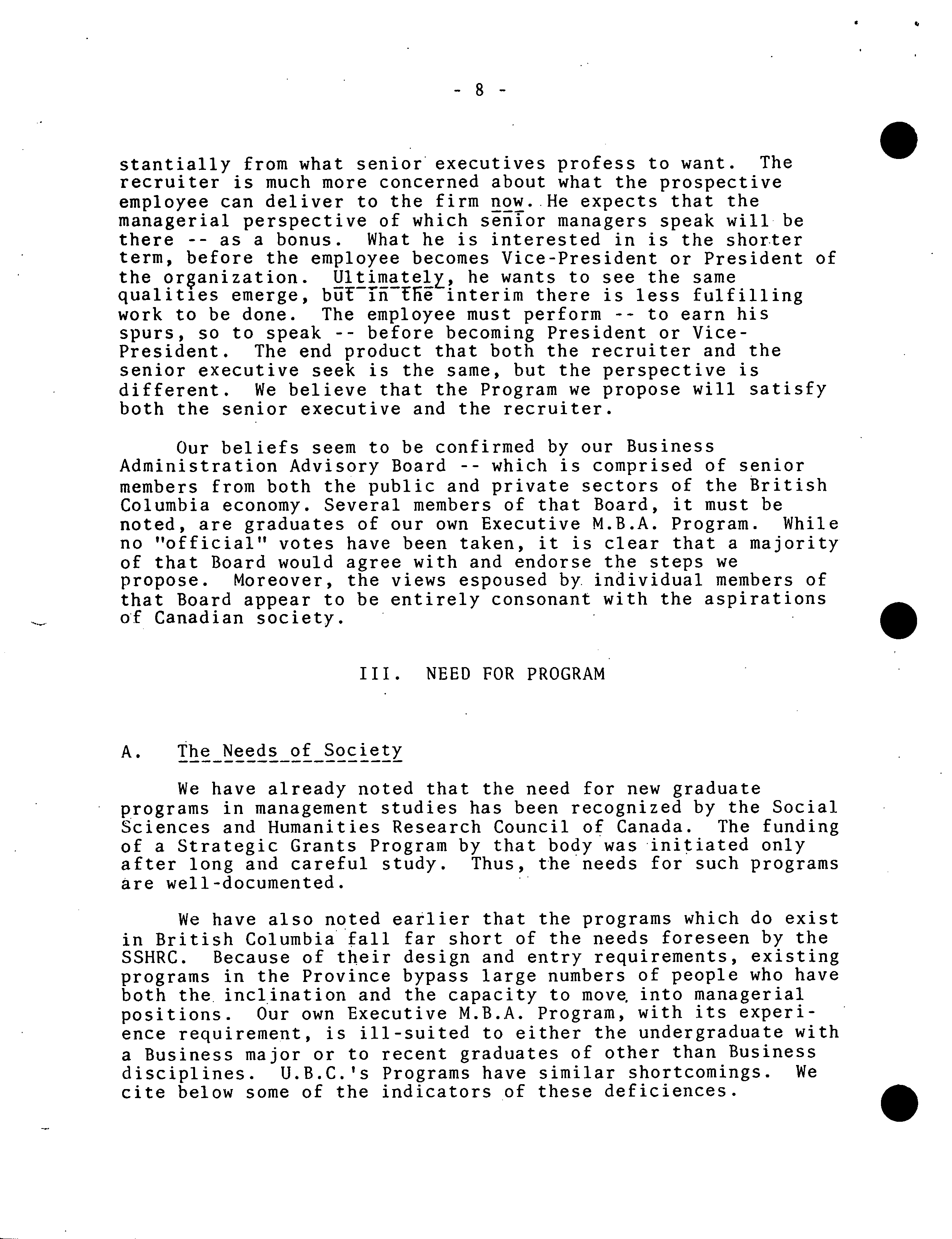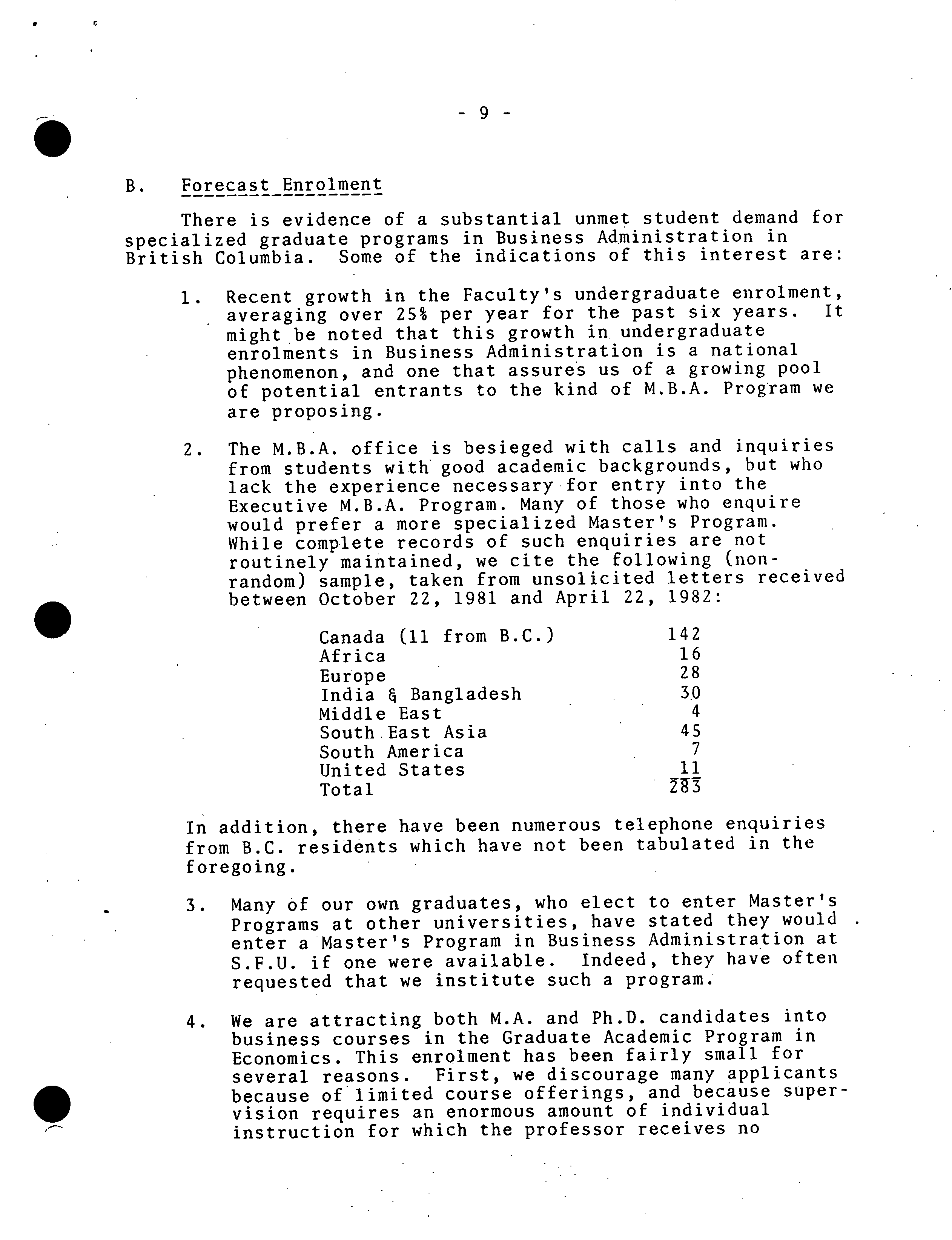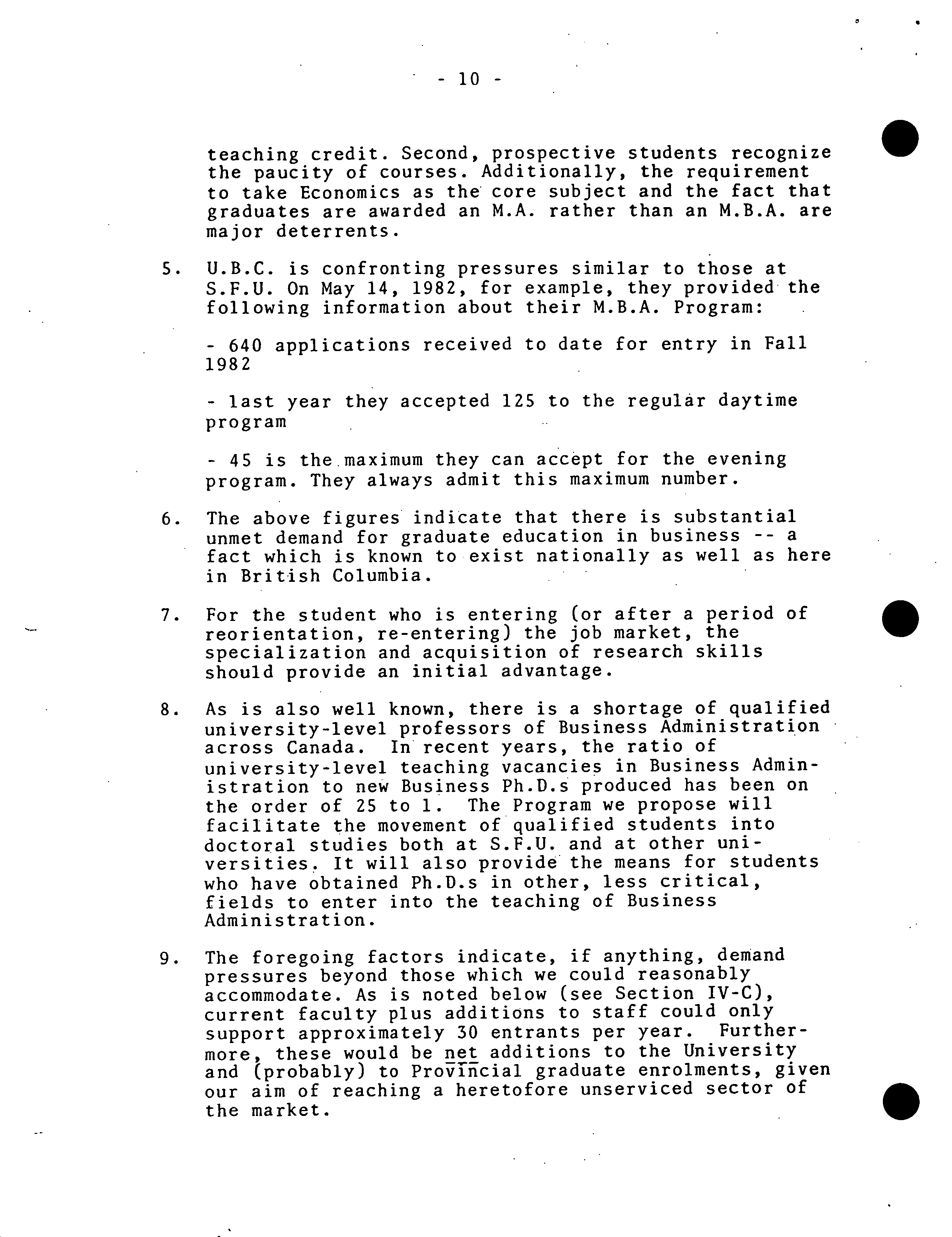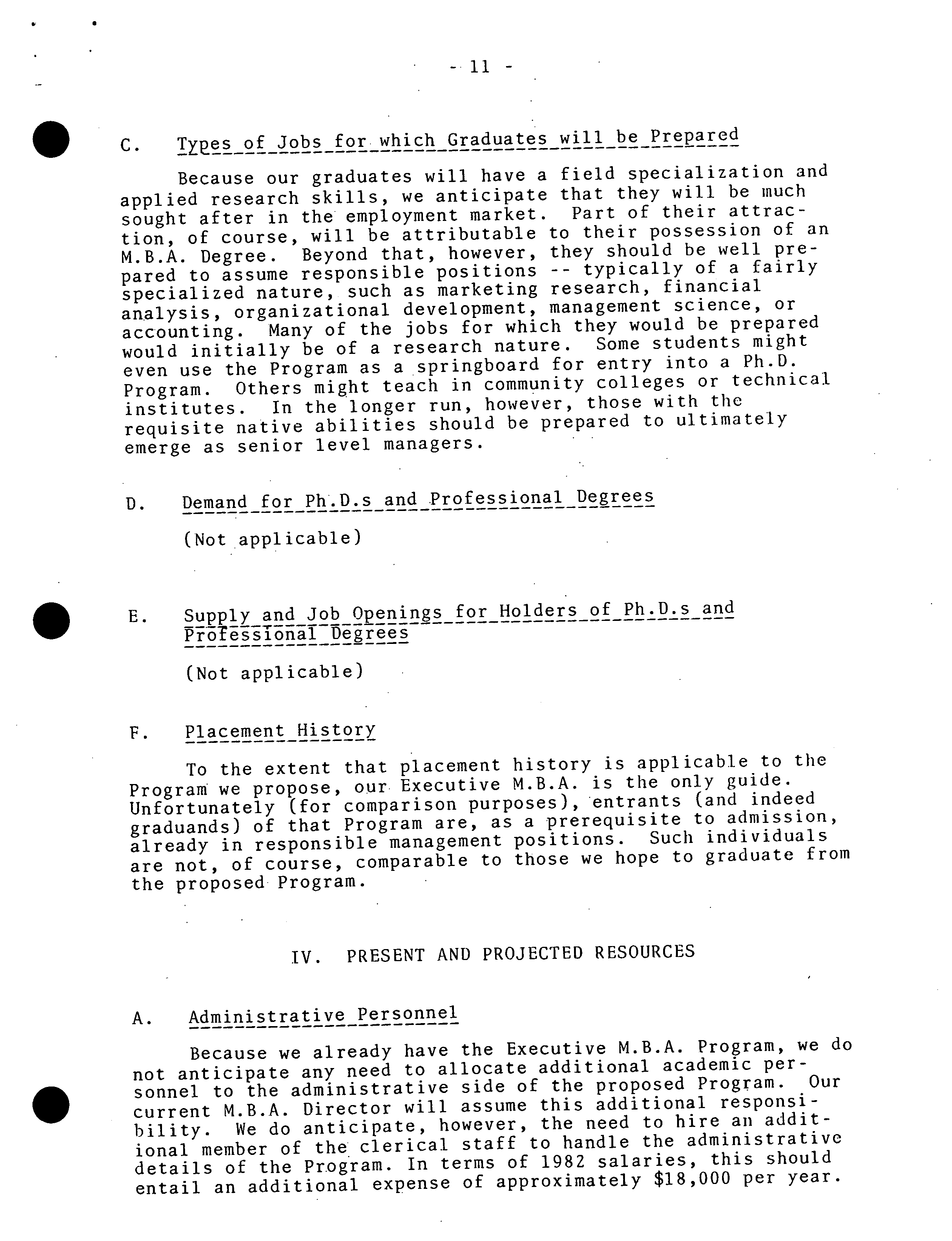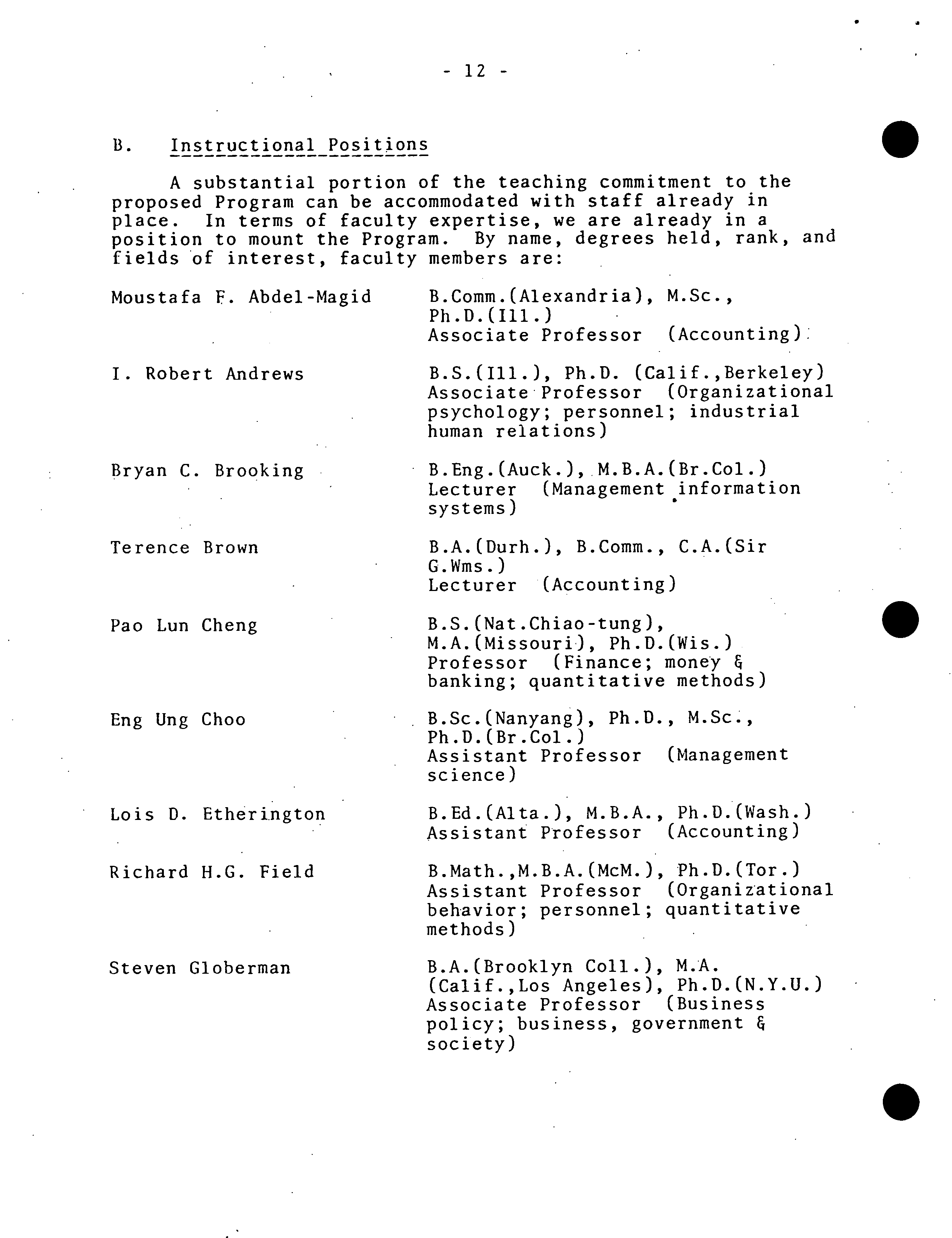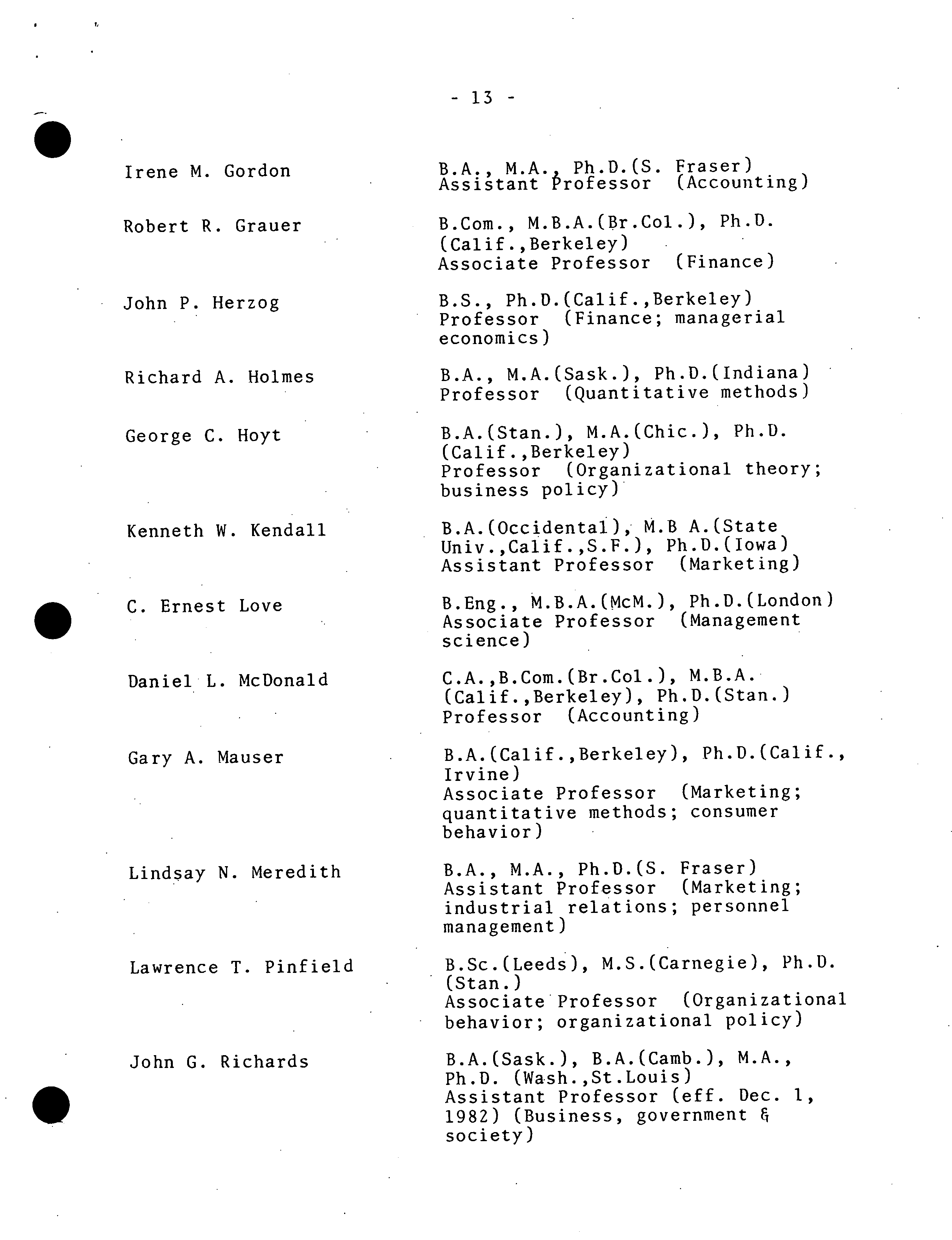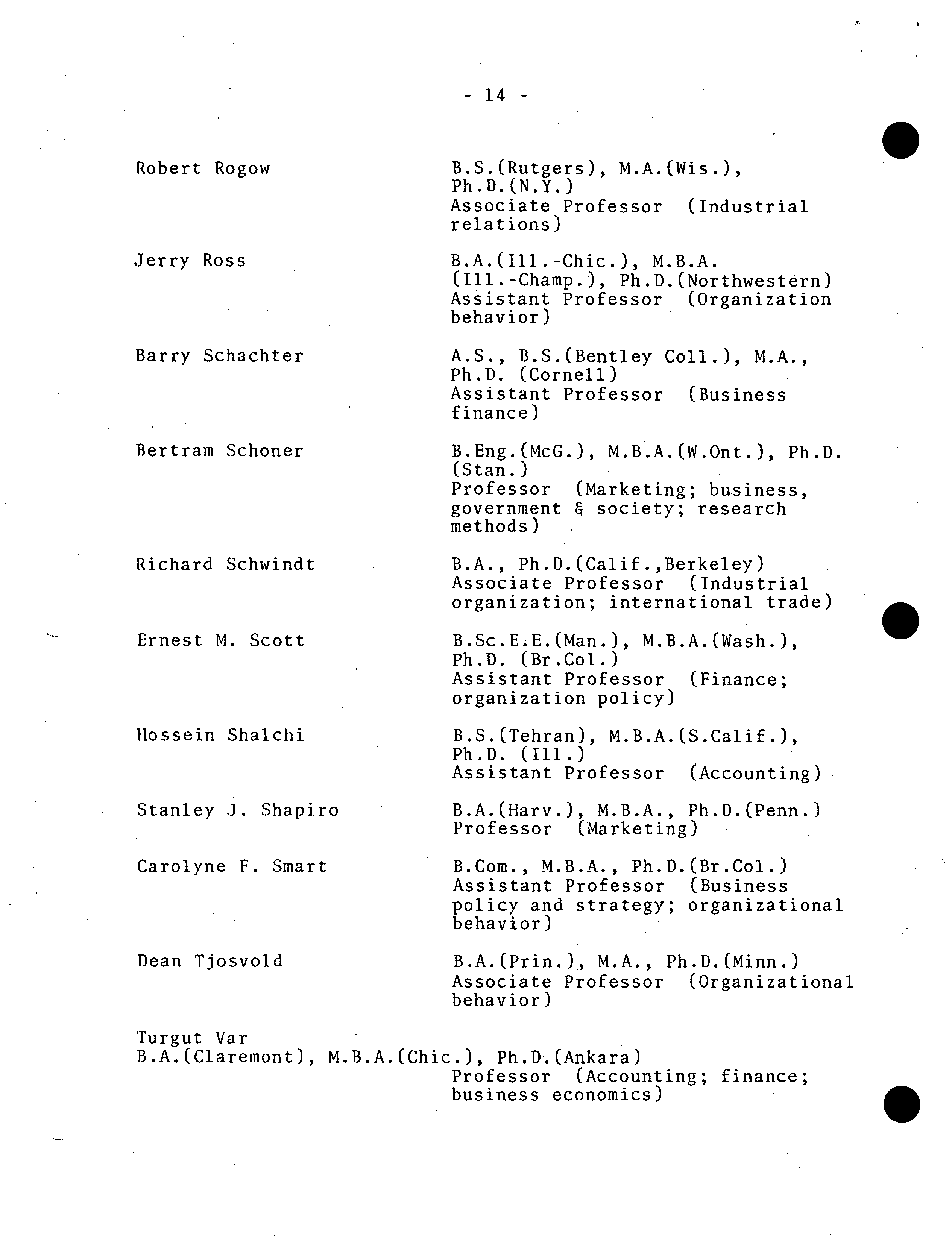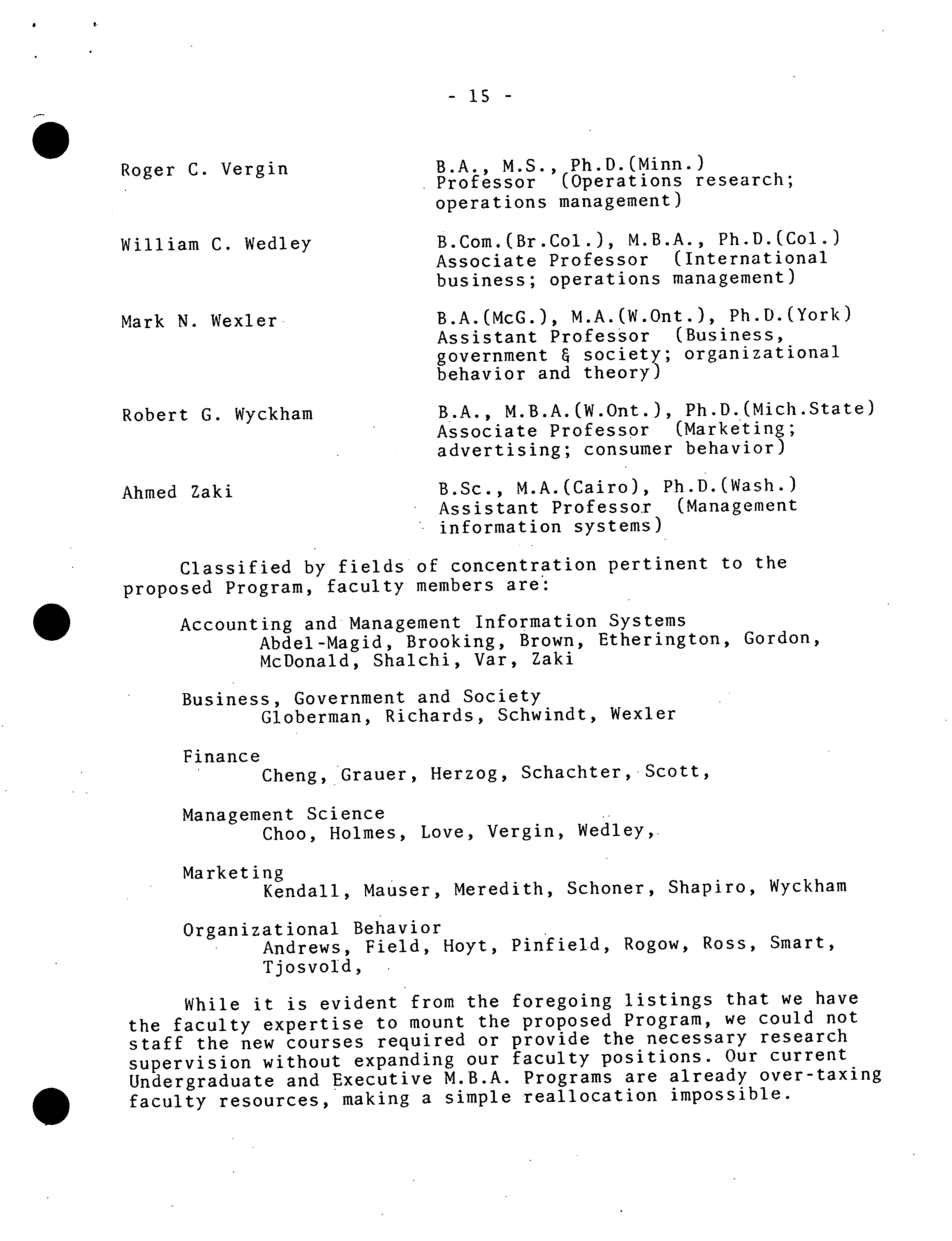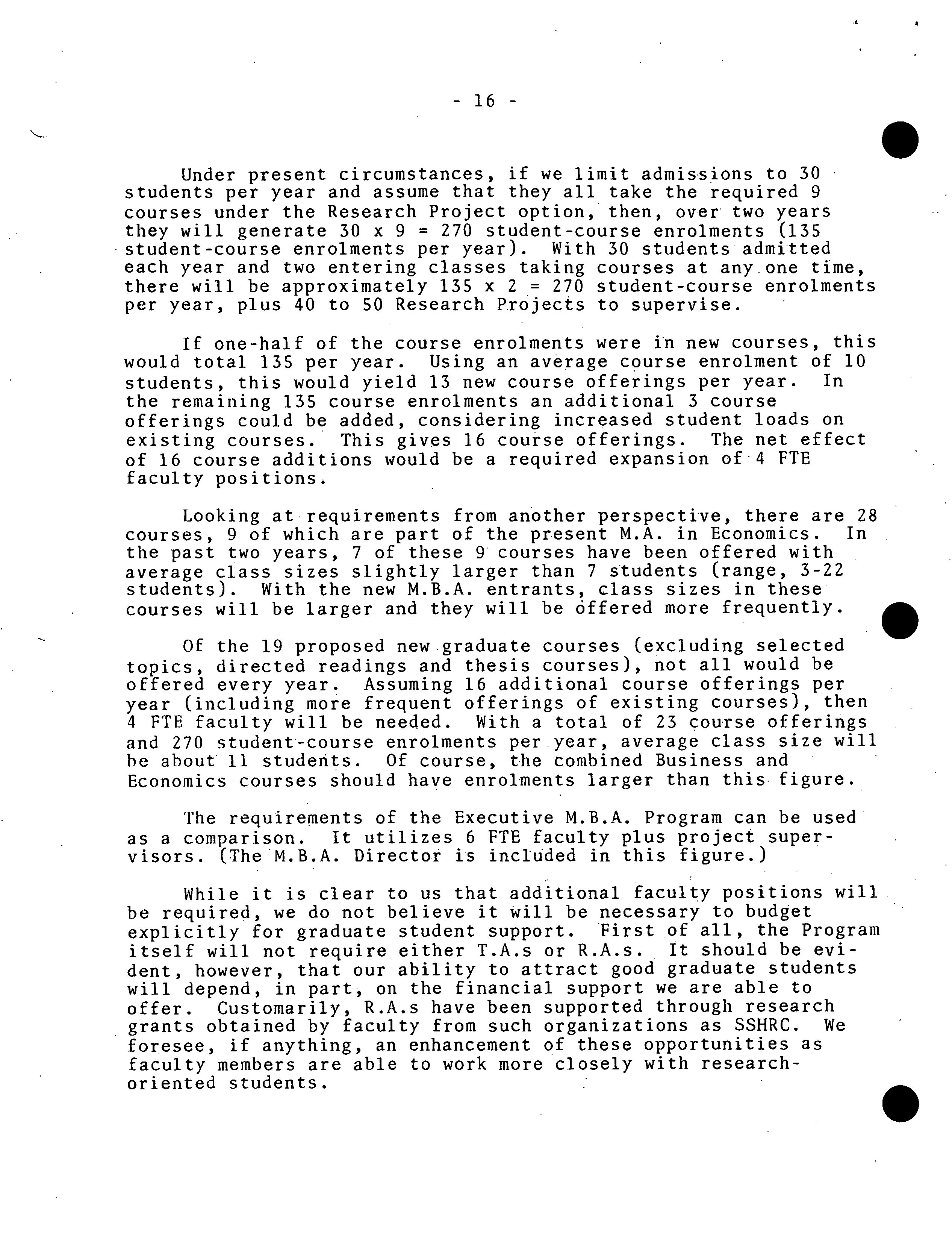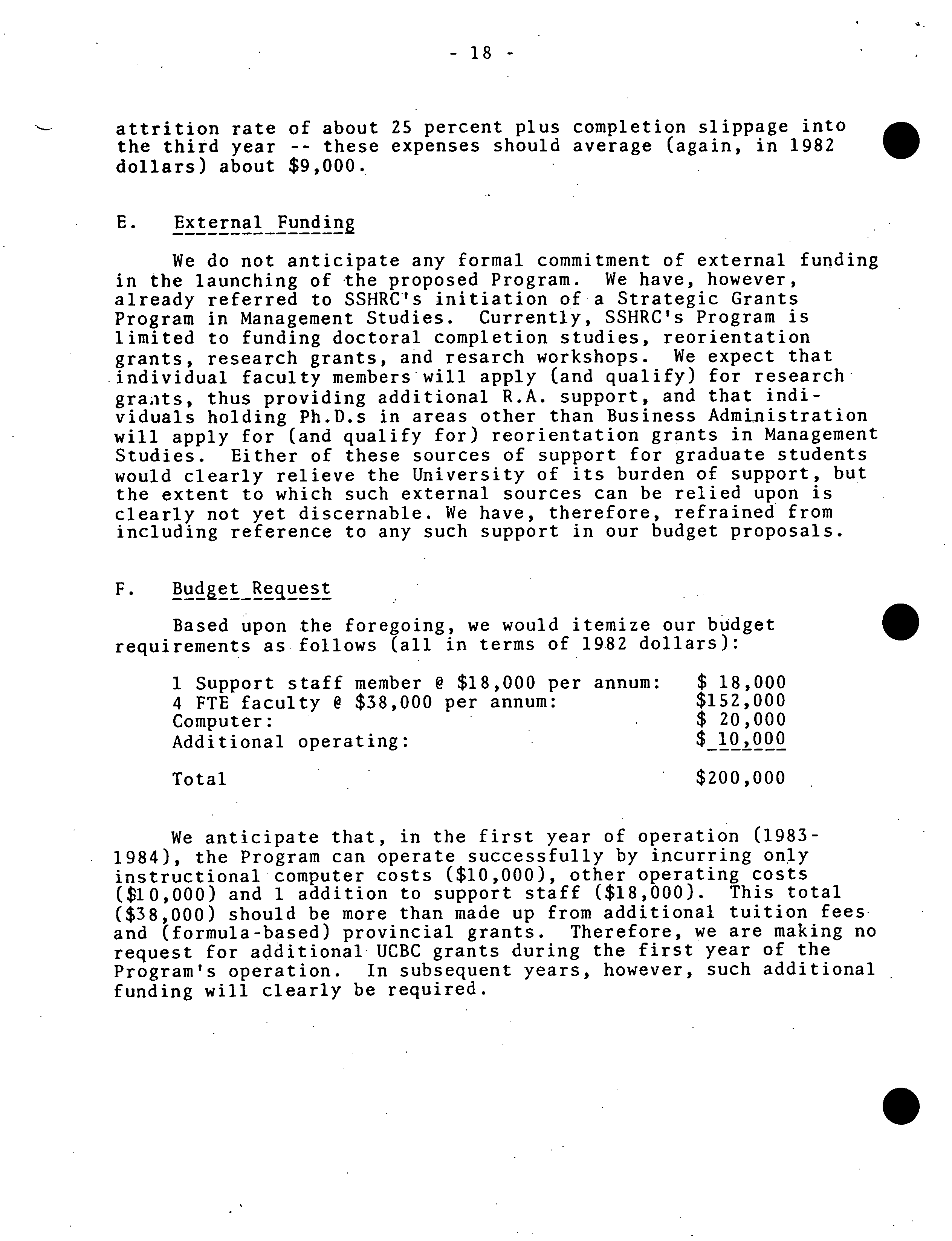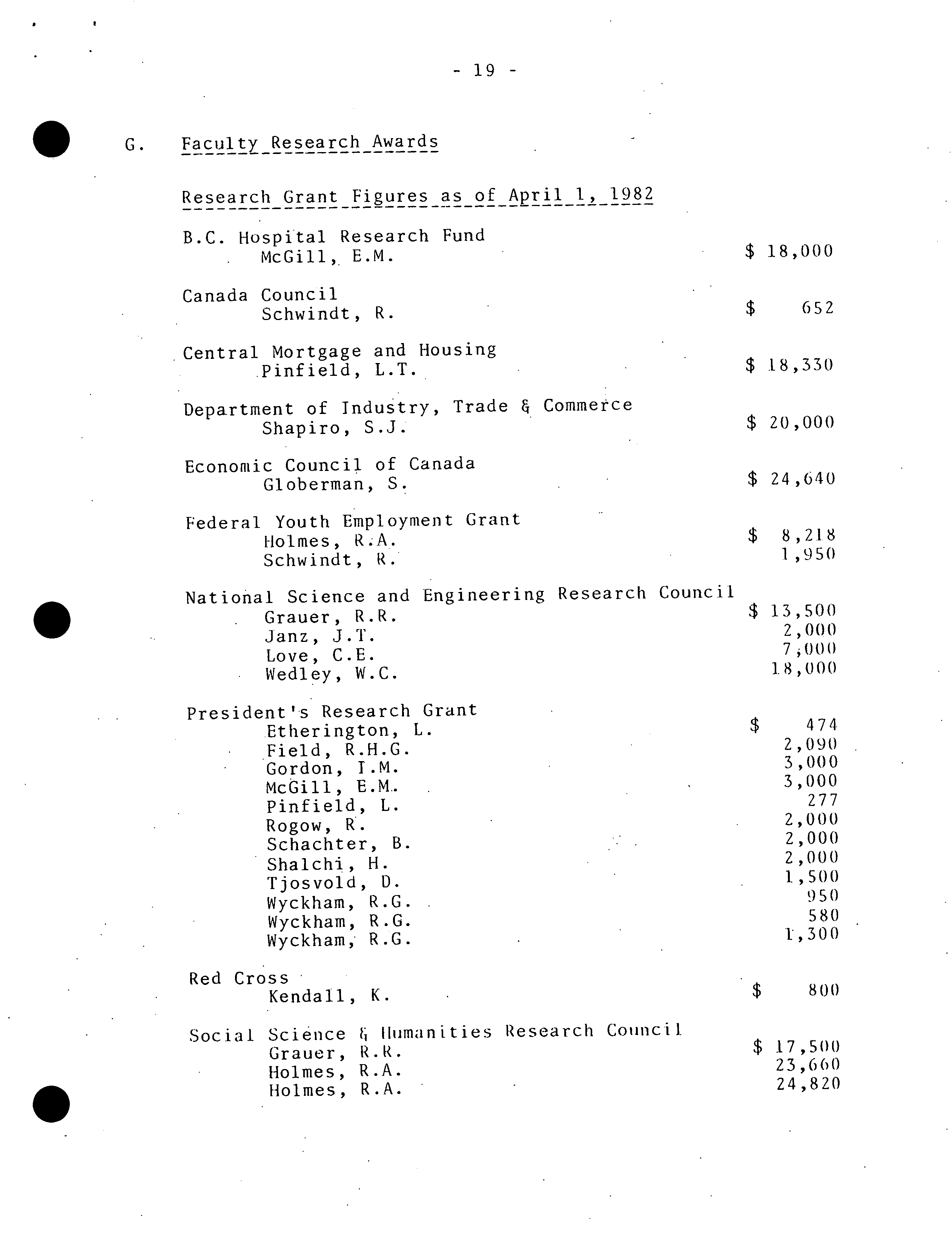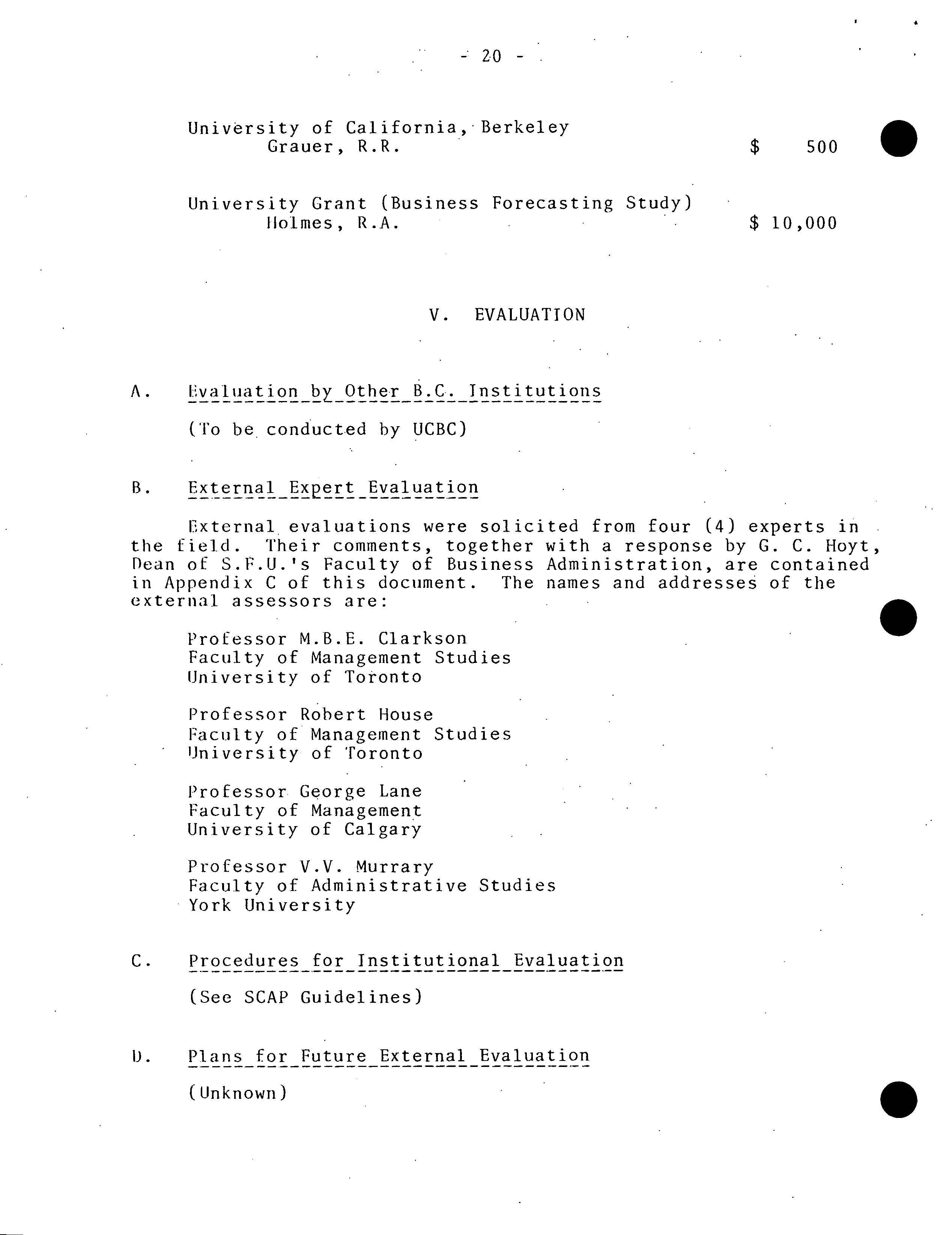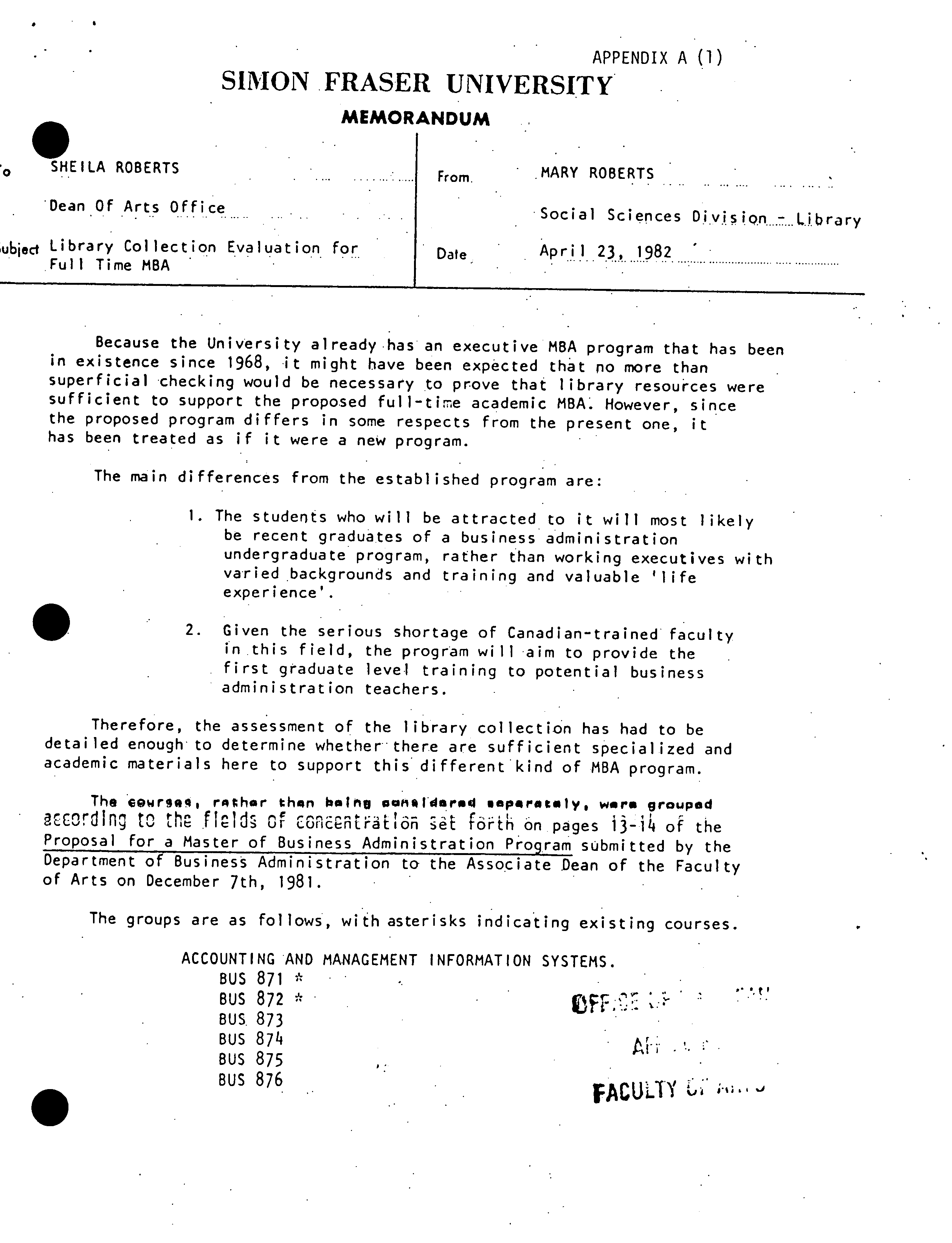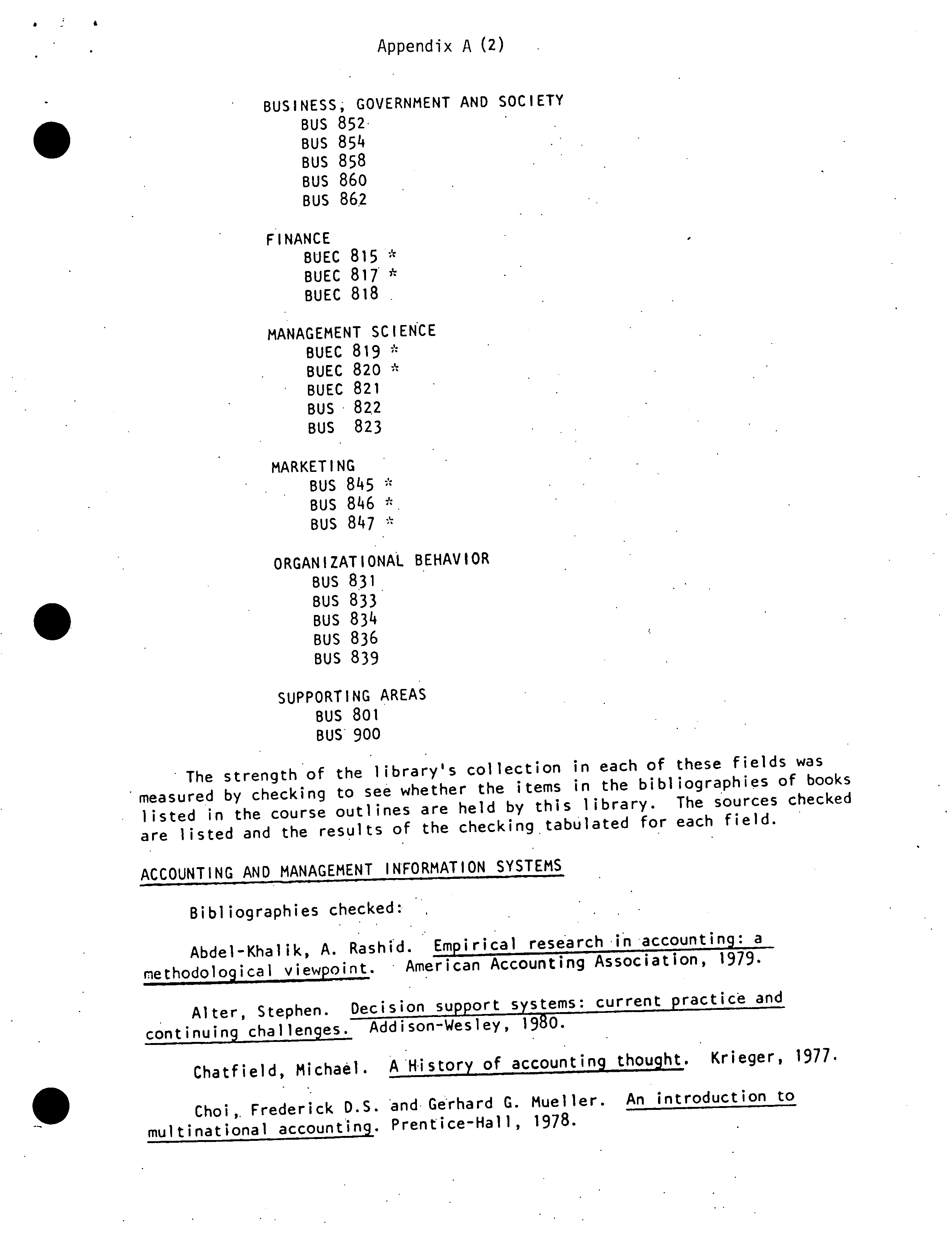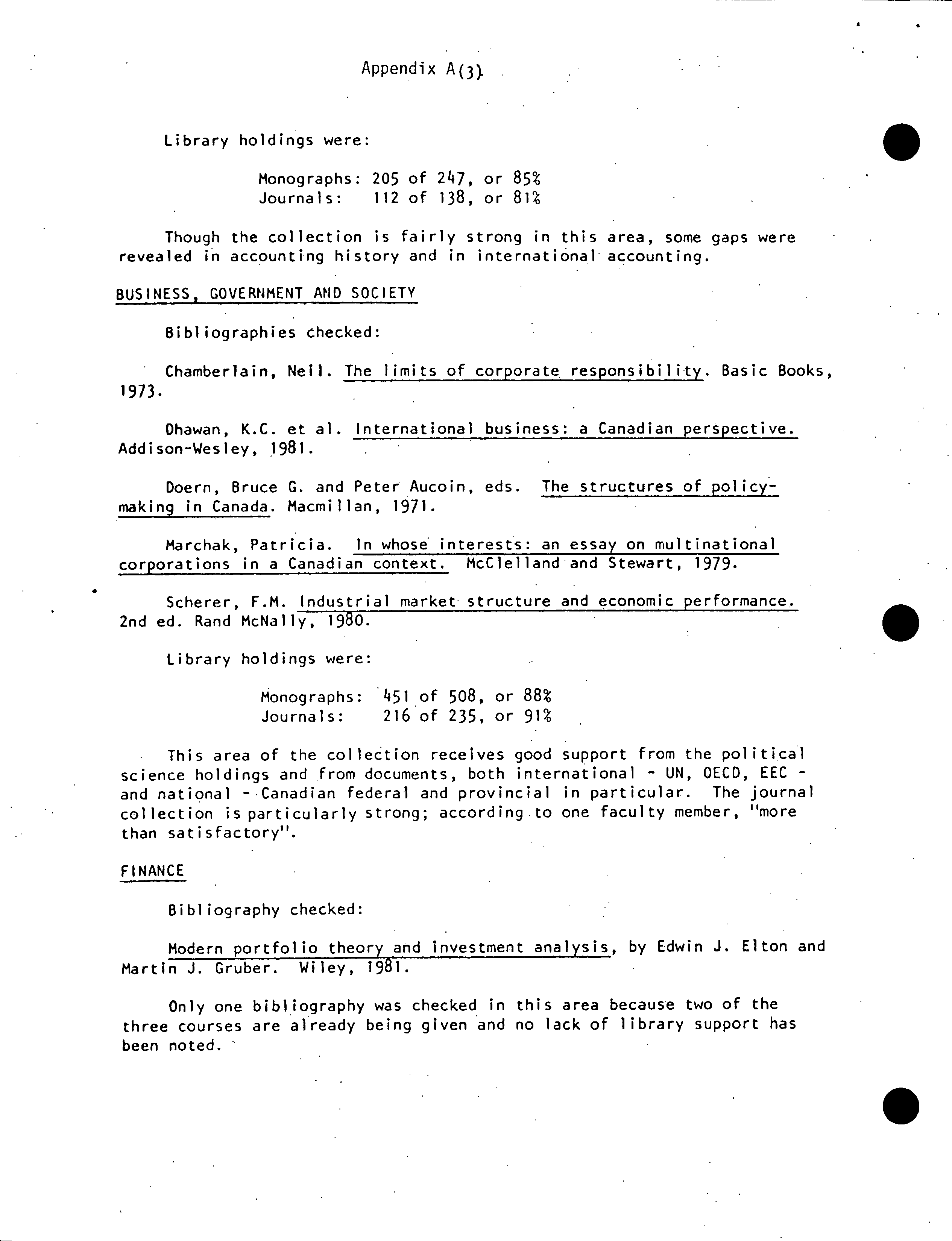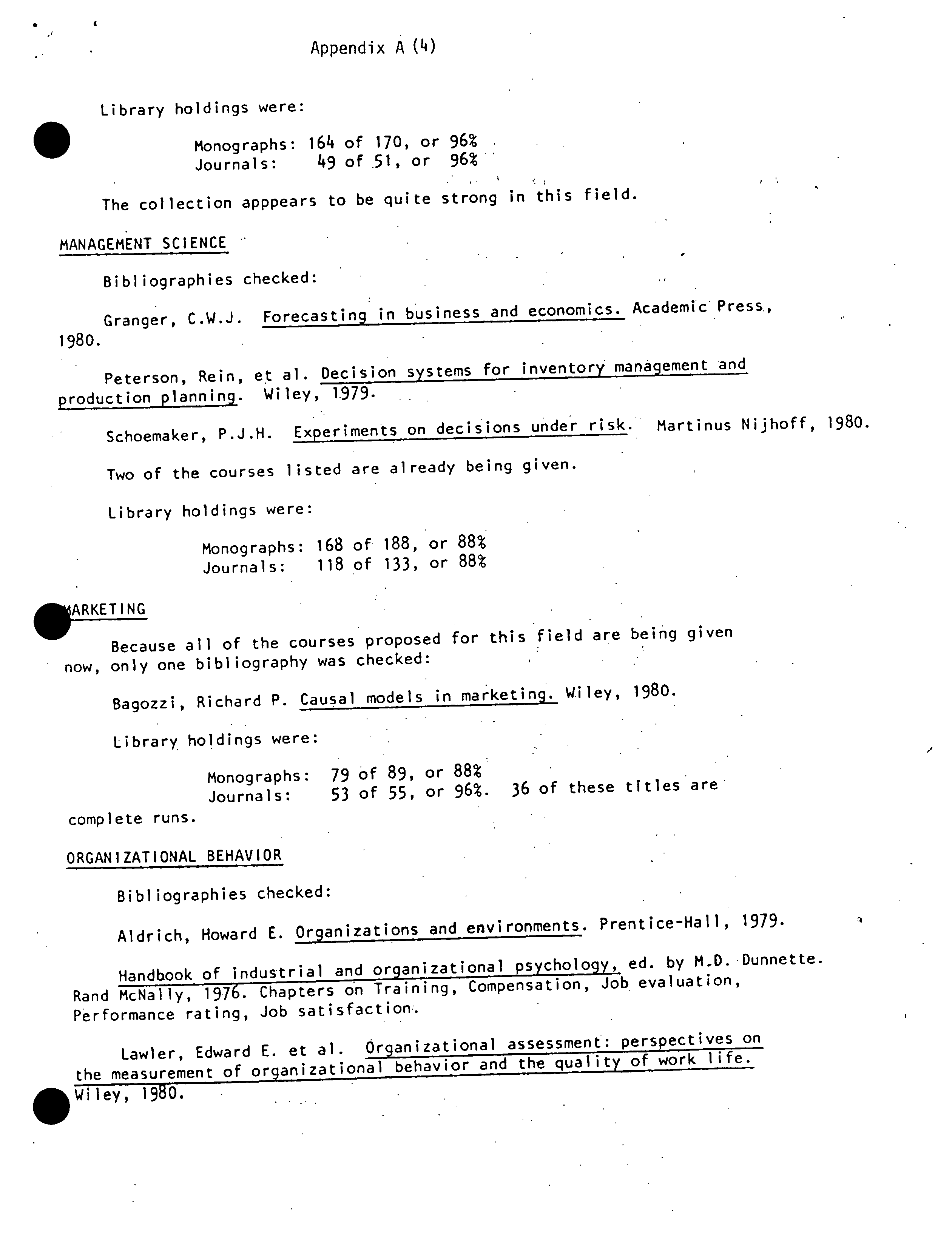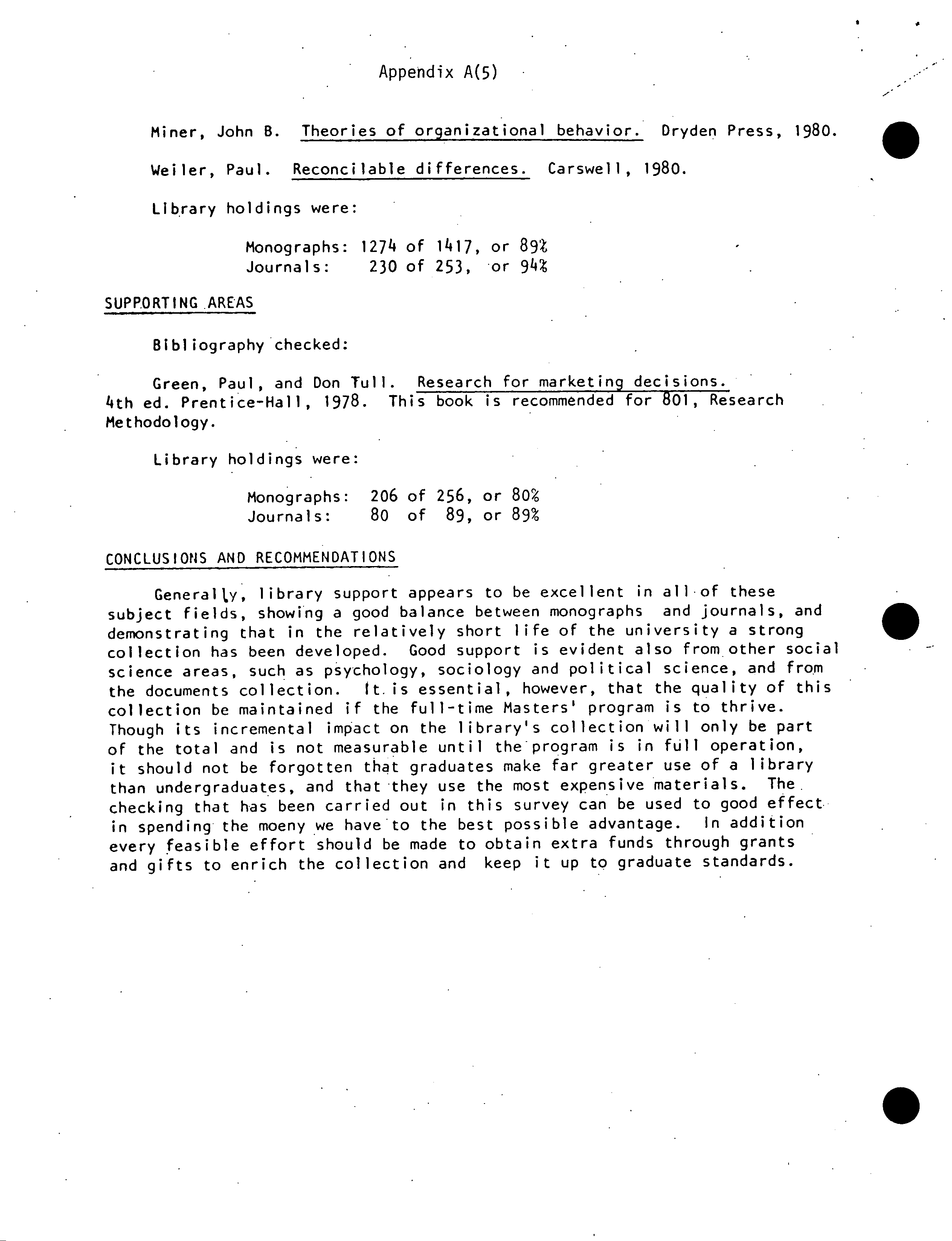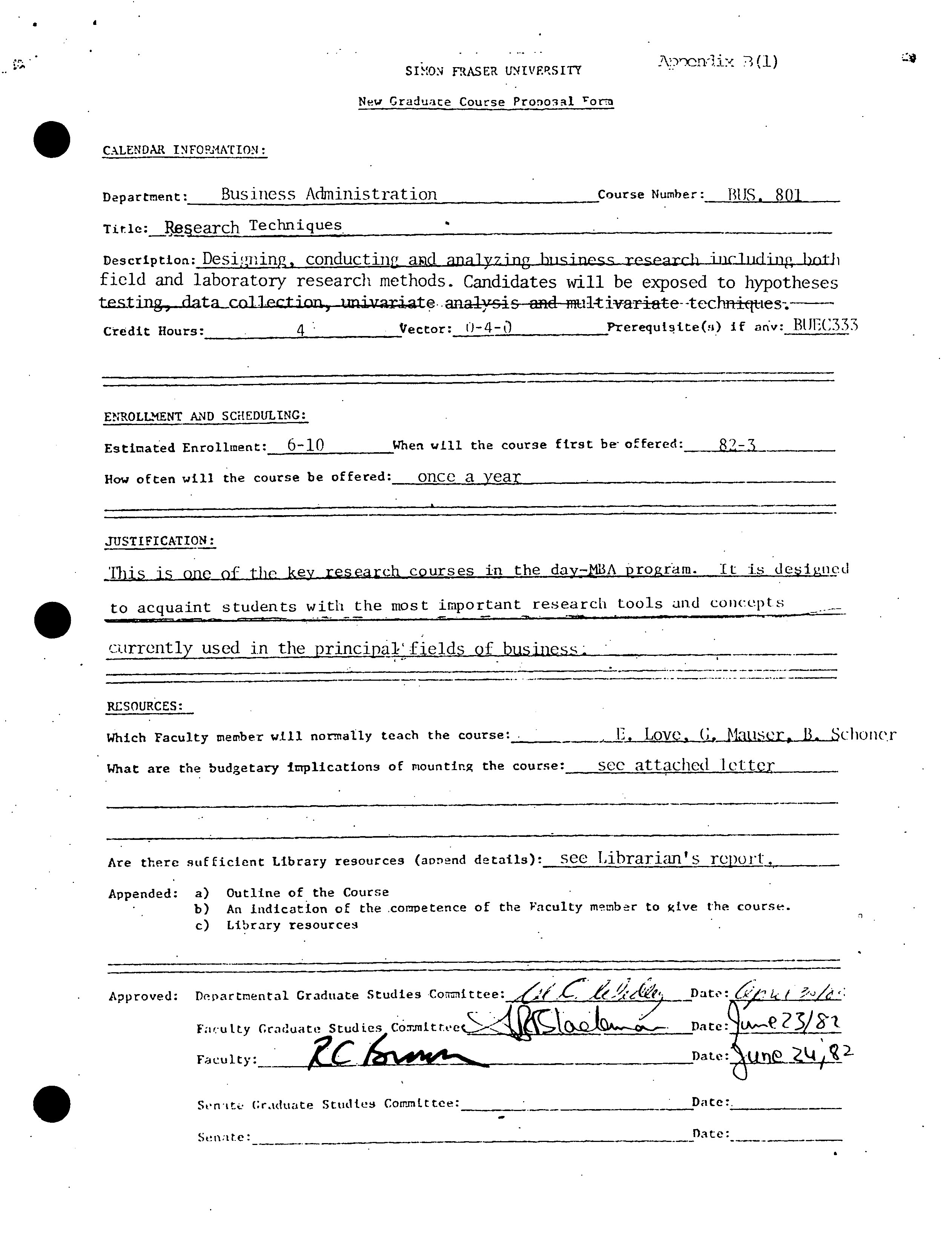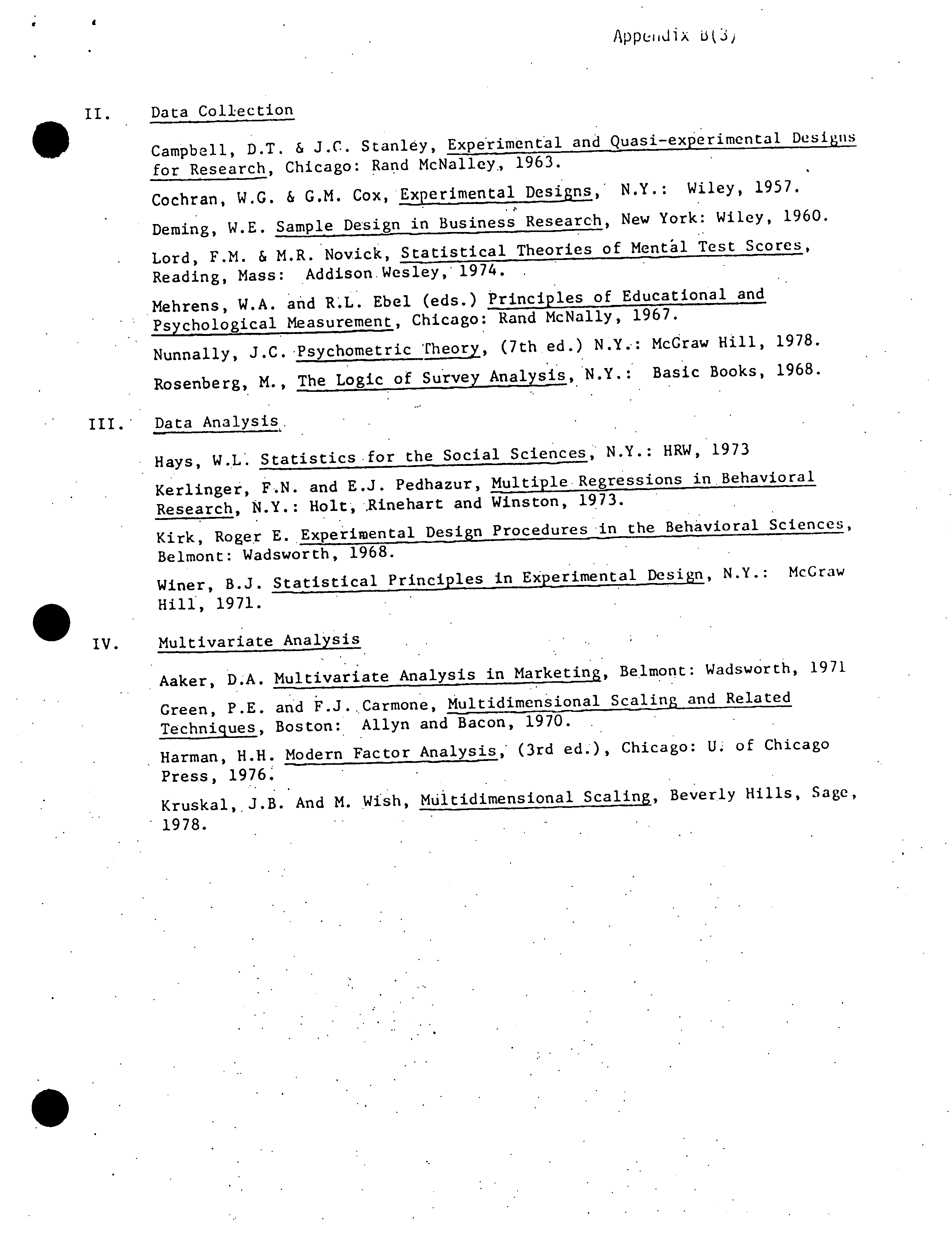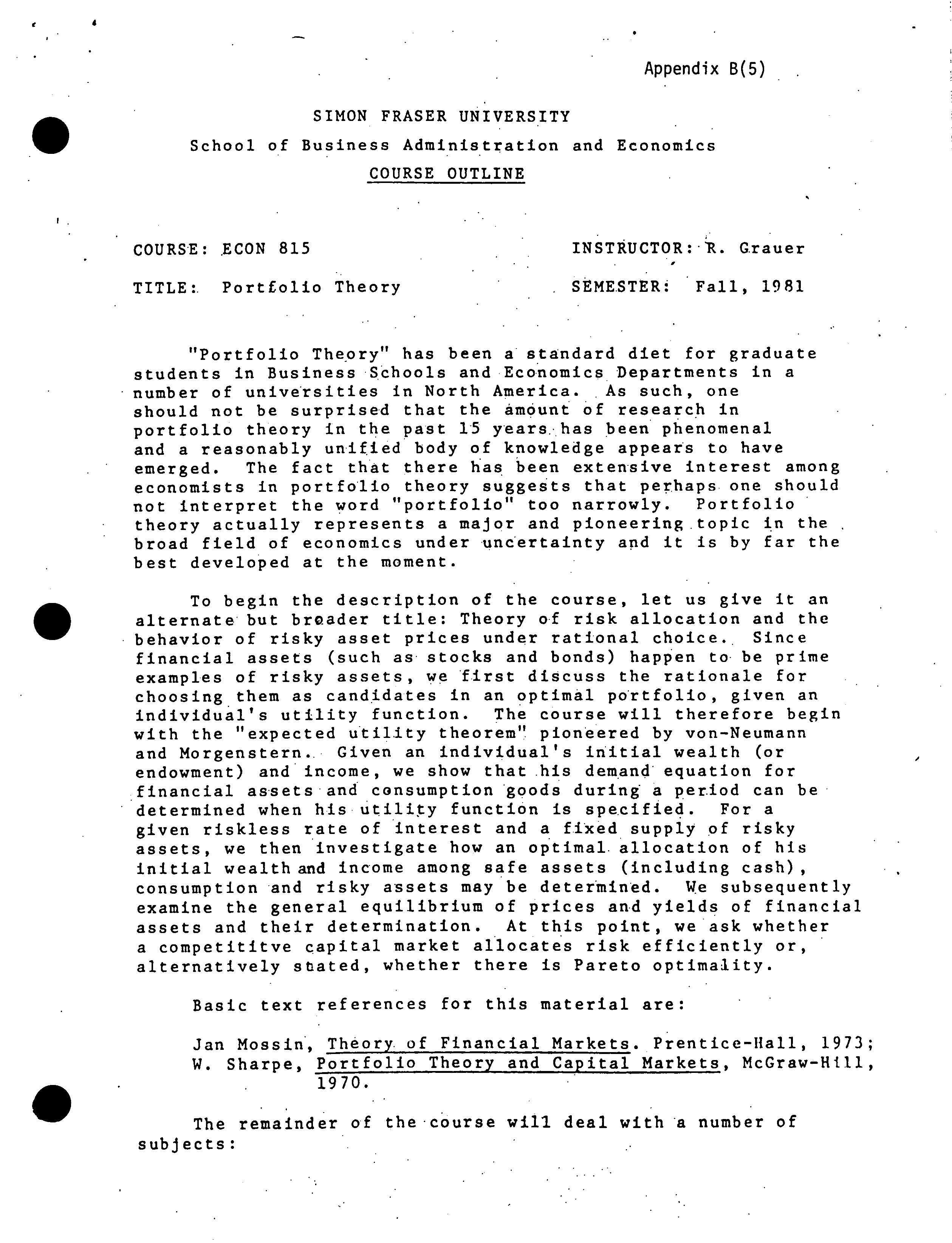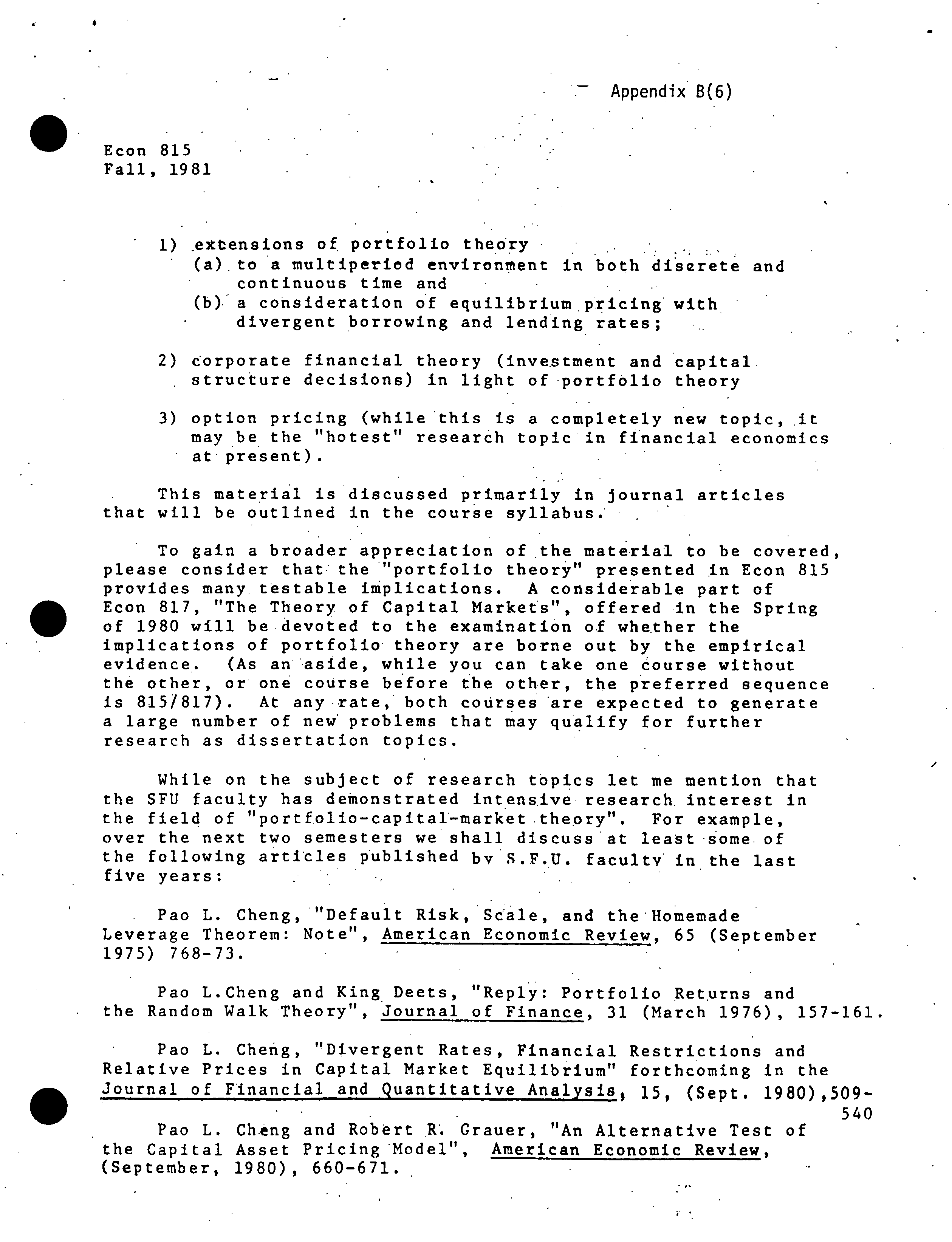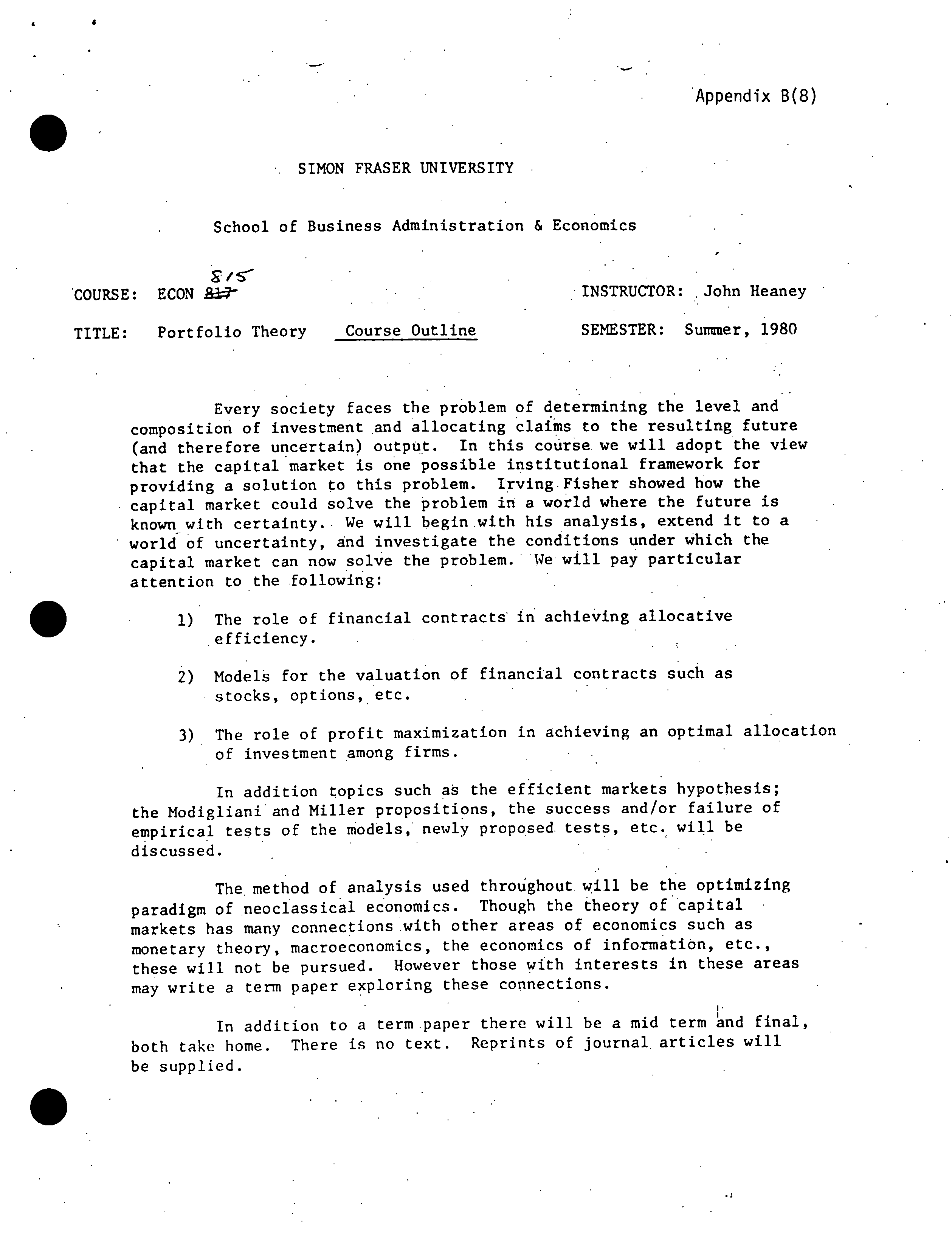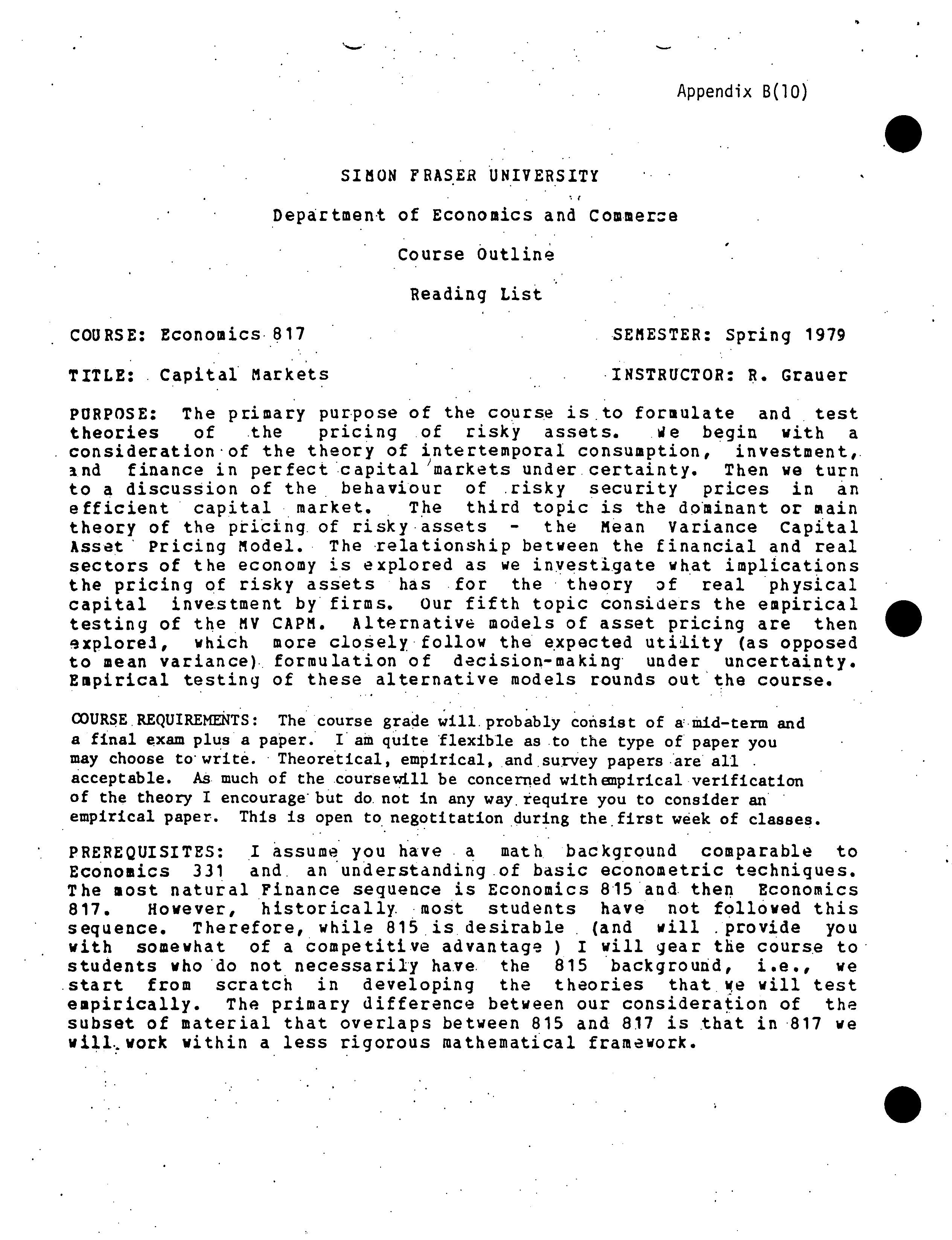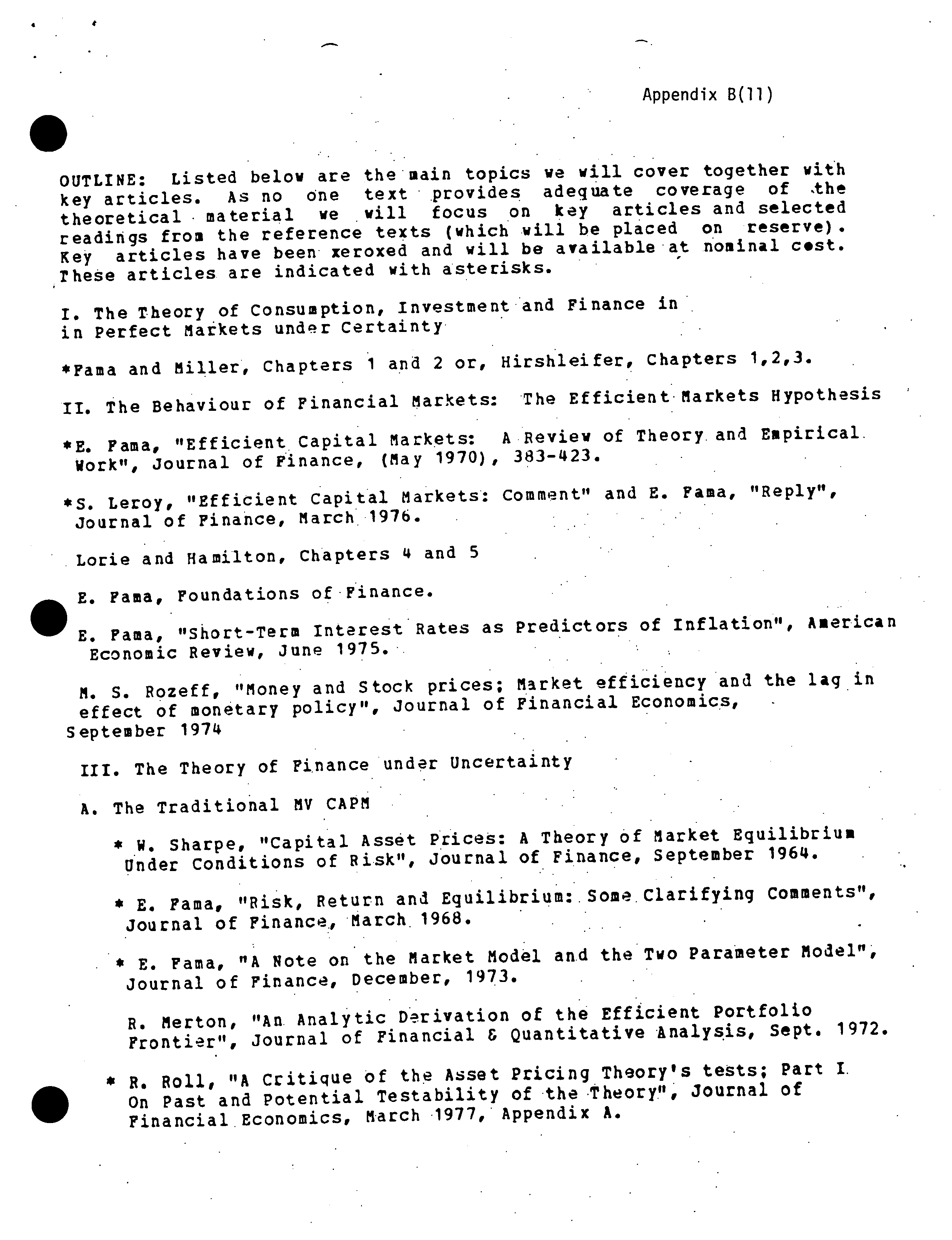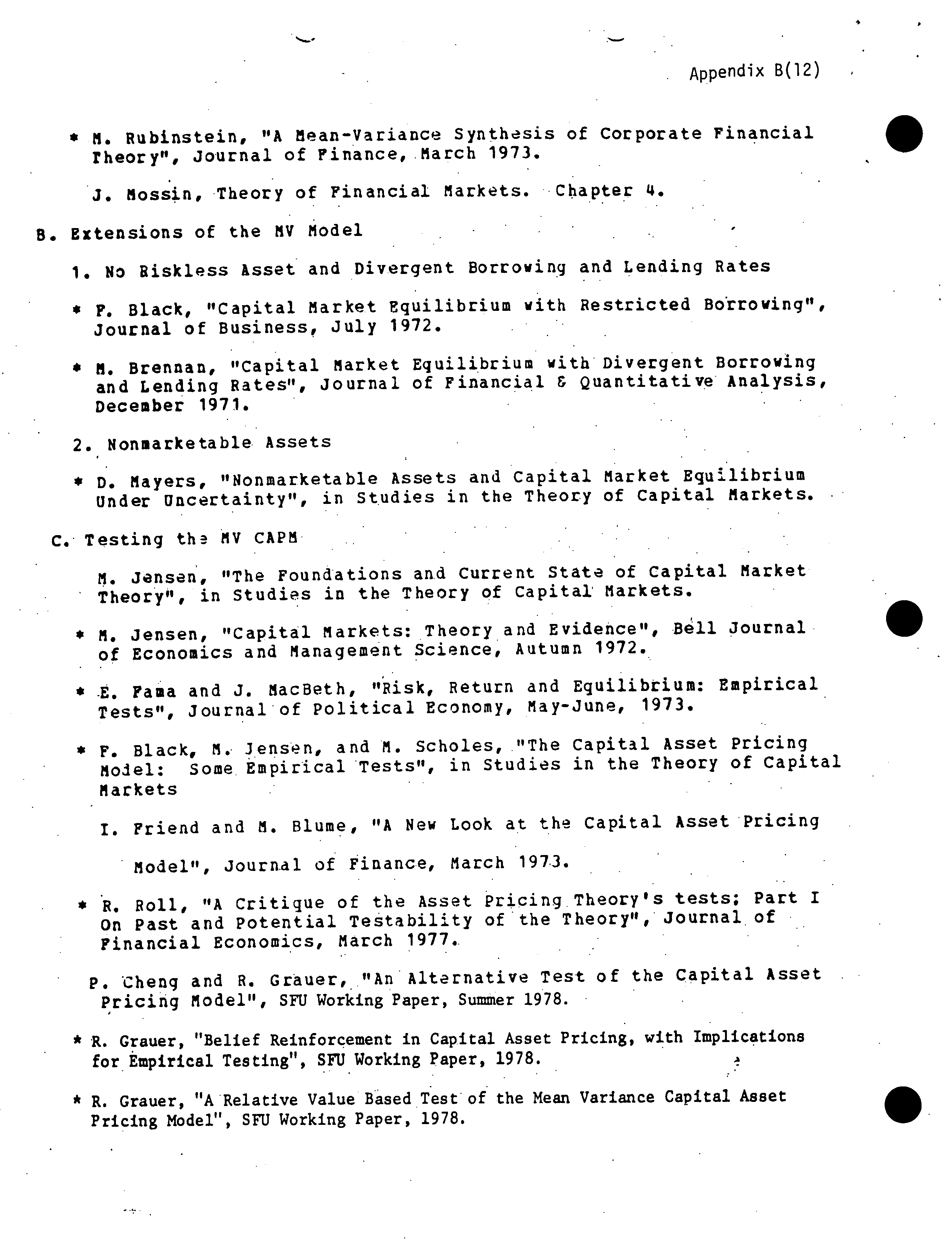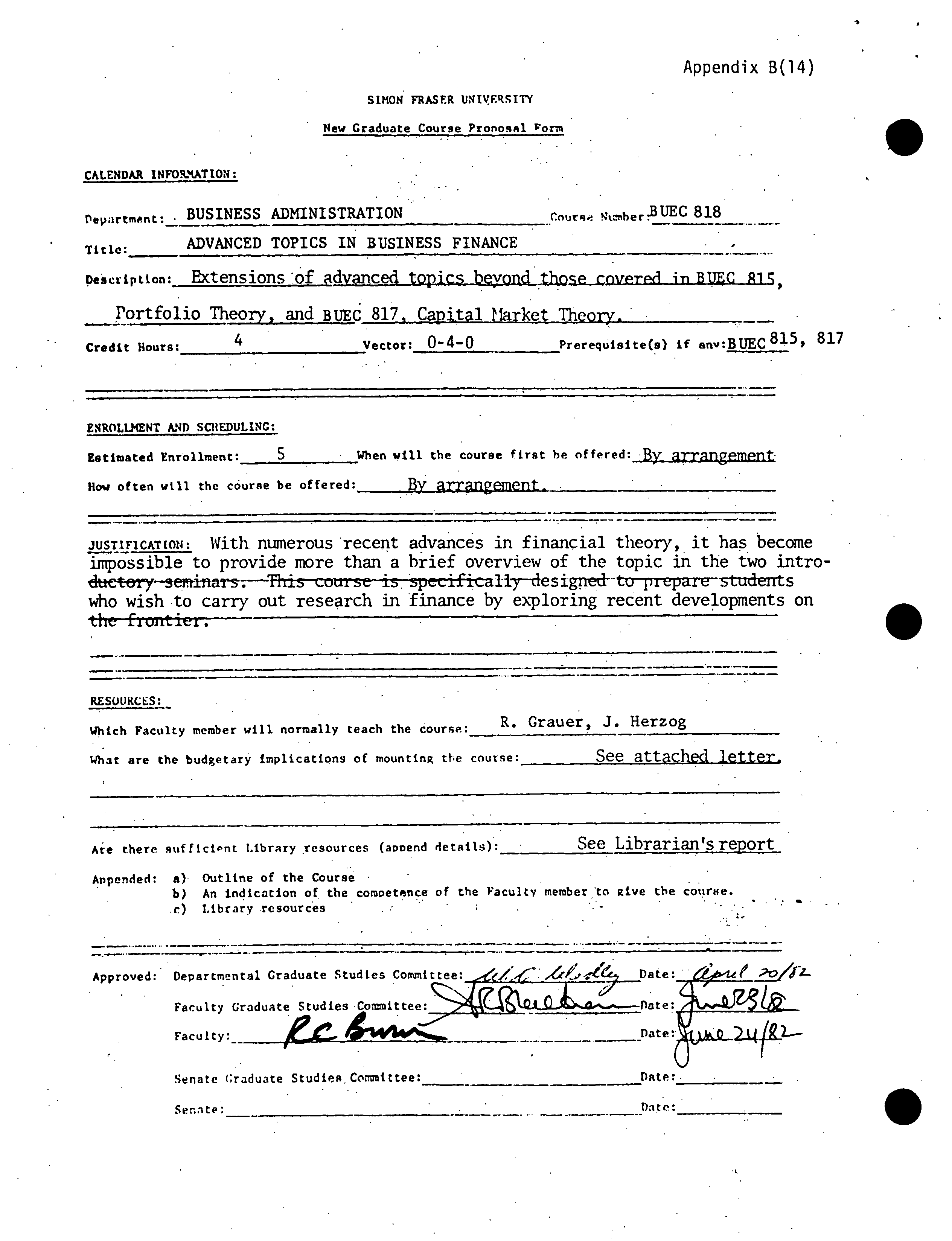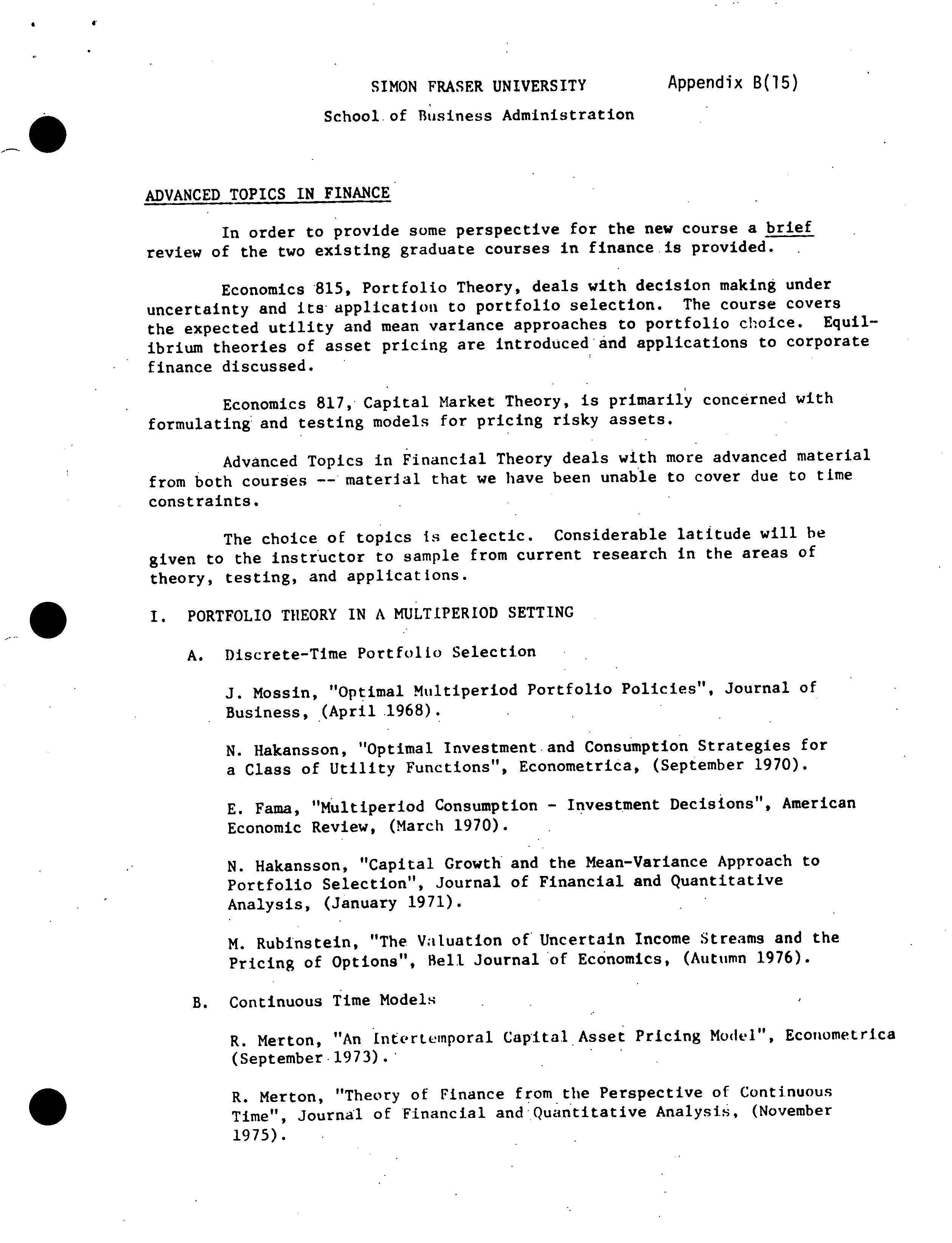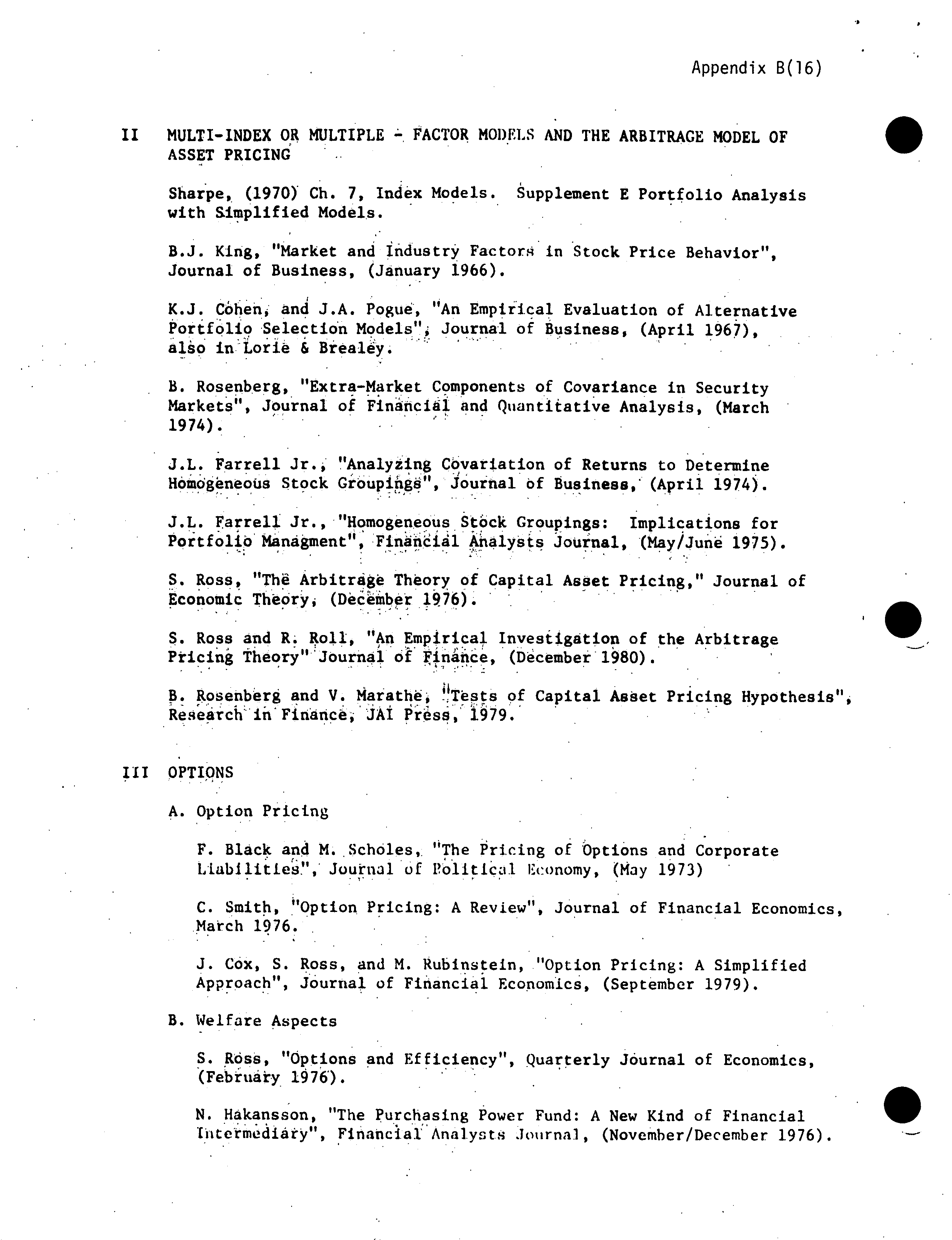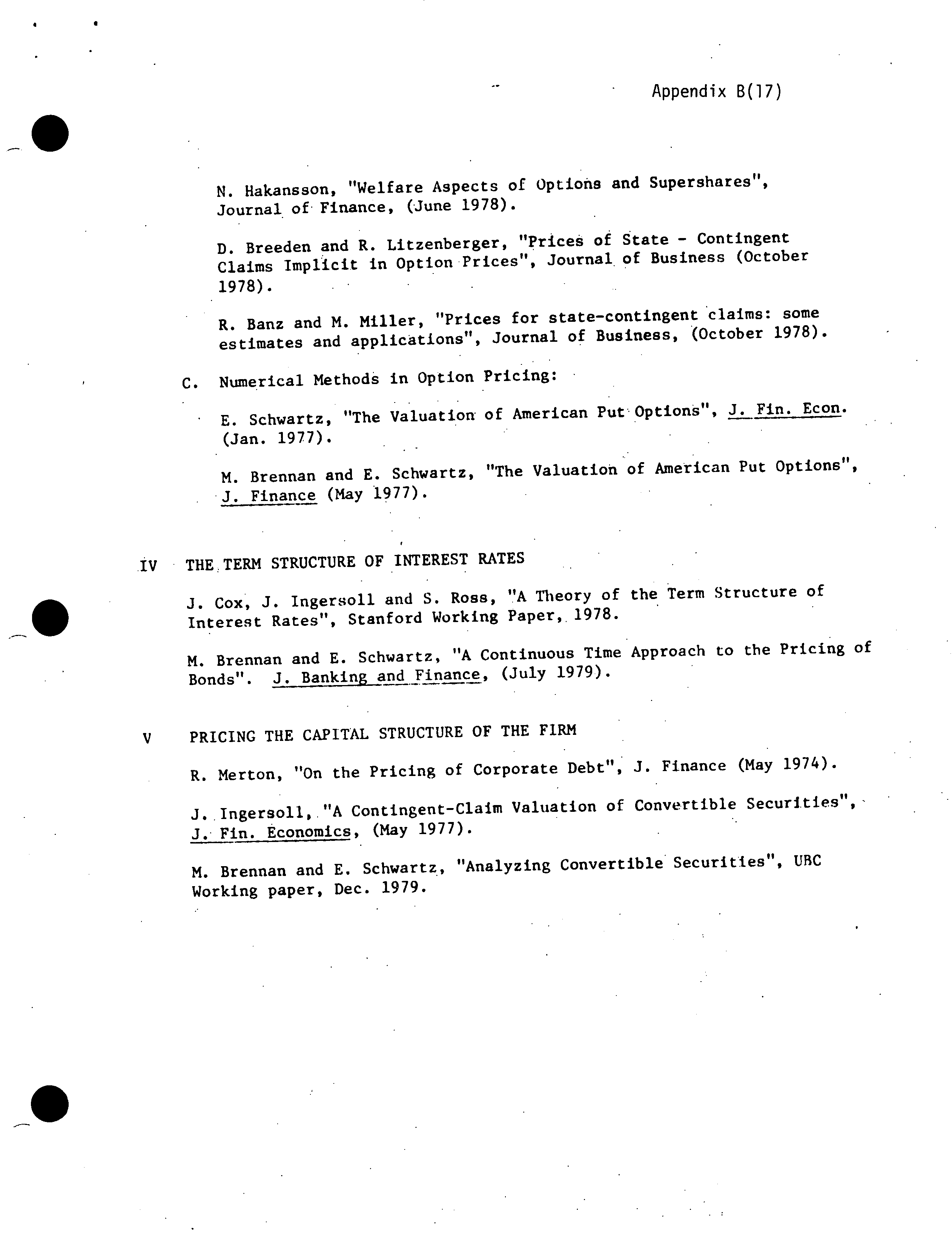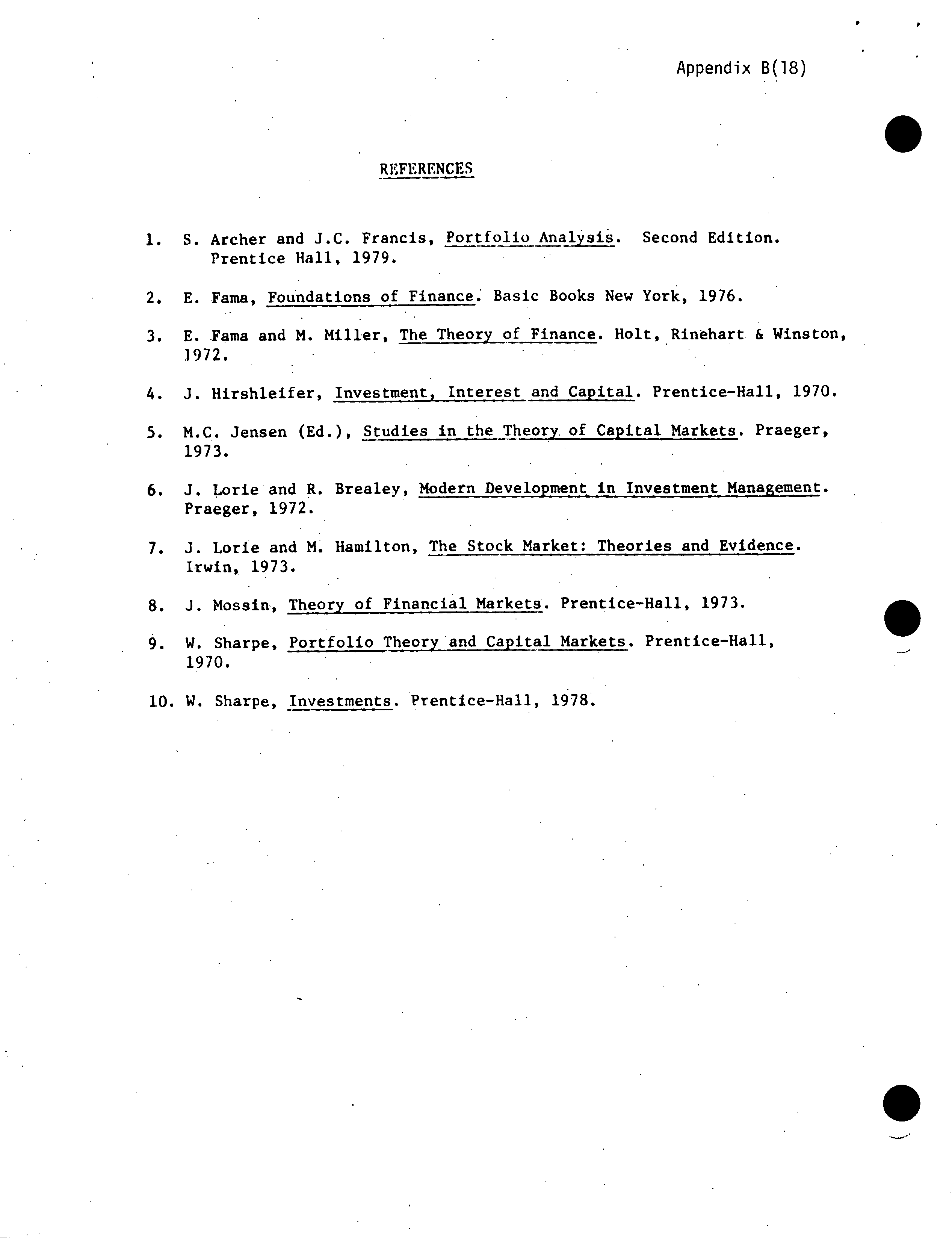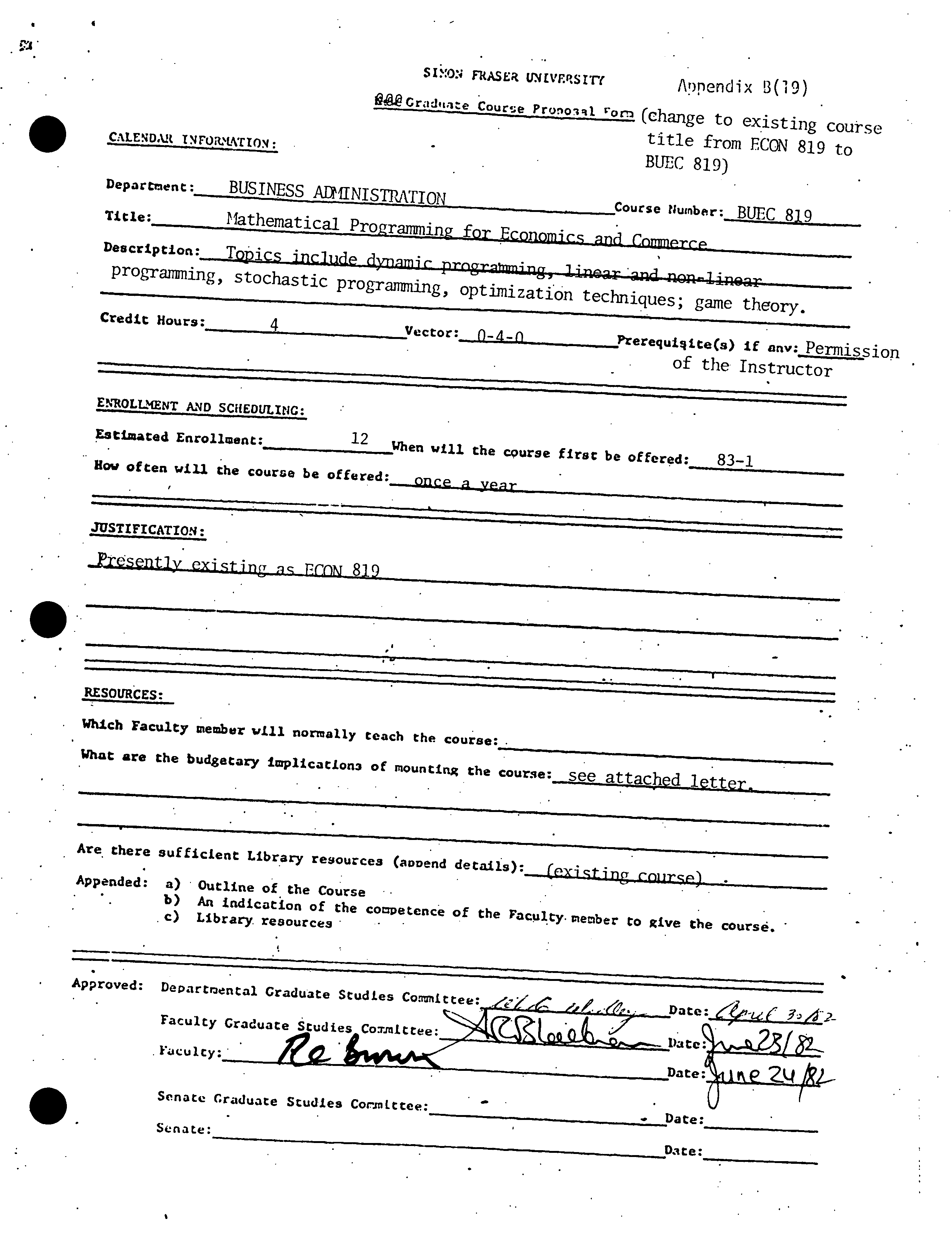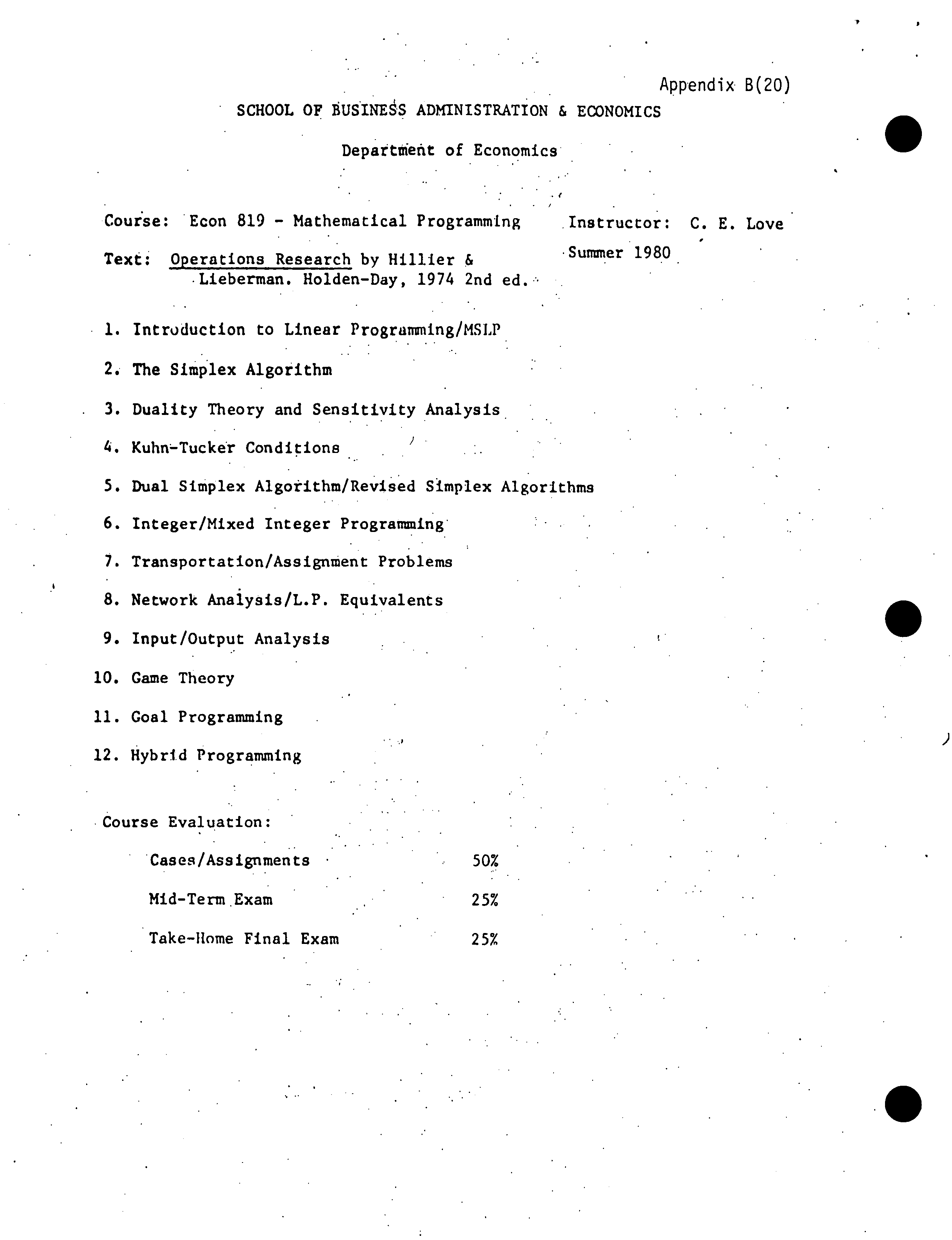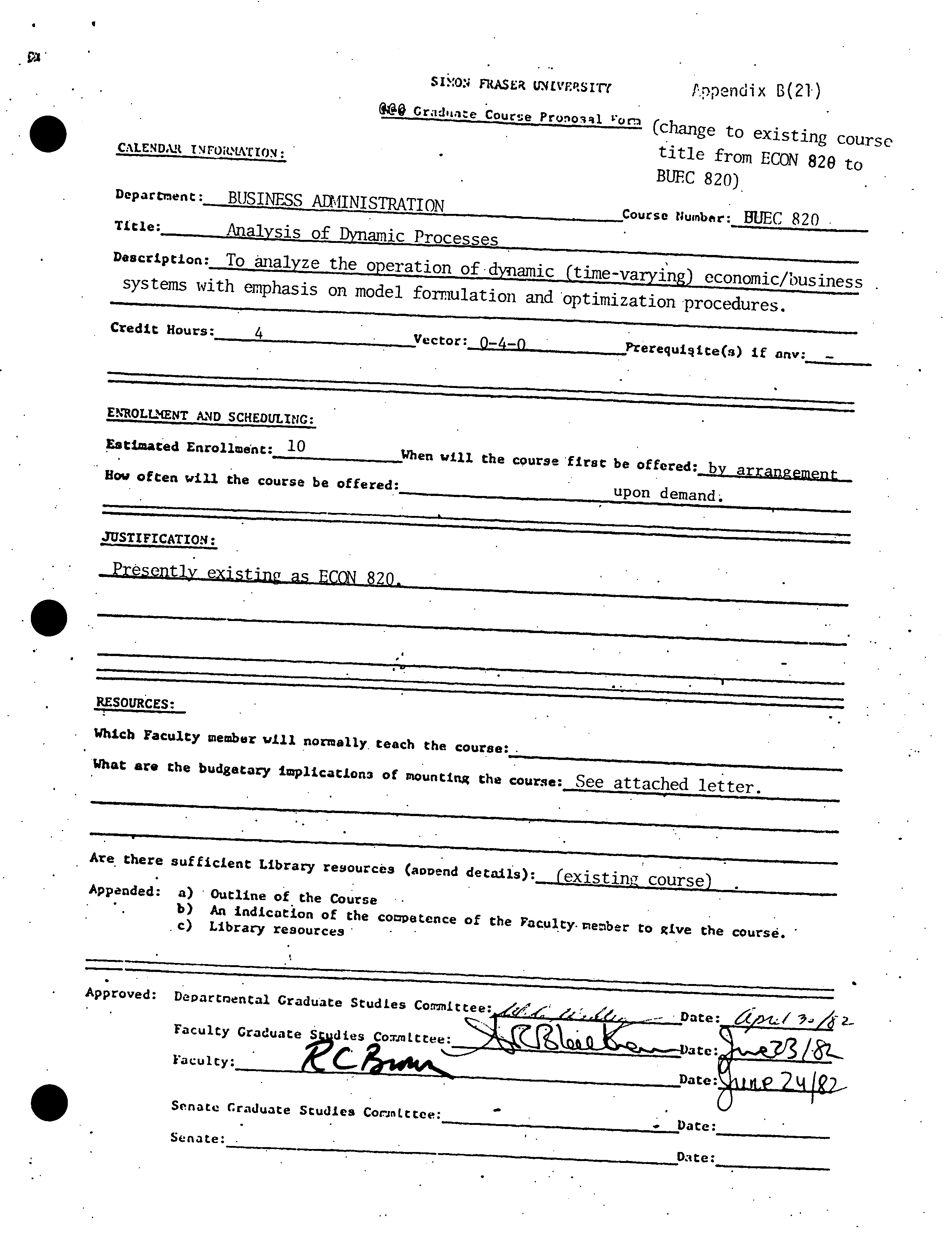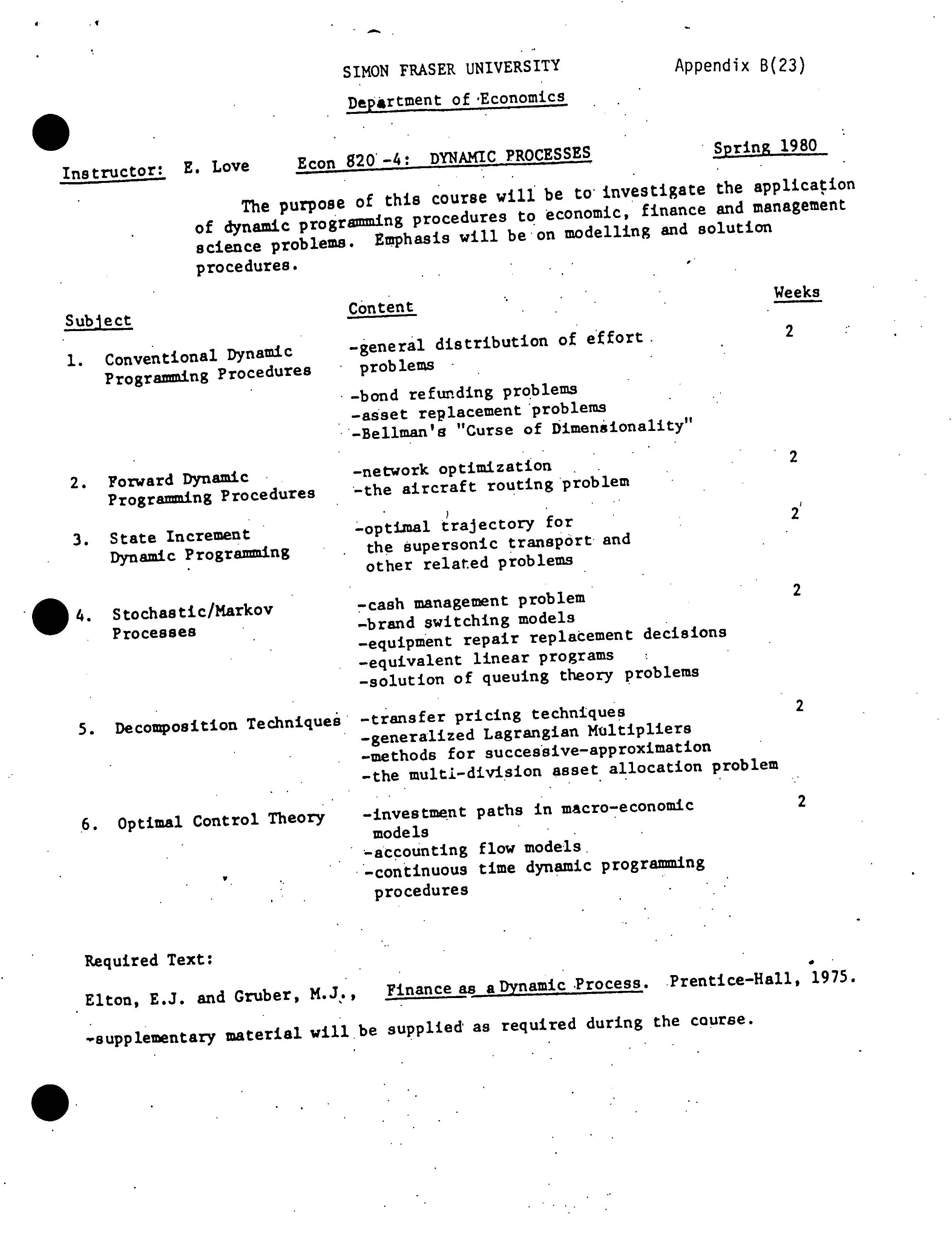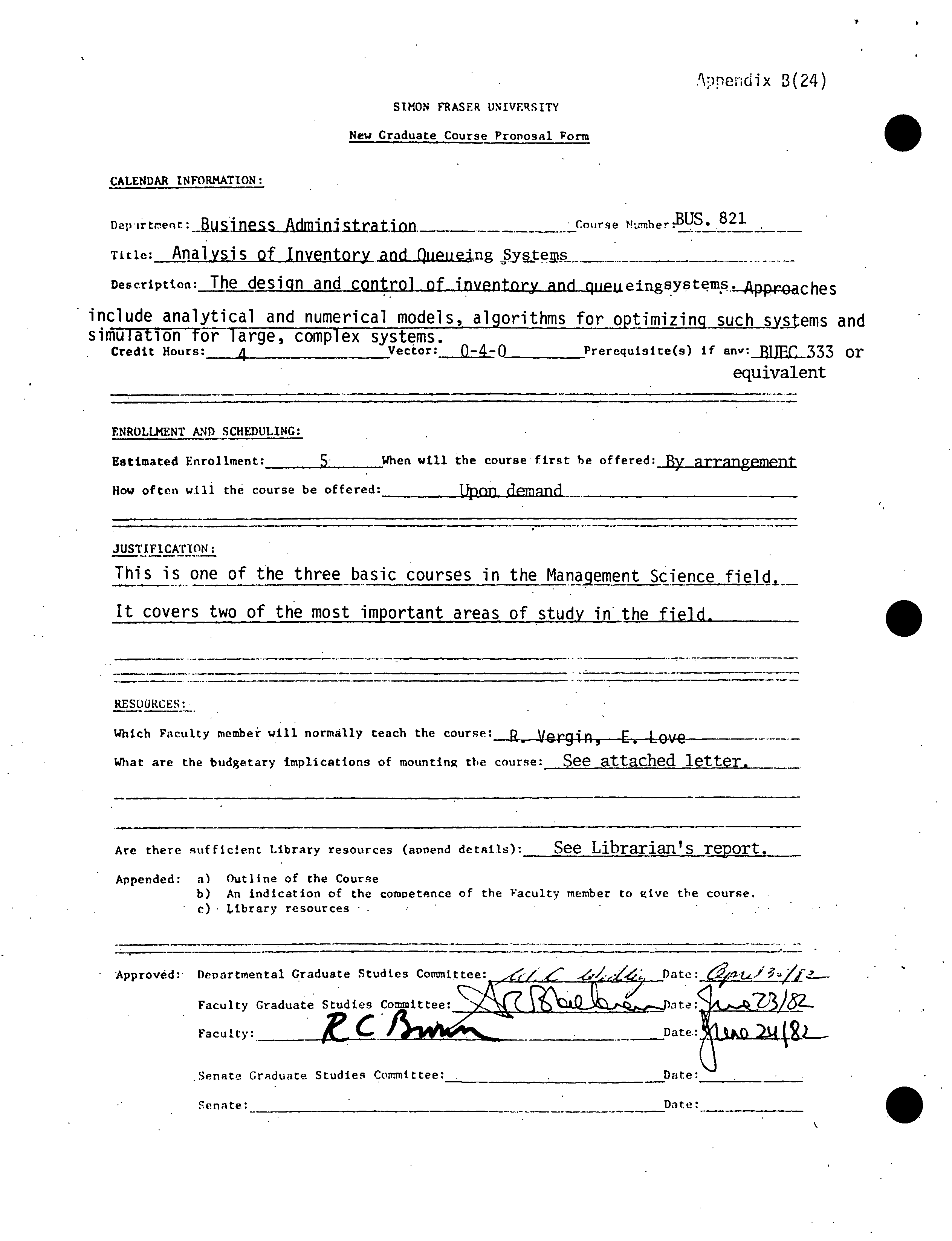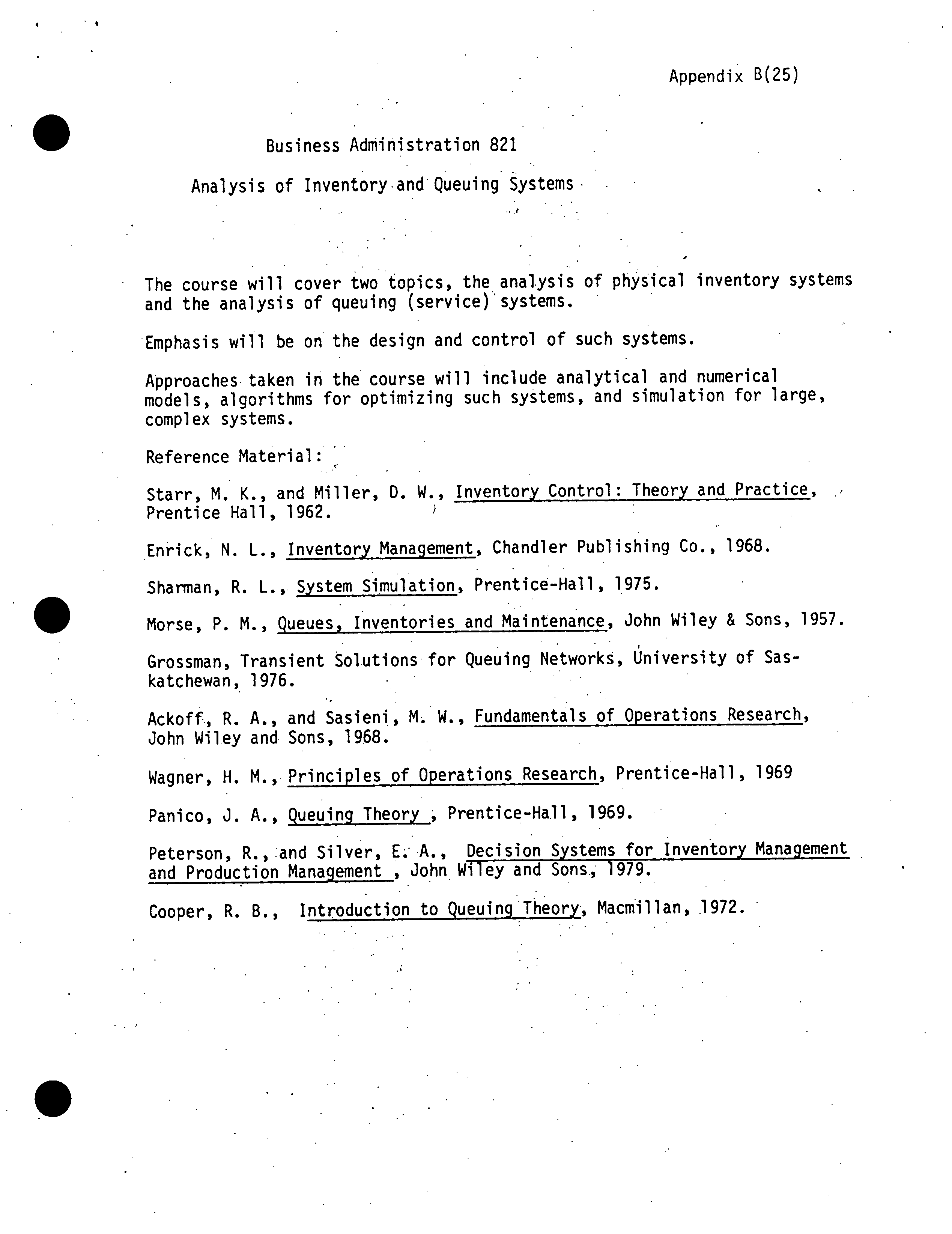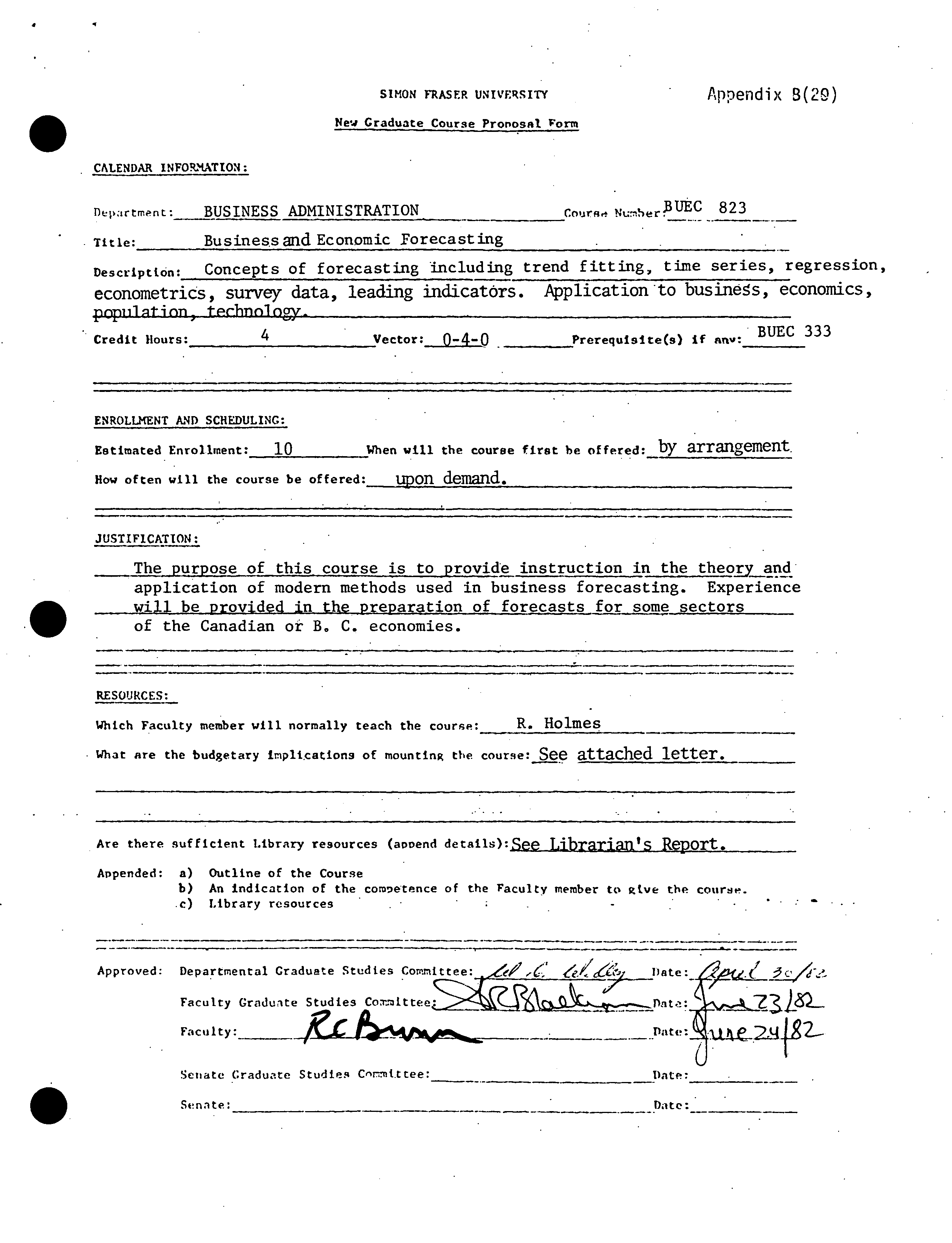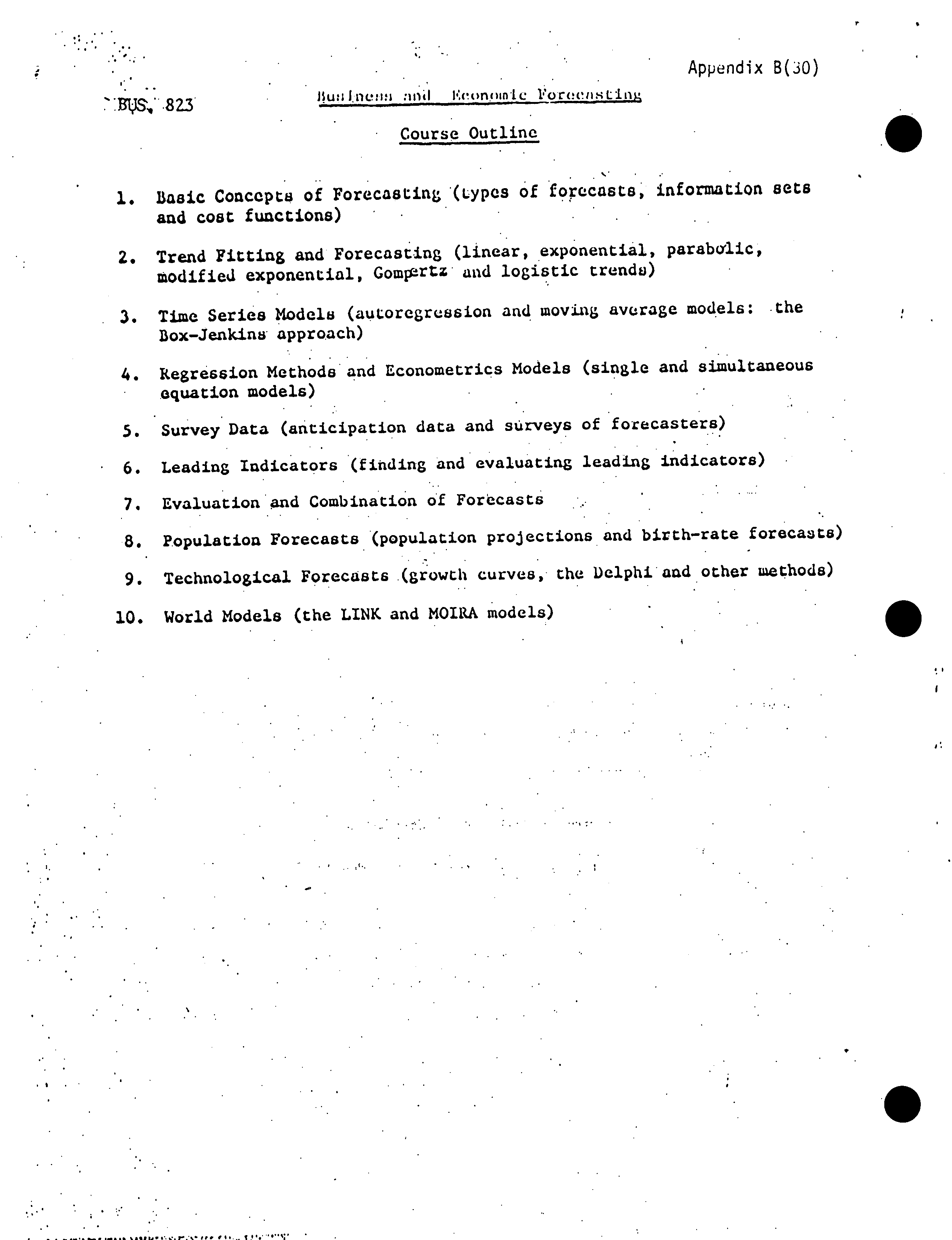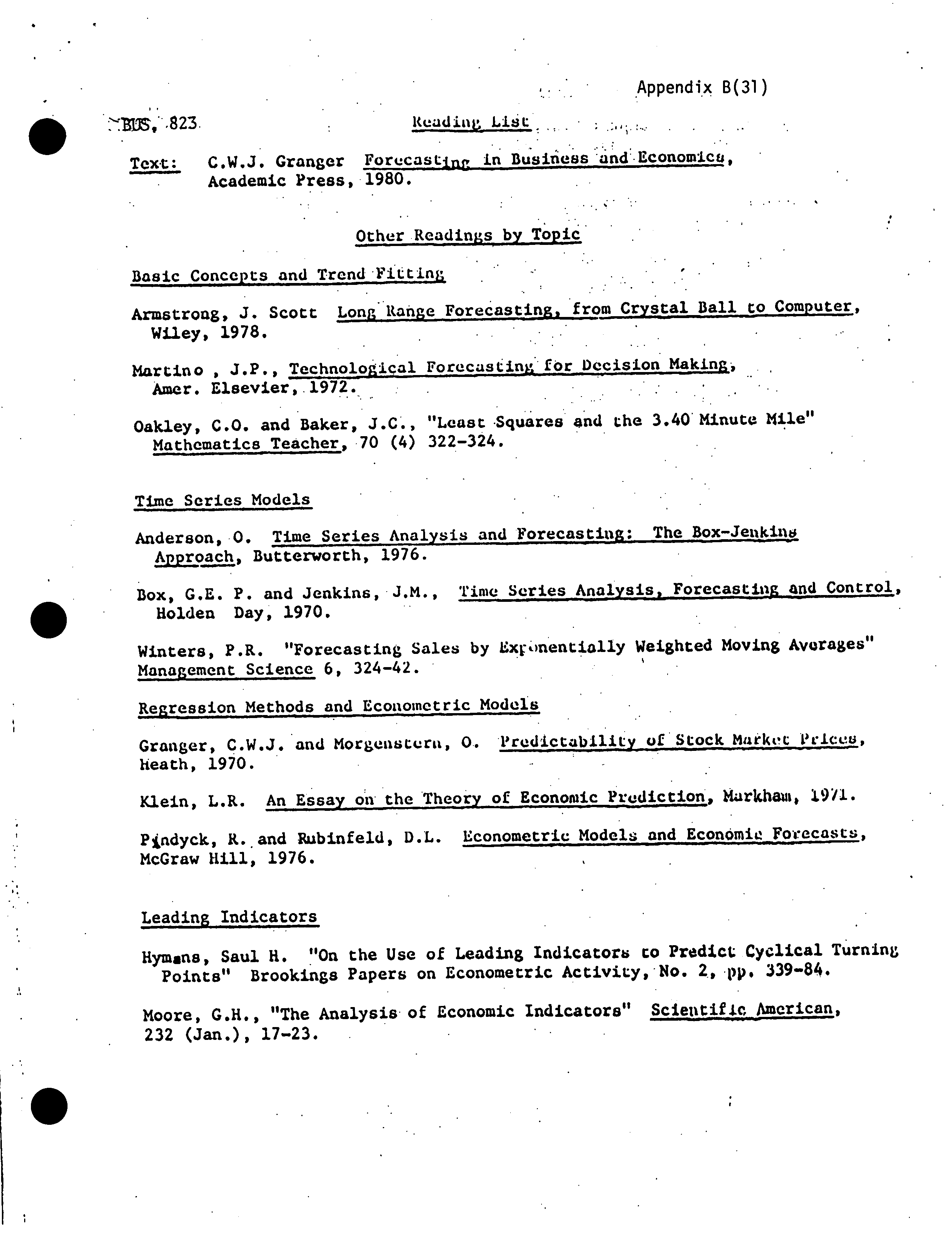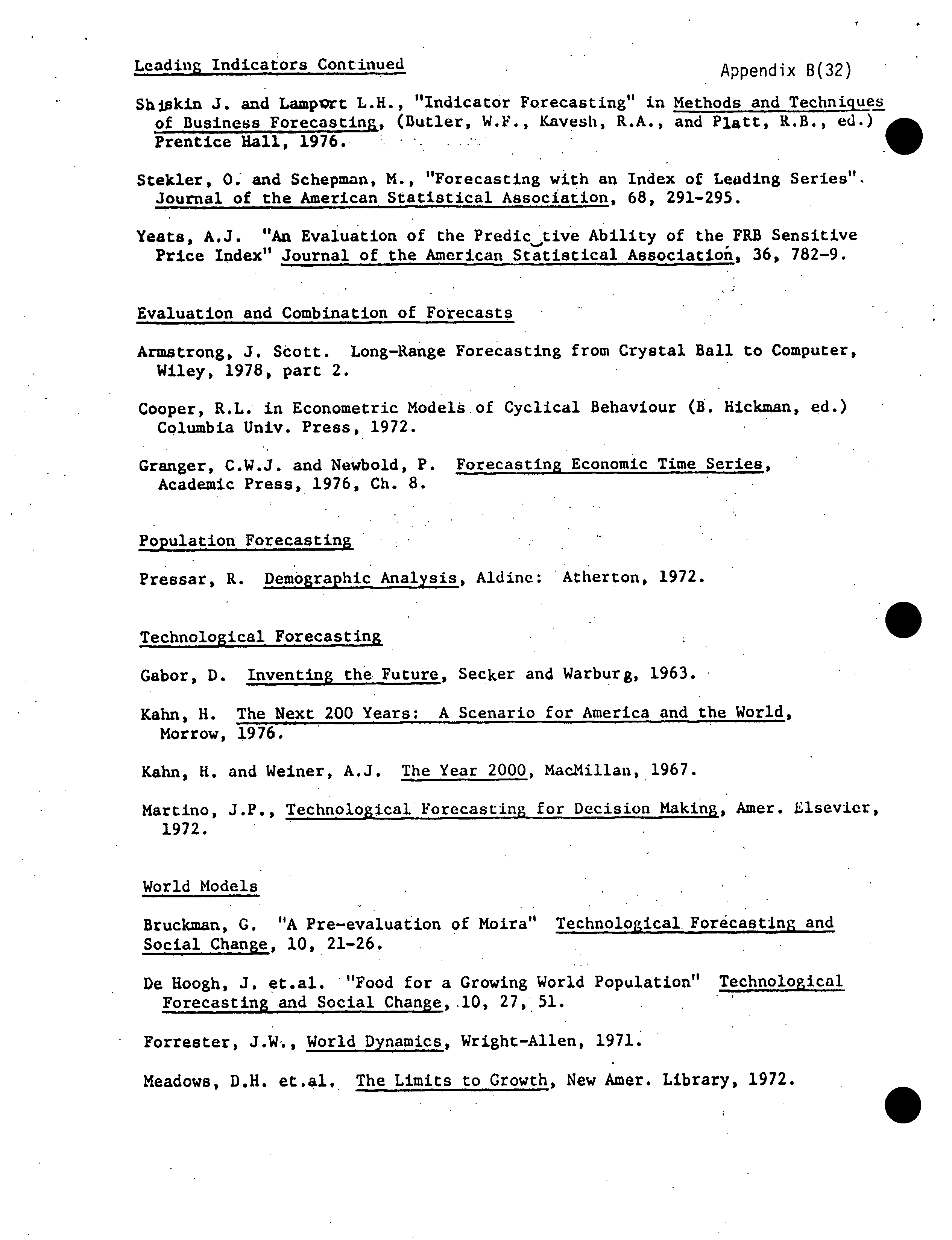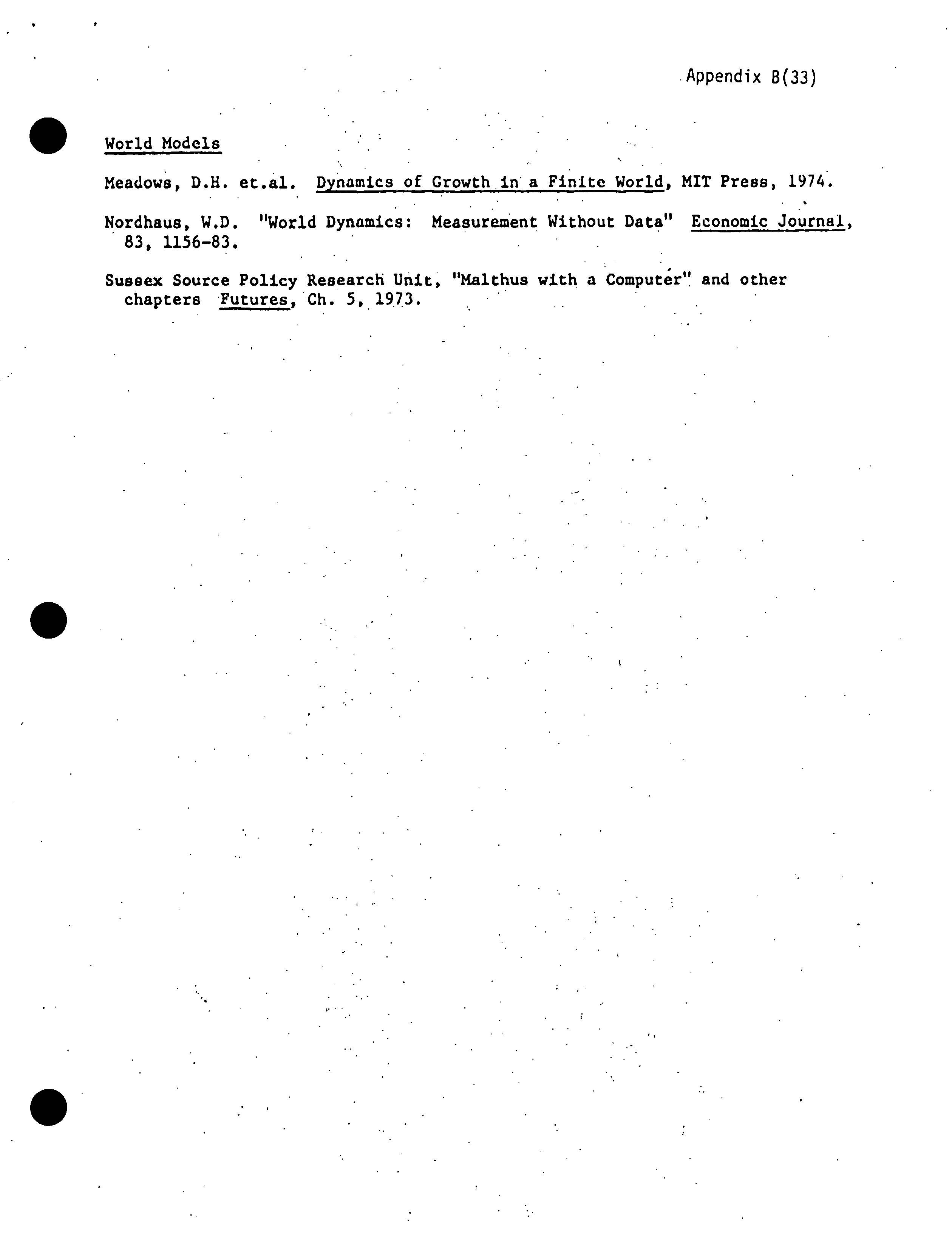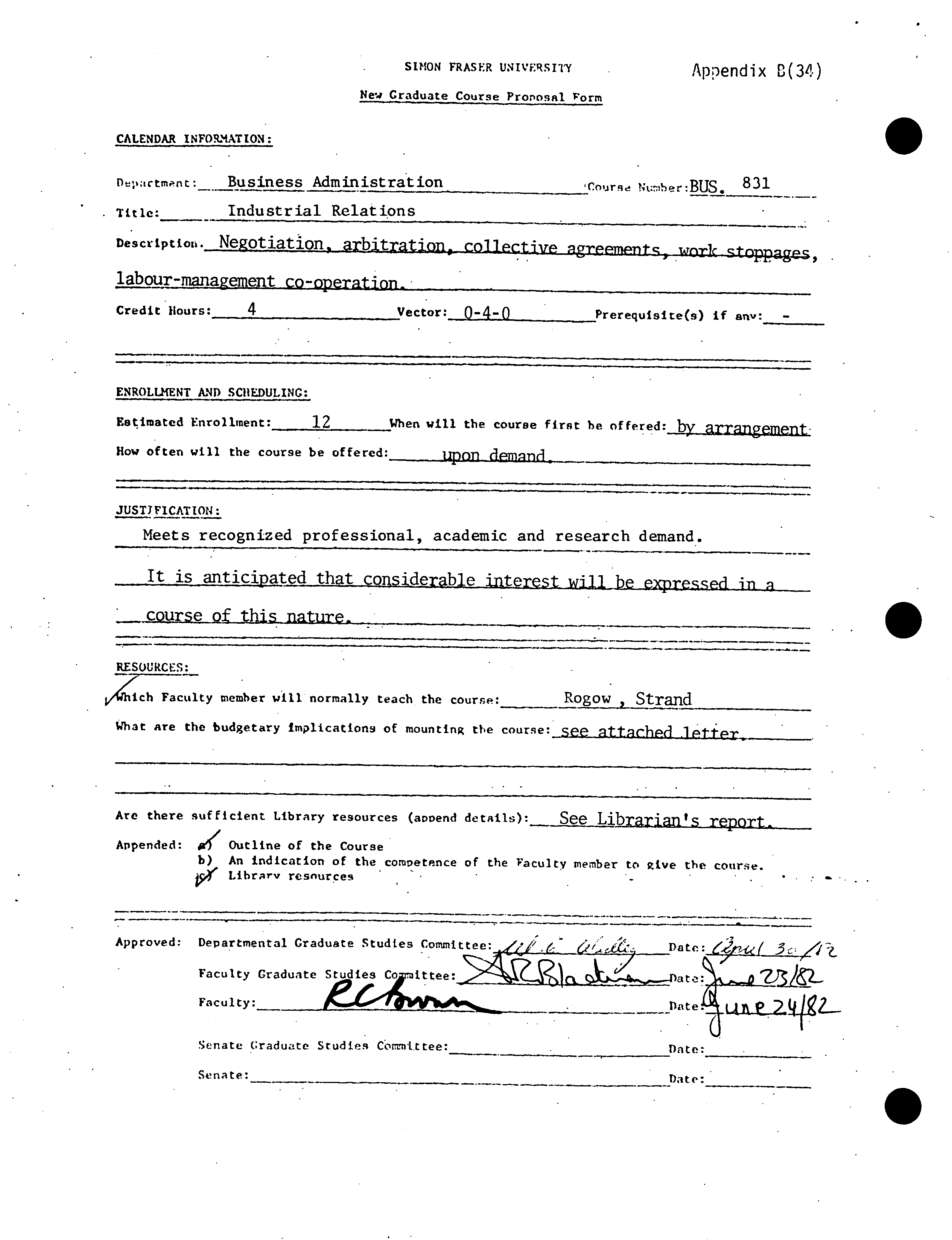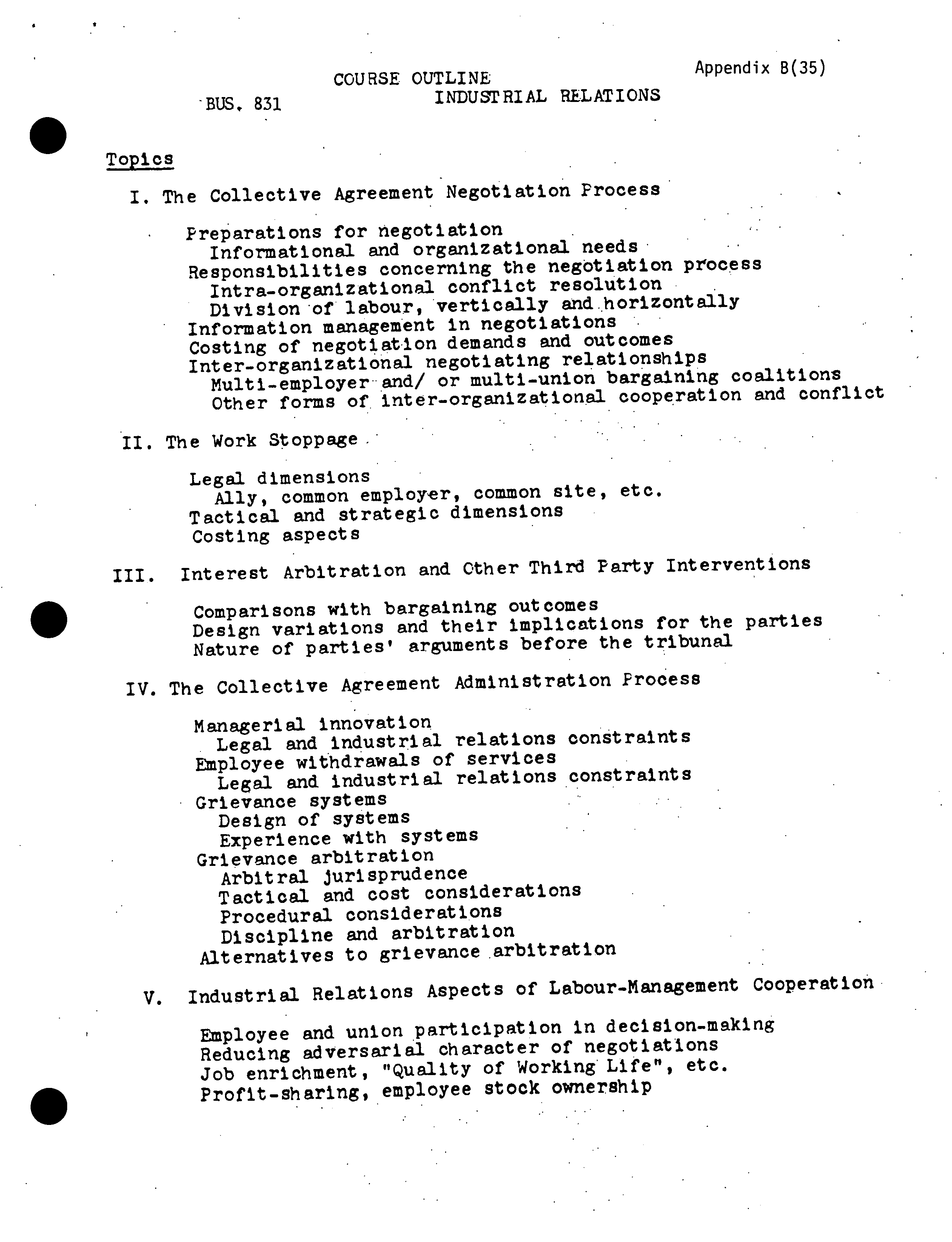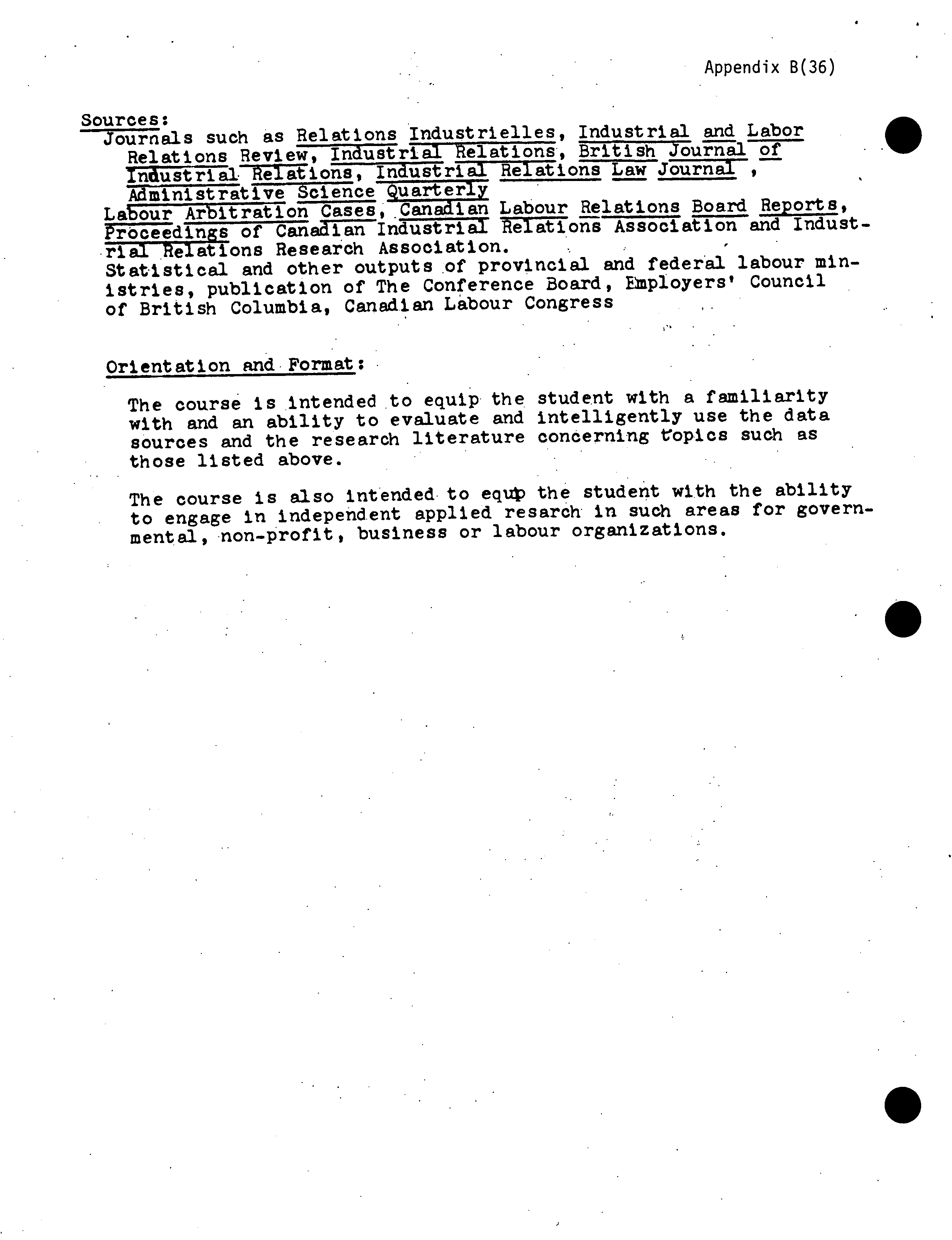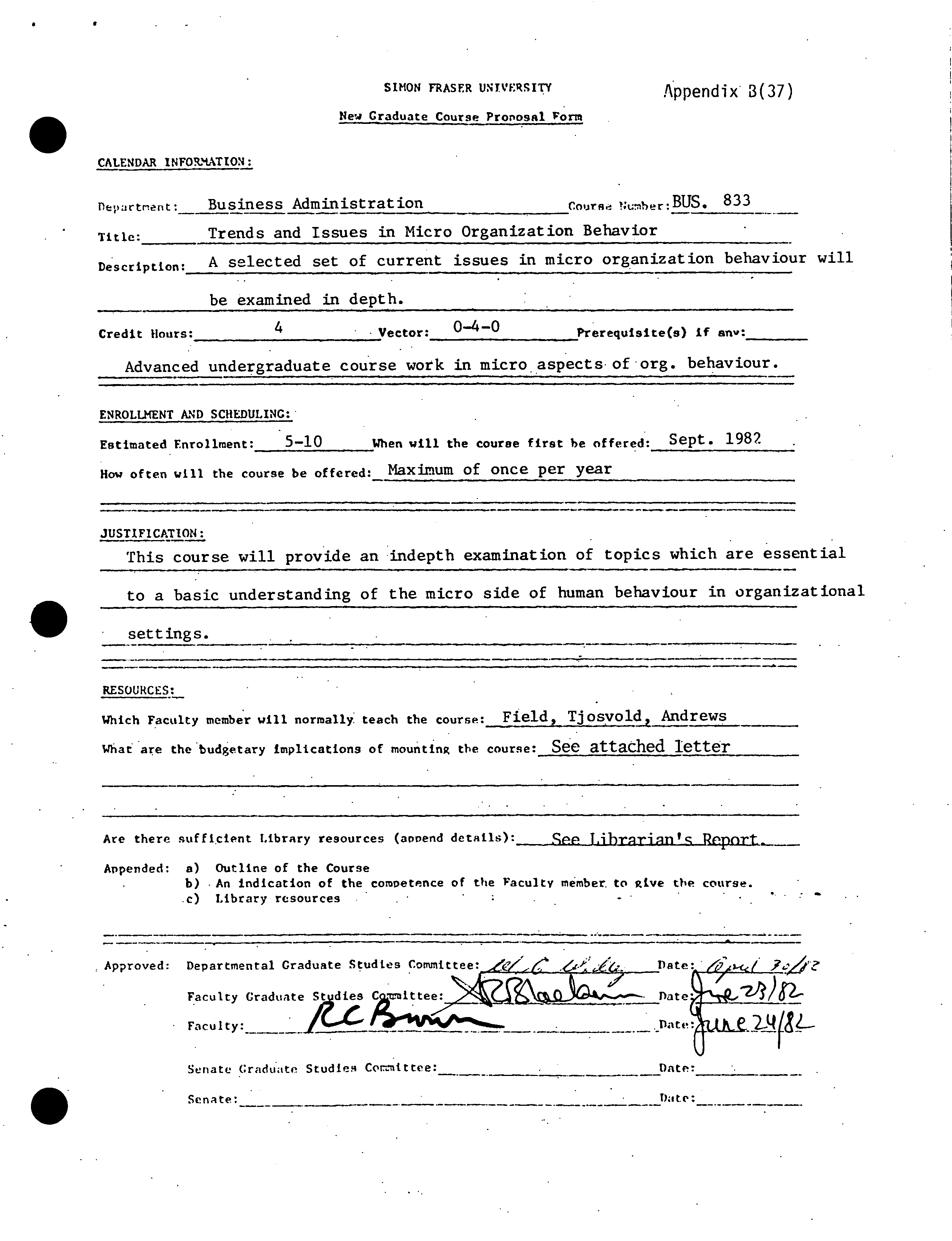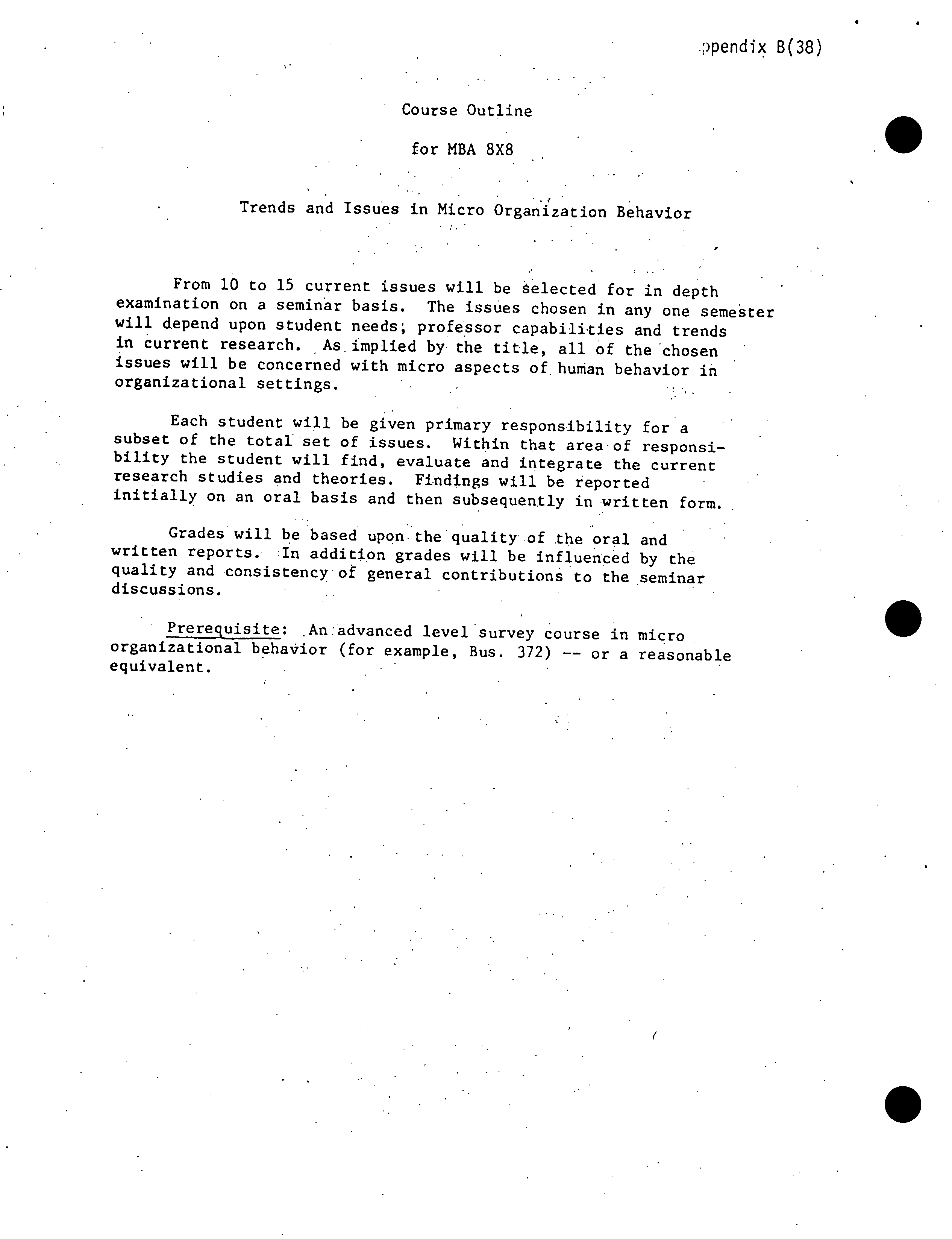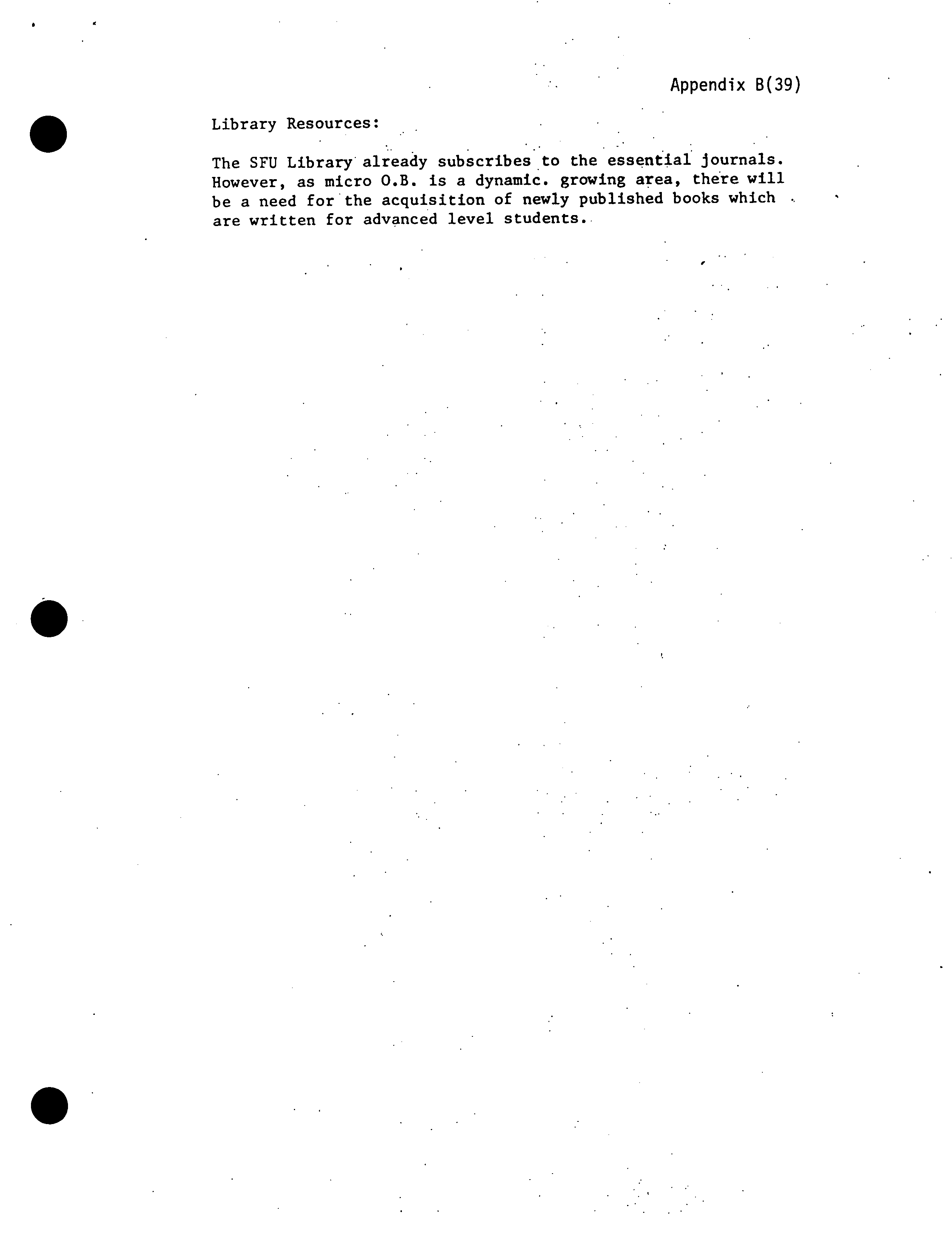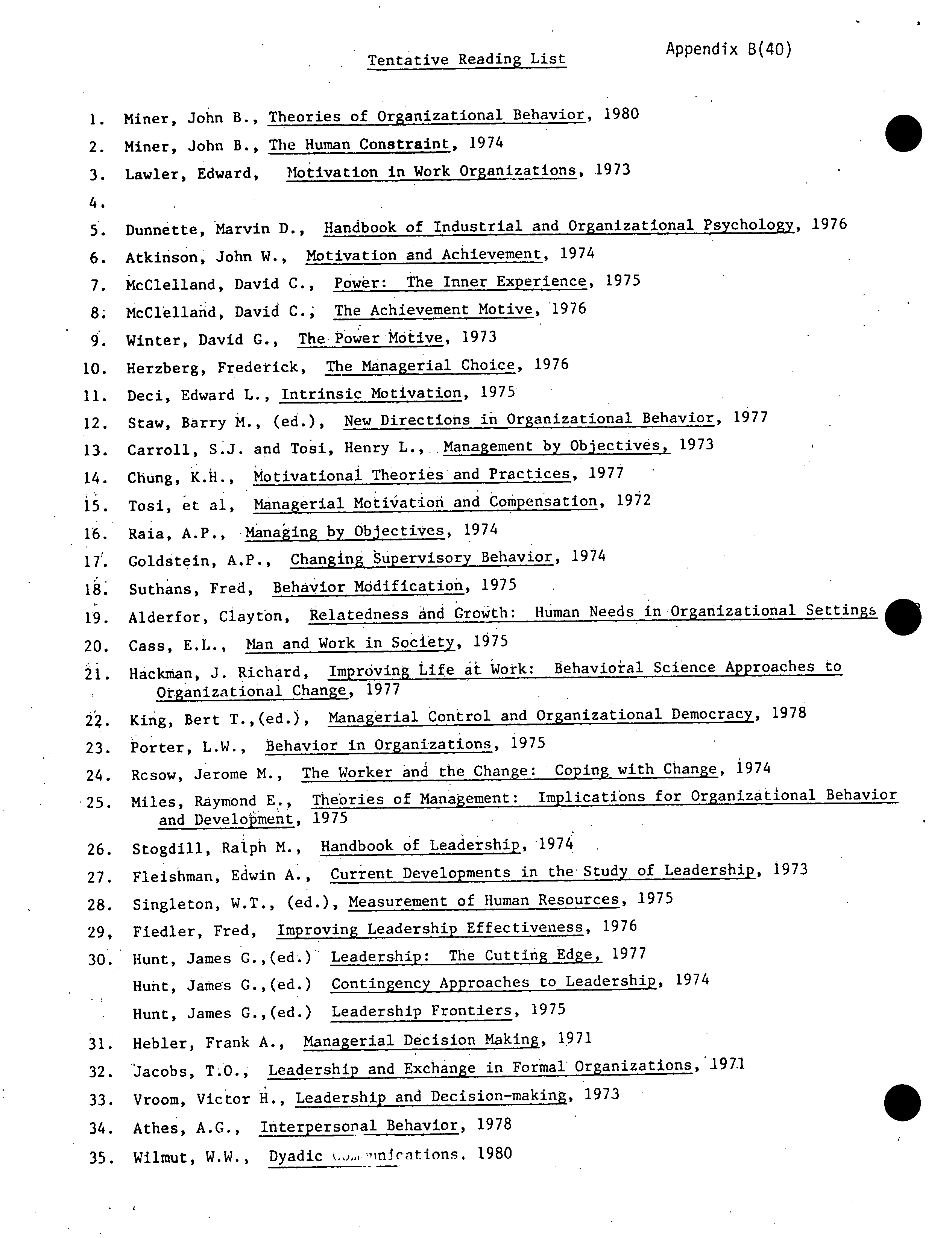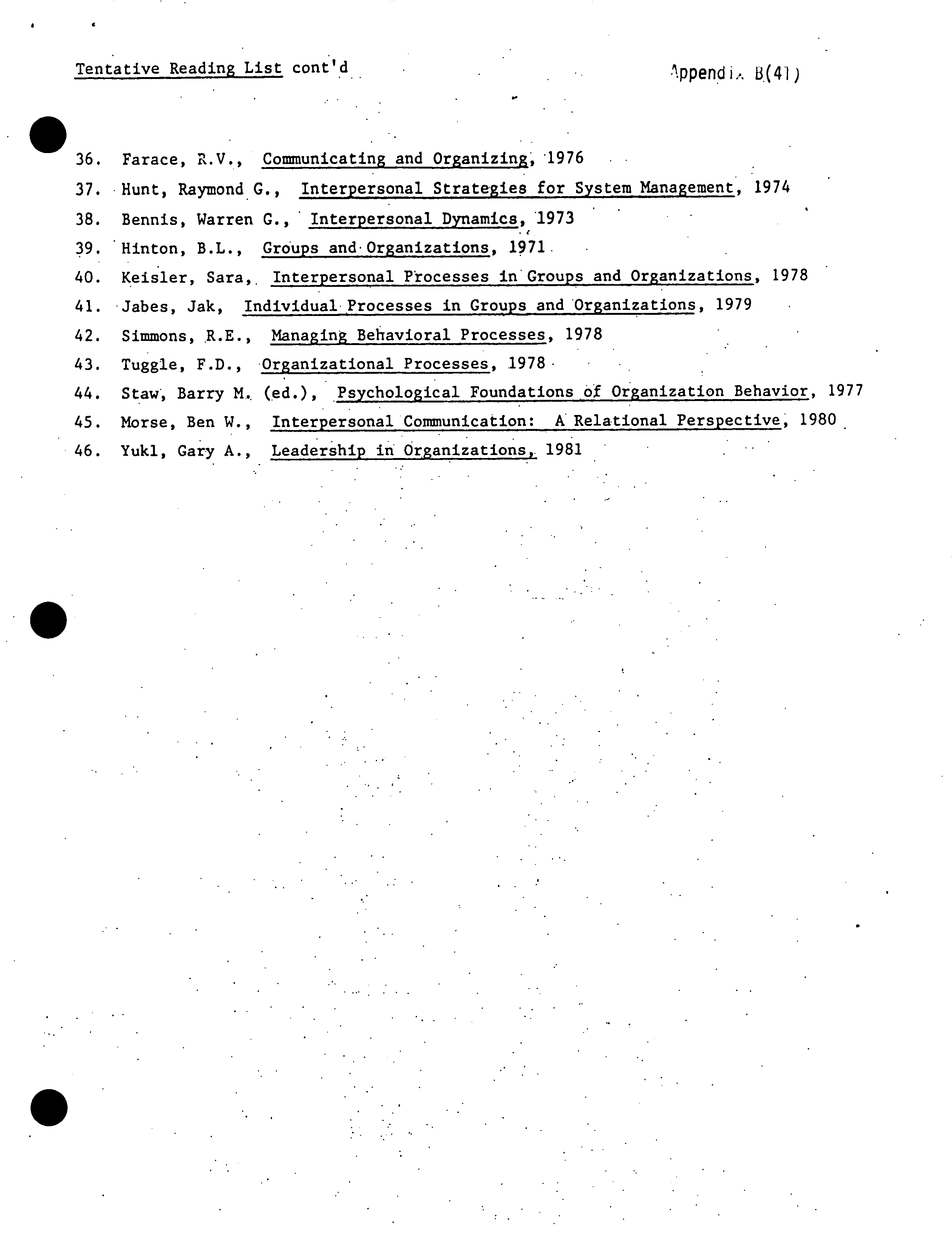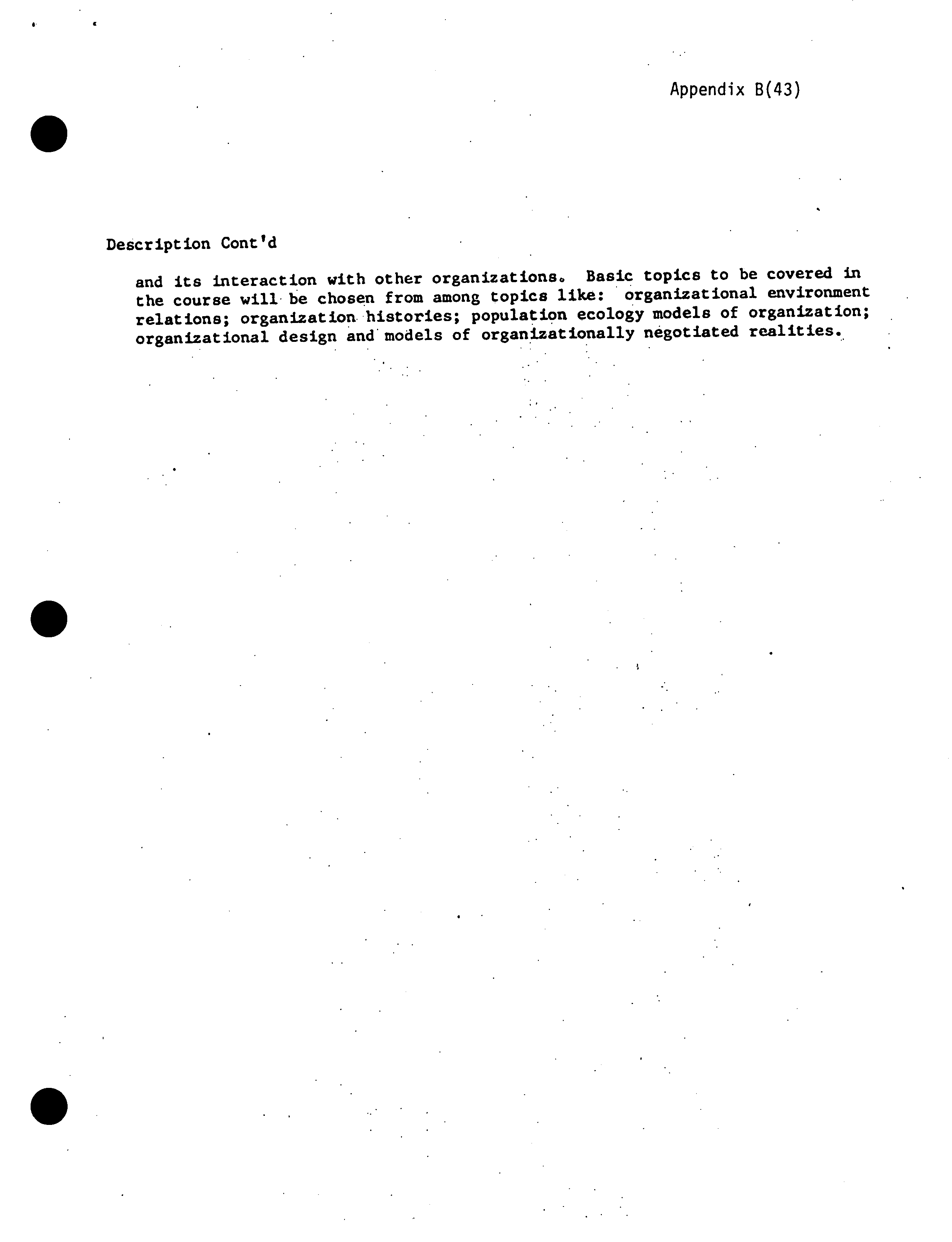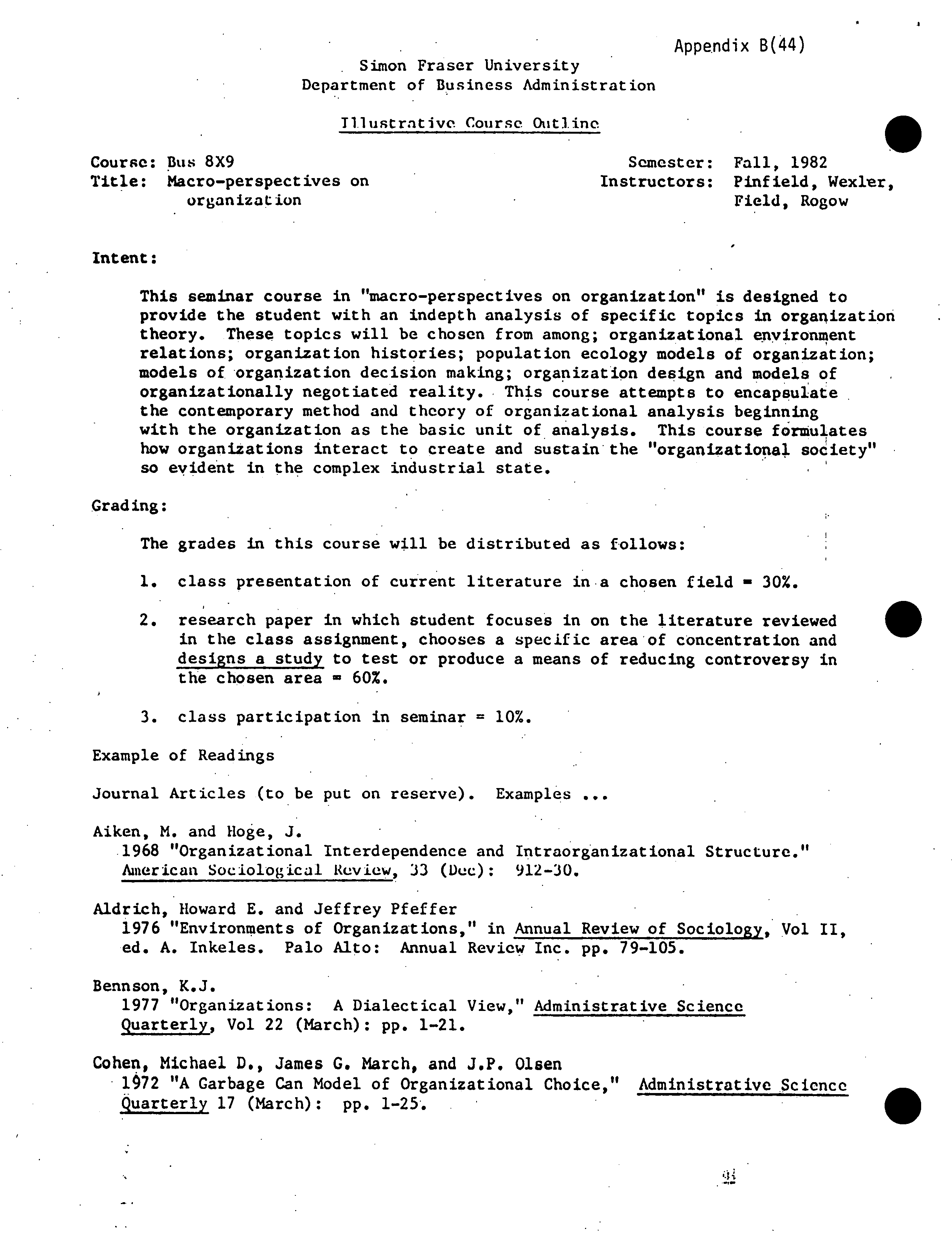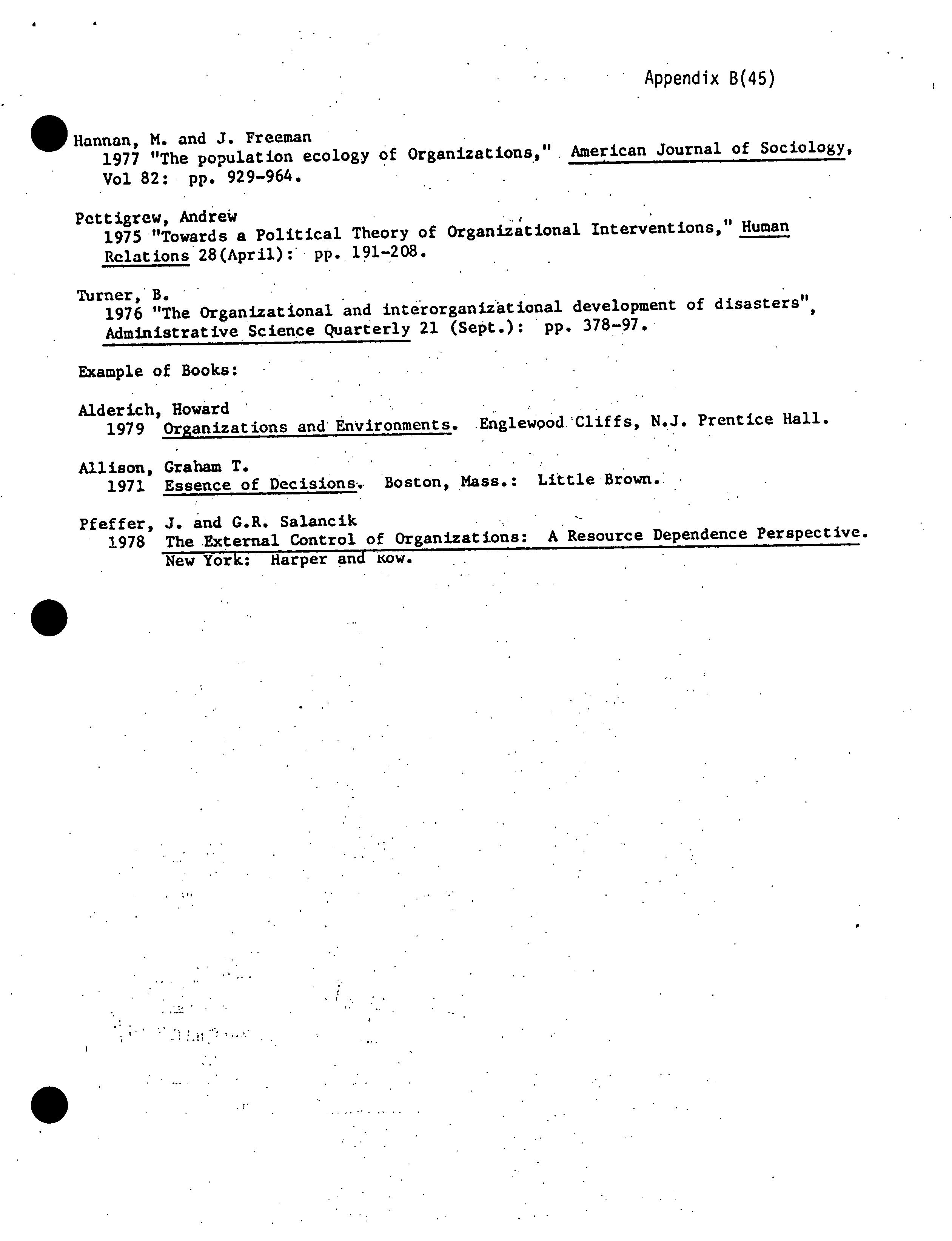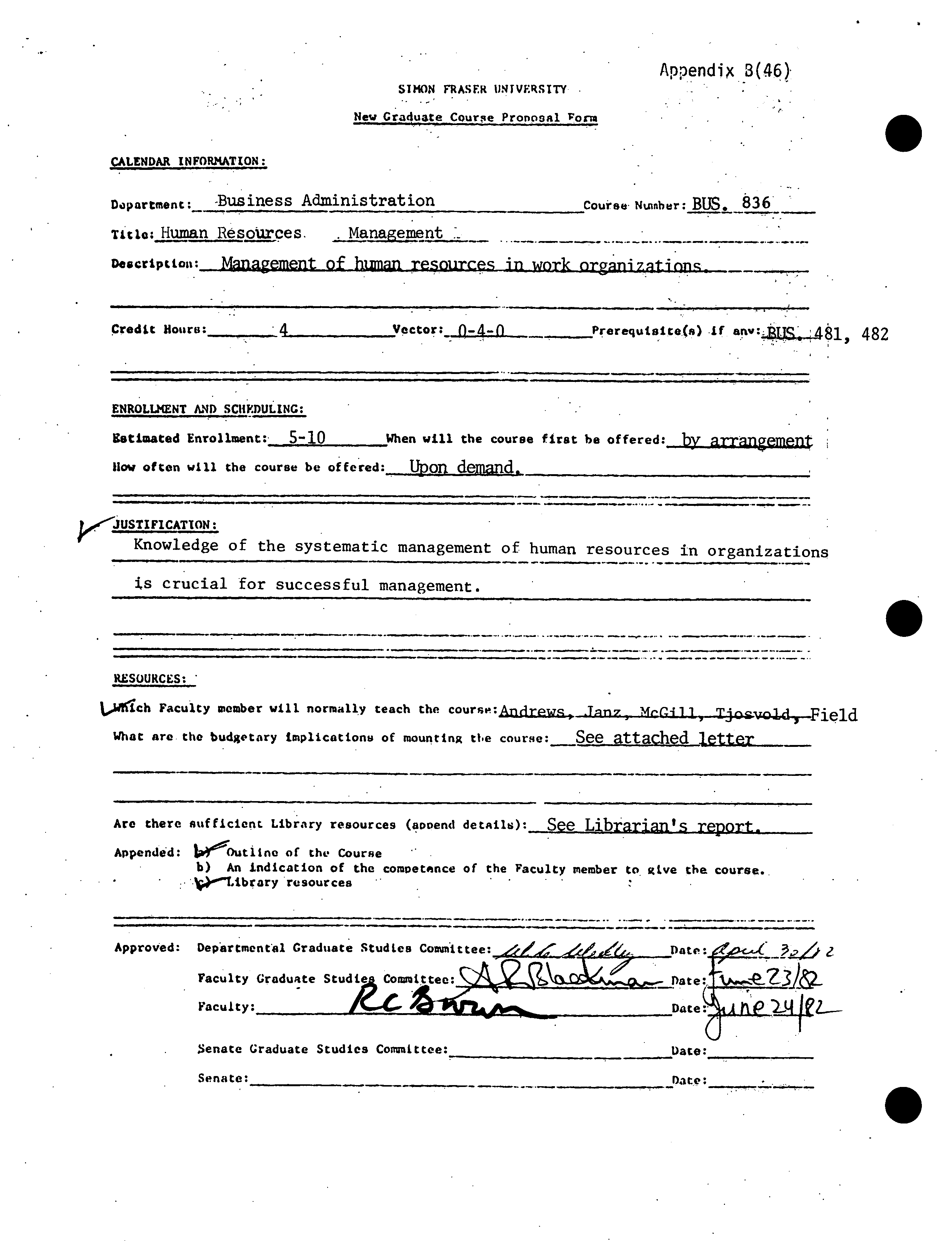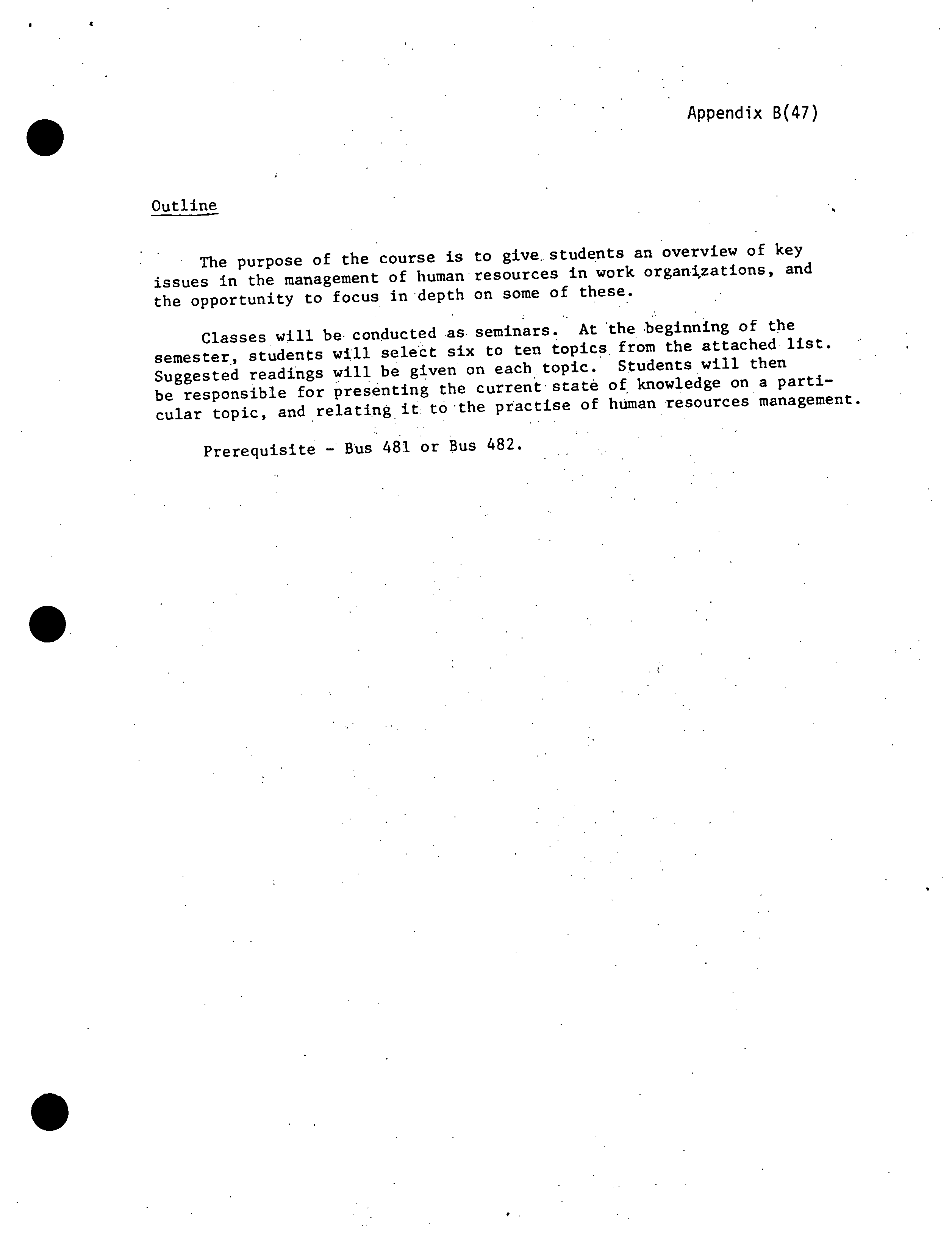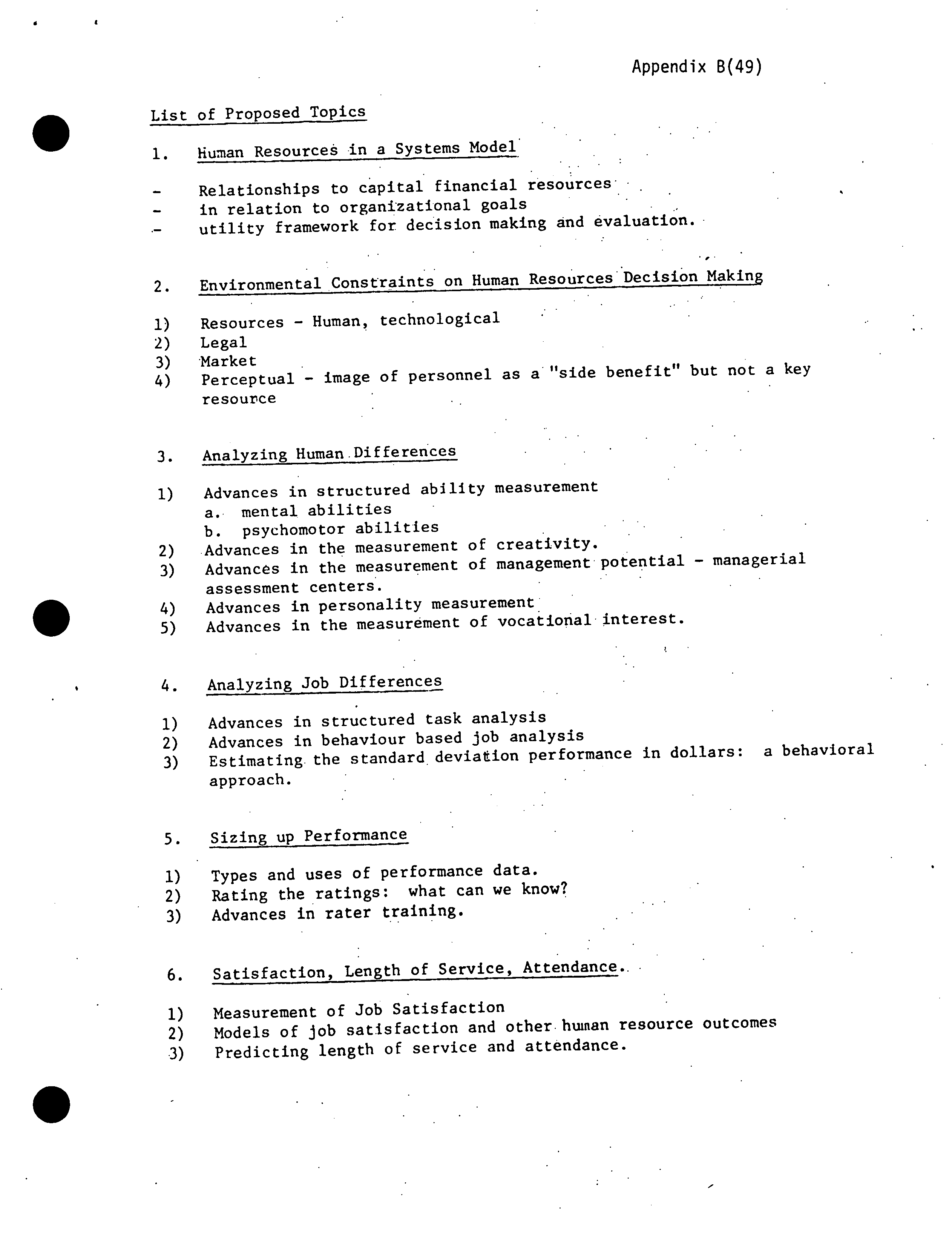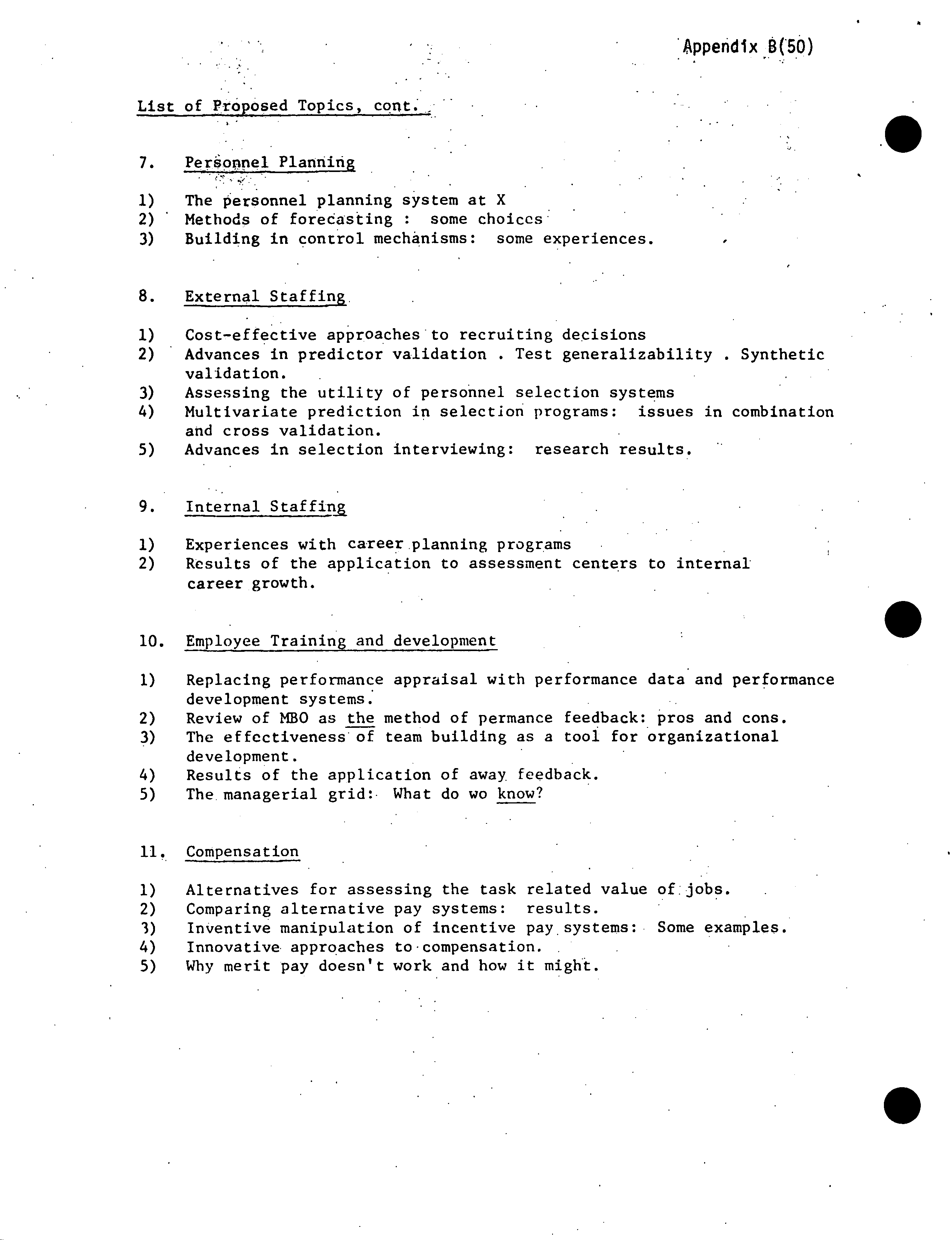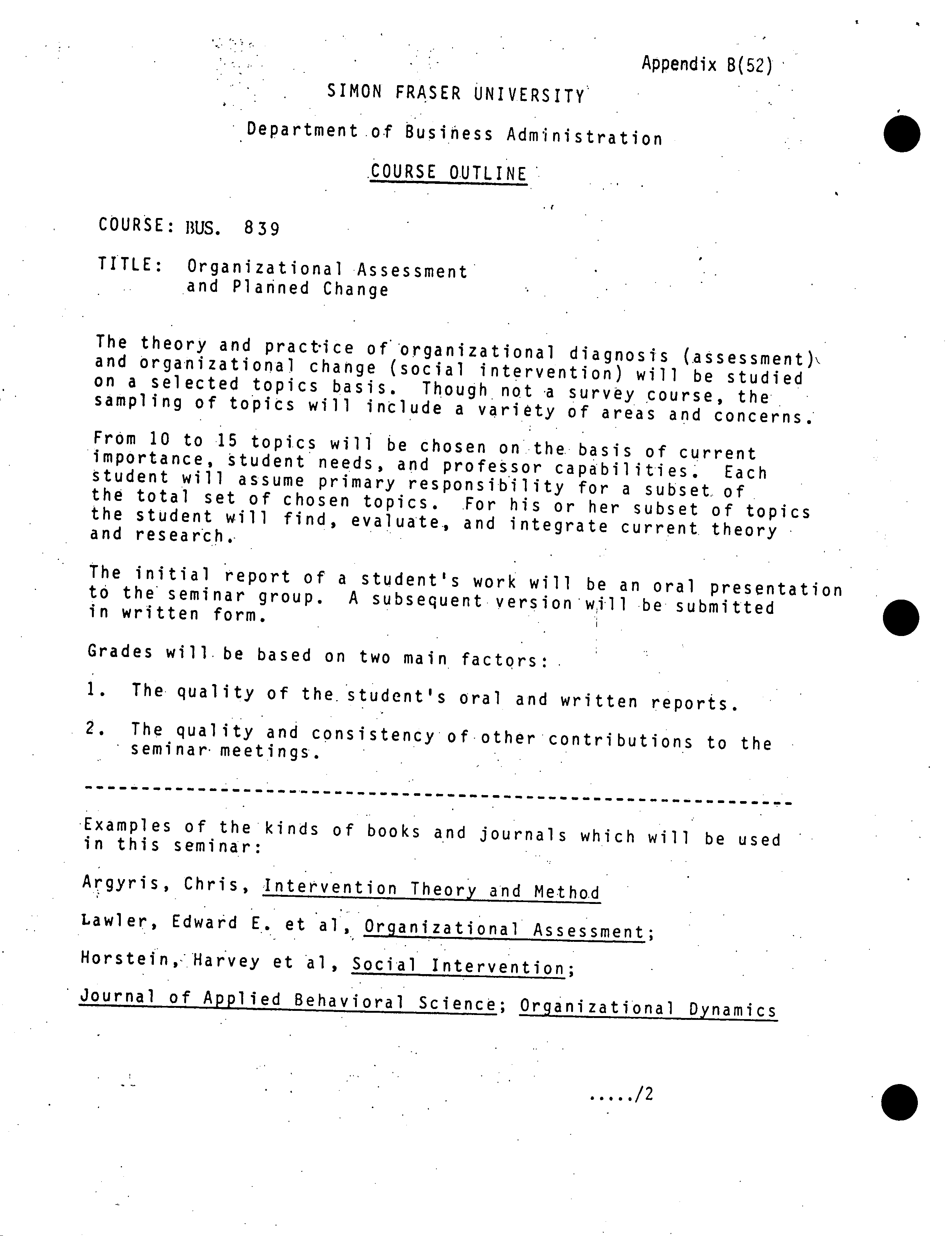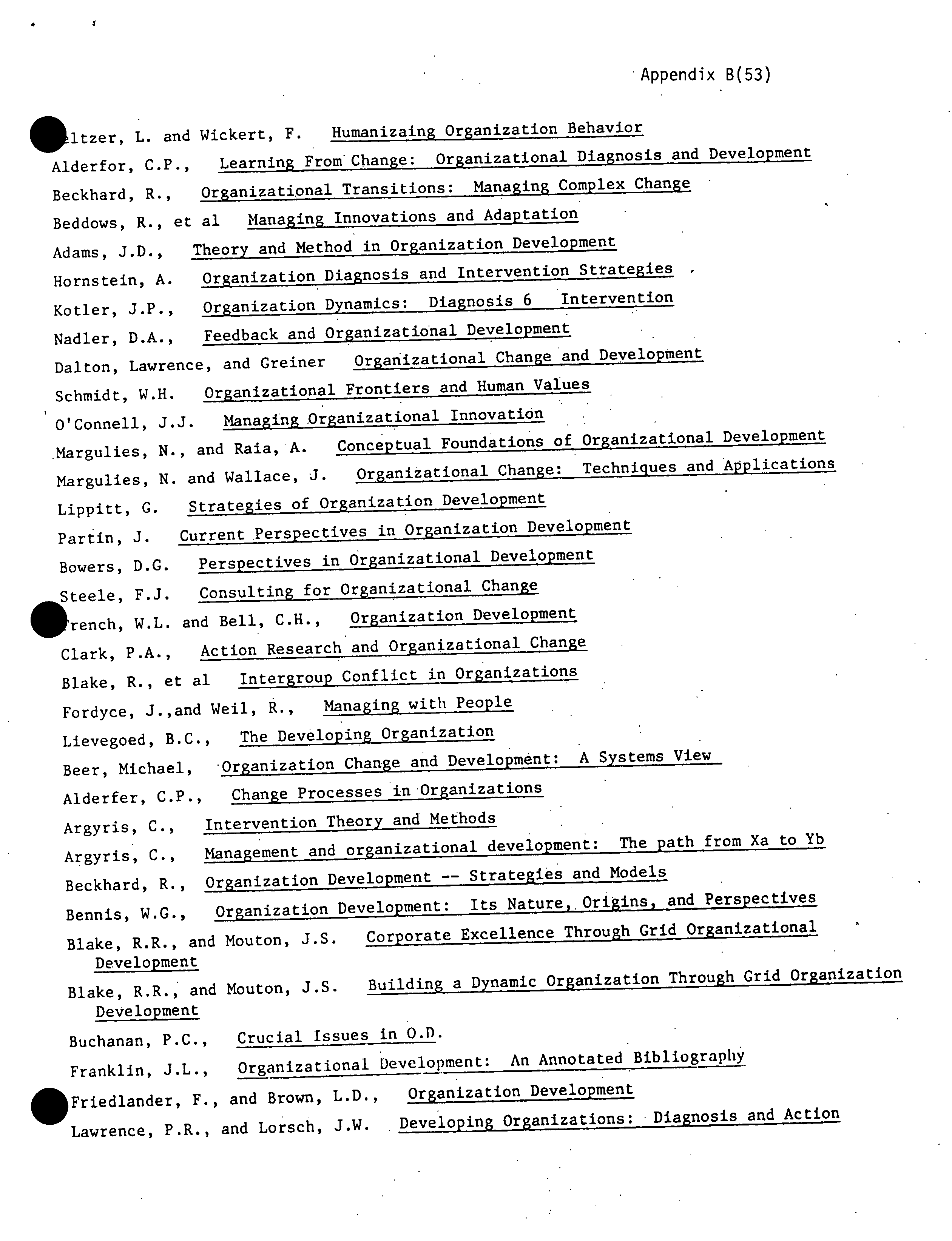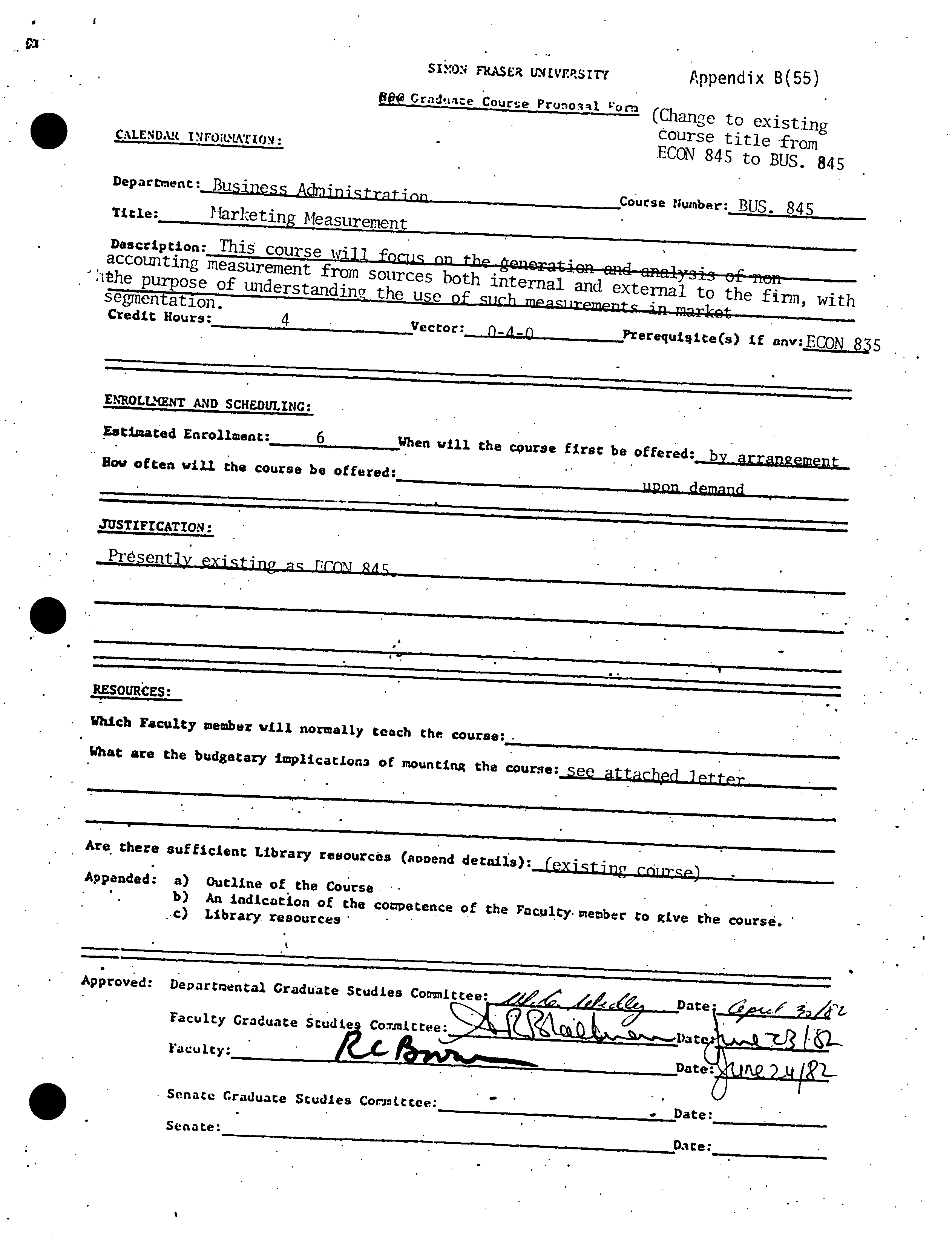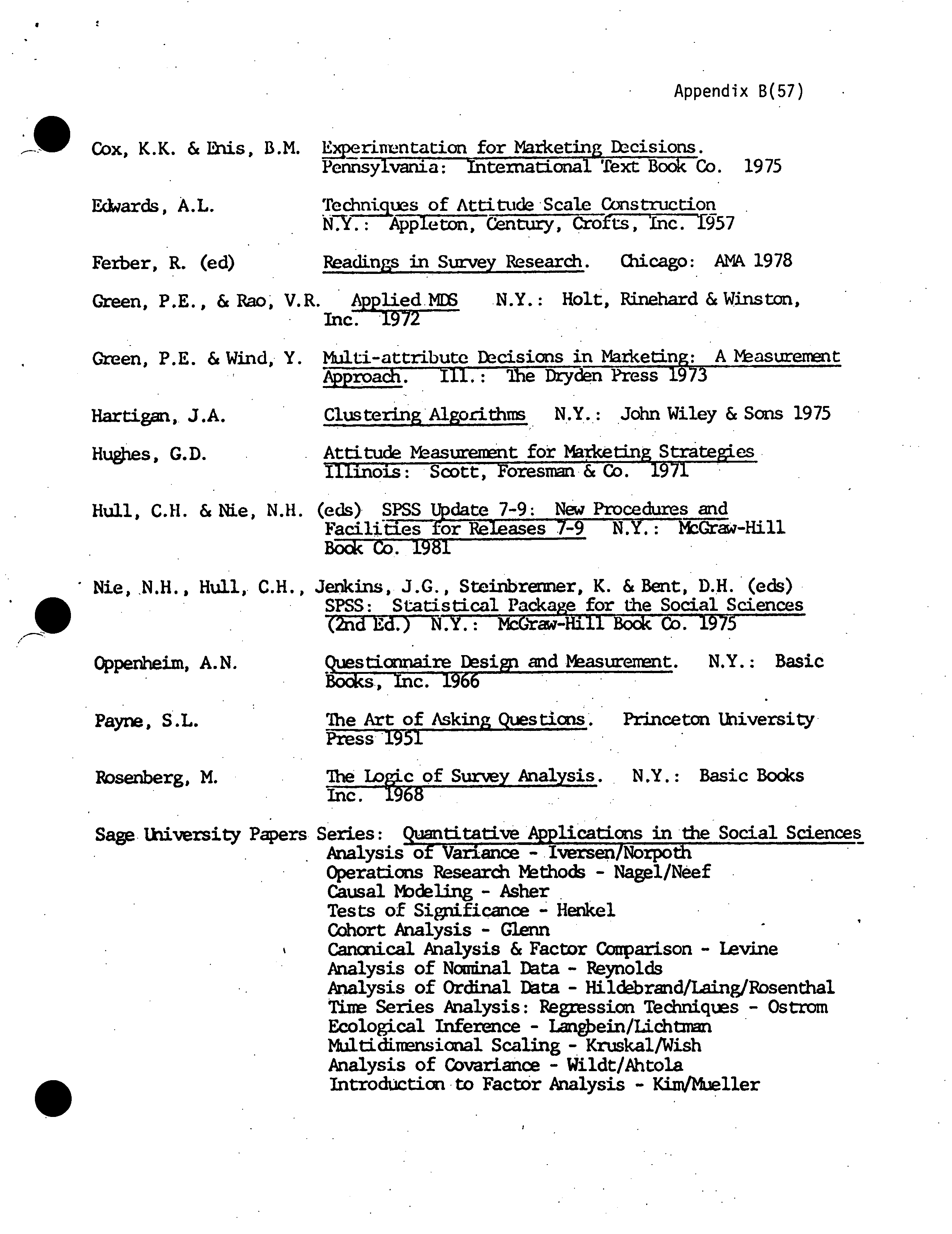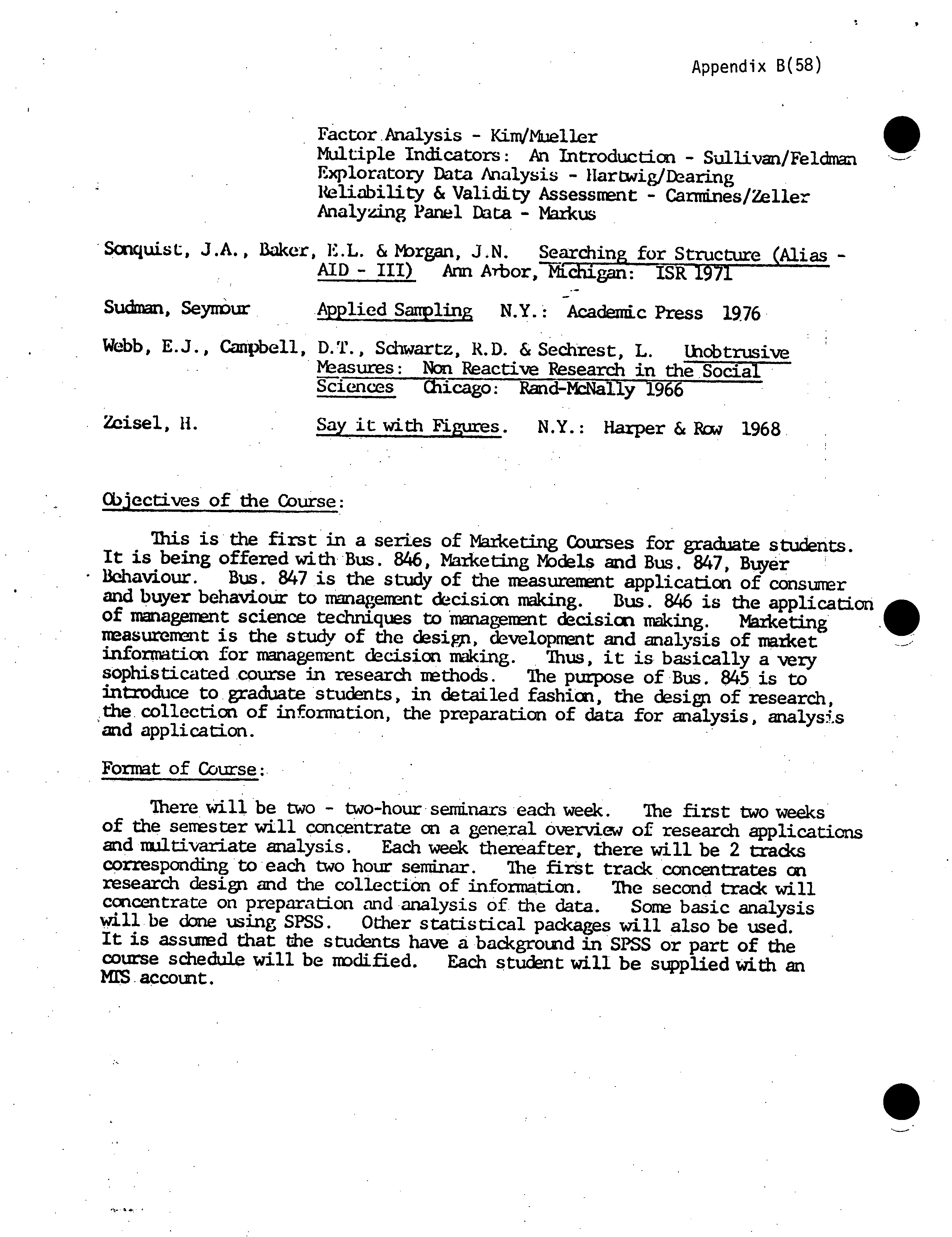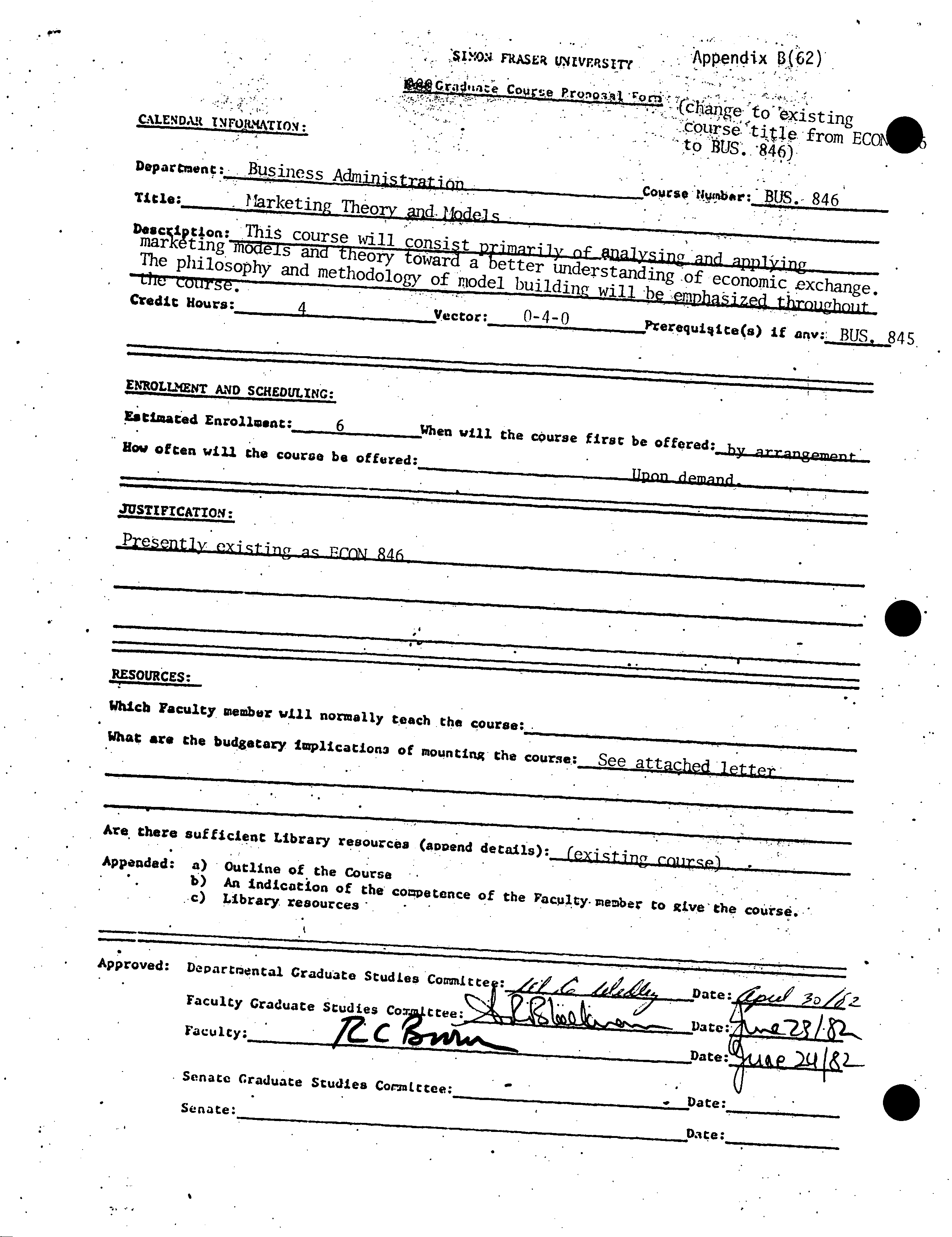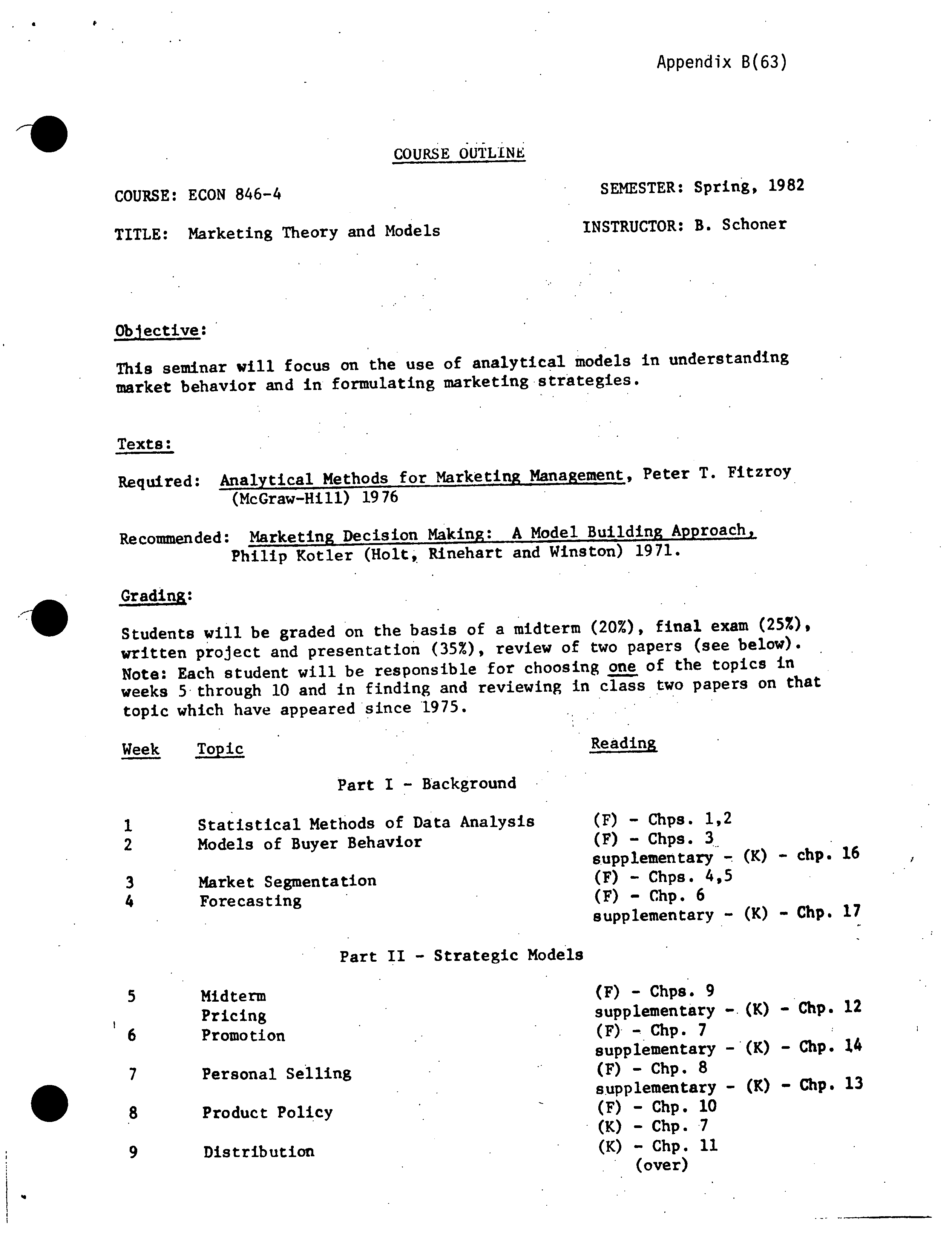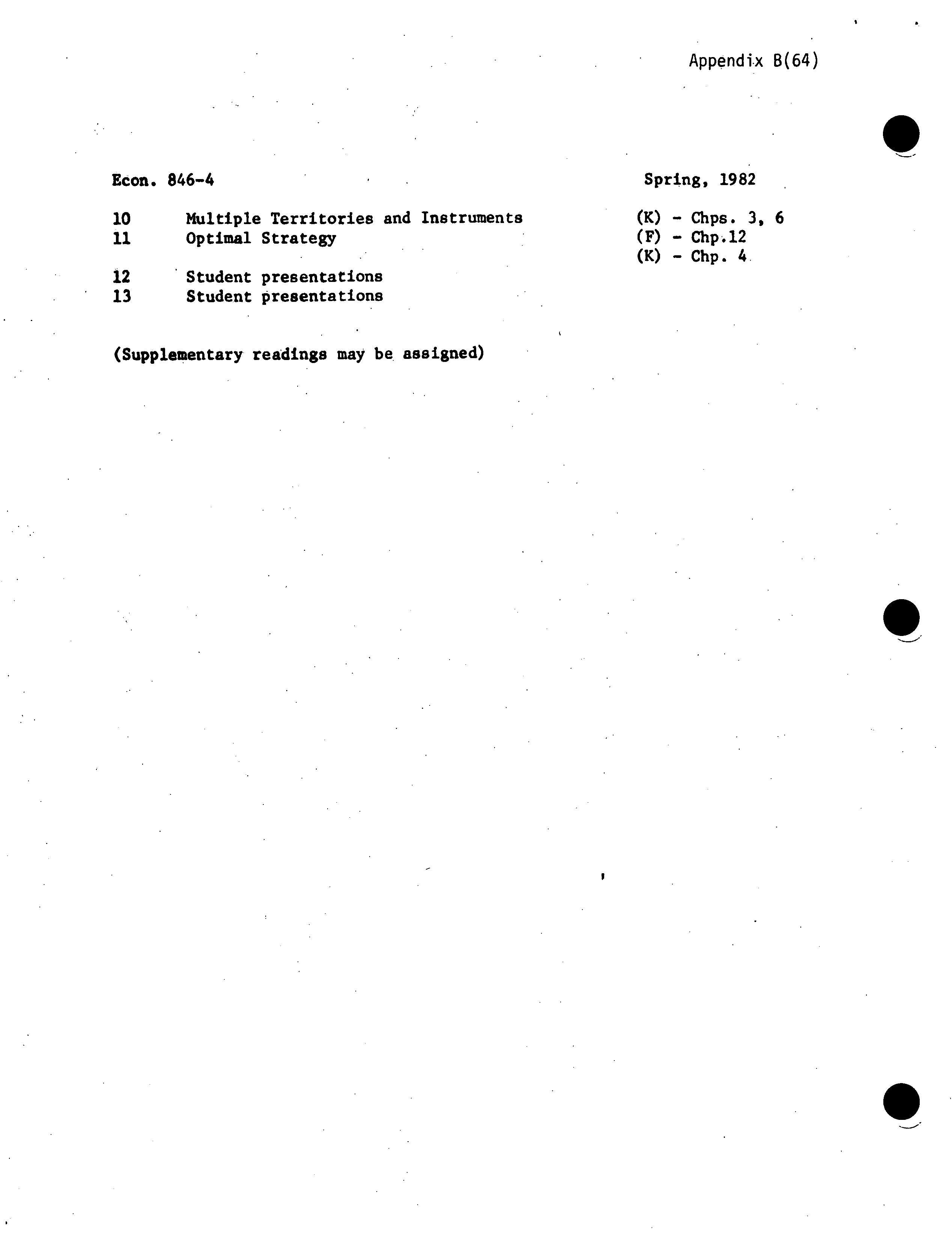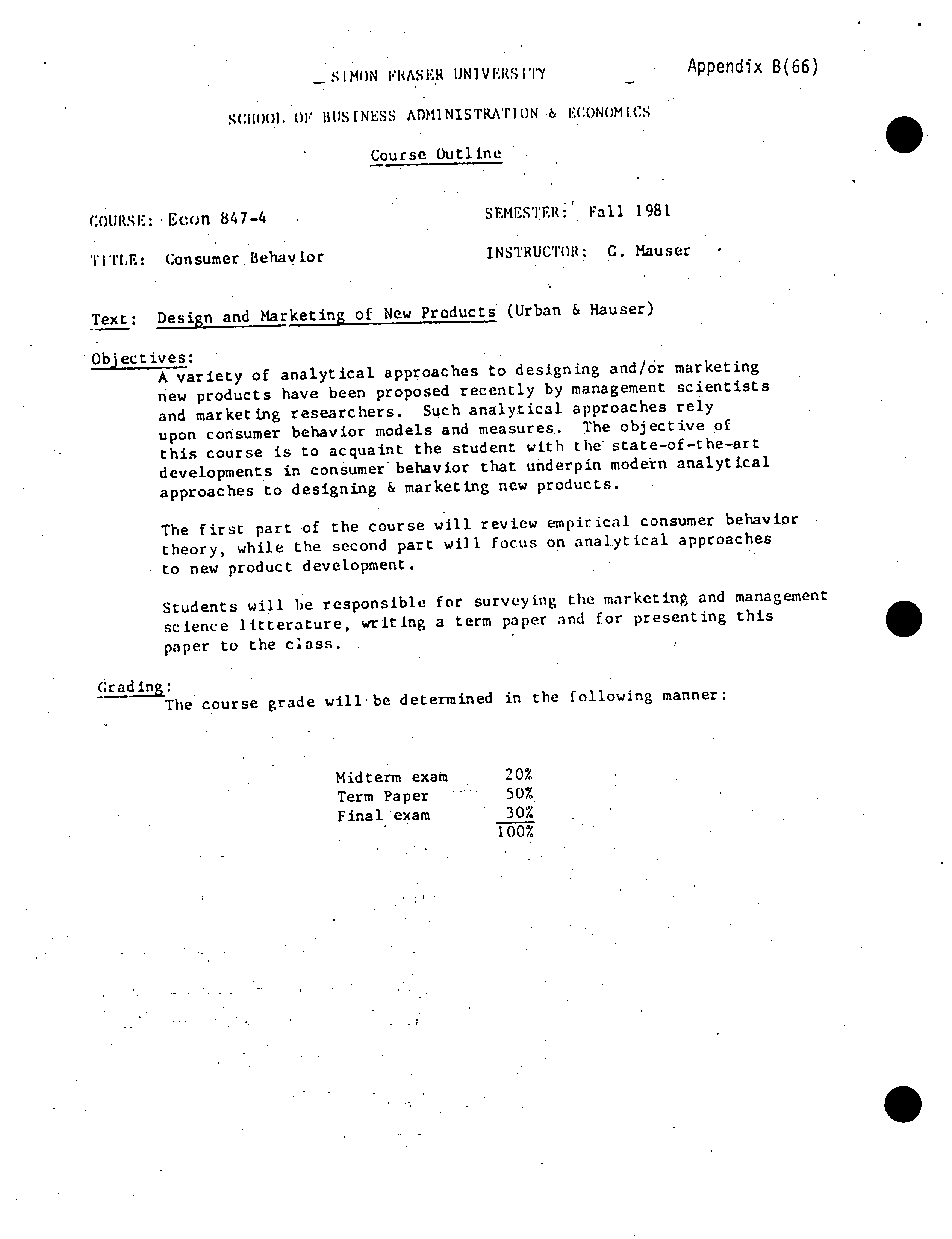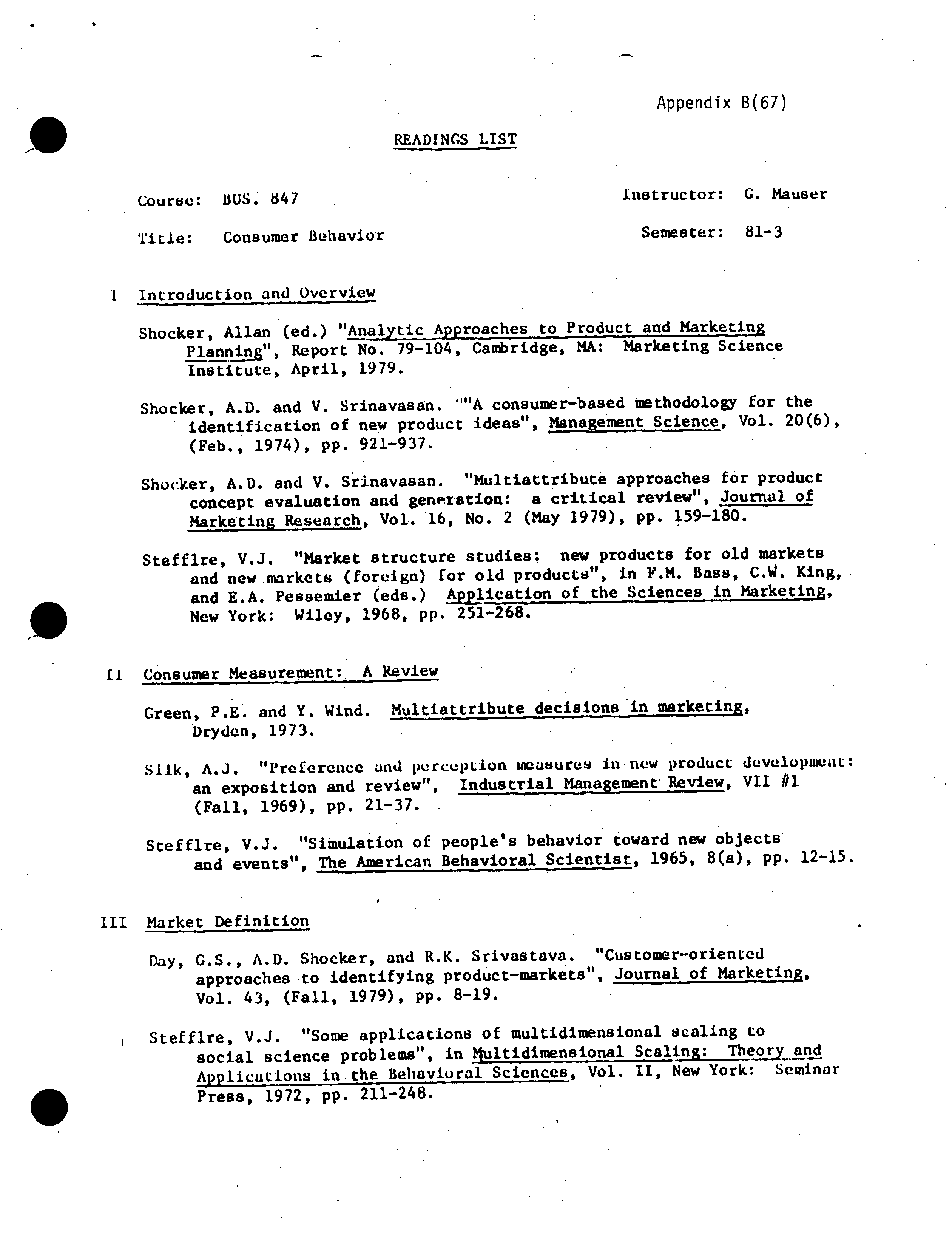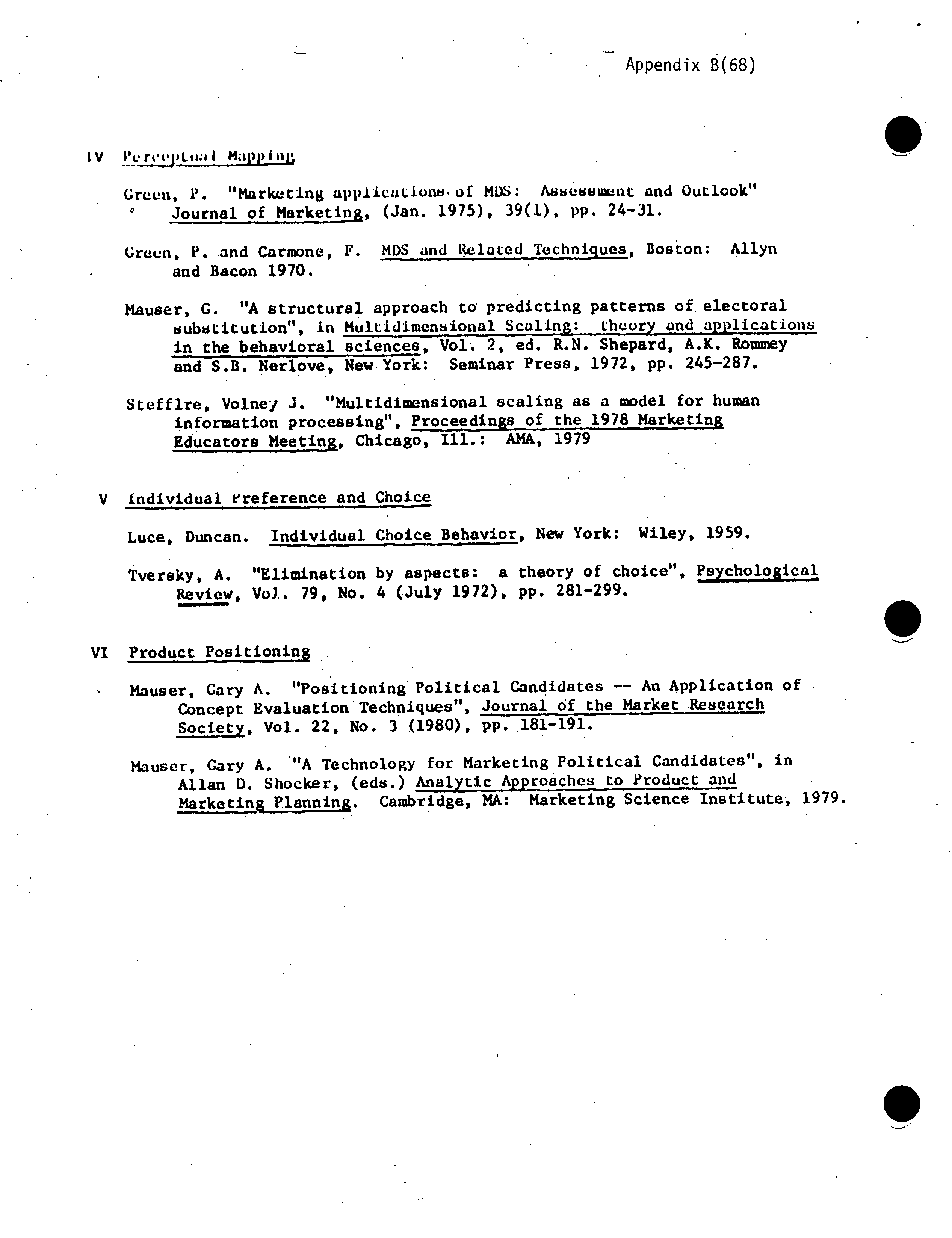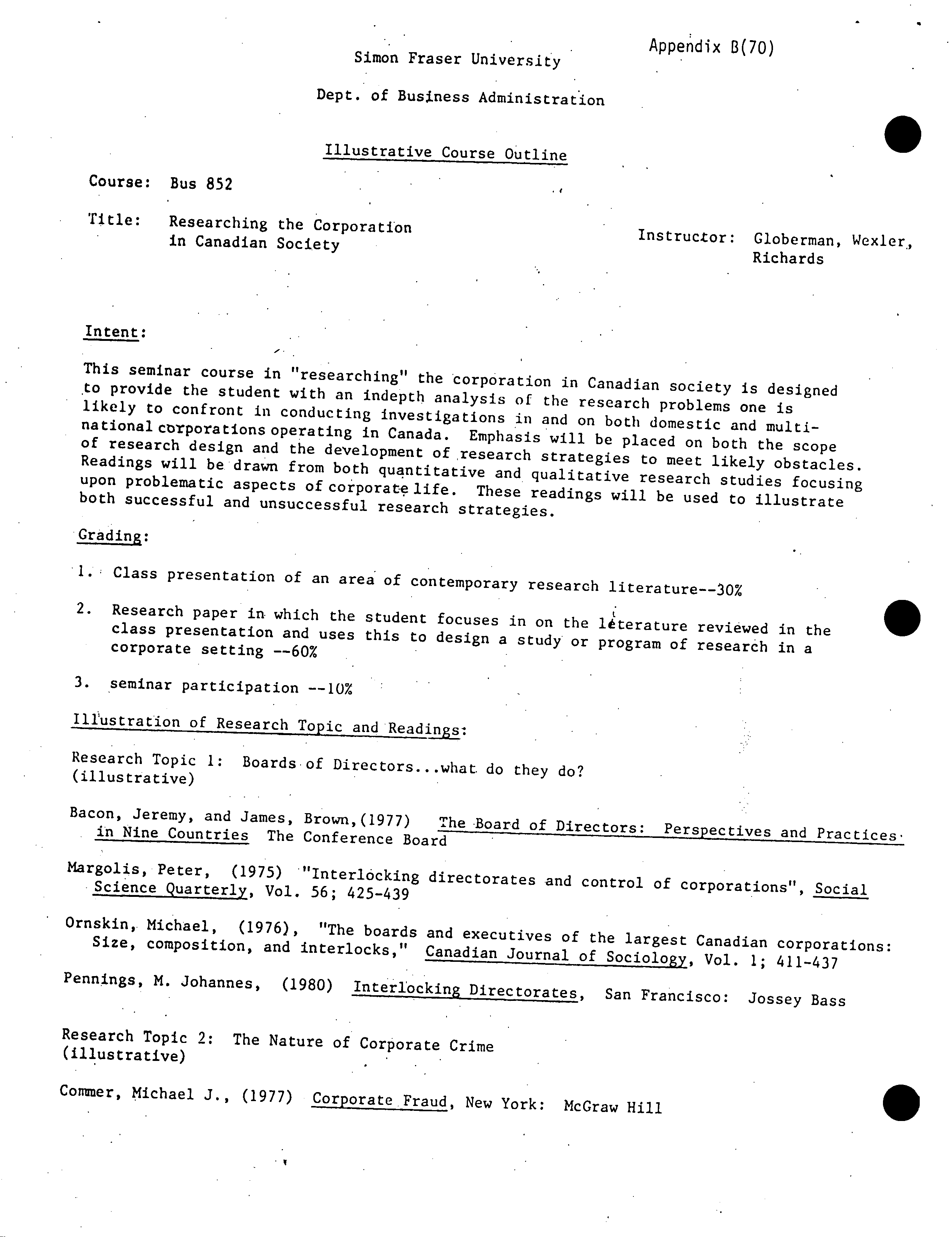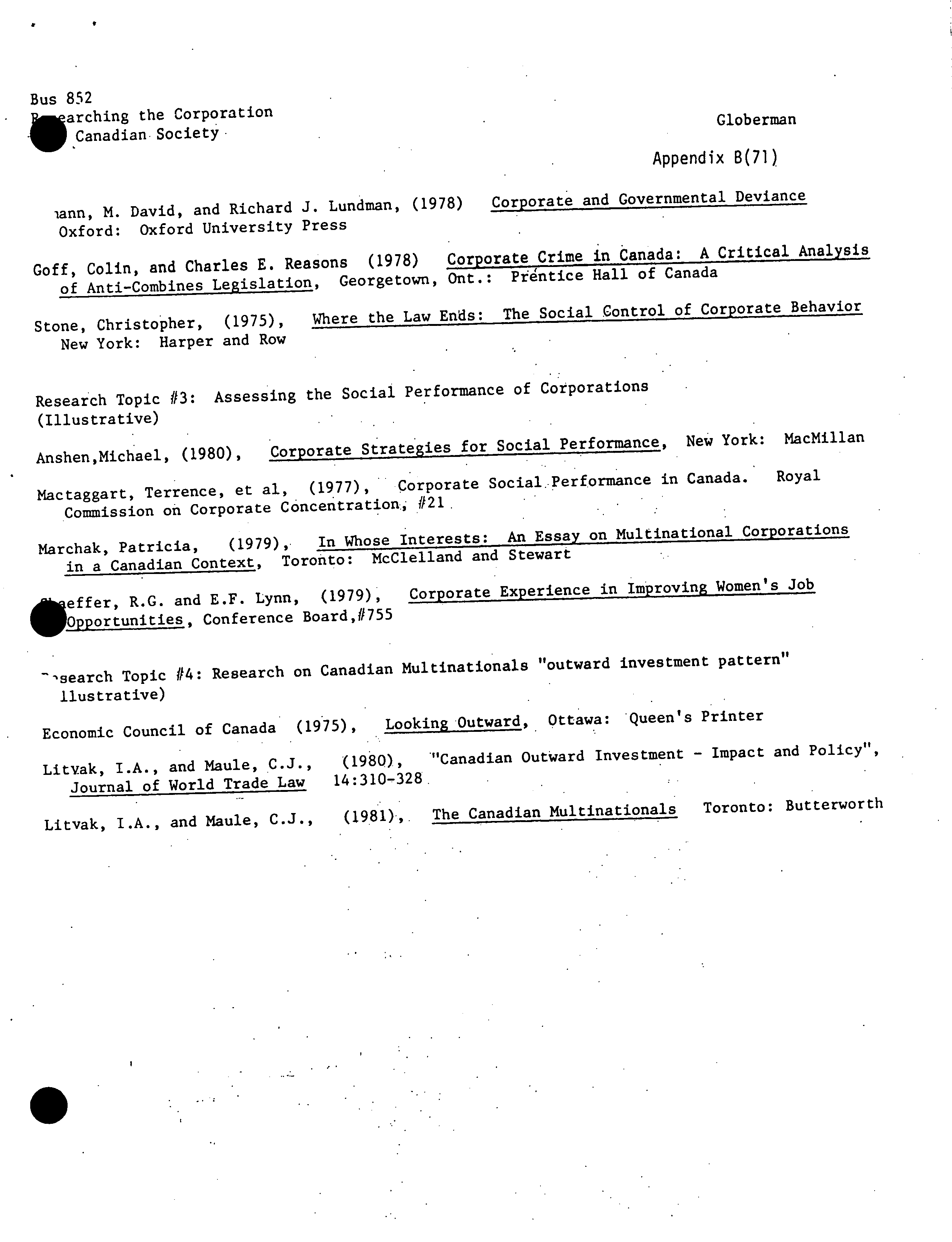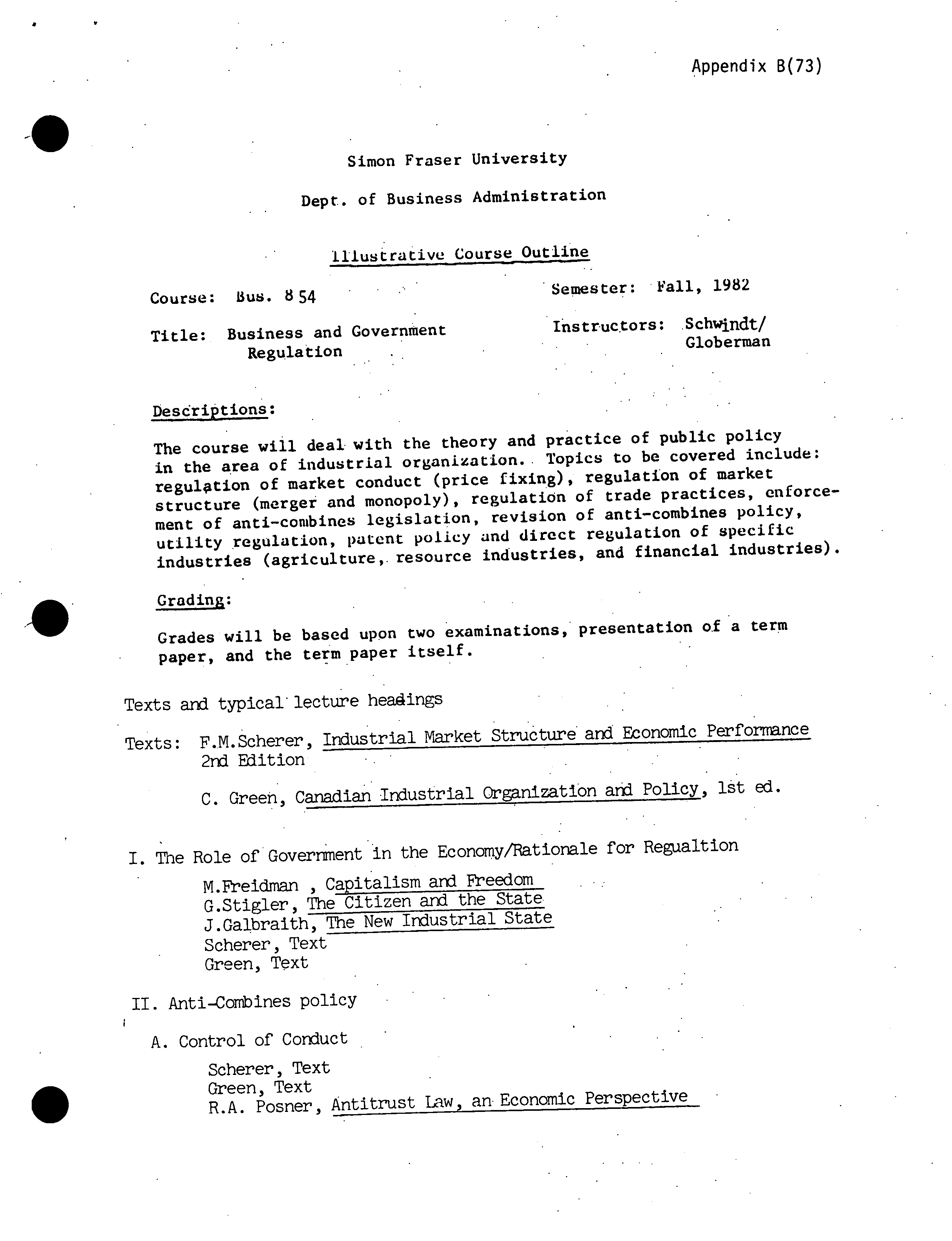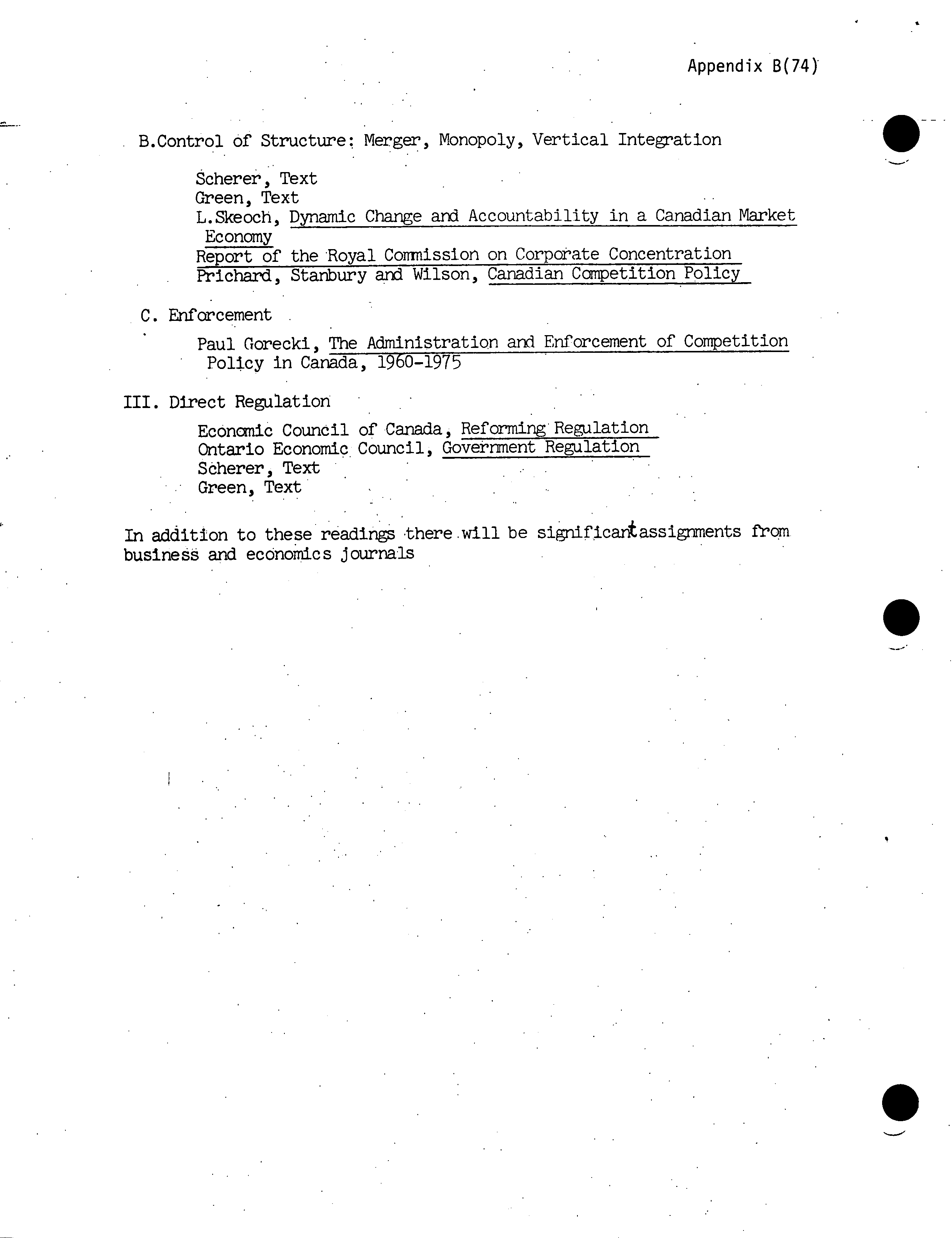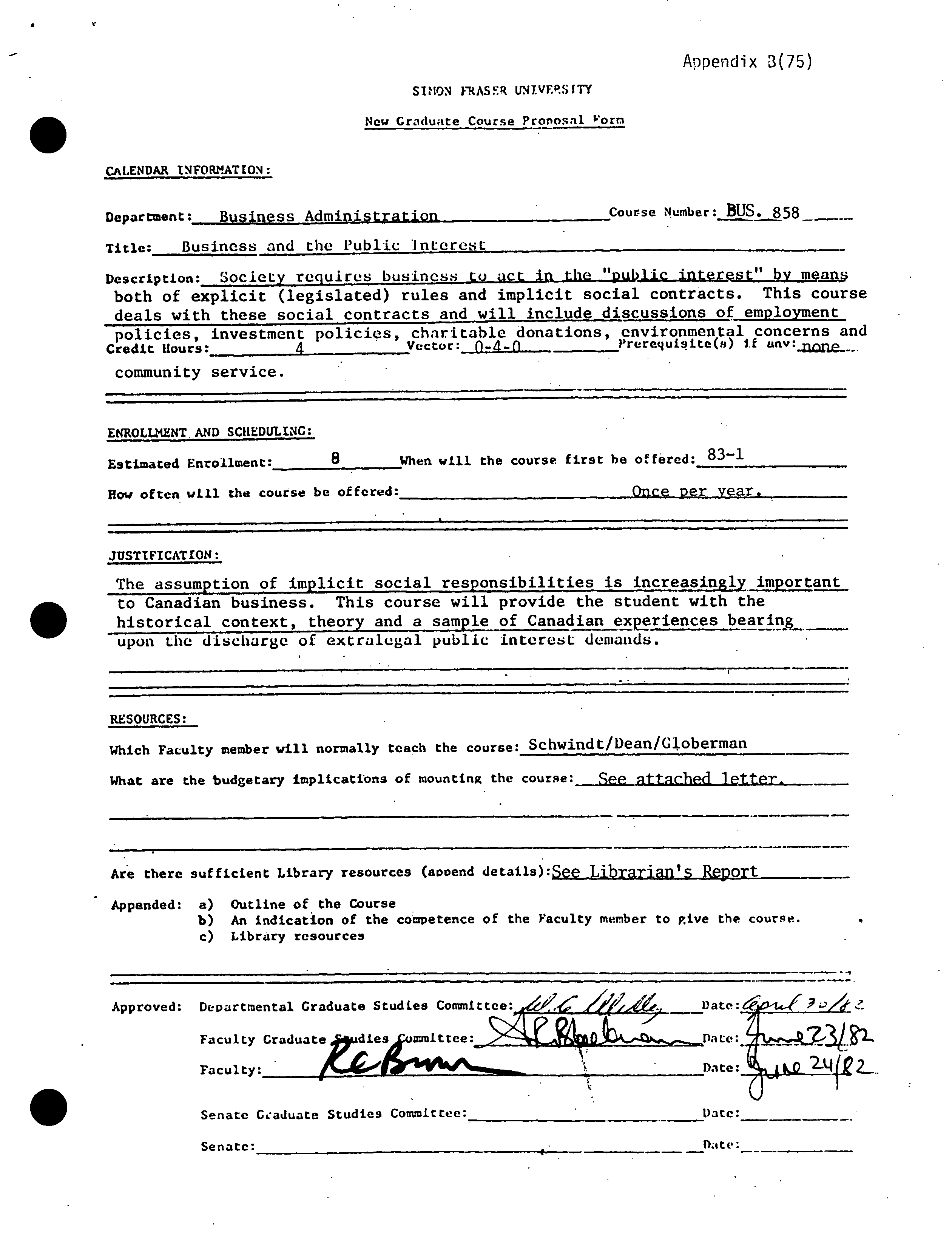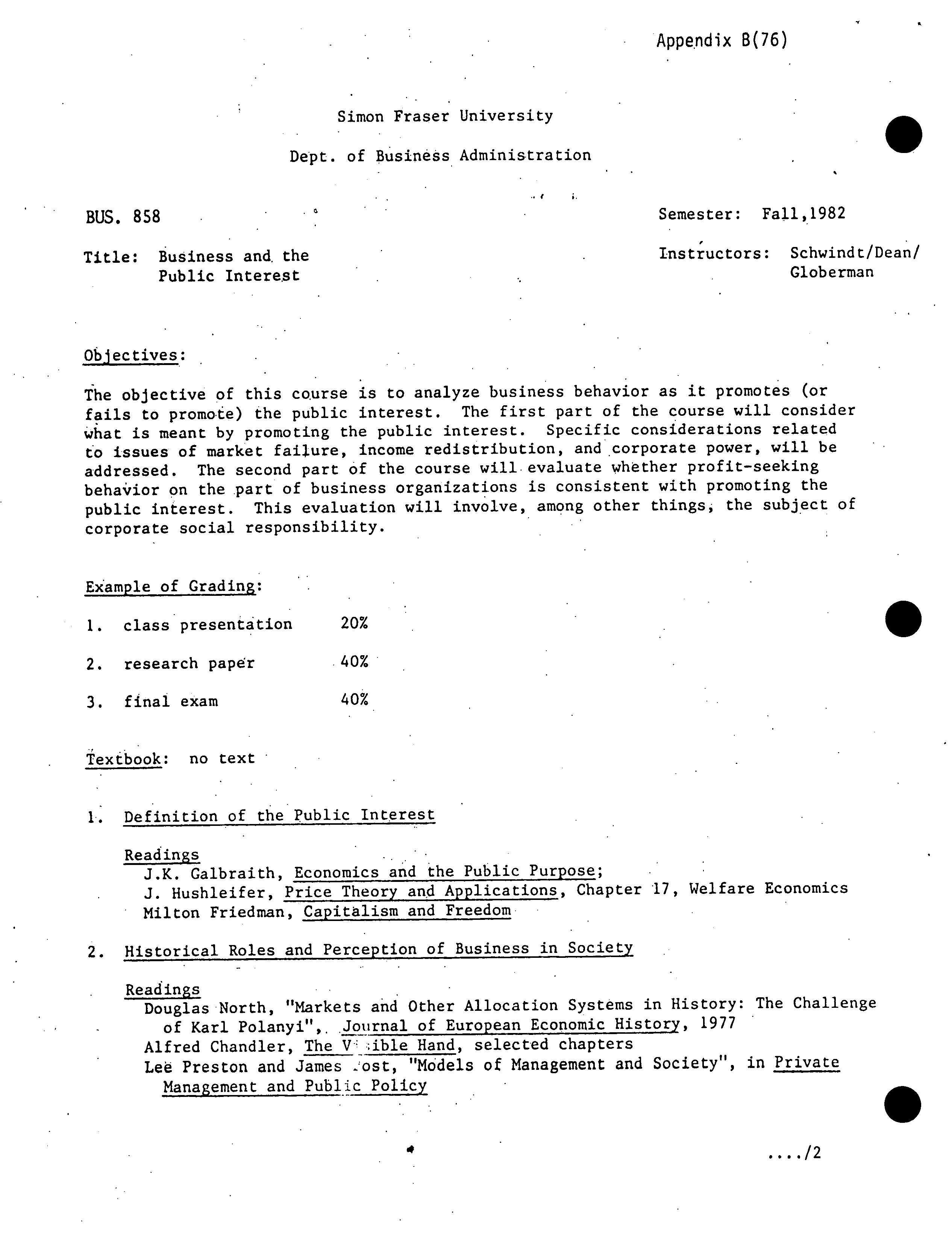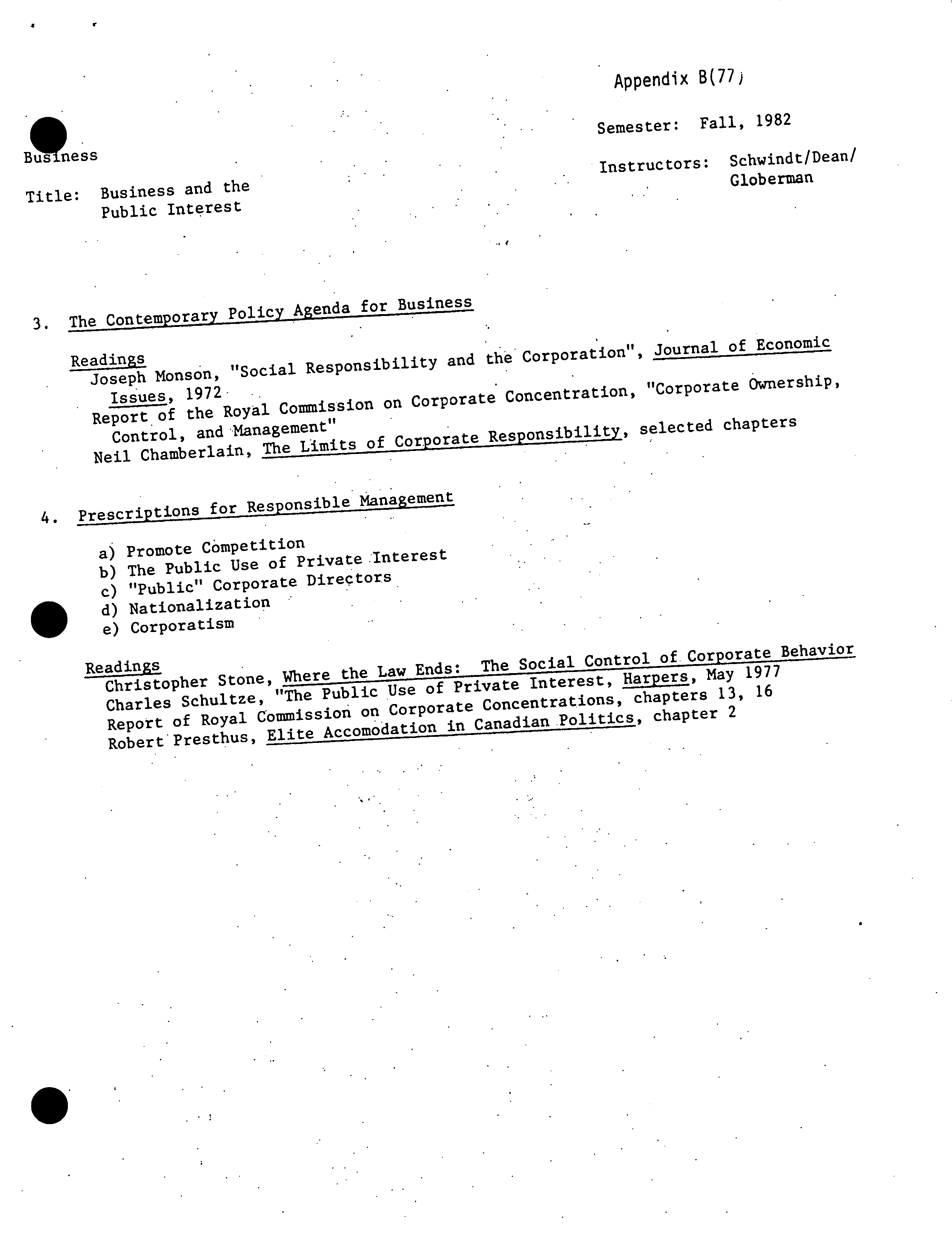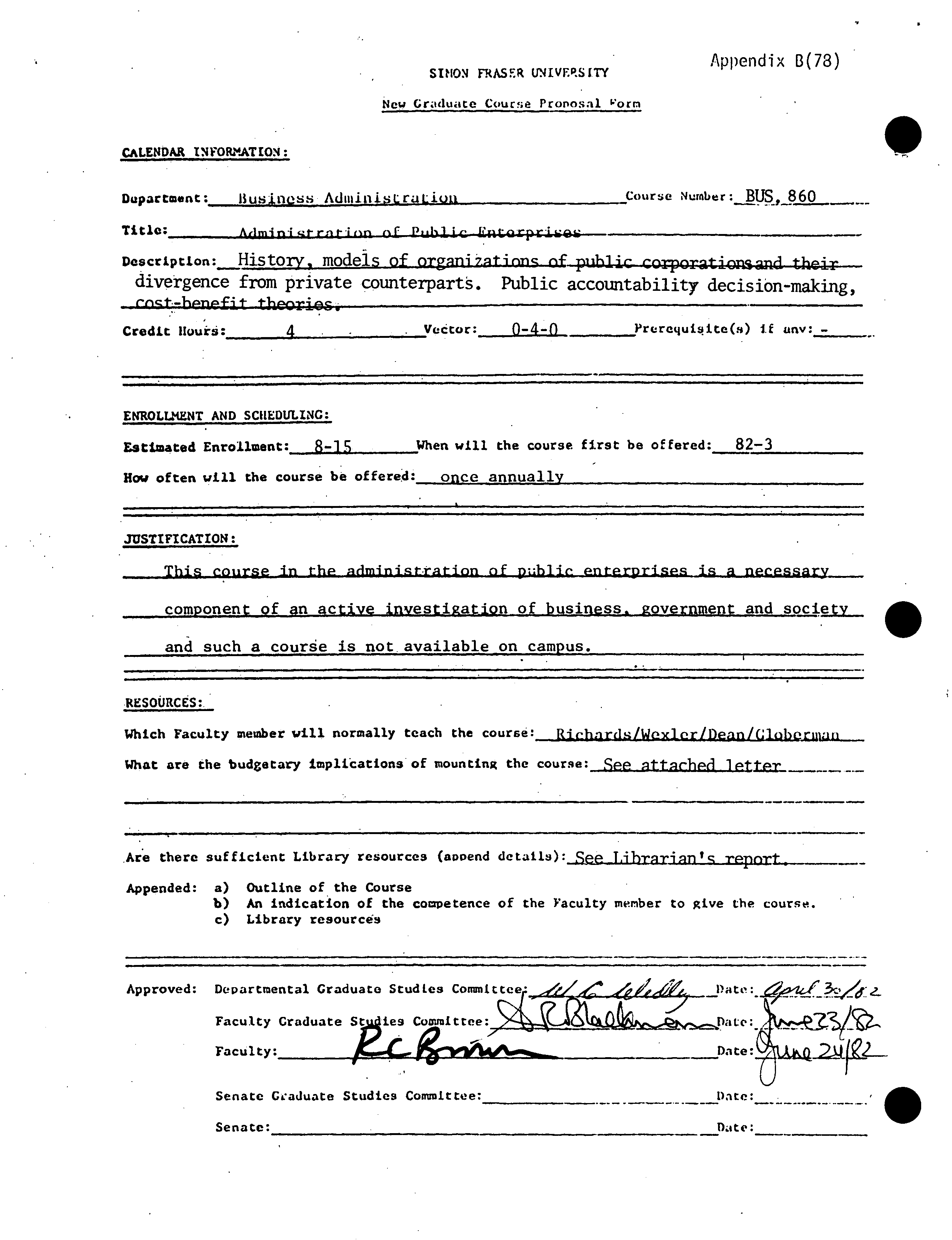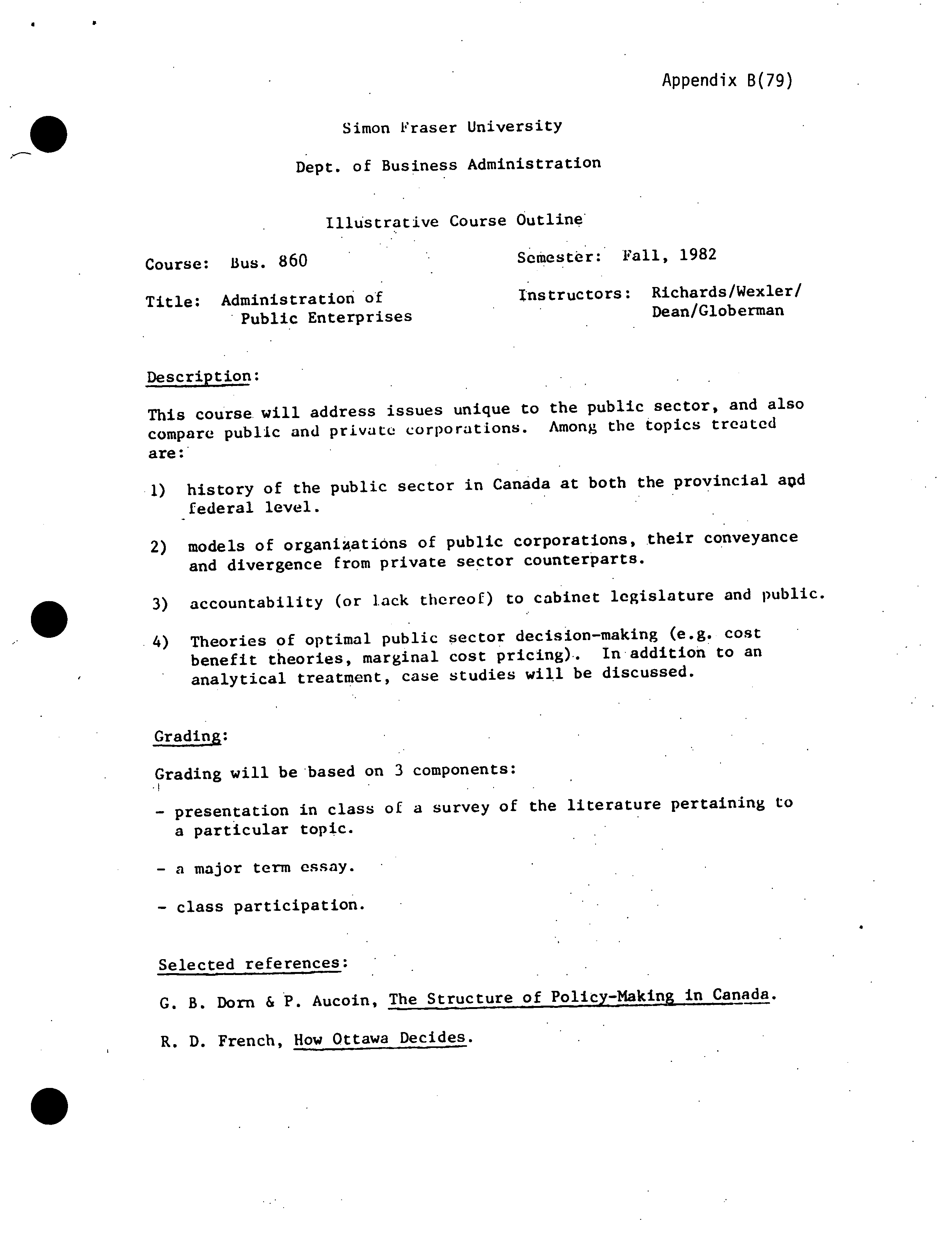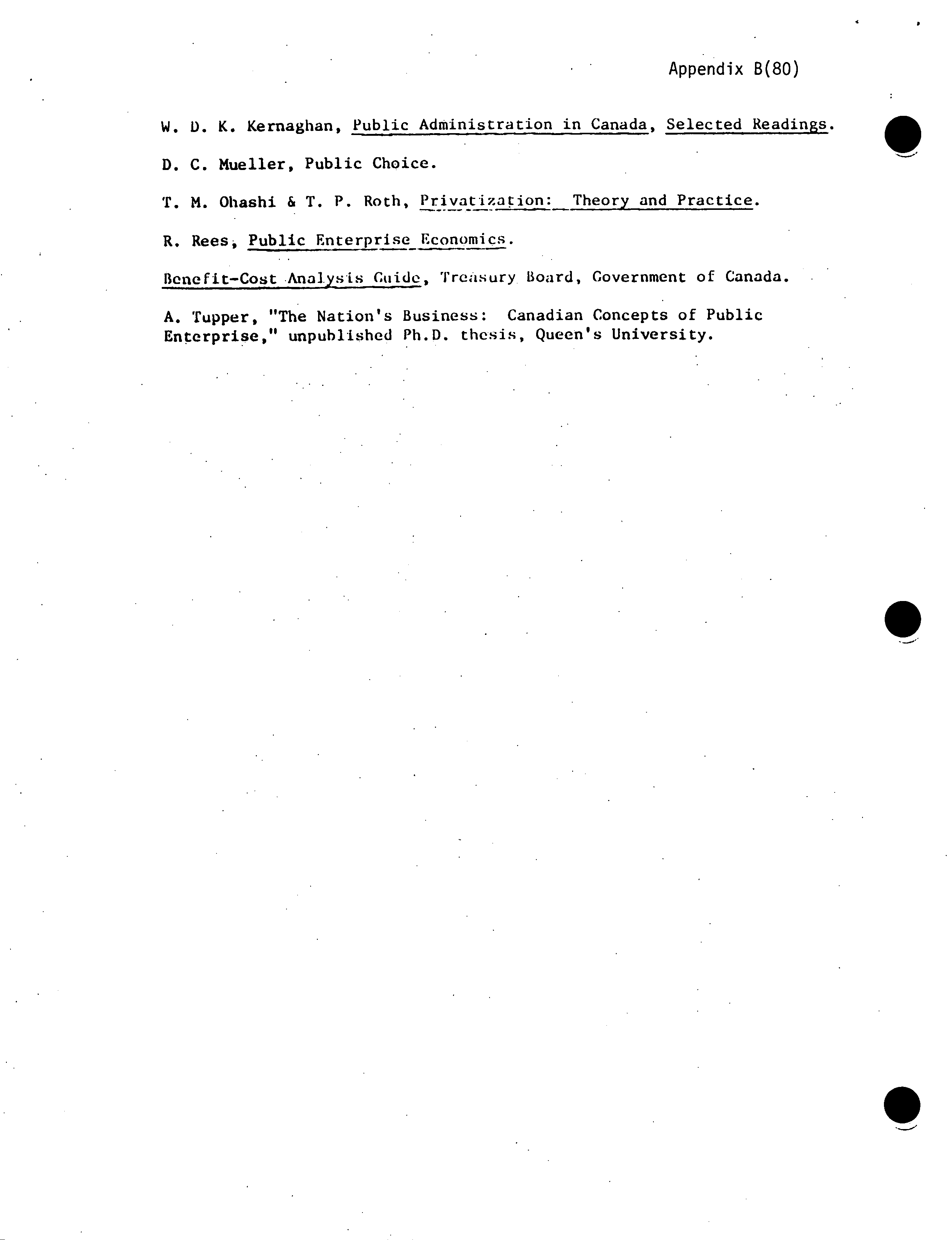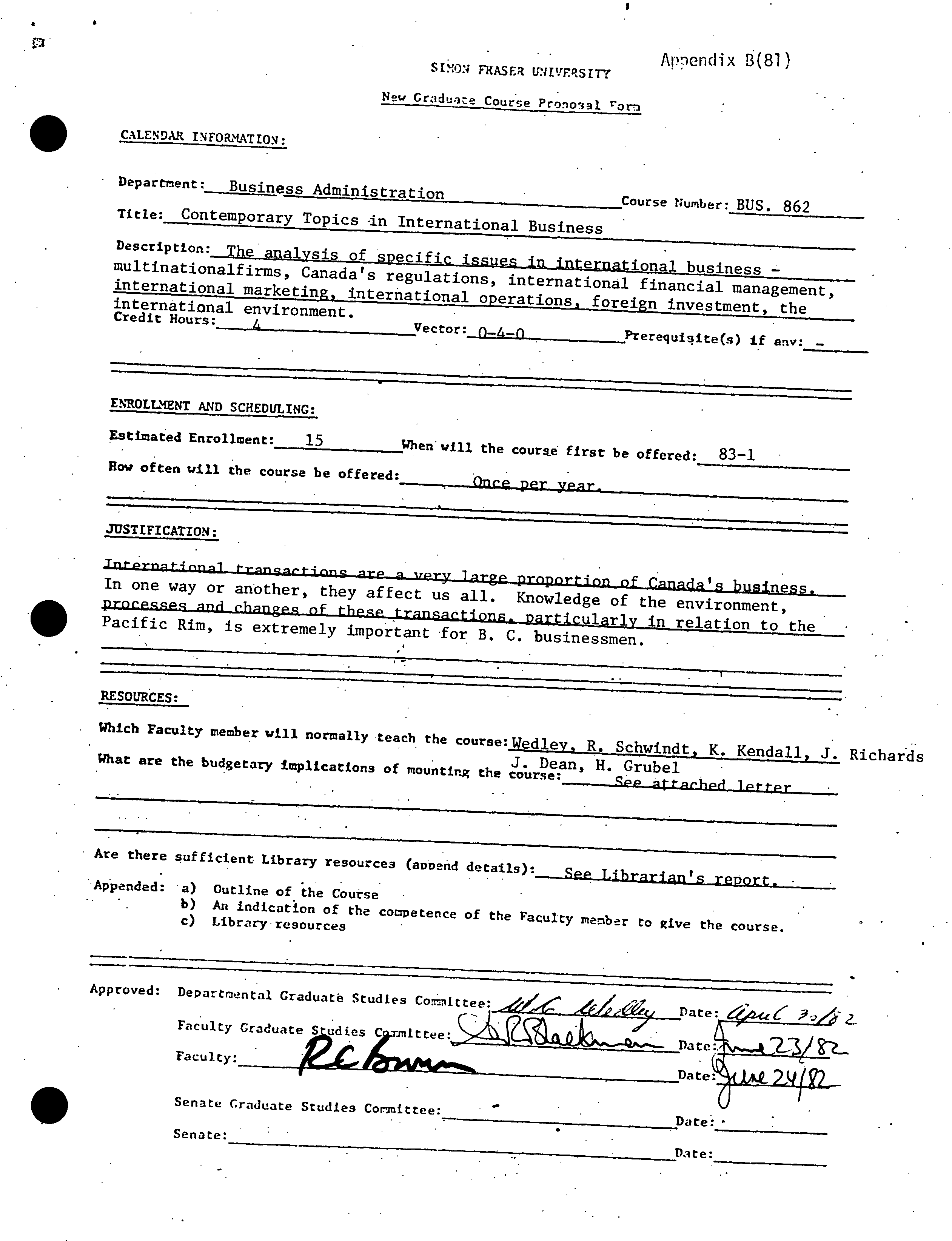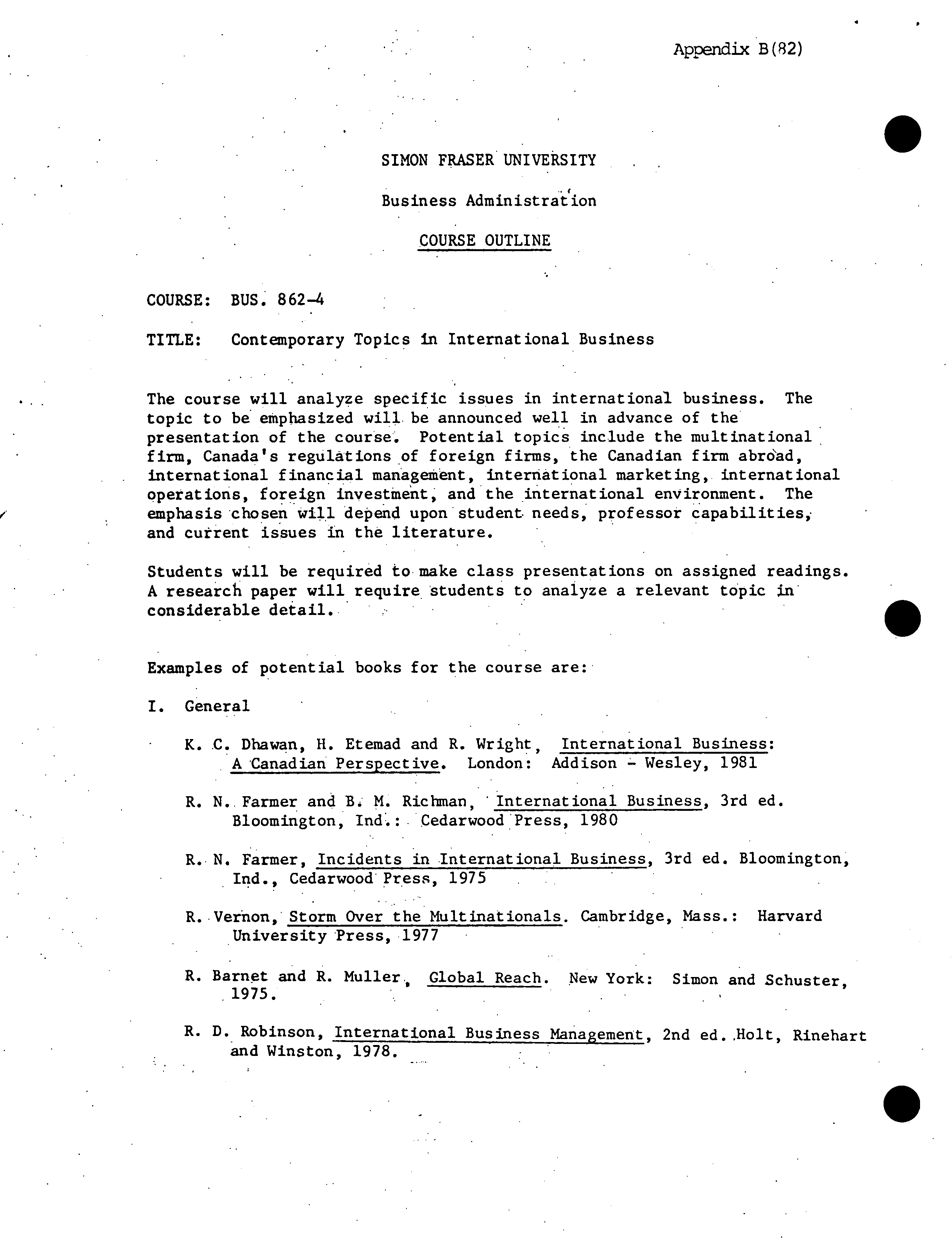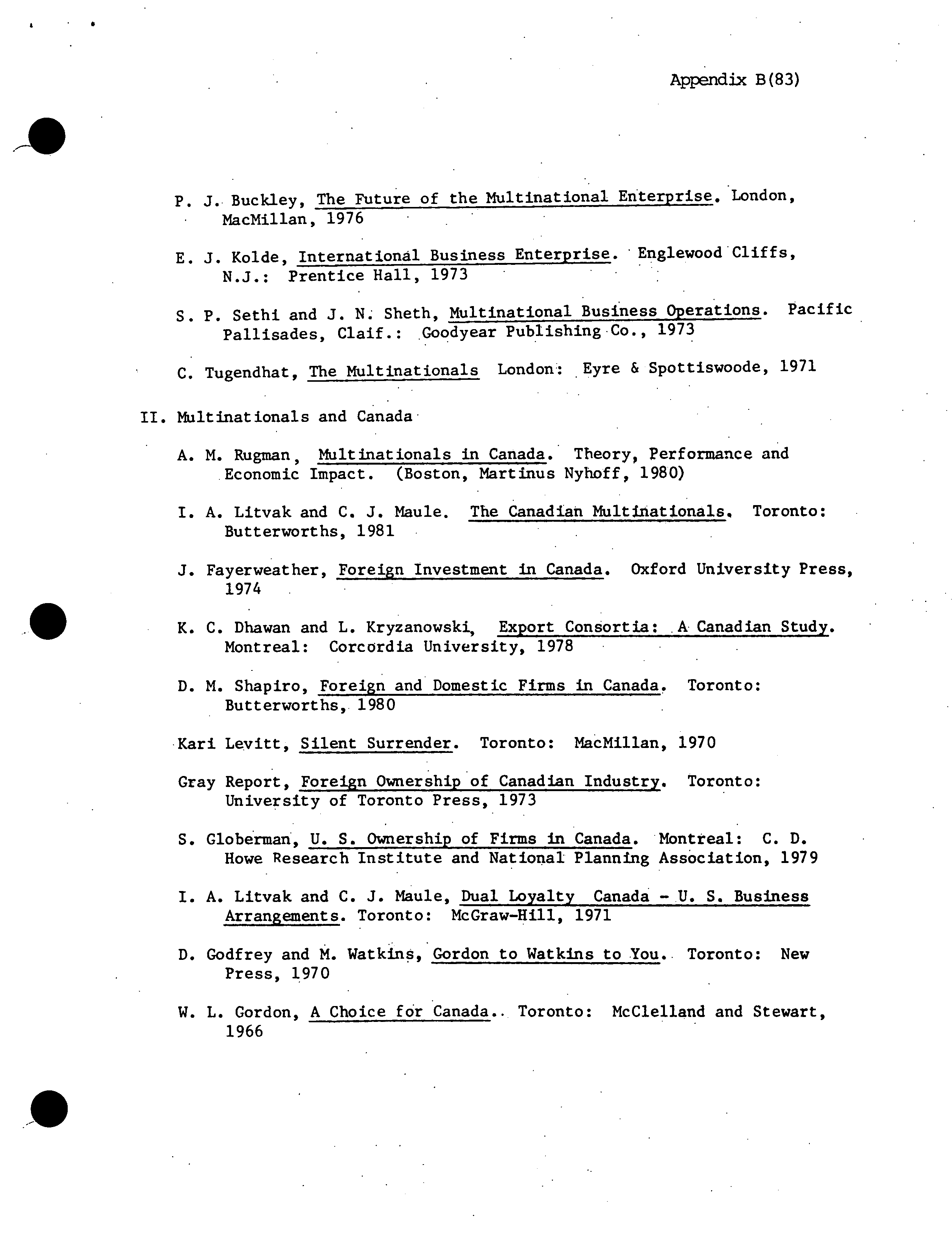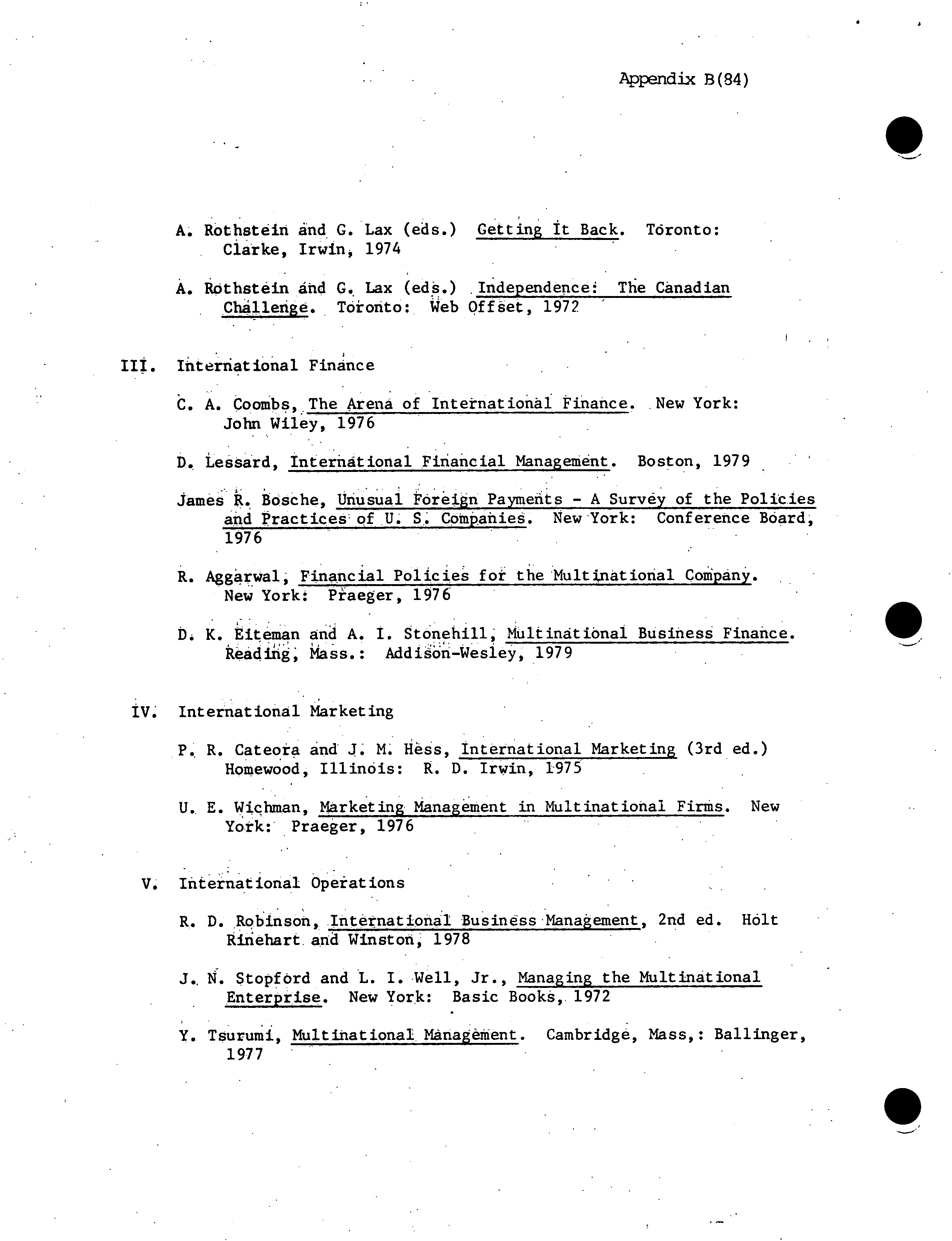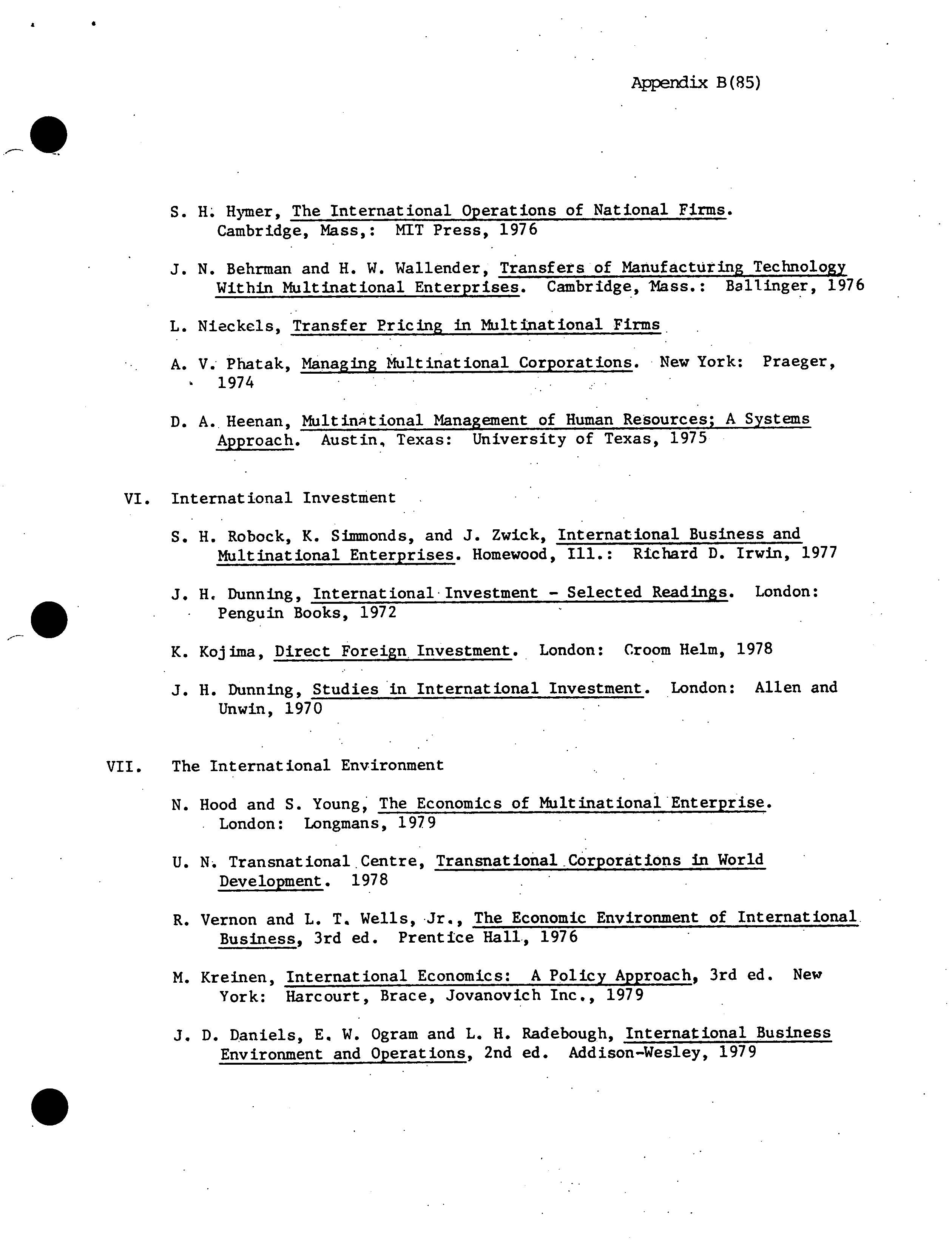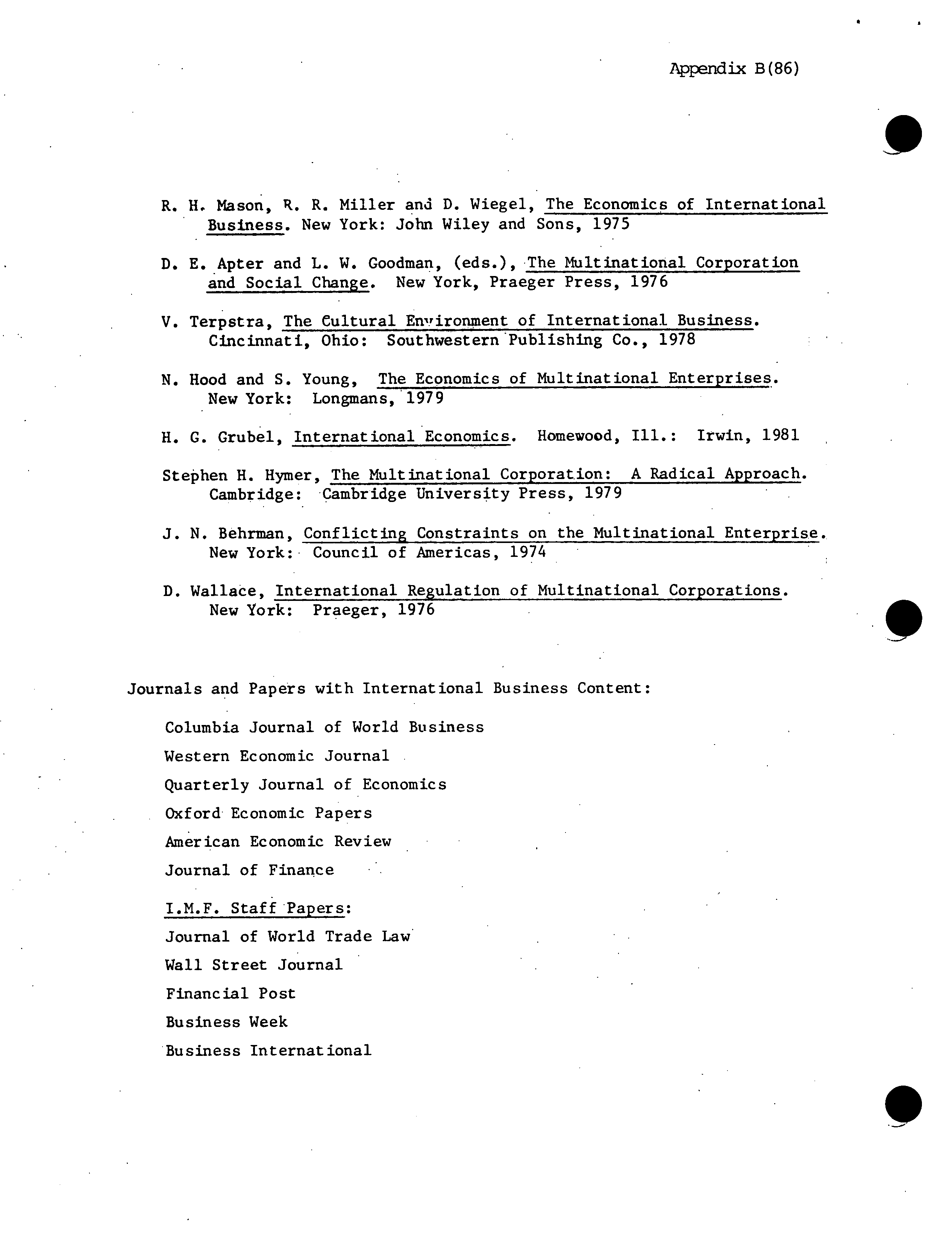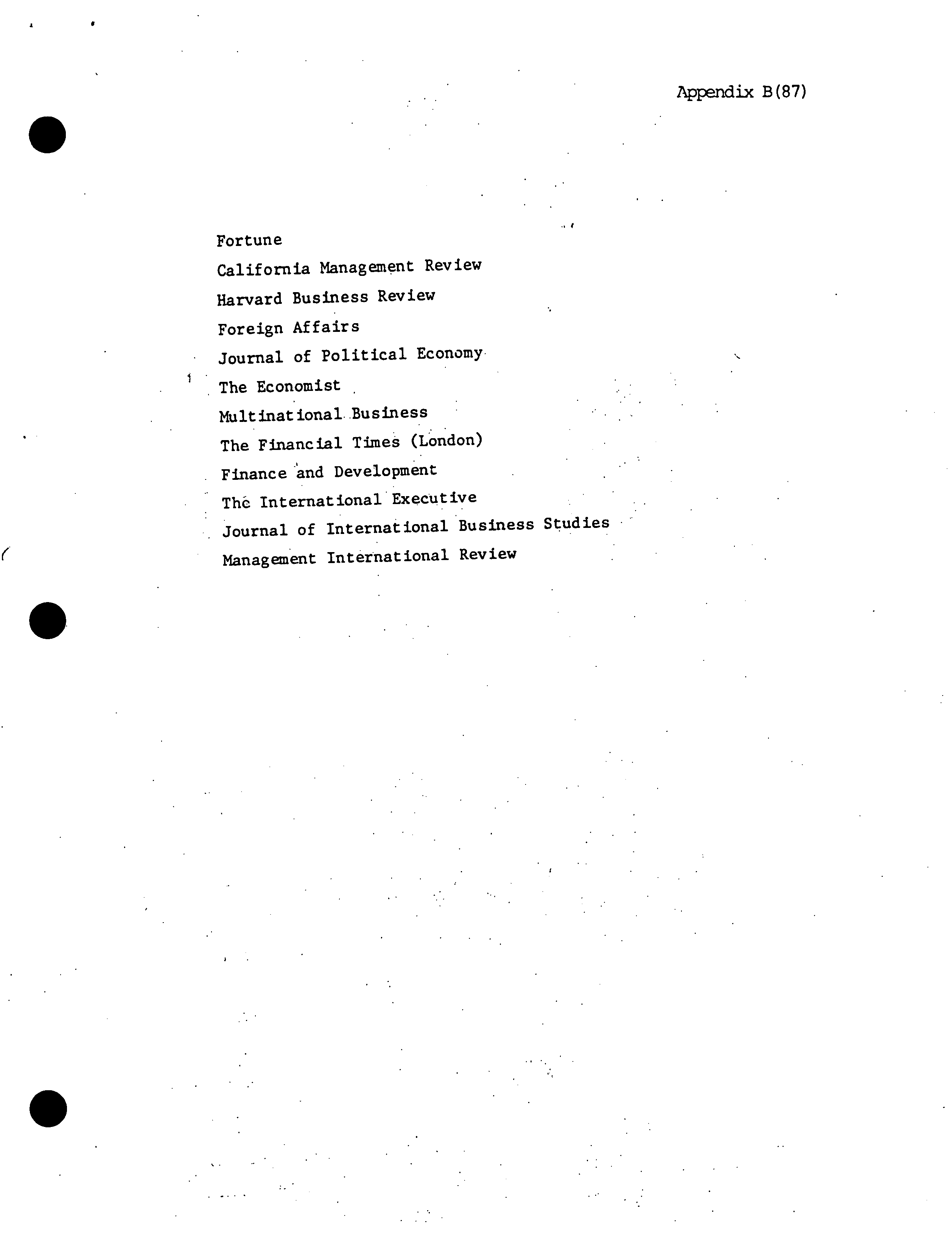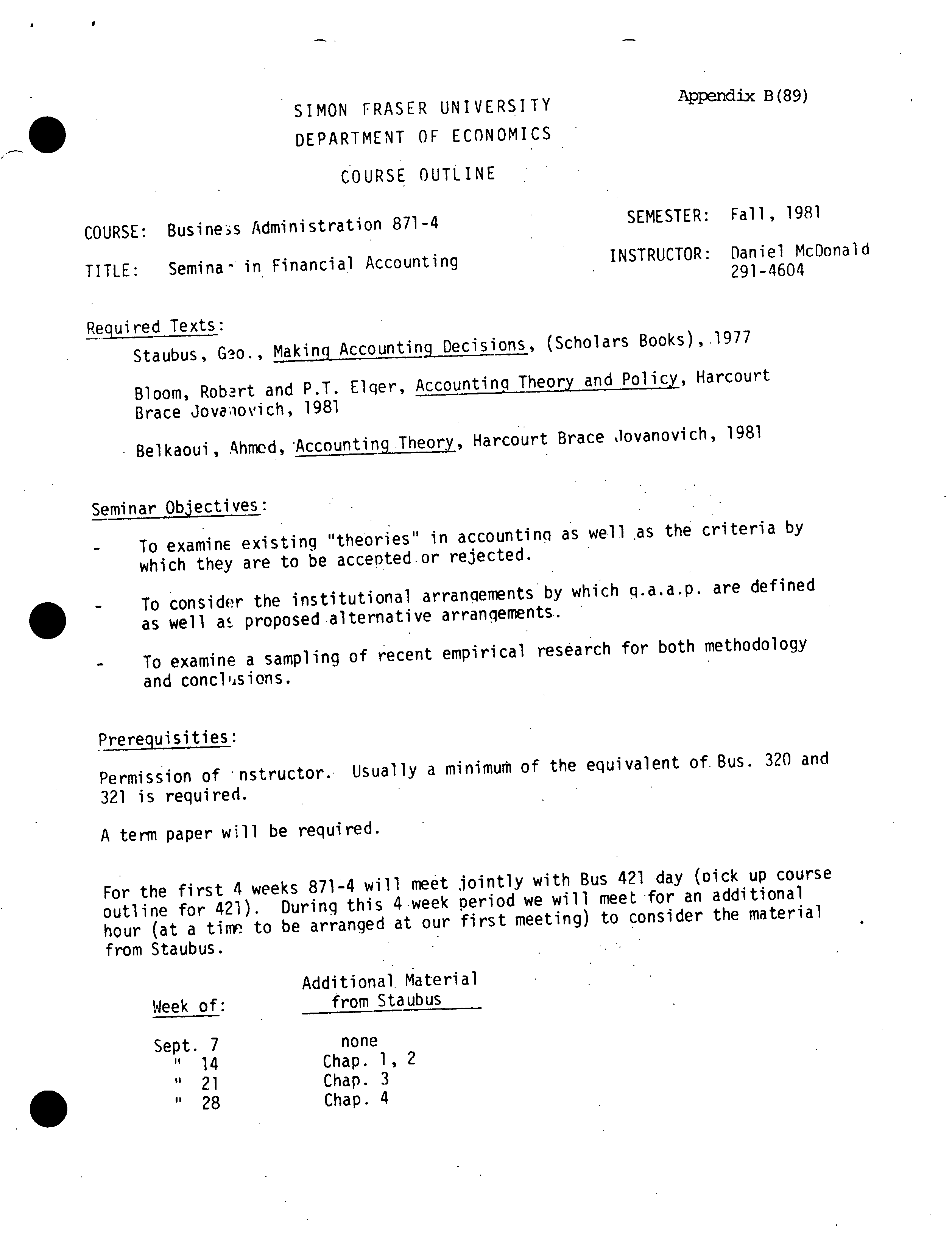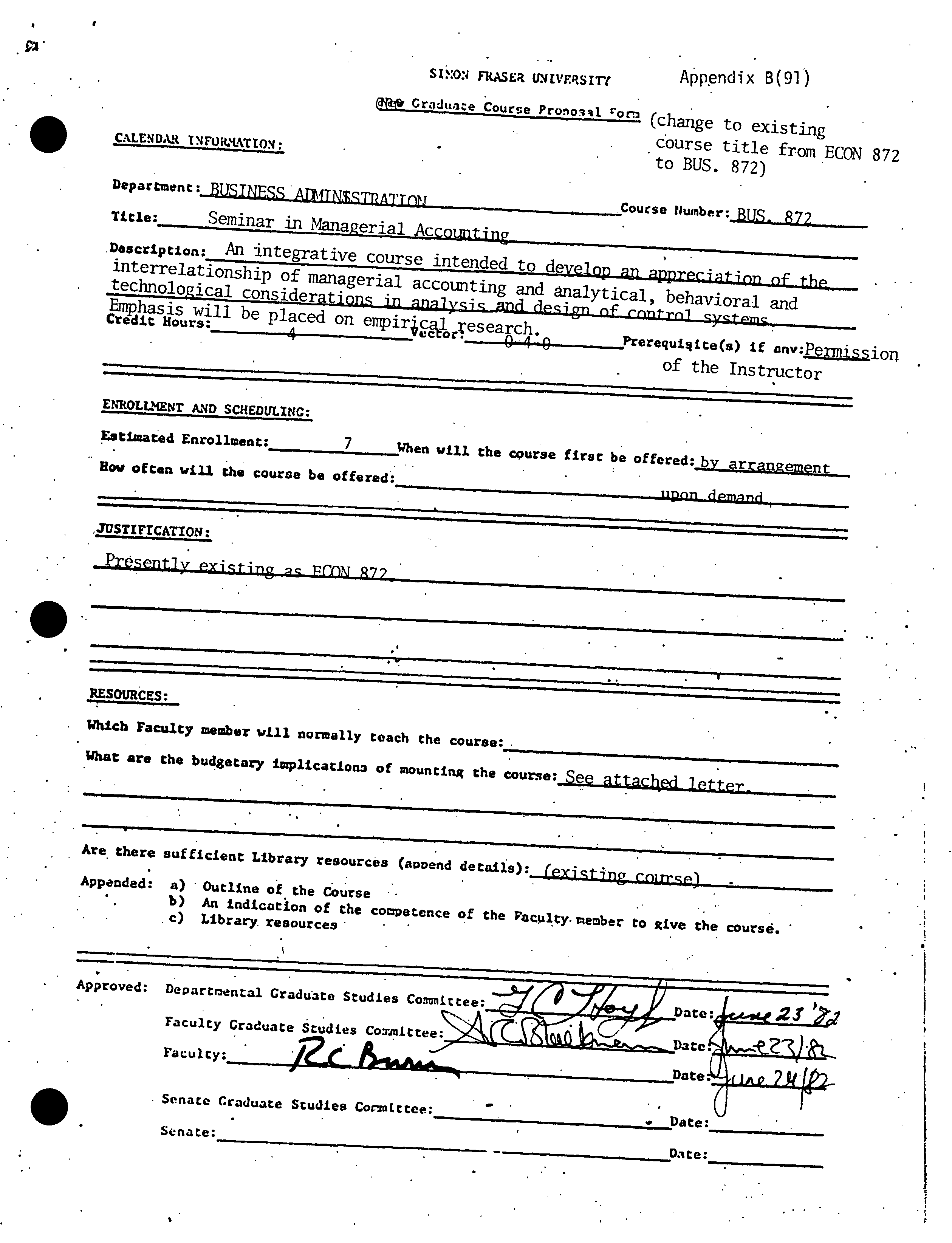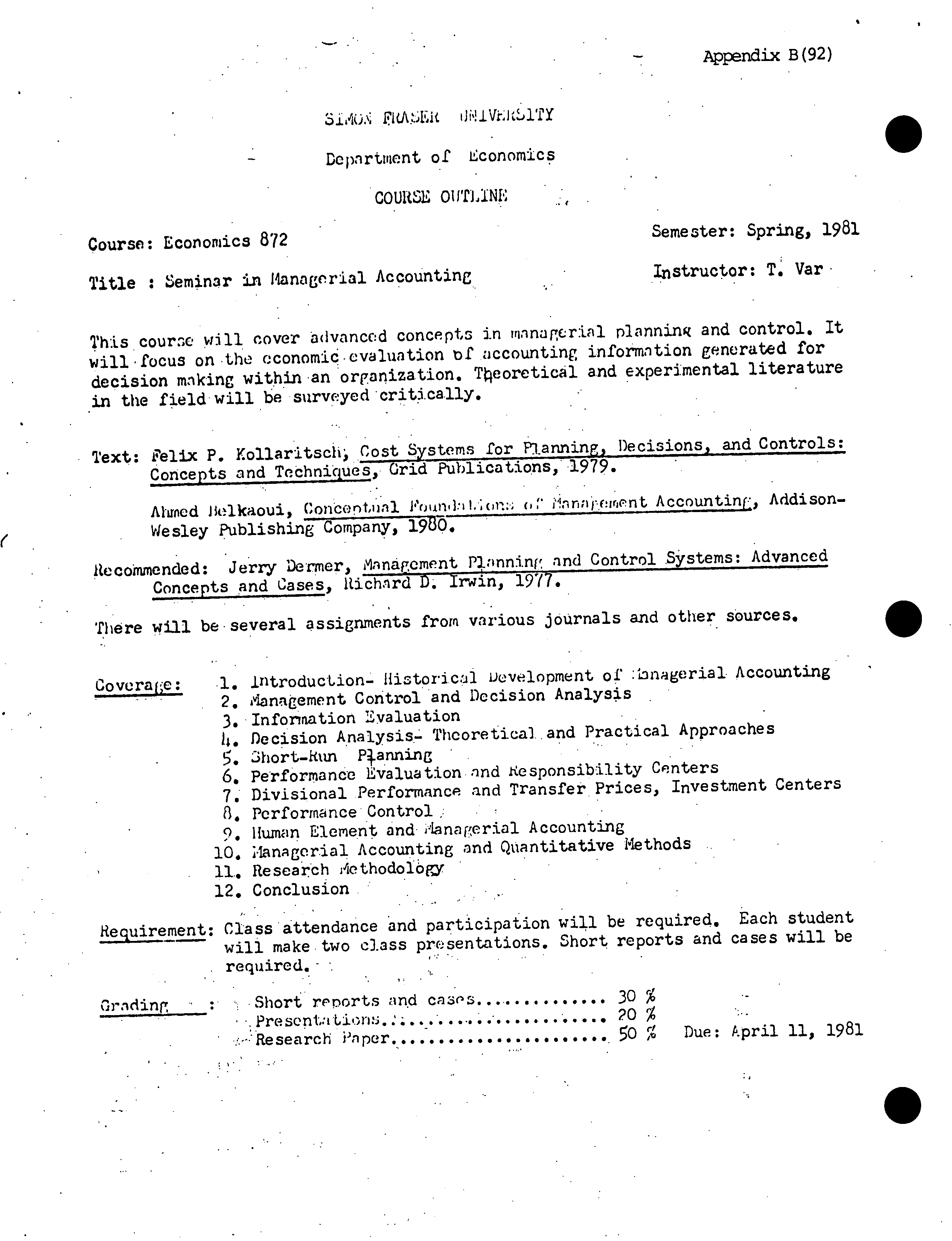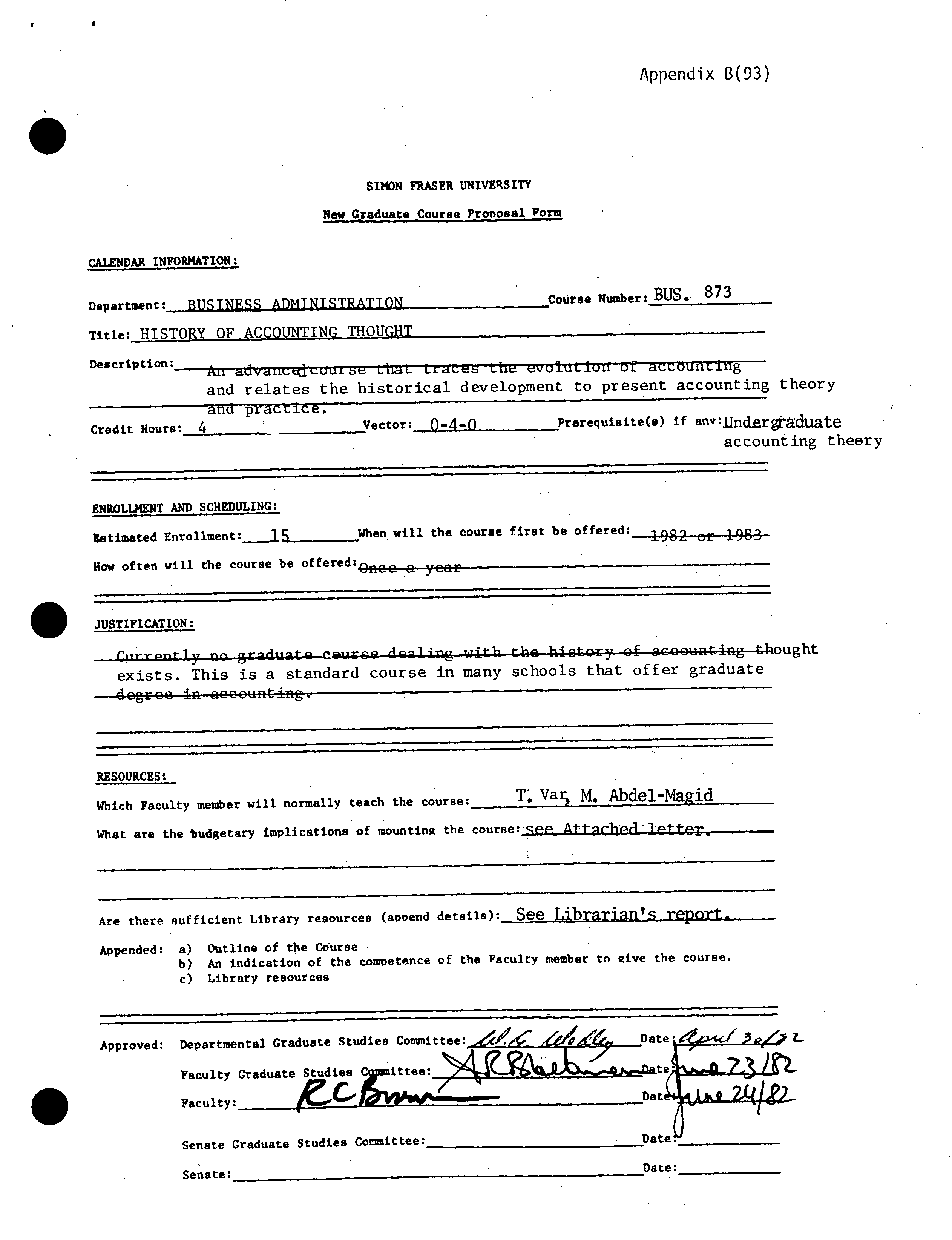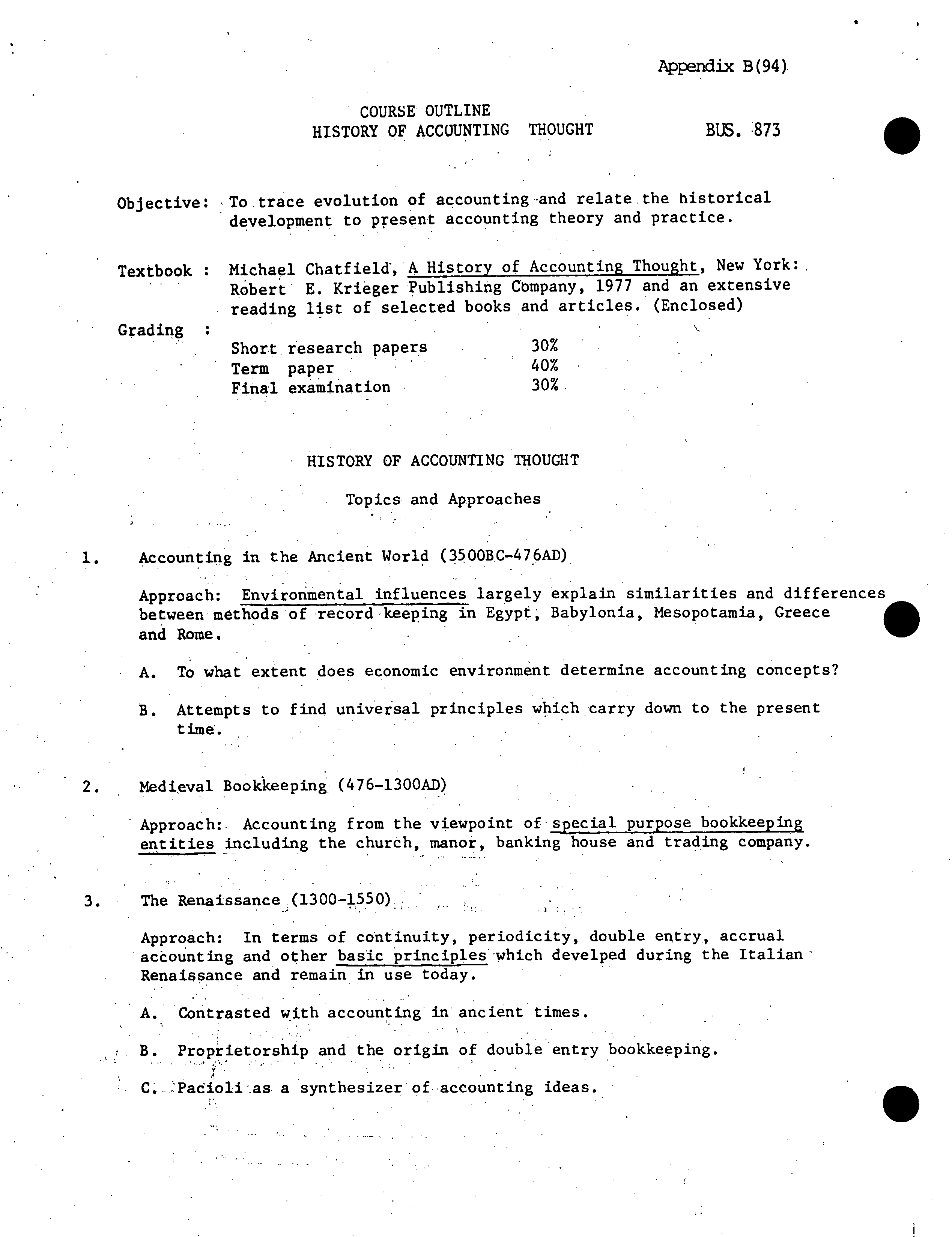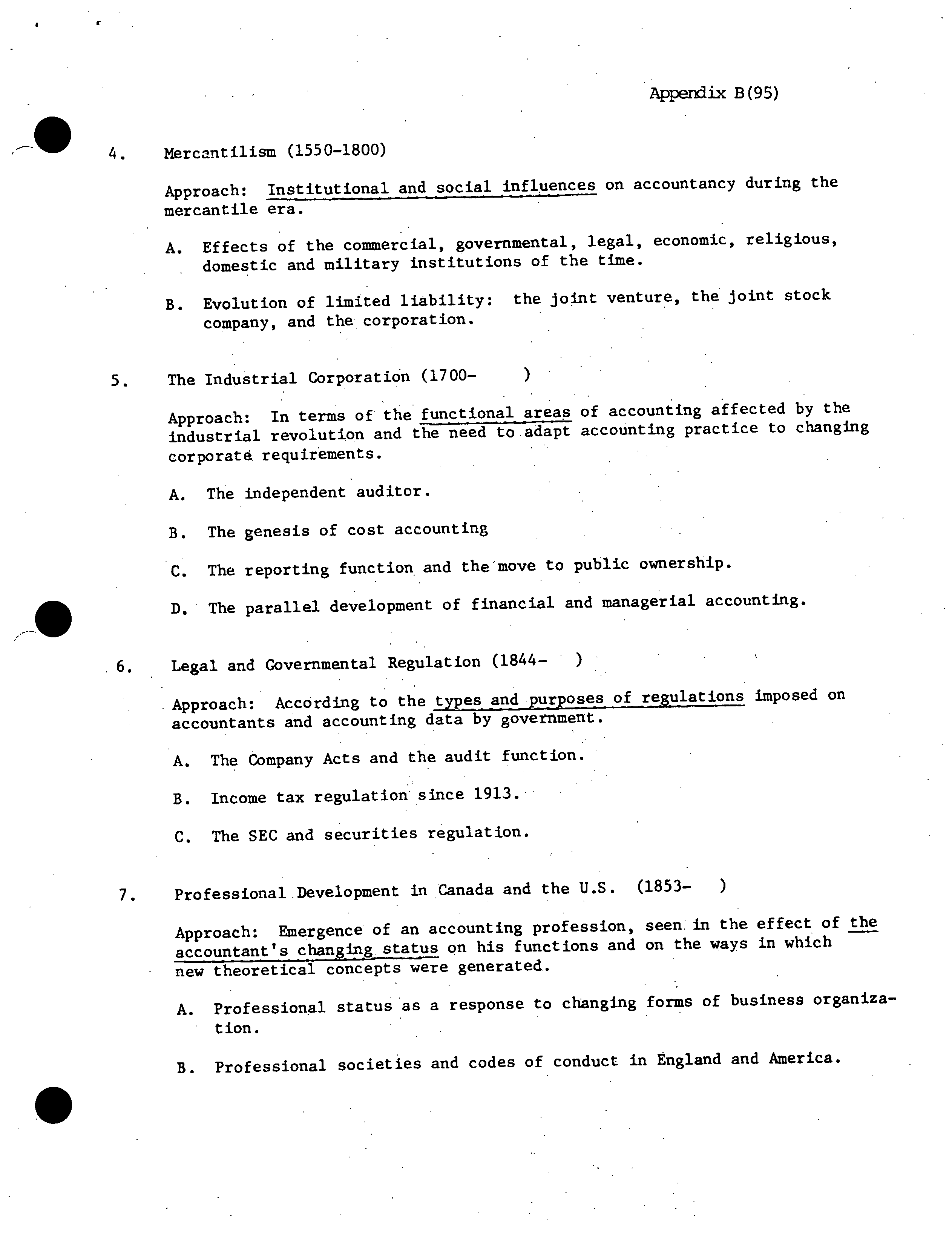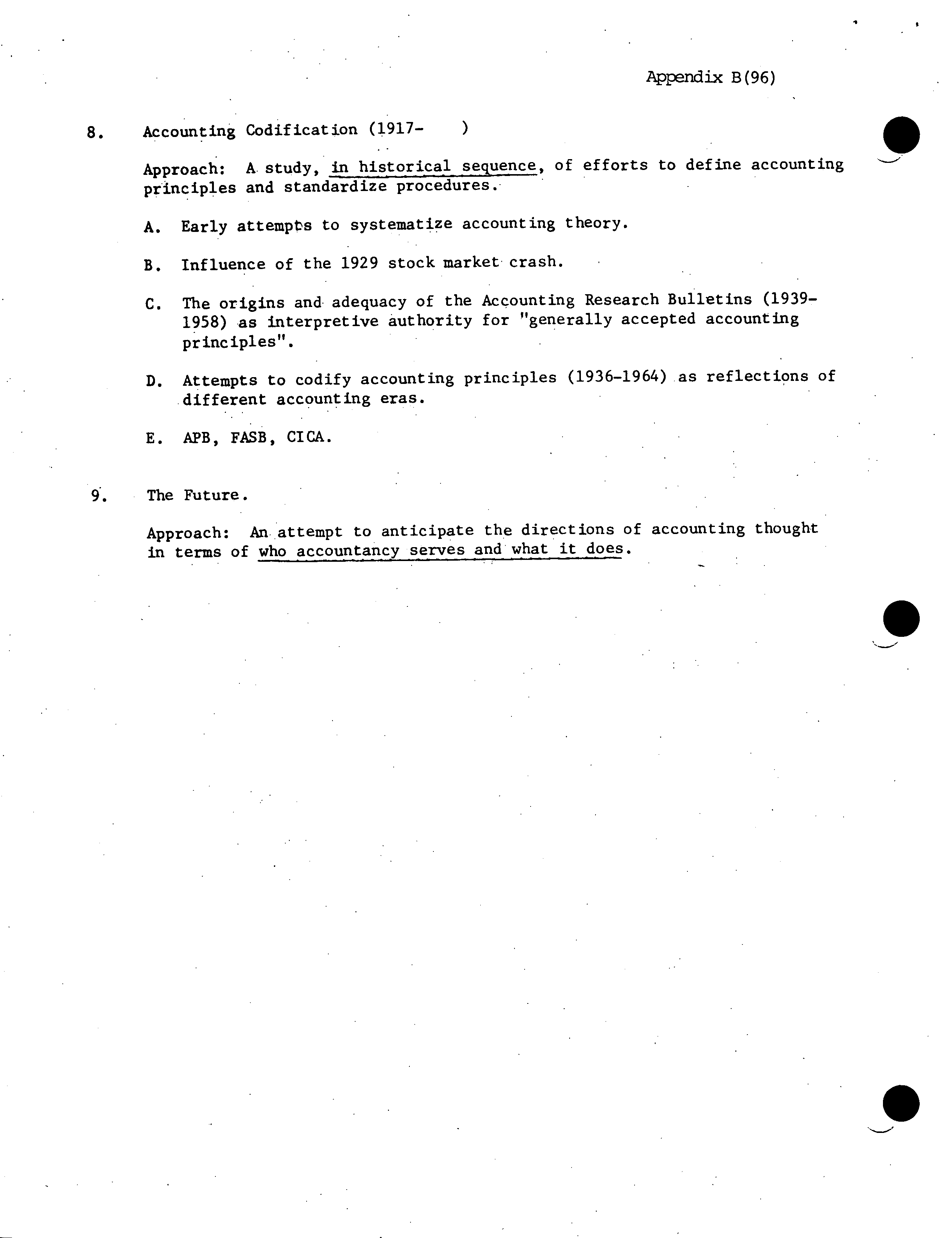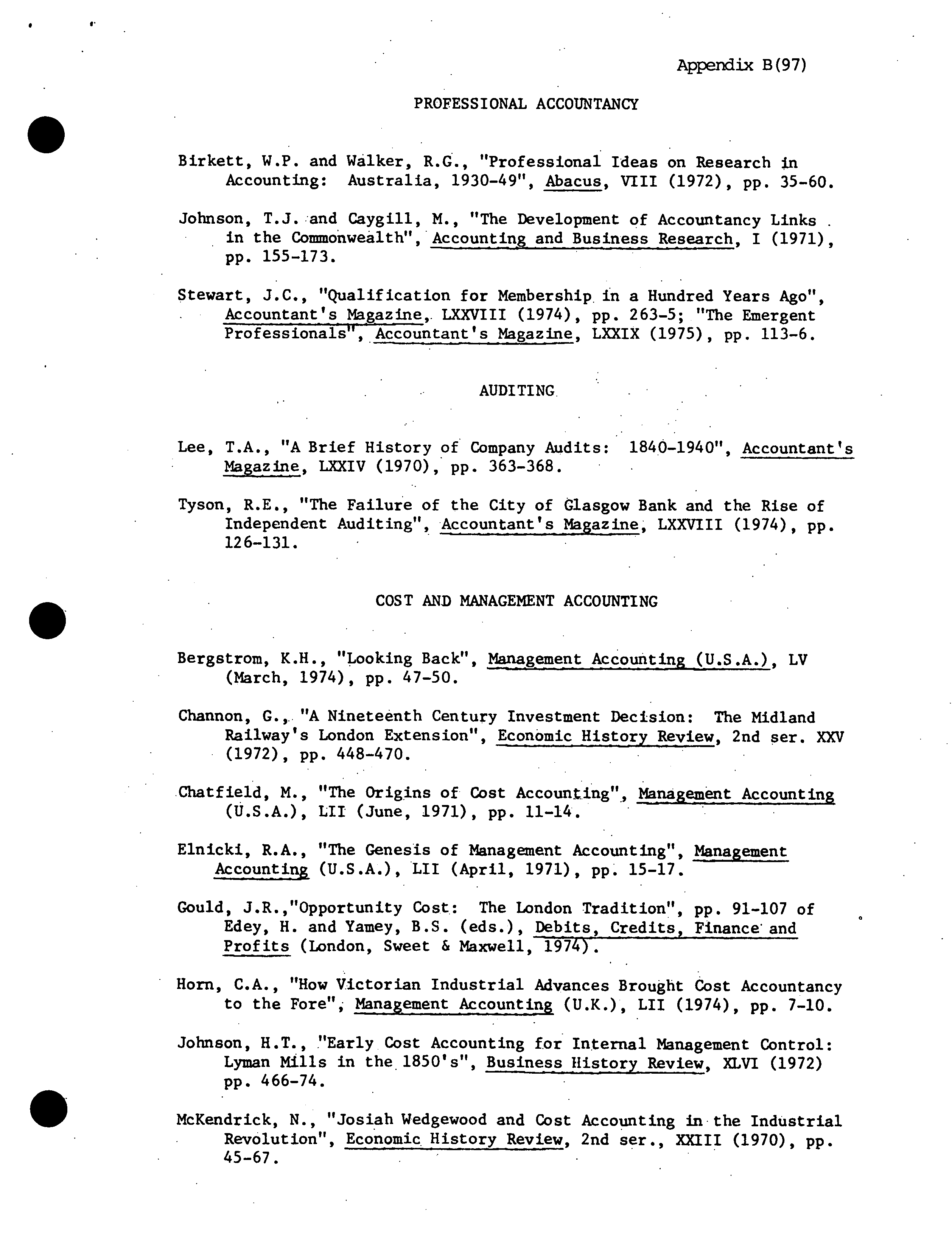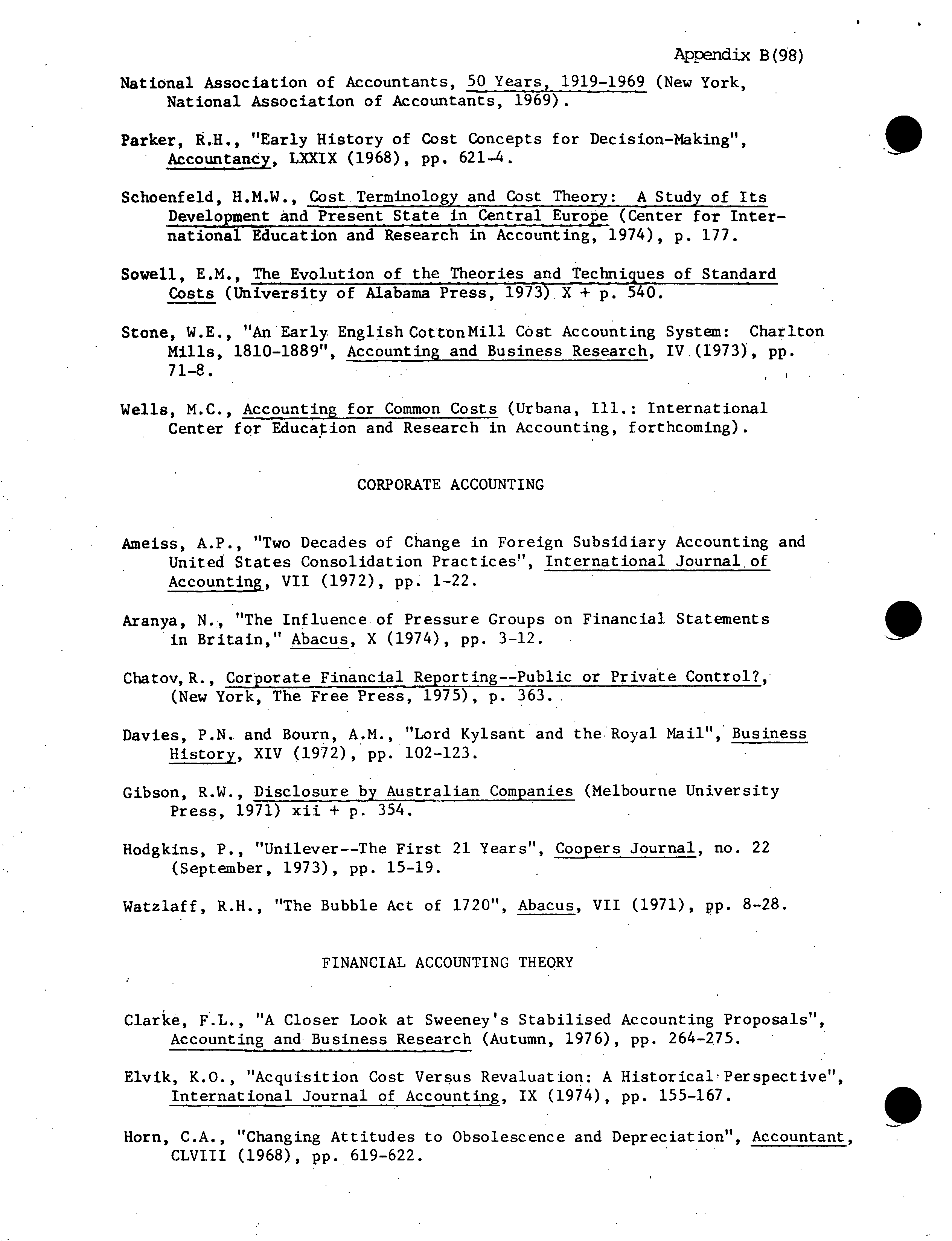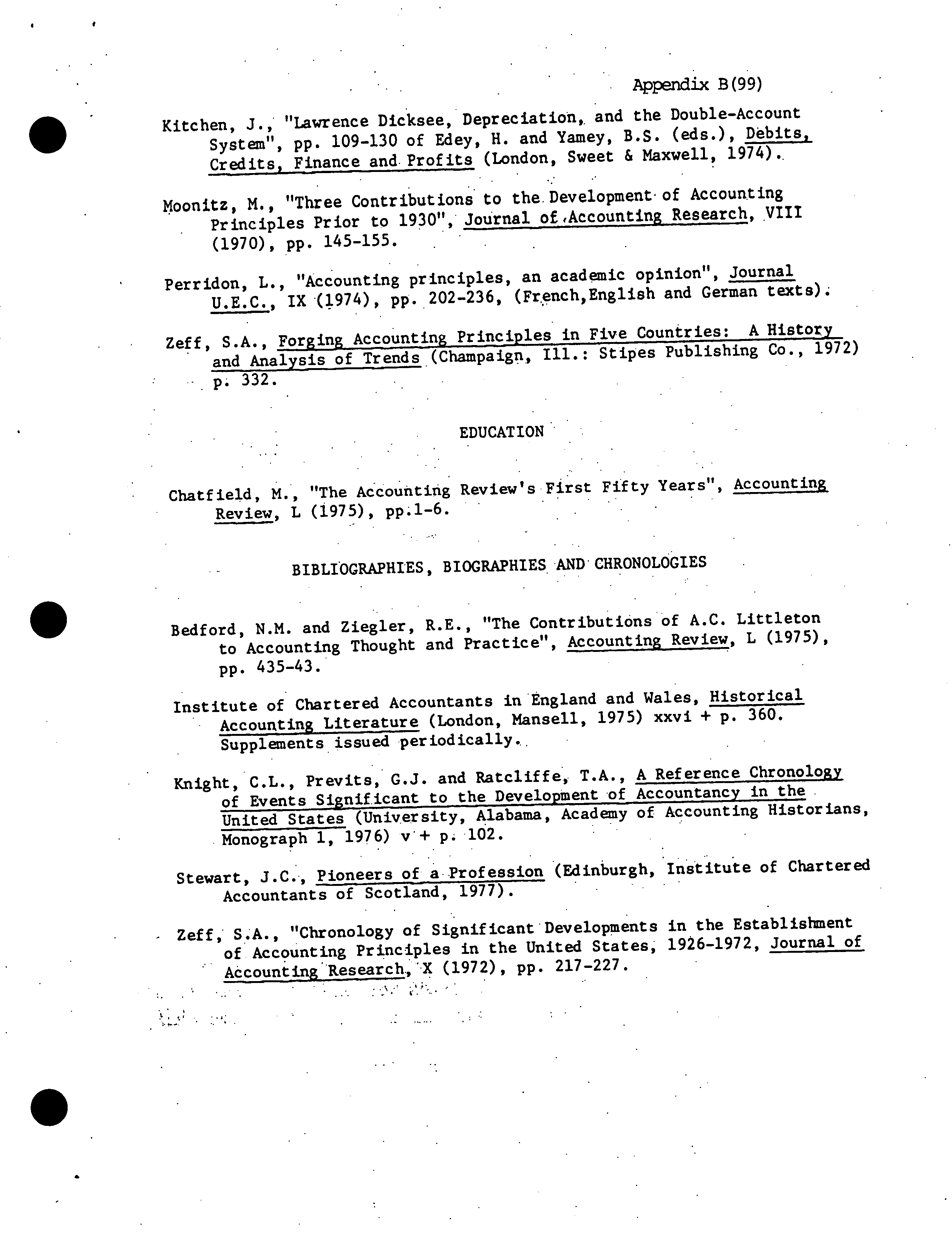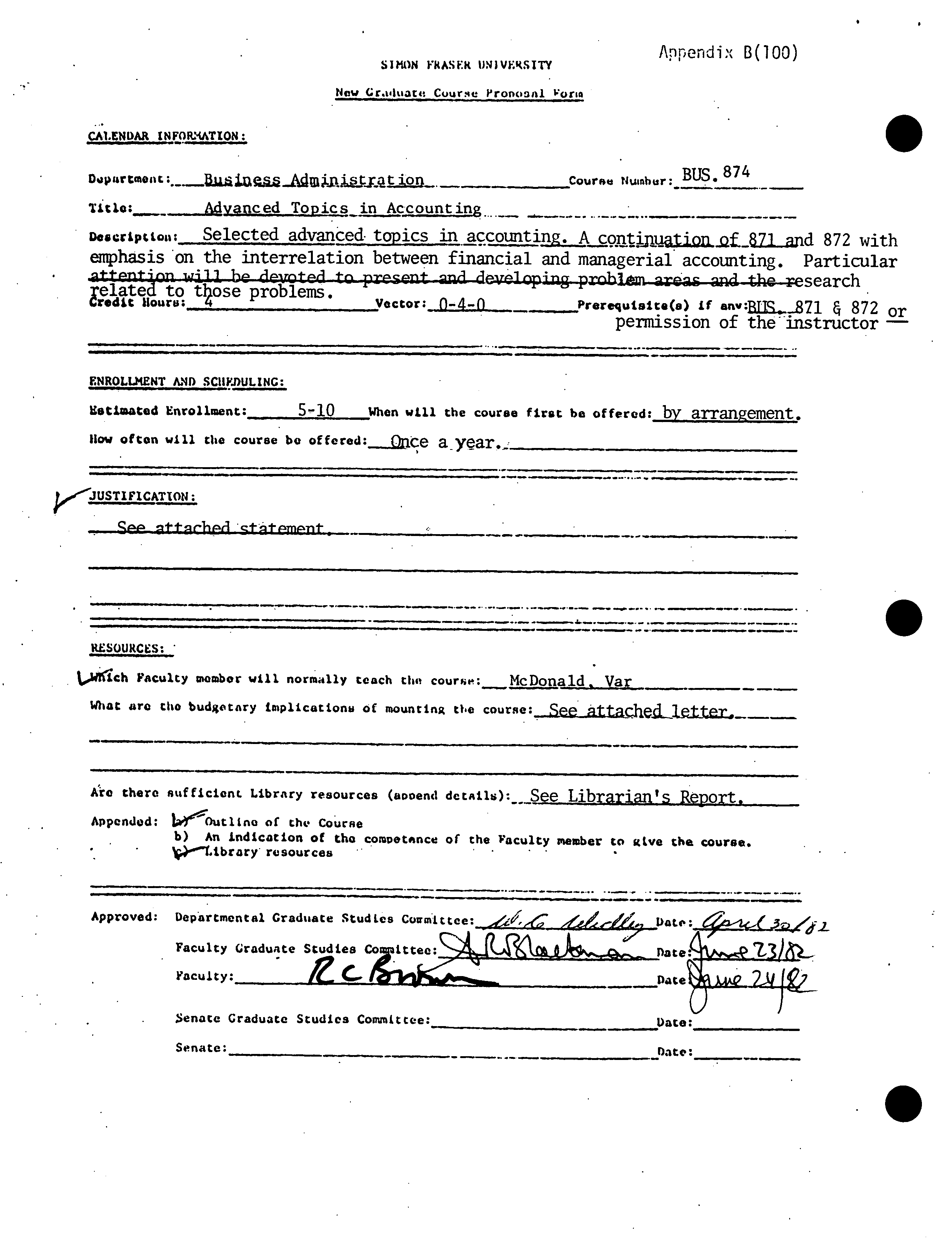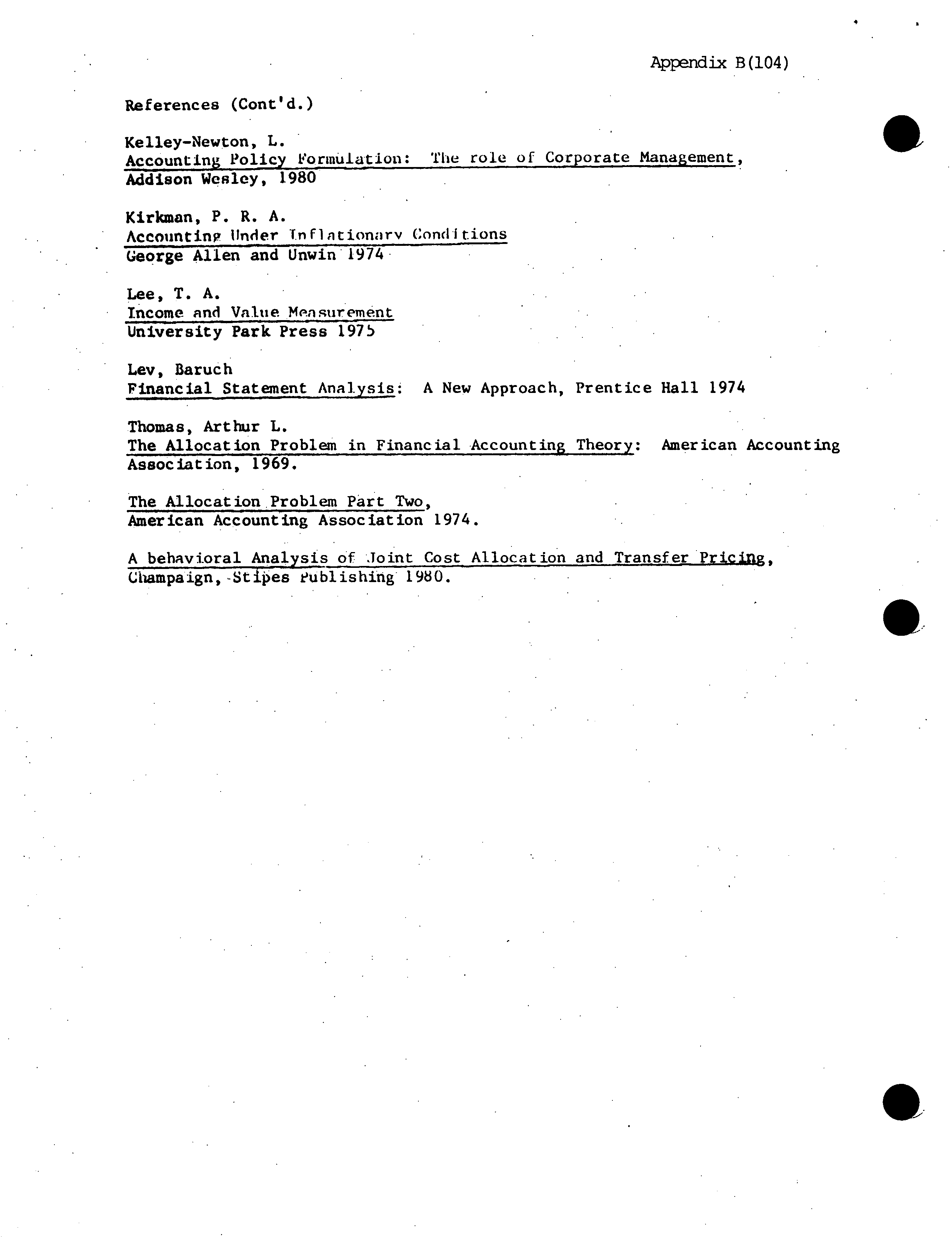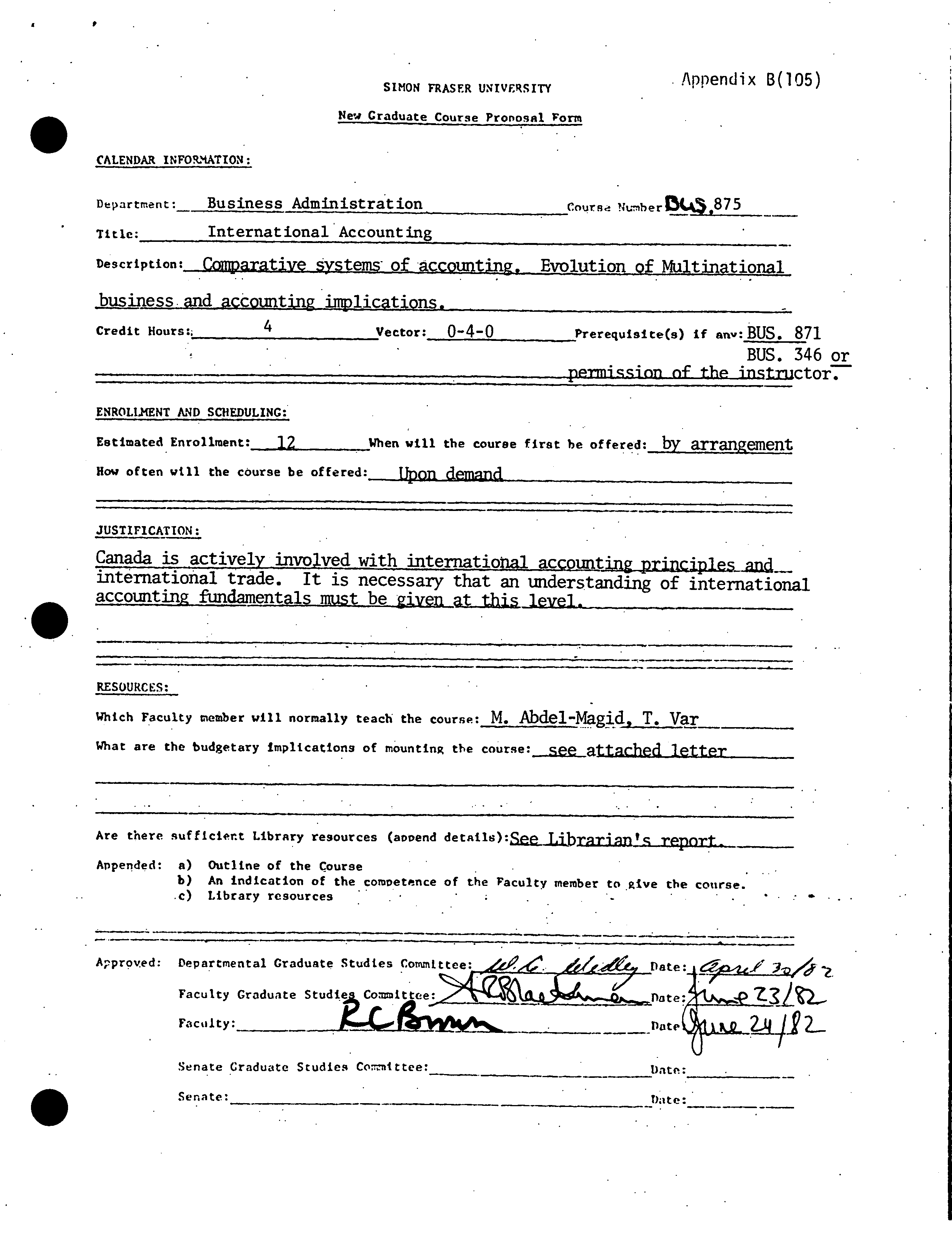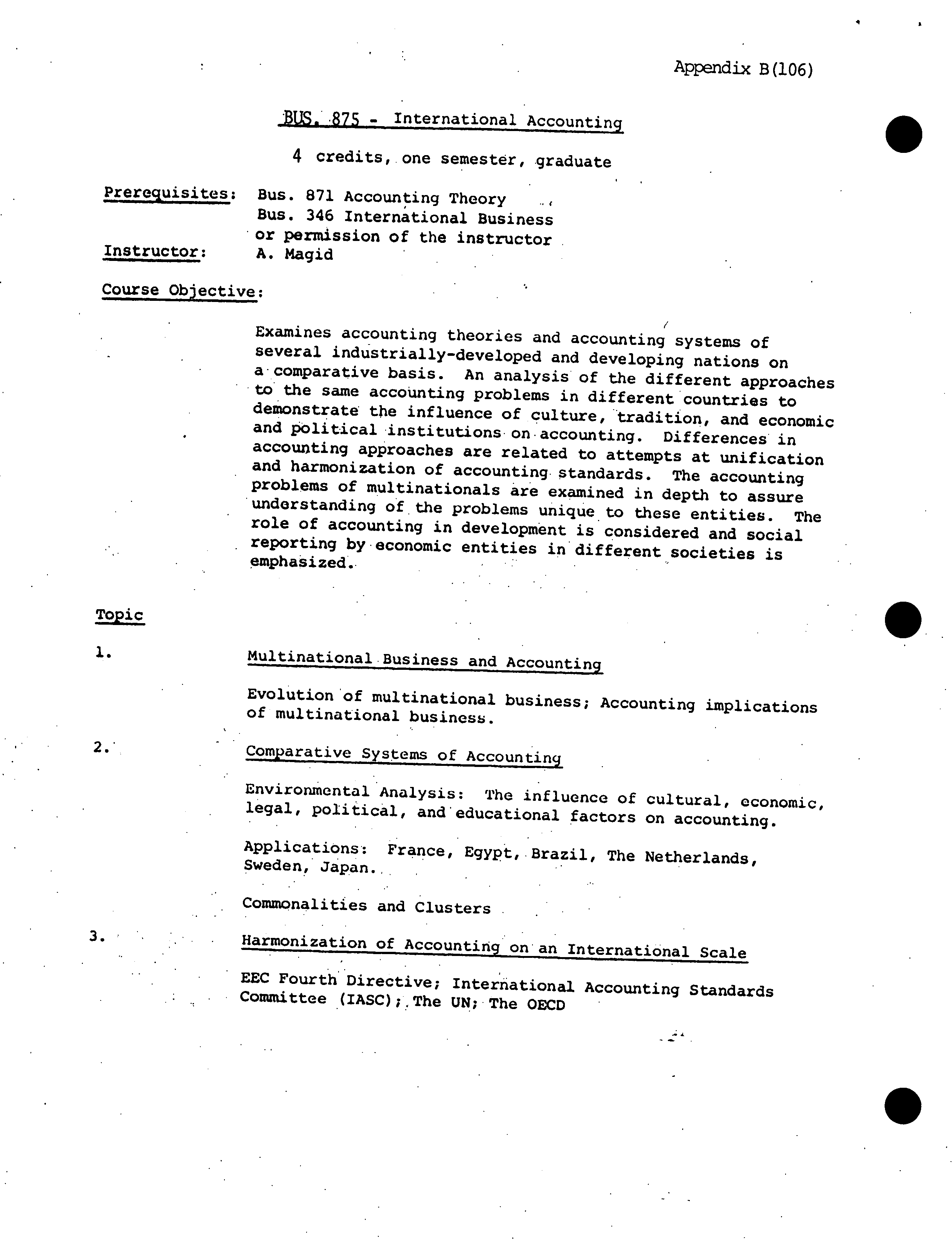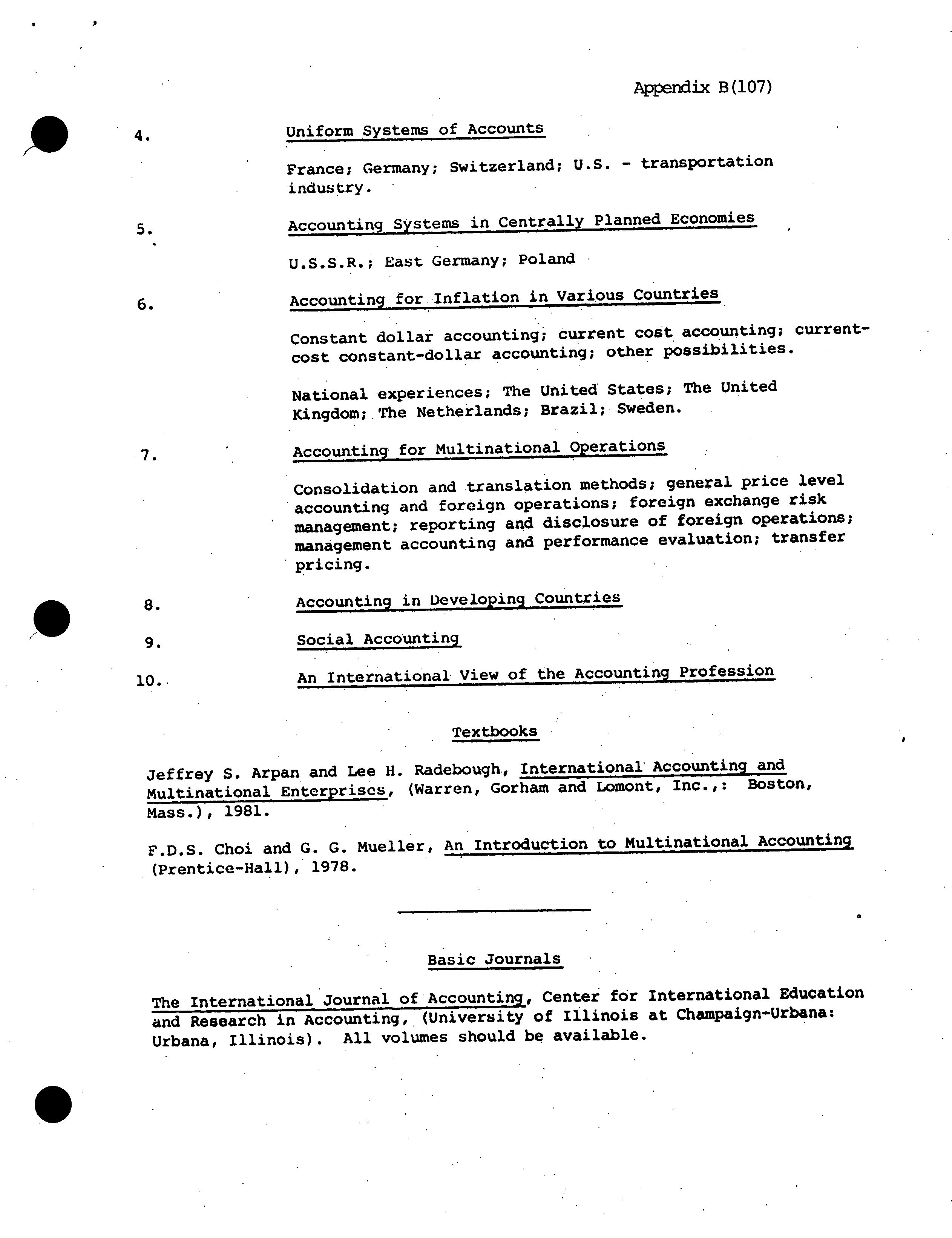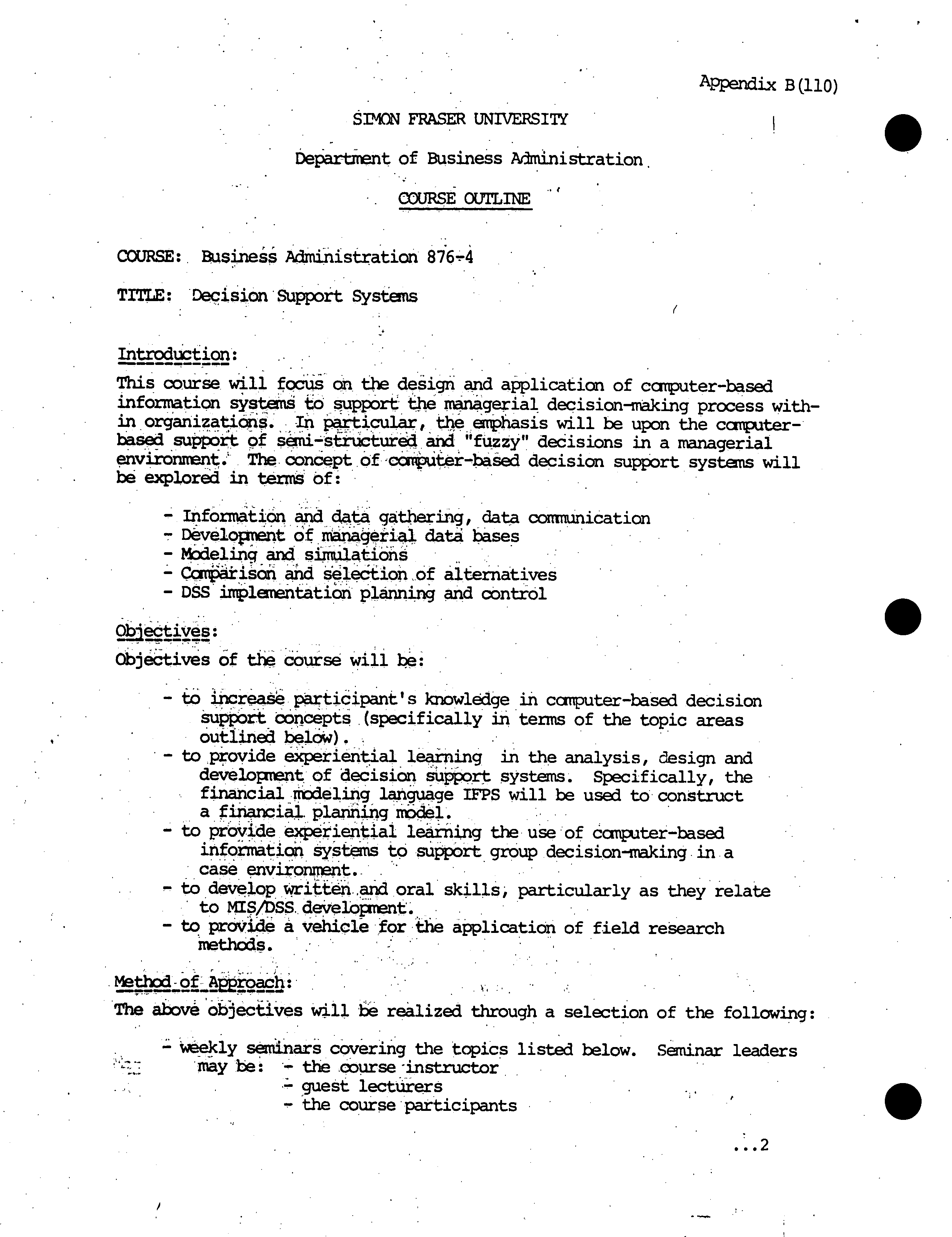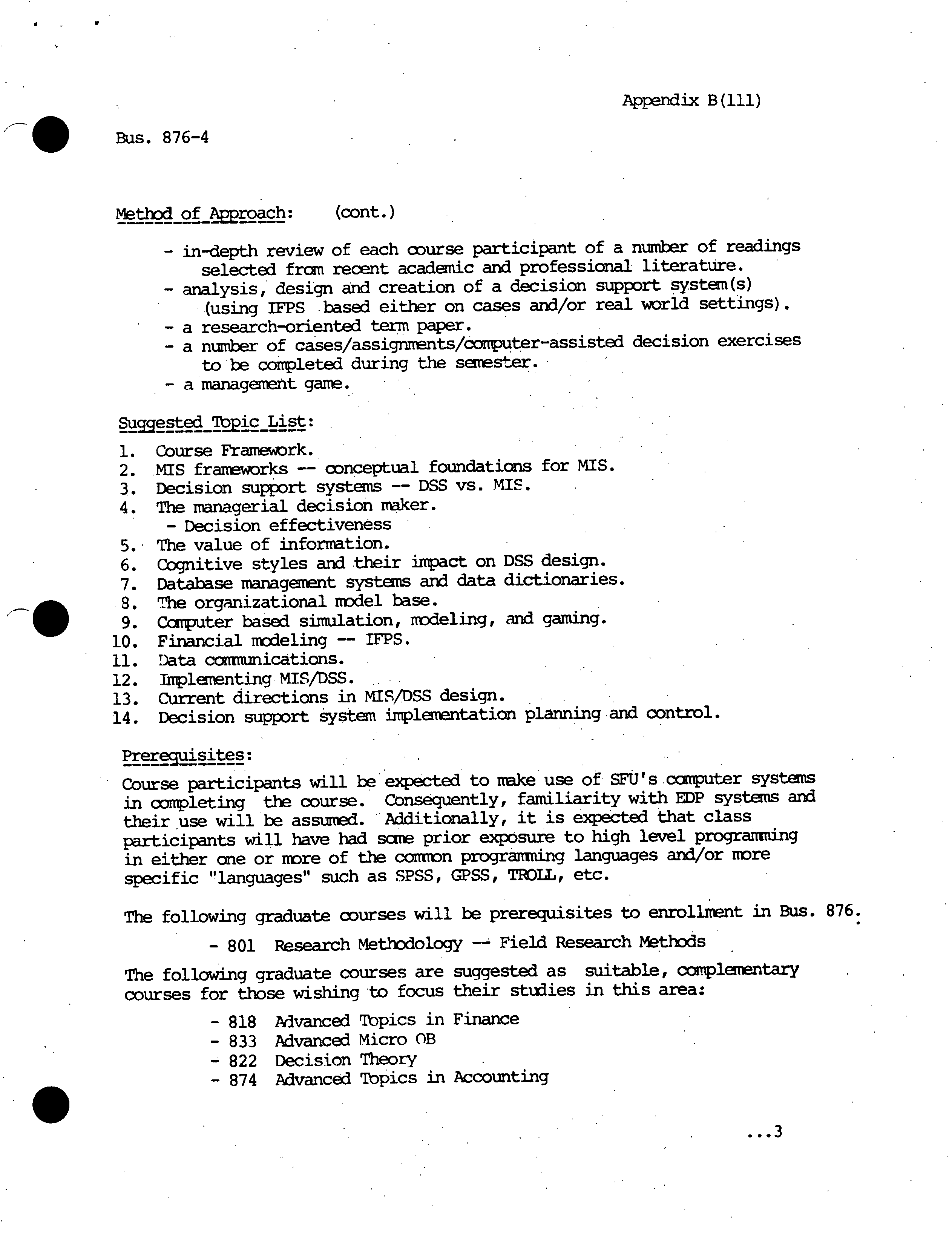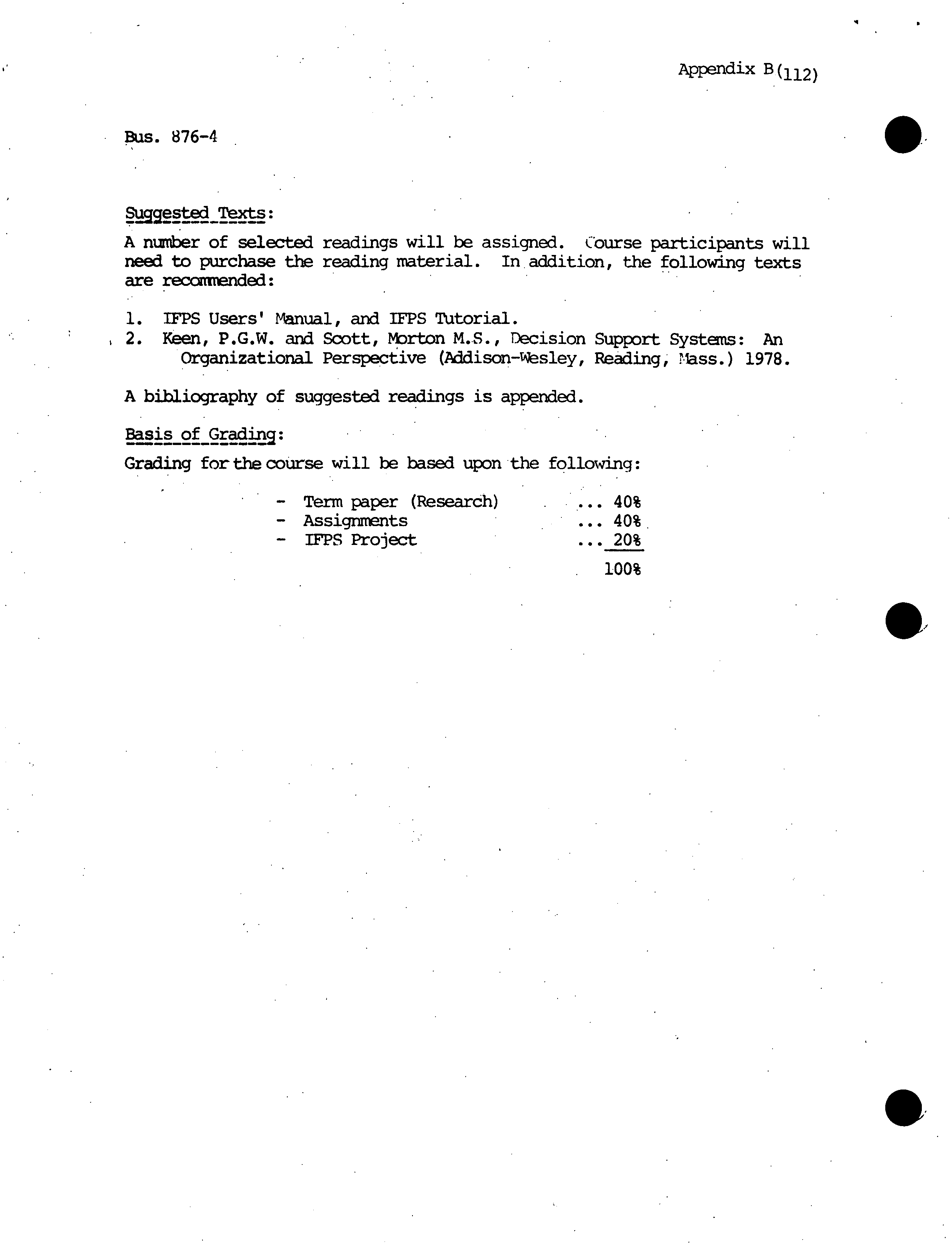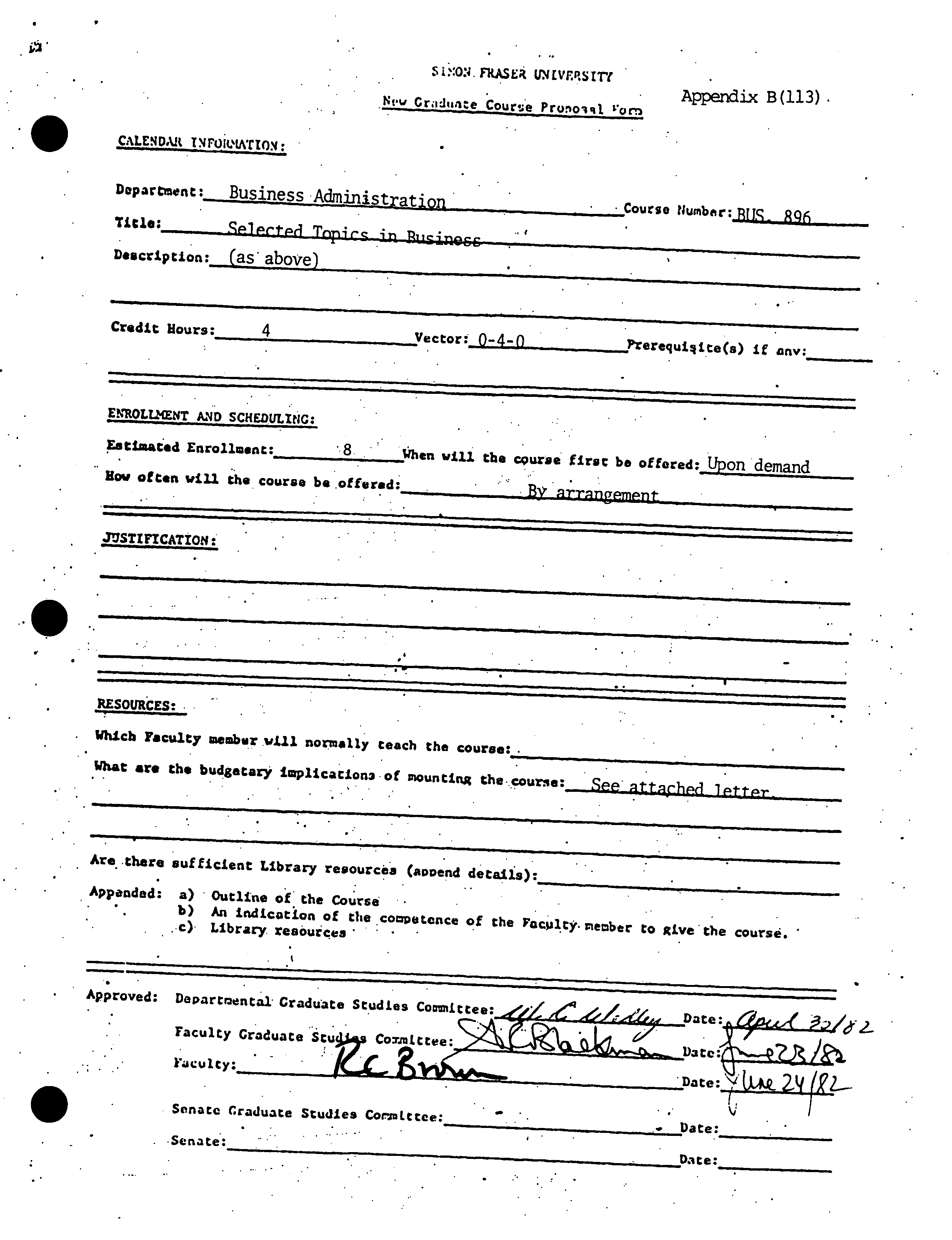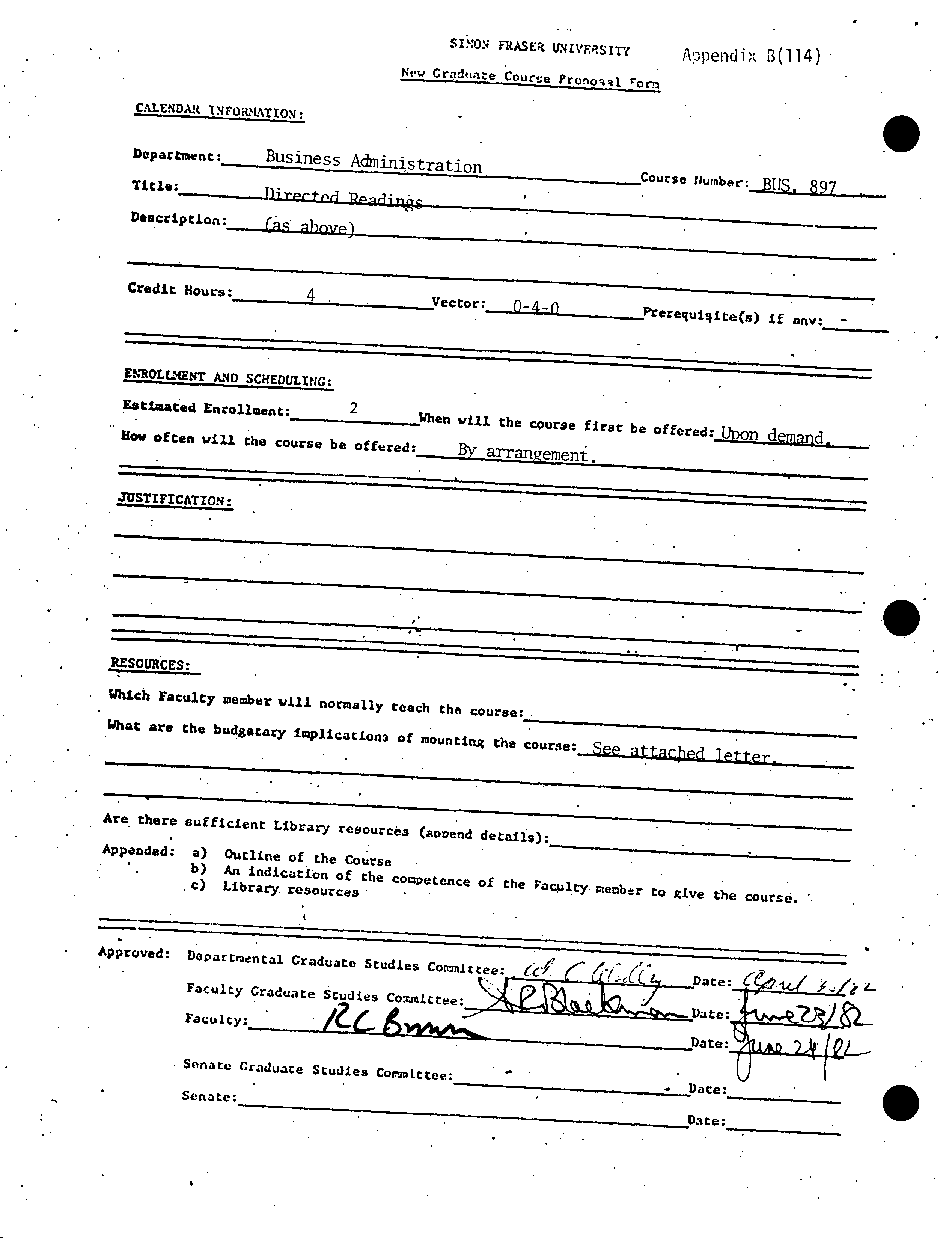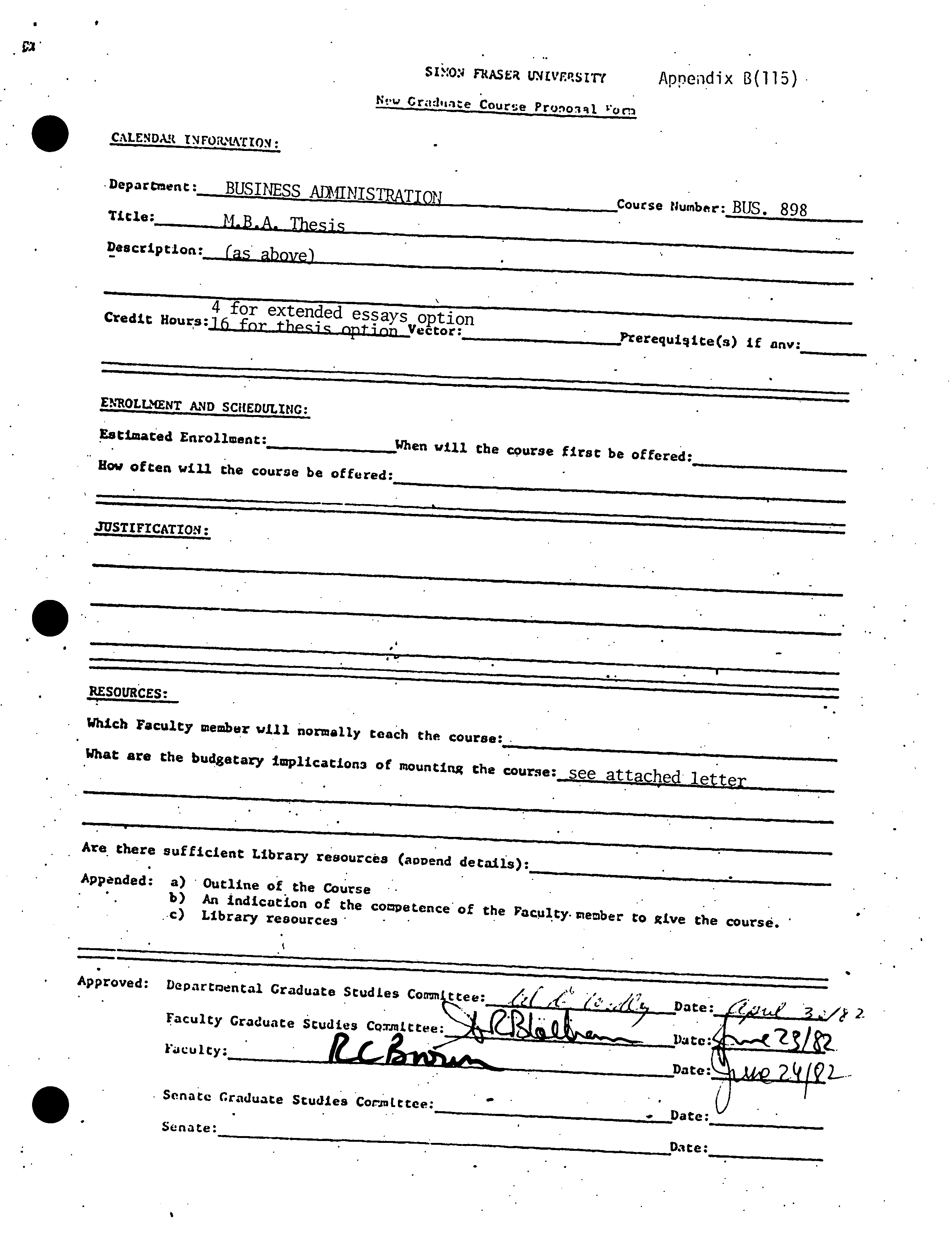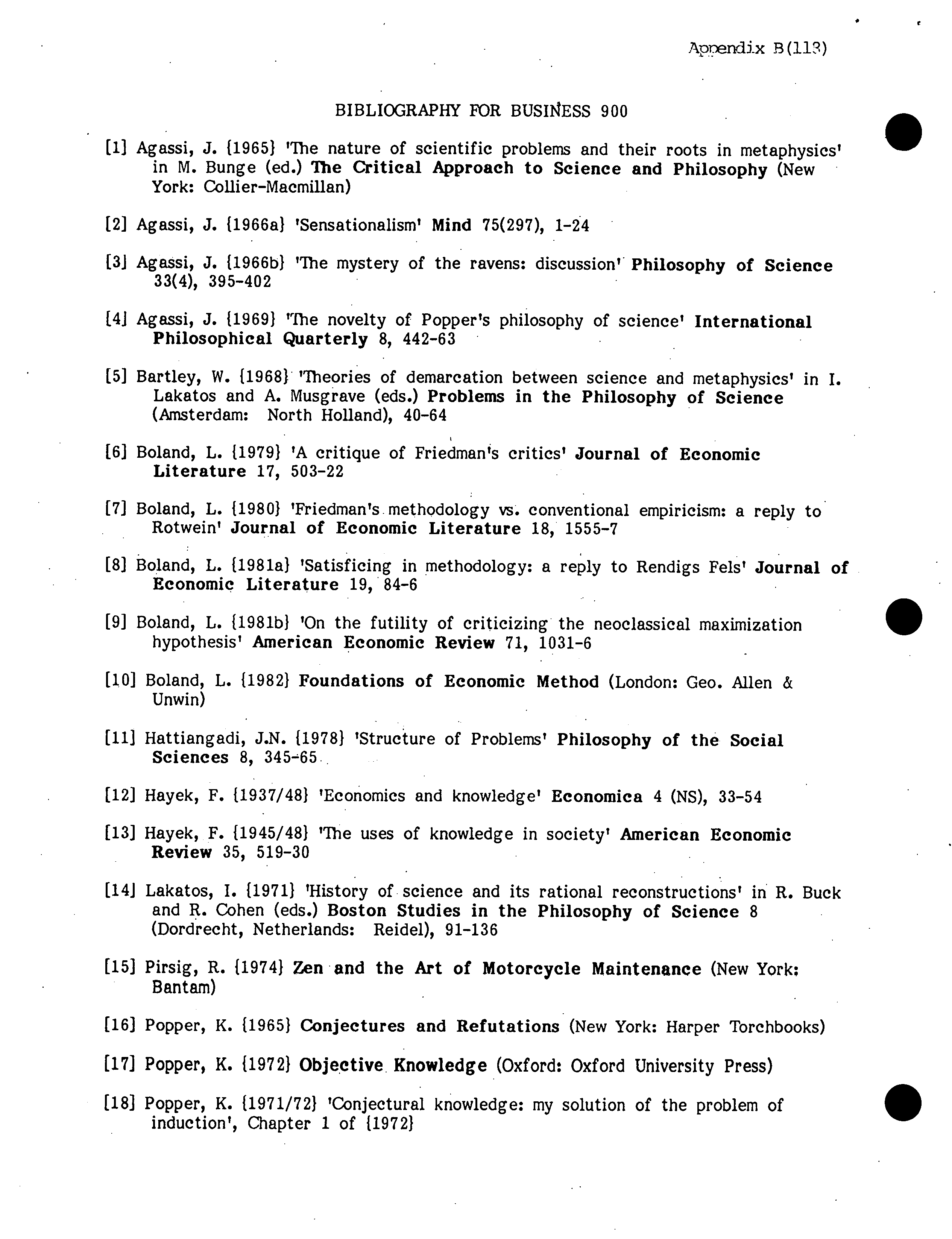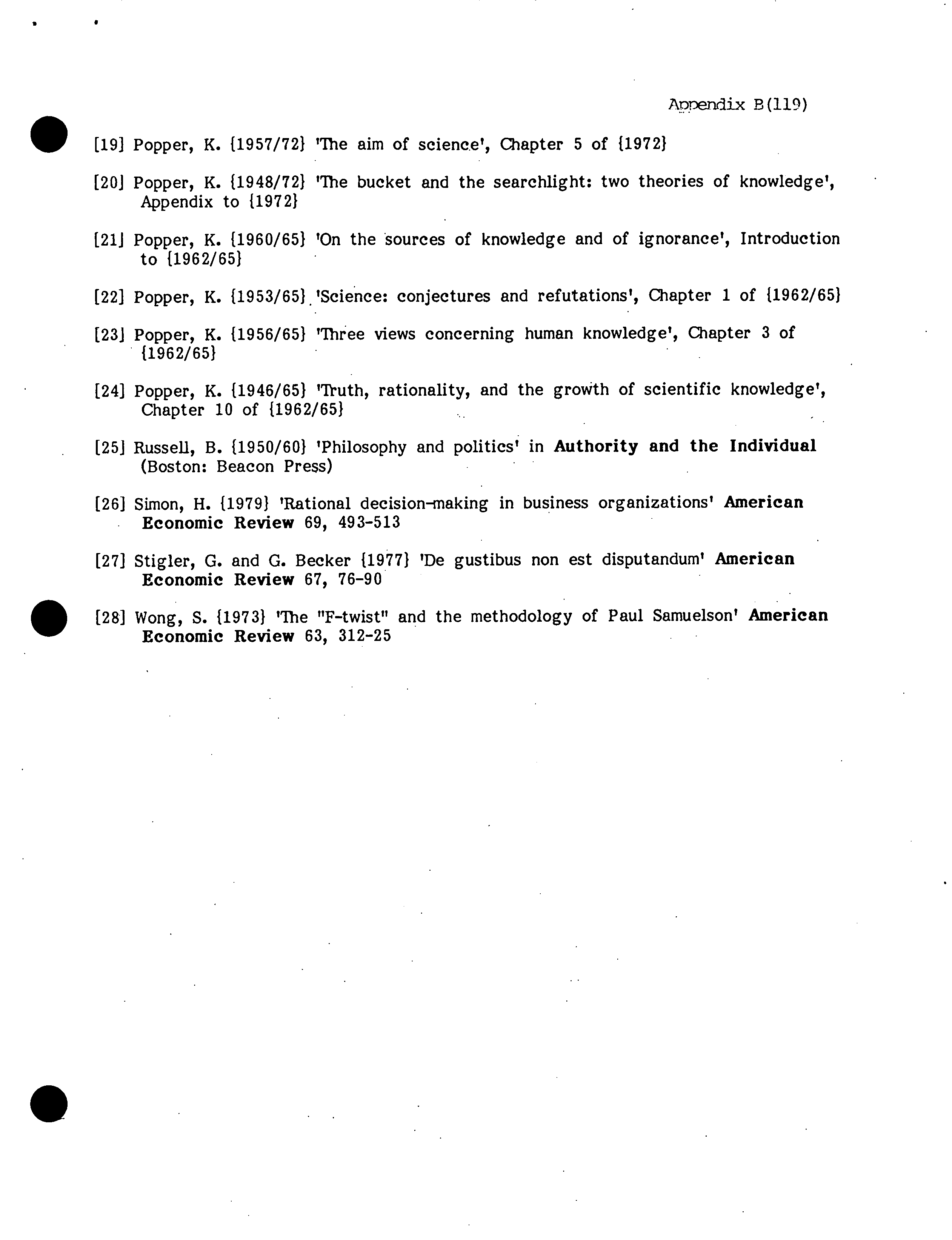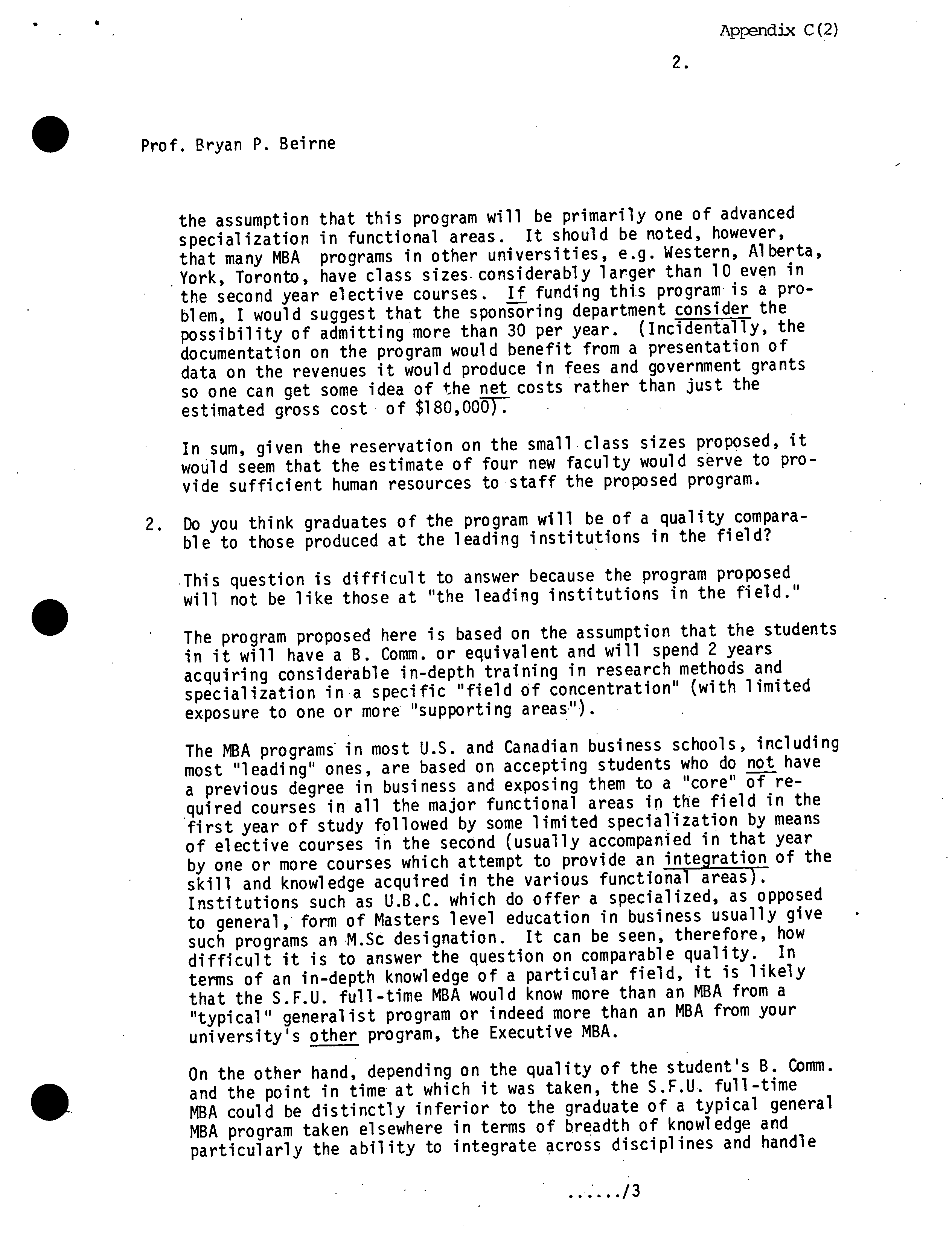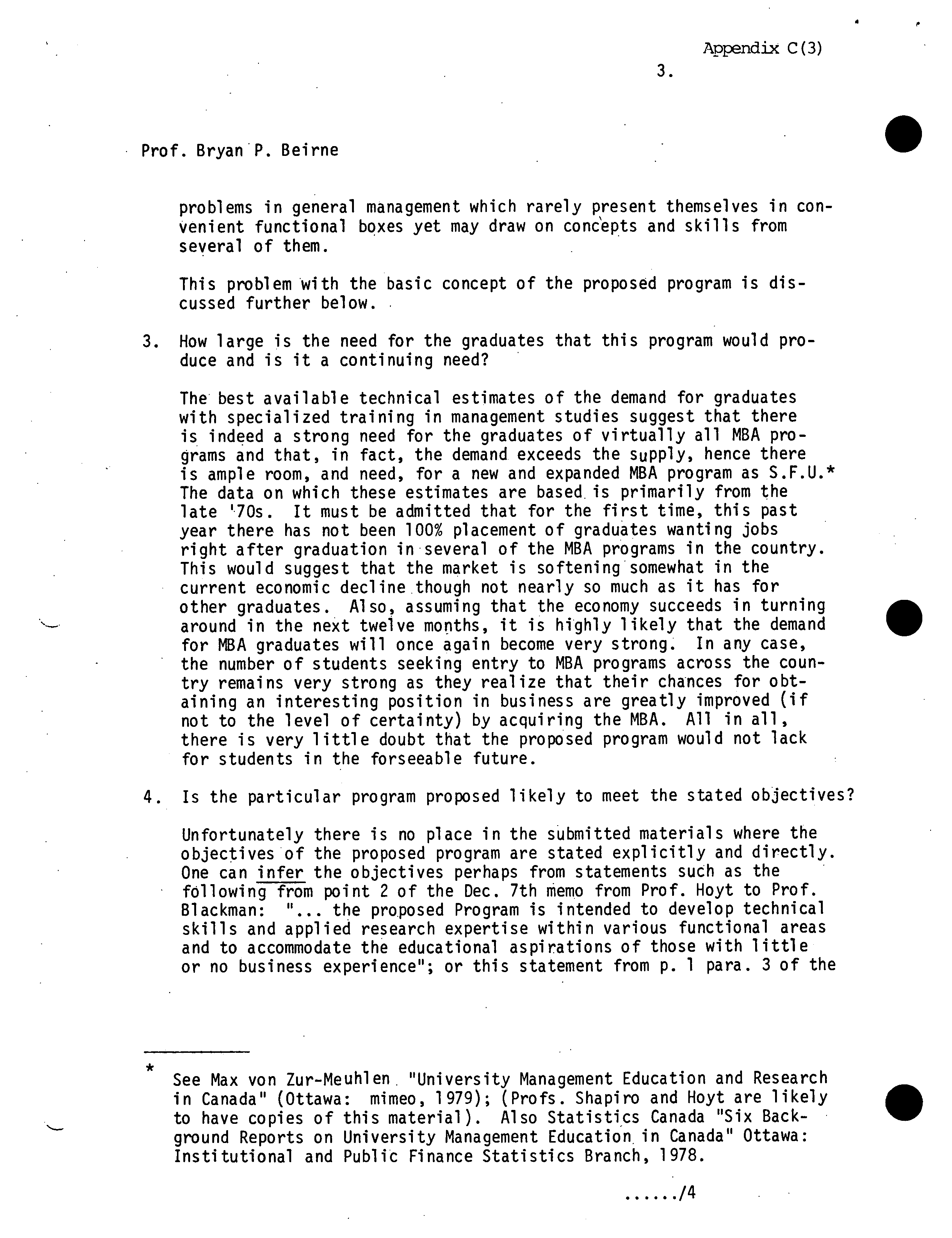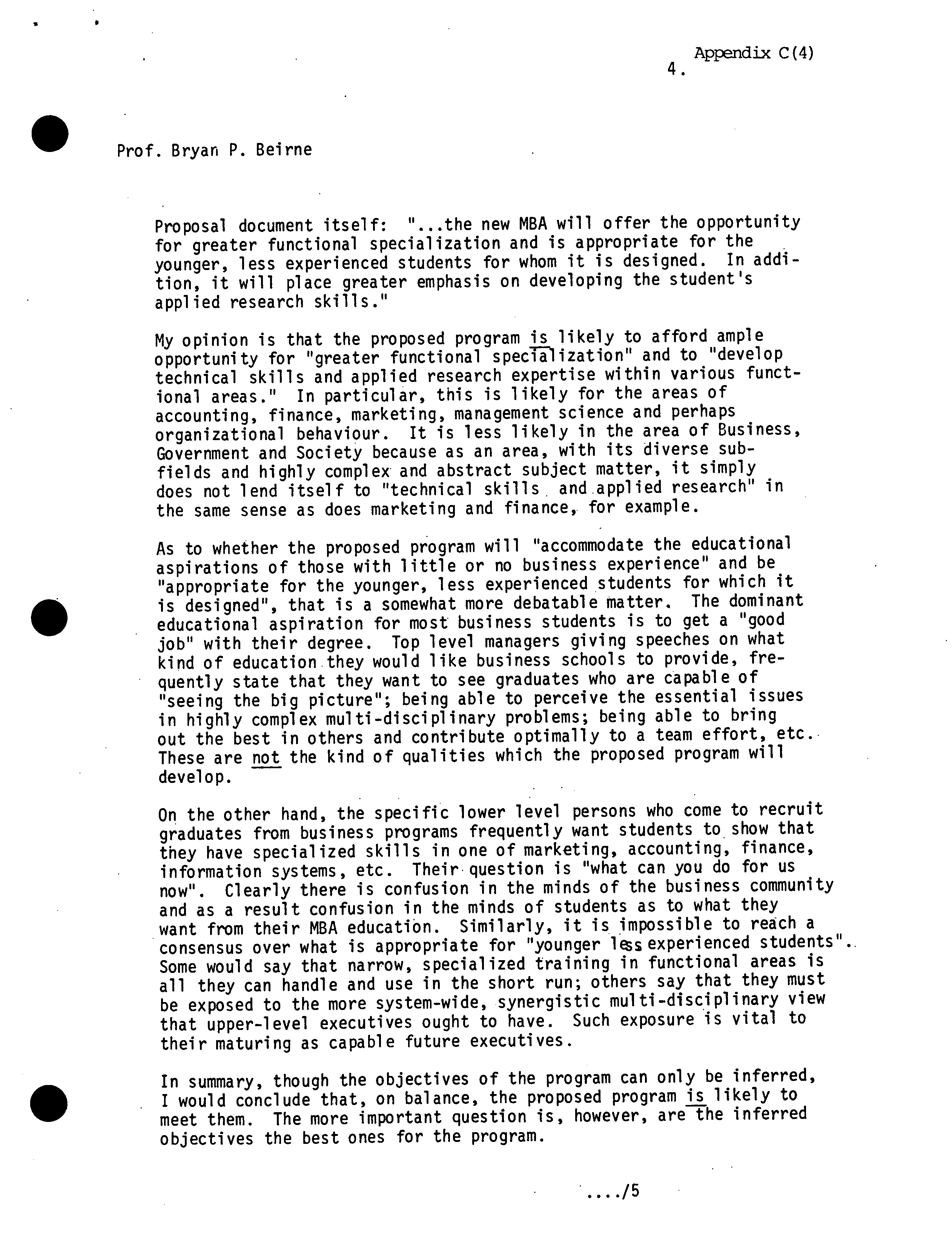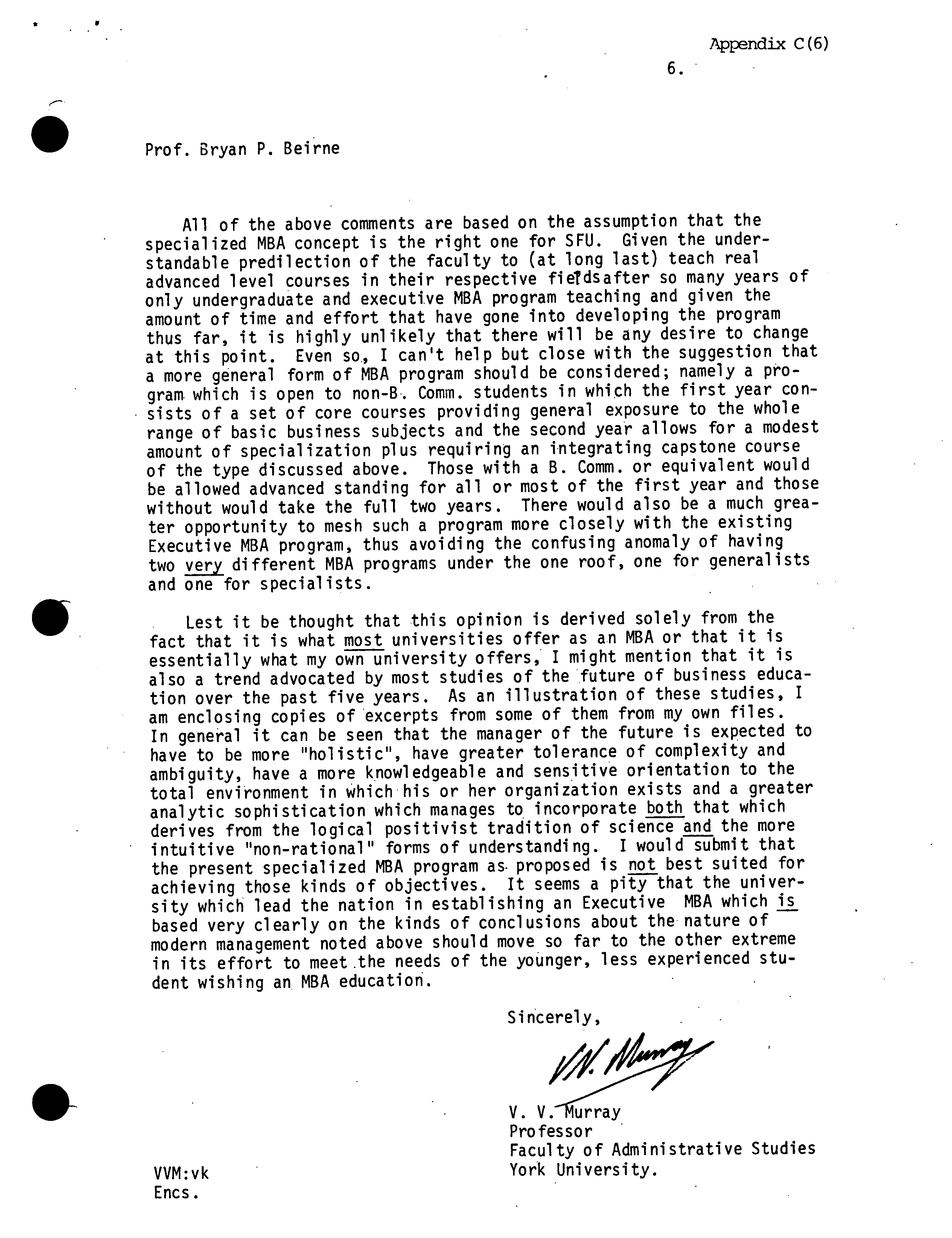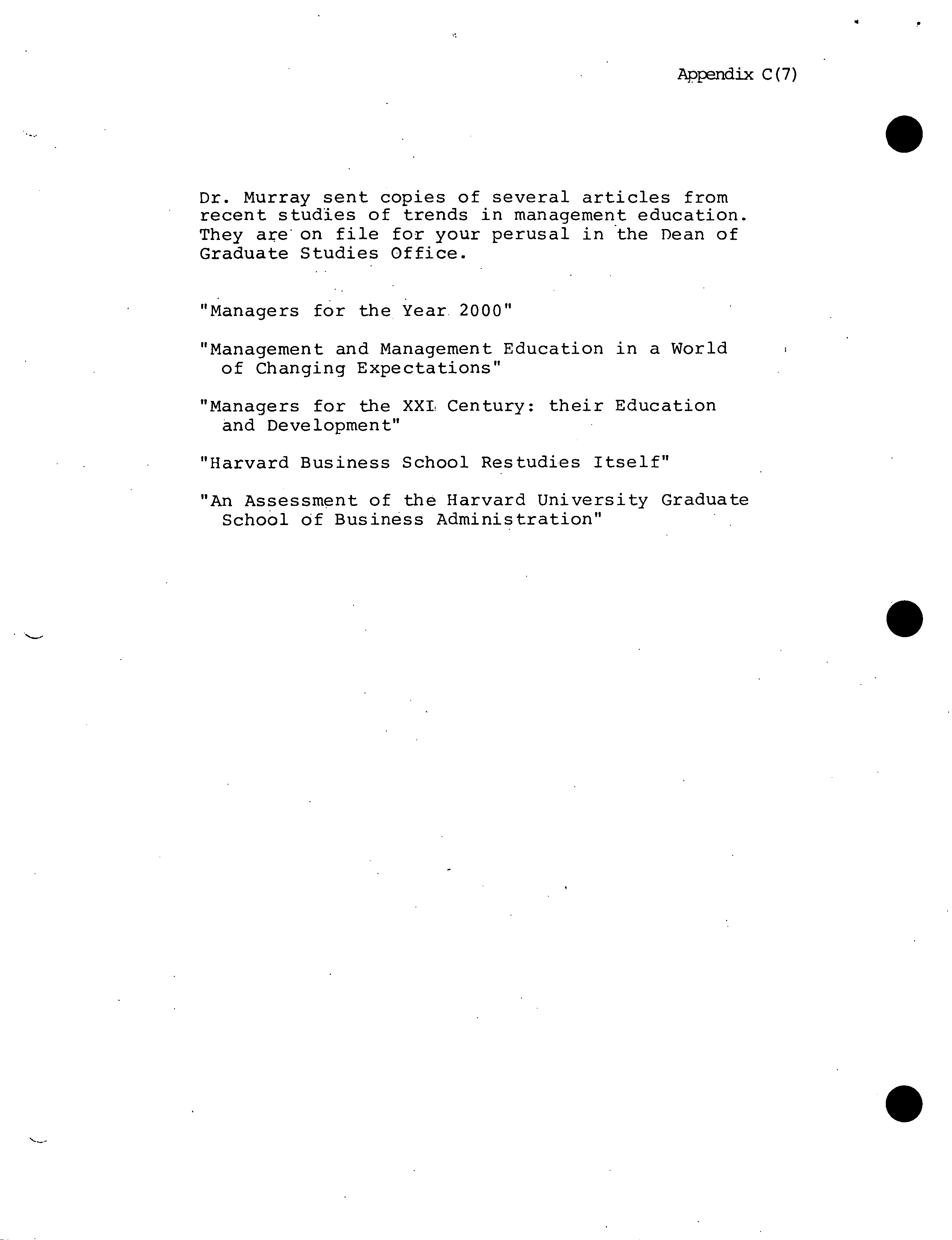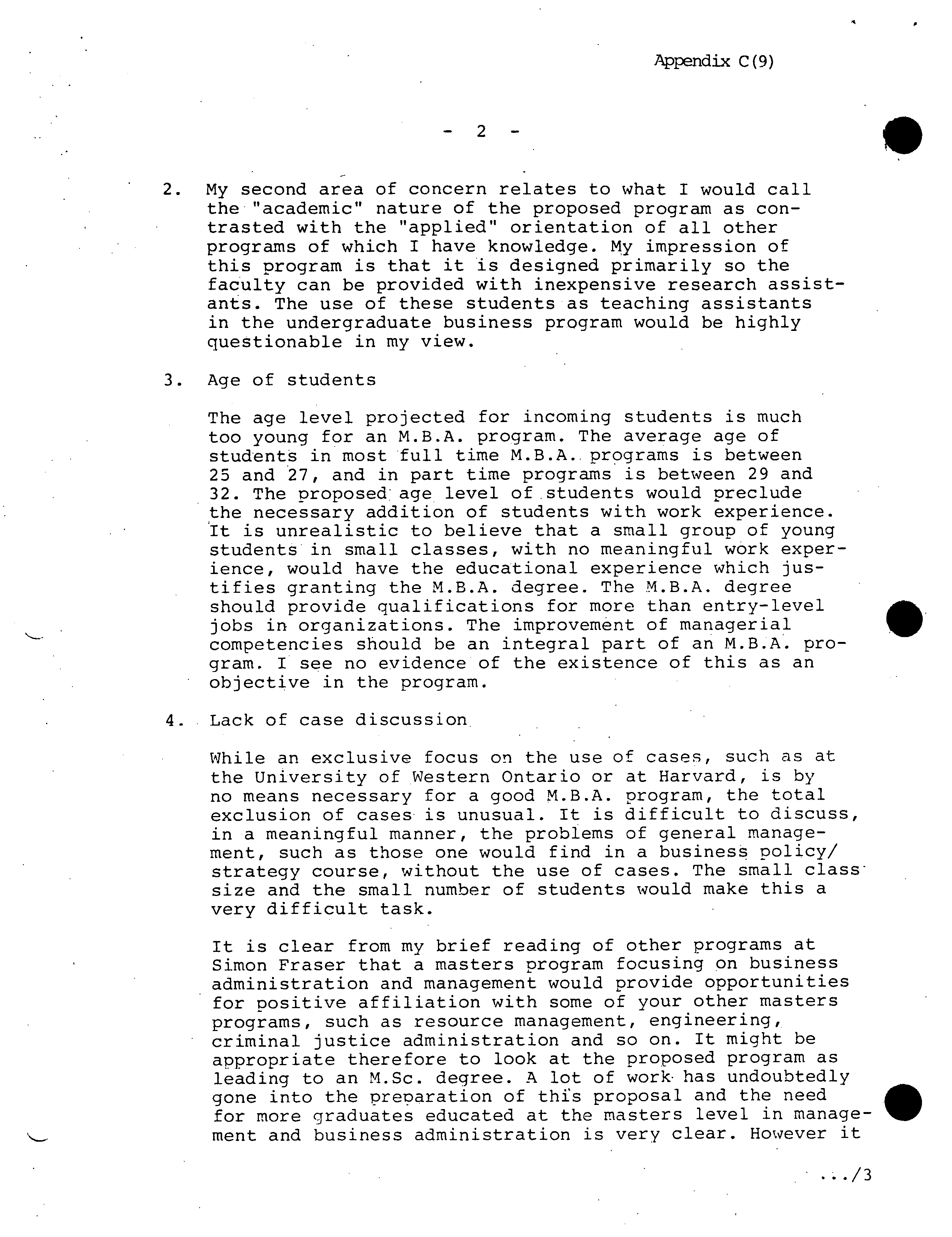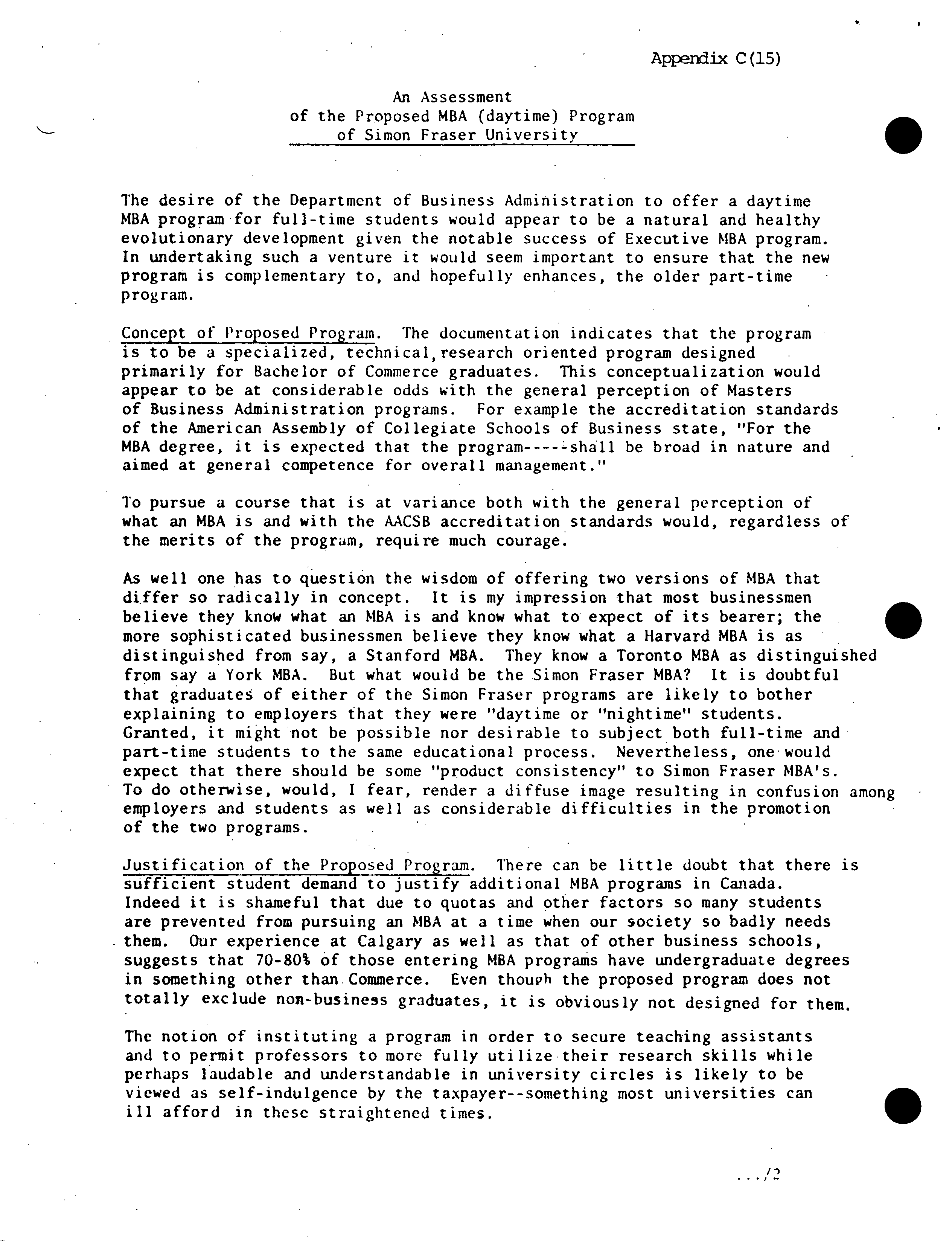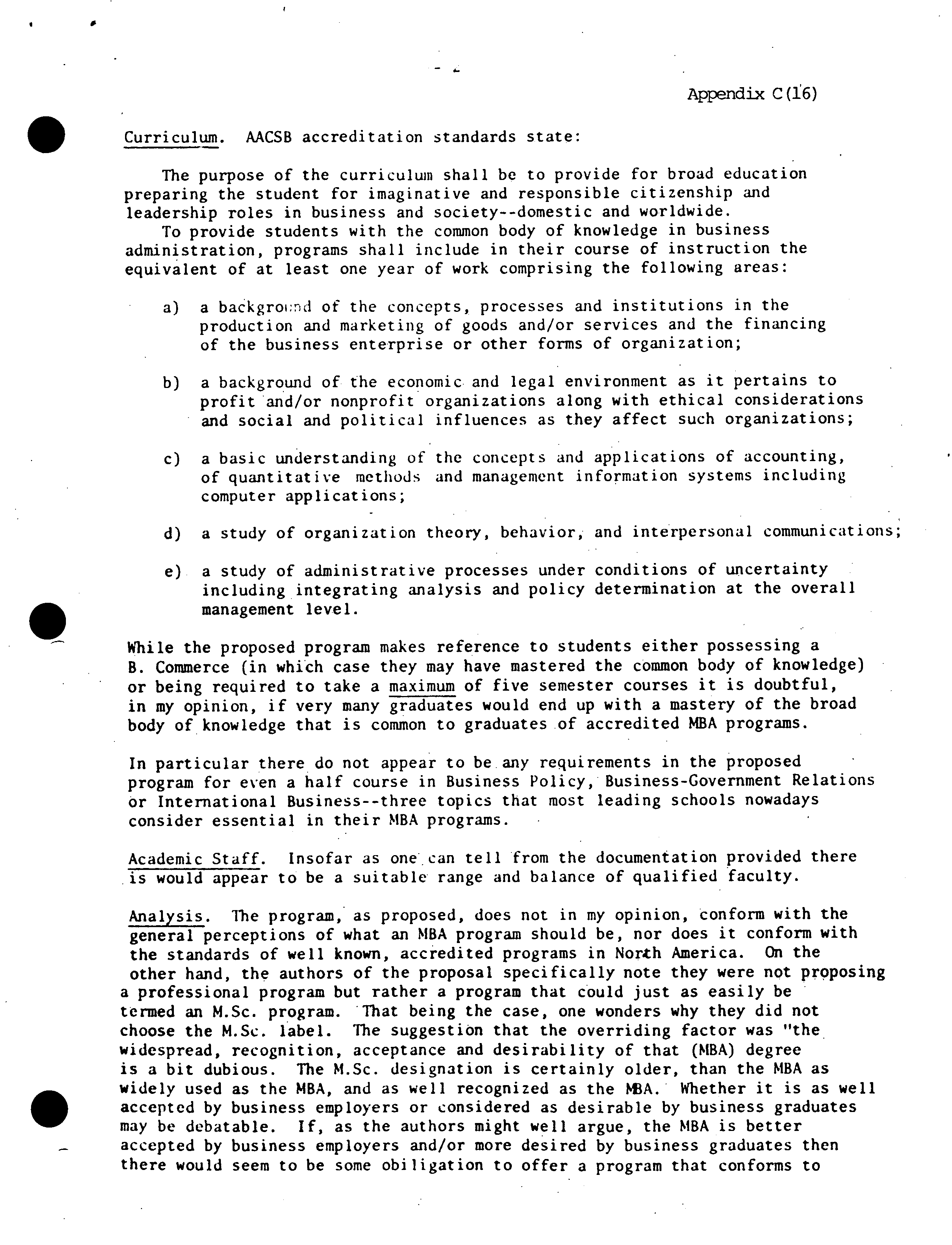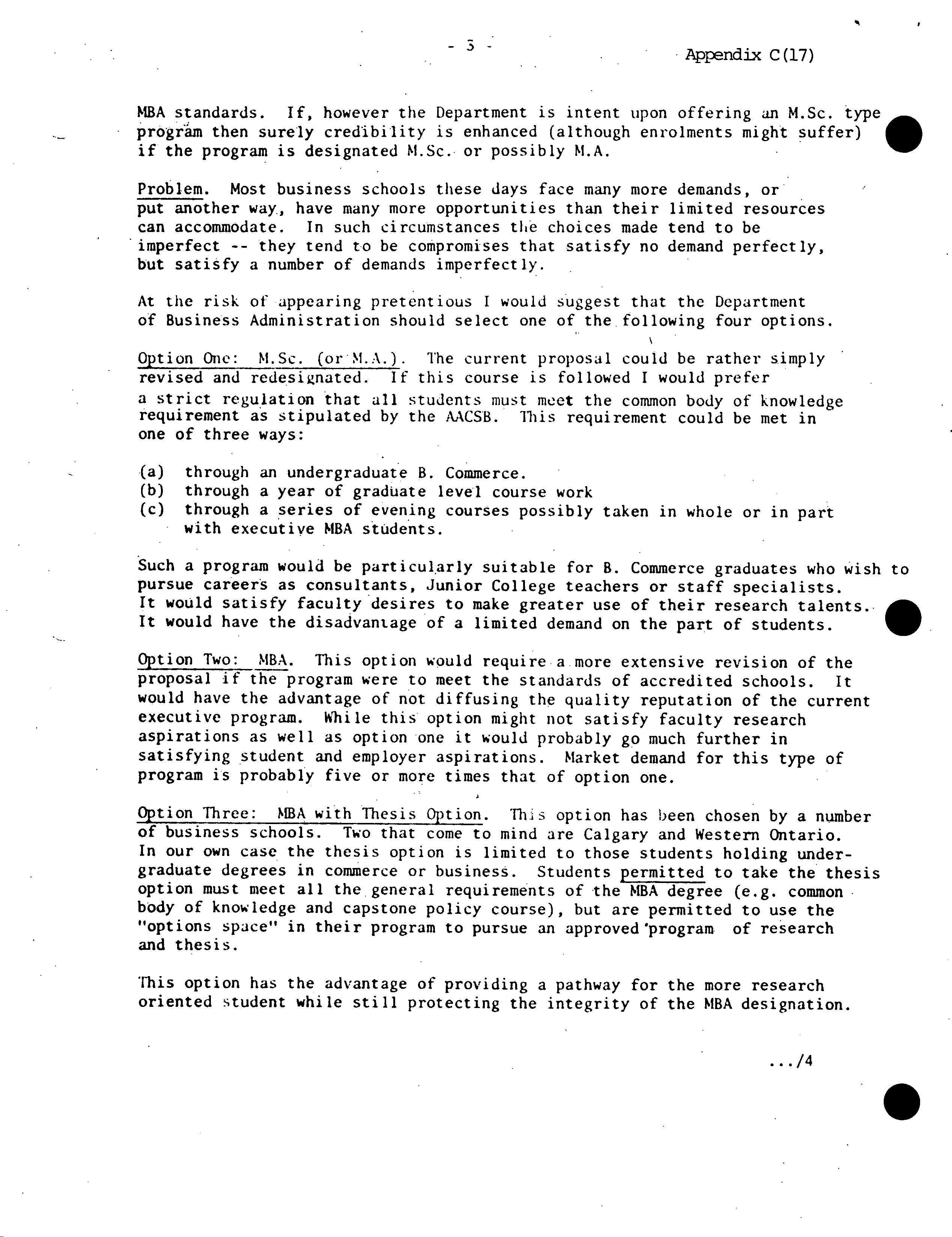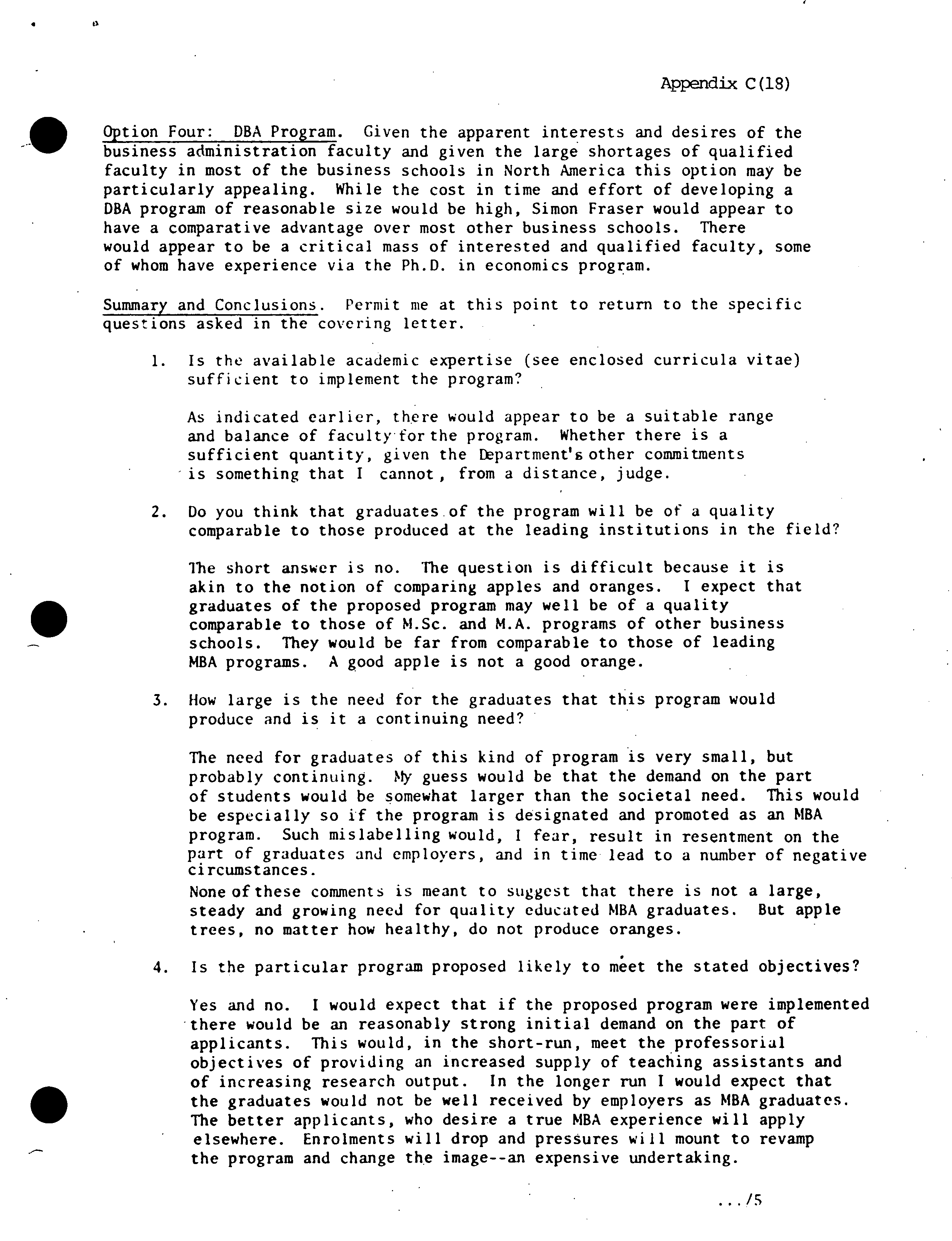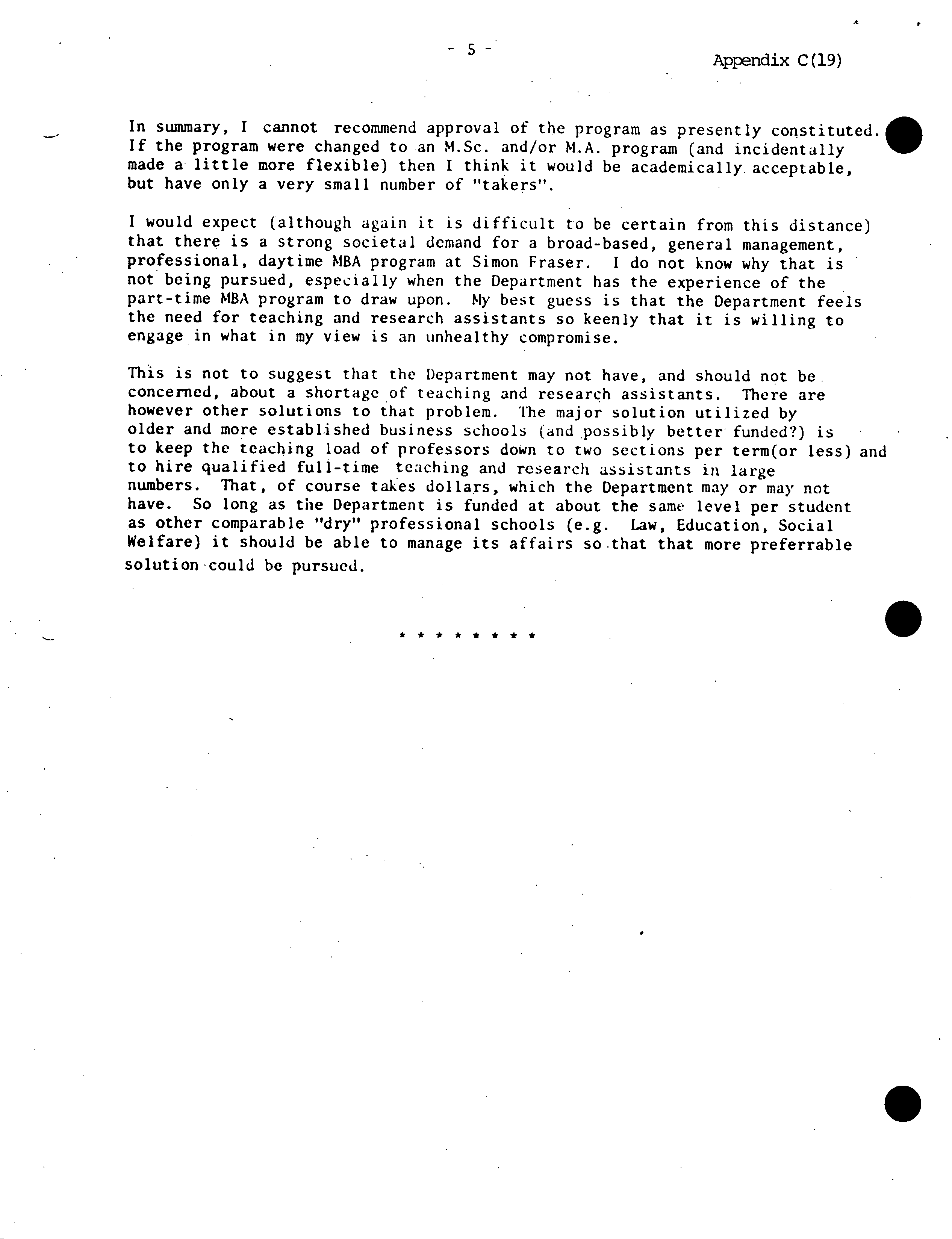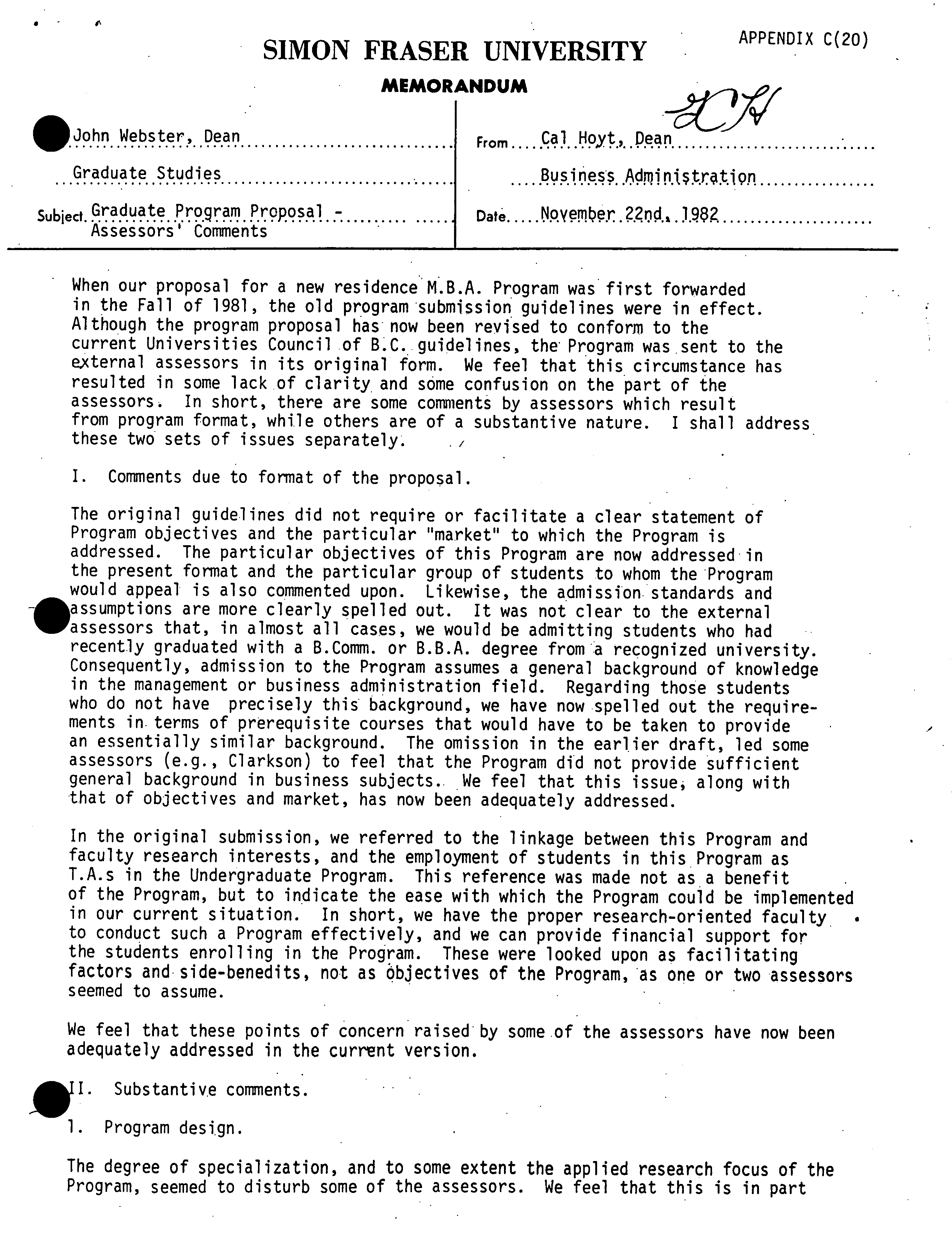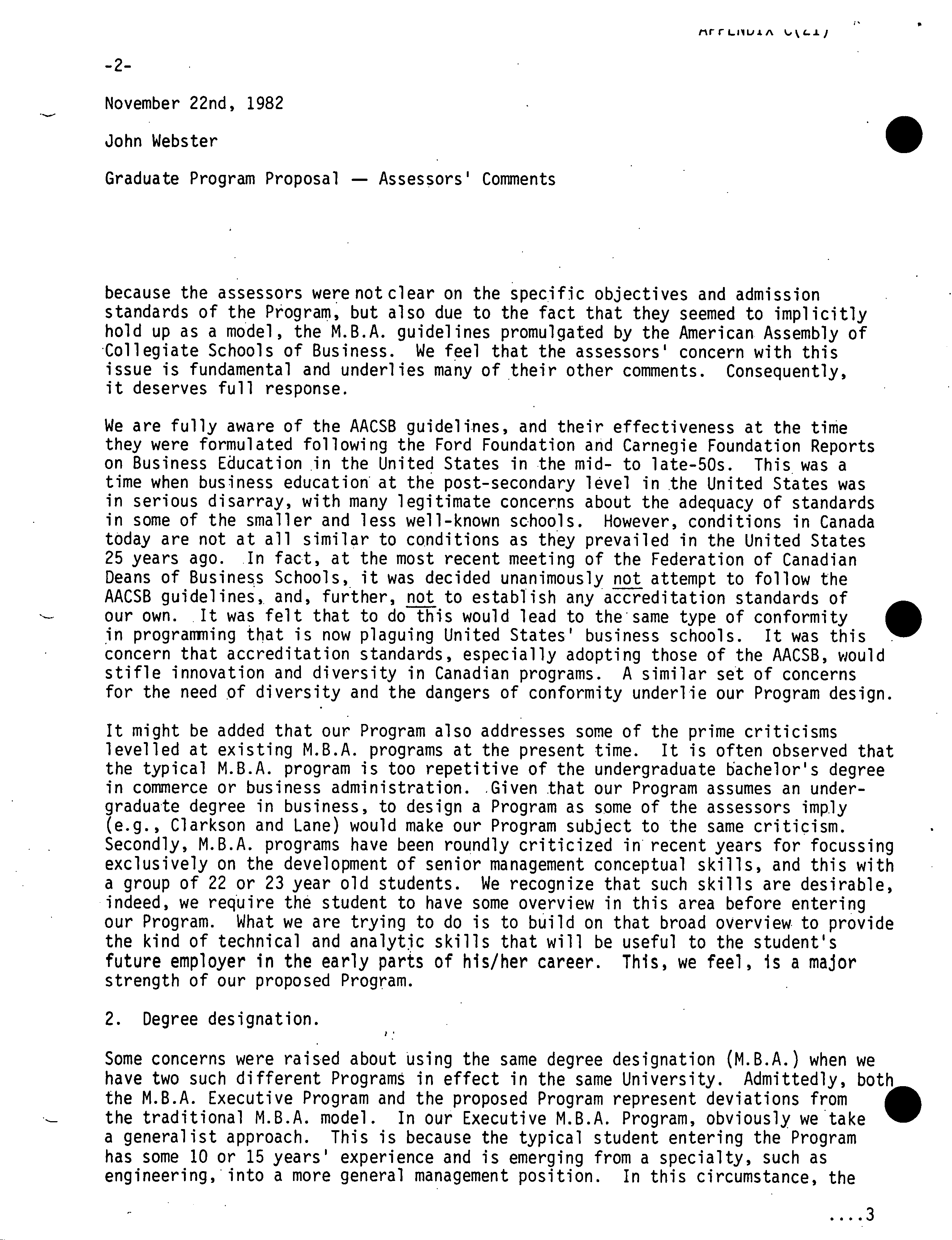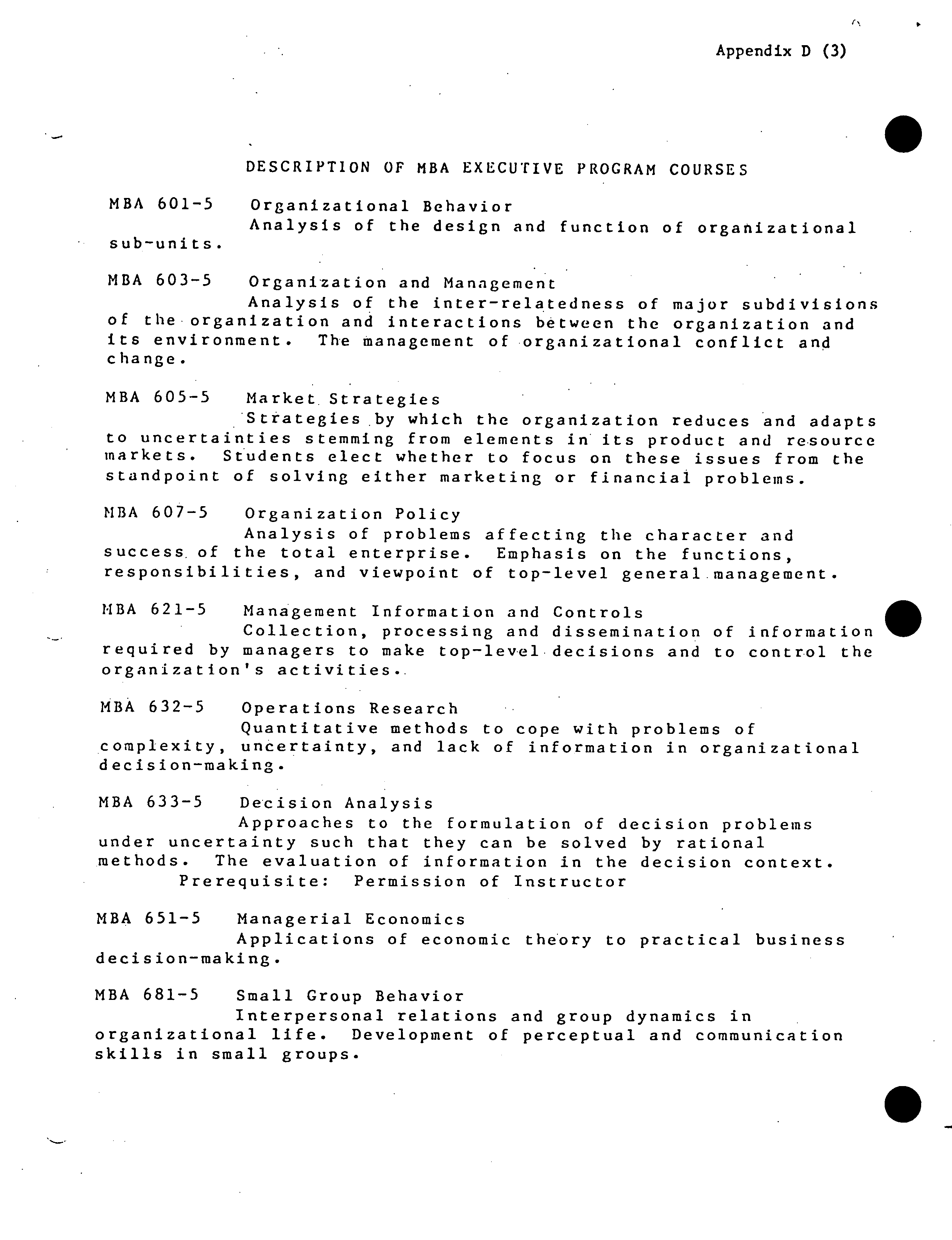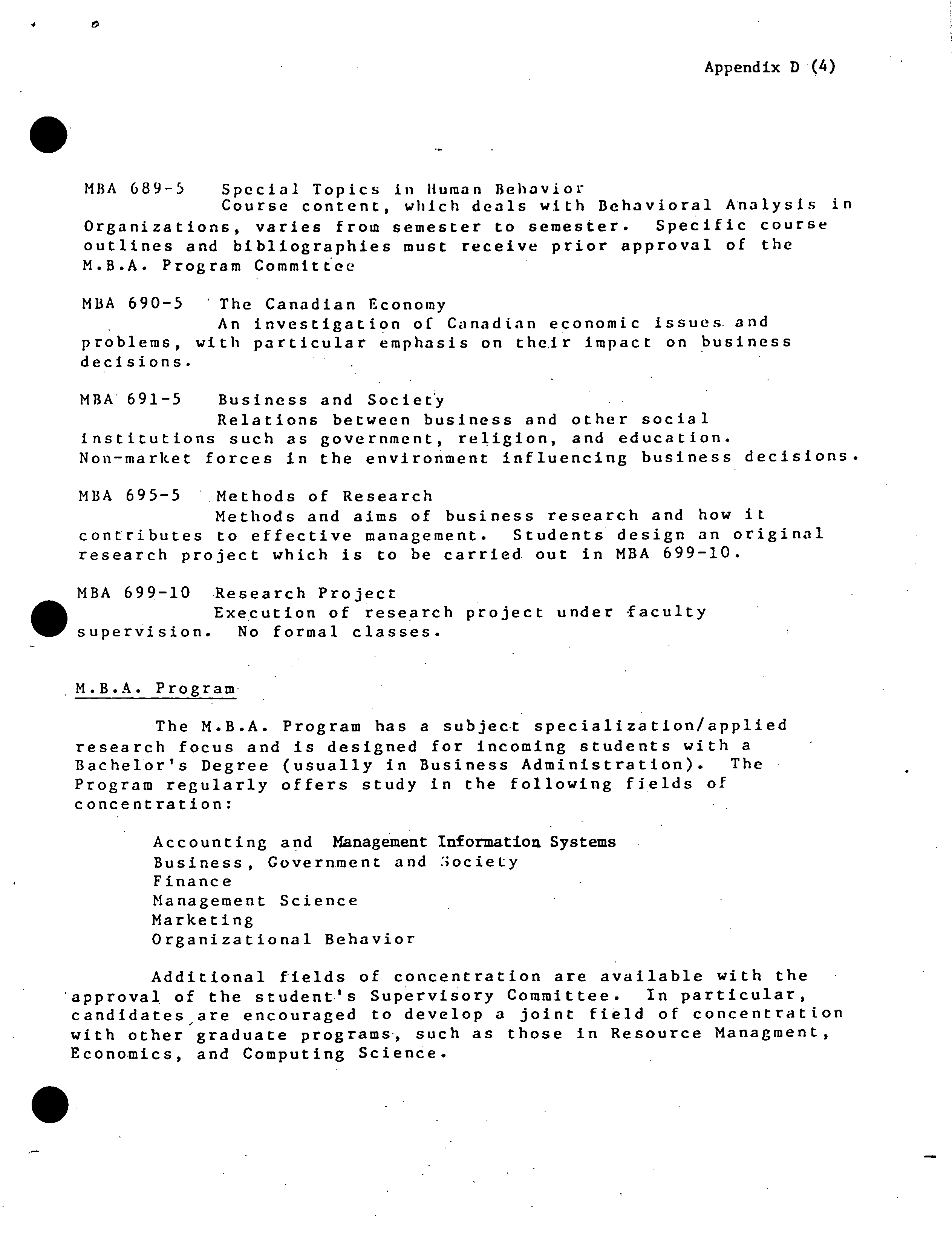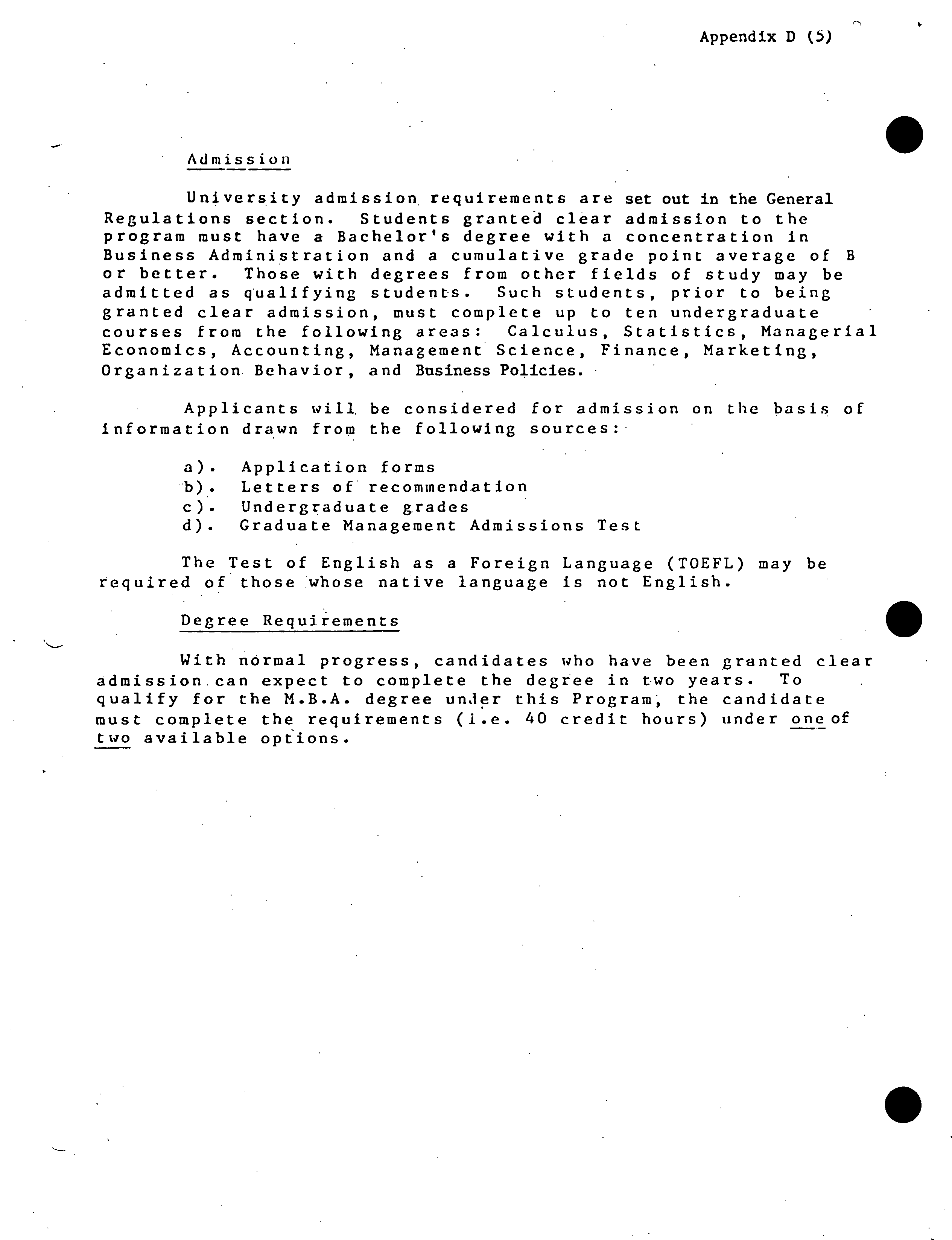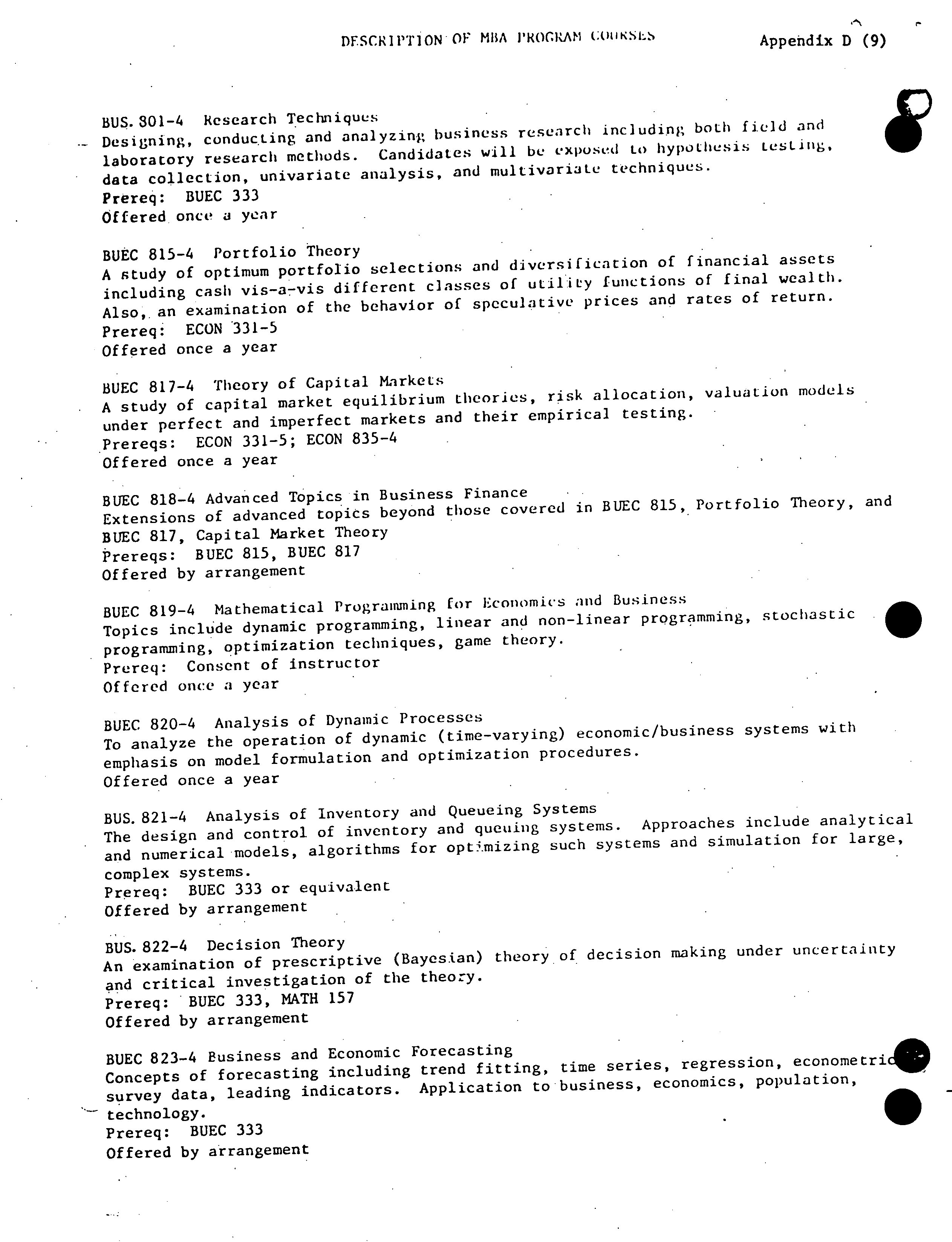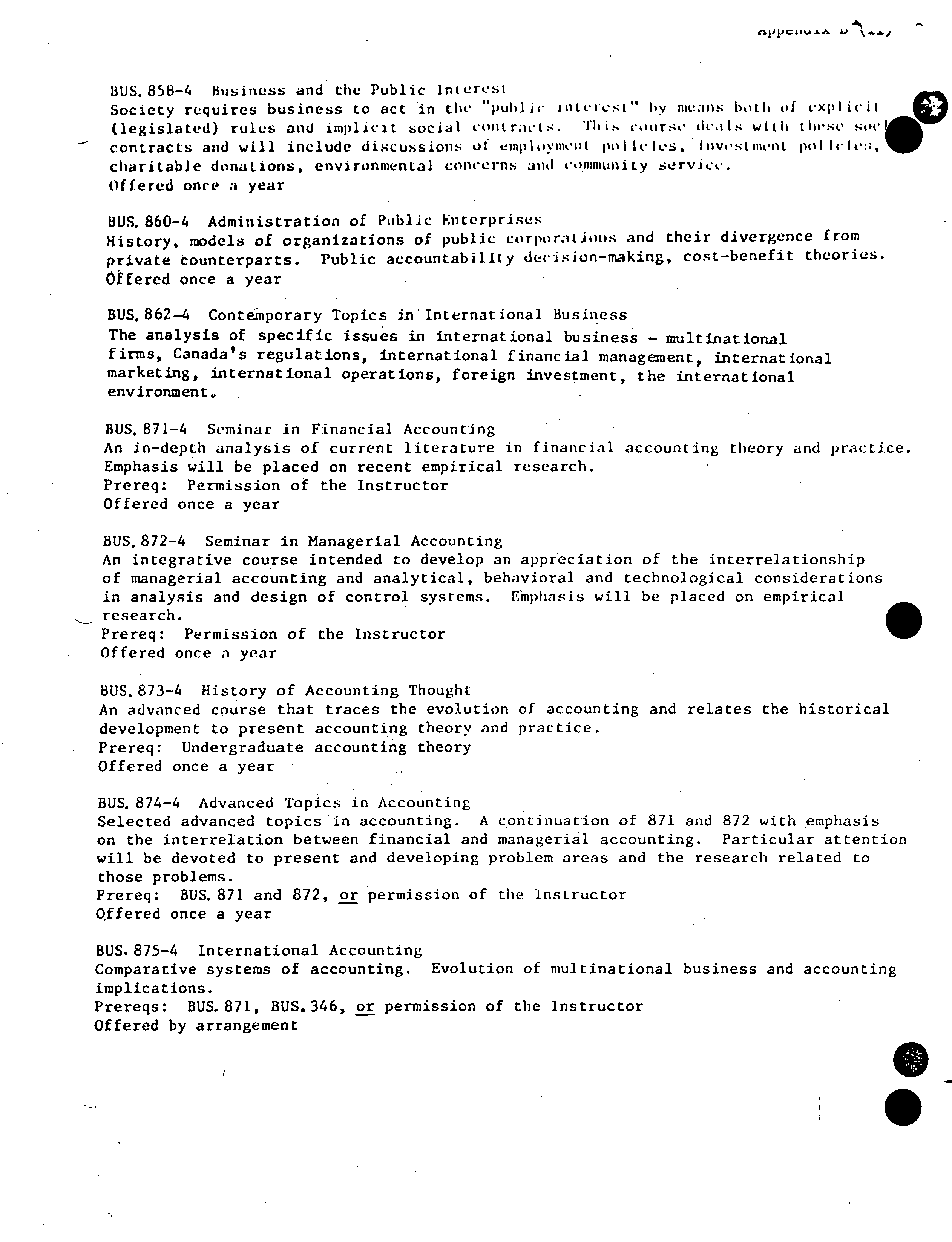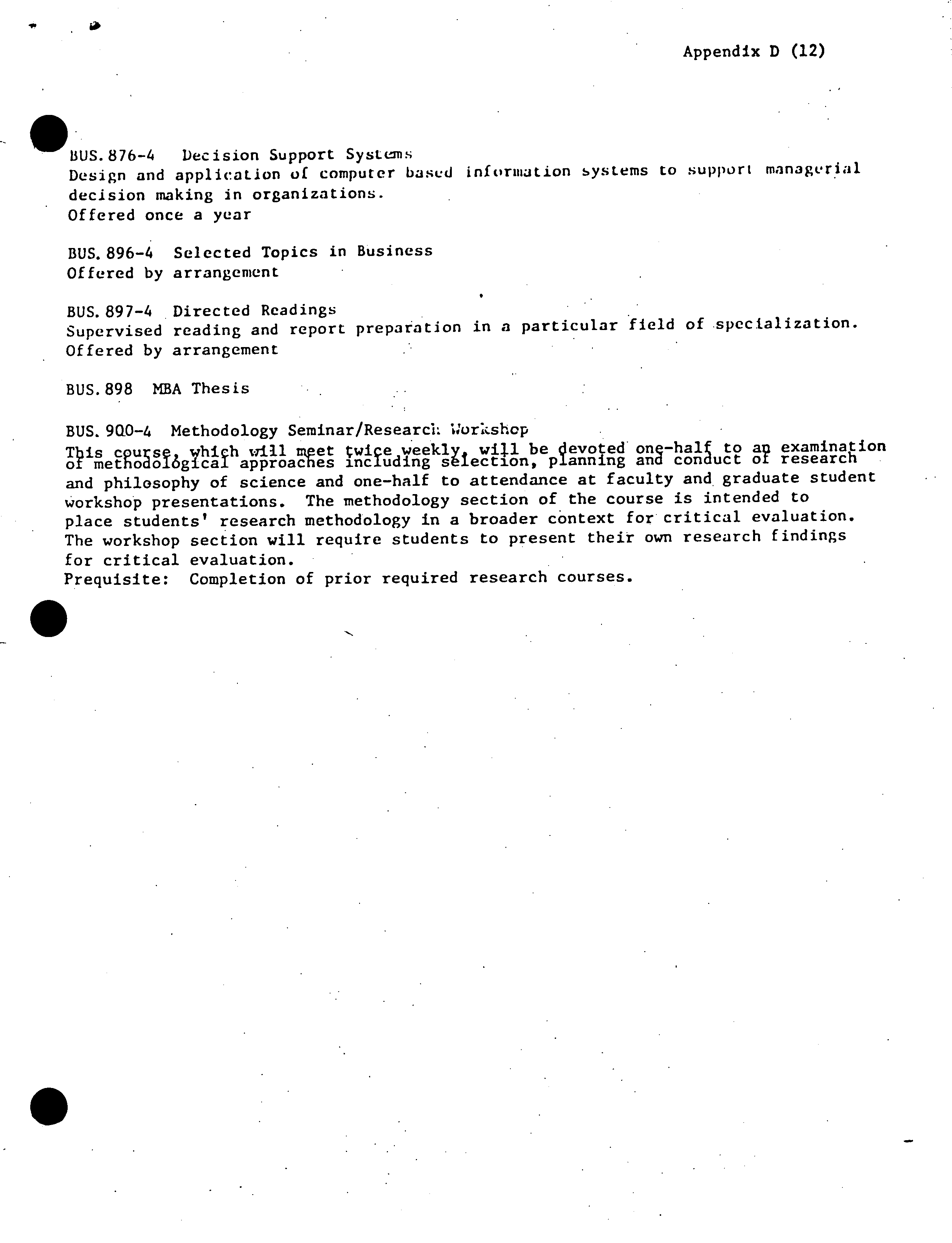
SiMON FRASER UNIVERSITY
MEMORANDUM
S
SENATE
To
.......................................................
PROPOSED NEW MASTER OF BUSINESS
Subject.
9N
....................
SENATE GRADUATE STUDIES COMMITTEE
From
............................................
SENATE COMMITTEE ON ACADEMIC PLANNING
Date.. .
DECEMBER 28 1982
Actions undertaken by the Senate Graduate Studies Committee and by the
Senate Committee on Academic Planning give rise to the following motion:-
MOTION:
"That Senate approve and recommend approval to the Board of
Governors, as set forth in S.83-17, the proposed new Master
of Business Administration Program."
The proposal was approved in principle by SCAP in July, 1982, went
forward to the Assessment Committee for New Graduate Programs, and was discussed,
external assessors were appointed and reported, a number of changes were incorporated
•
and further discussion was held with the Assessment Committee. The report was
approved by the Senate Graduate Studies Committee and was transmitted to SCAP,
including some revisions. Debate at that body indicated the need to write the
proposal under currently existing UCBC guidelines for new programs and this has been
done in the present proposal. SCAP approval was given December 8, 1982. The
organization of the data is designed to ensure that all required items are addressed
in as straightforward a manner as possible. The rewriting and positioning of
material is a direct attempt to correct deficiencies in the original proposal.
The comments of the external assessors were based on the original proposal;
a number of changes were made; there are some differences of opinion on philosophy/
practice; the rewriting addresses a number of these issues; the Dean of Business
Administration has included a memorandum responding to the assessors' comments.
SCAR instructed that, in view of the length of the documentation, some
guidelines to the material be given in summary form. They follow:
1.
See sheet 3 - Memo Hoyt,
/
Webster, November 26, 1982
2.
The next 20 pages constitute the main proposal including -
I.
General Information, page 1
Title, Credential, Faculty Responsible, Proposed
II.
Program Description and Related Matters, pages 1
Philosophy and Objectives (Educational ,Program),
the Role and Mission of the University, Programs
..
Complementarities and Distinctions, Curriculum D
with Non-University Agencies.
Dates
- 8 incl. including
Relationship to
at other Institutions,
tails of Consultation
-2-
III.
Need for the Program - pages 8 - 11 incl.
Needs of Society, Forecast Enrollment, Types of Jobs, Placement History.
IV.
Present and Projected Resources - pages 11 - 20 incl.
Administrative Personnel, Instructional Positions, Library Resources,
Capital Costs, External Funding, Budget Request, Faculty Research Awards.
V.
Evaluation, pages 20, 21
By other B.C. Institutions, External Expert Evaluations, etc.
3.
Appendix A is the Library Resources Report, pages Al - A5 inclusive.
4.
Appendix B contains the new course proposals, outlines and reading lists,
pages Bl - B119 inclusive.
5.
Appendix C contains the reports of the External Assessors, before changes were
made and the proposal rewritten under now existing UBC guidelines. It
contains a memorandum from the Dean of Business Administration responding to
the comments (pages C20 - C22 inclusive) - pages Cl - C22 inclusive.
6.
Graduate Calendar Entry, pages Dl - D12 inclusive.
0
Is
SiMON FRASER UNIVERSITY
SCAP
MEMORANDUM
I
Po ... ...
D.
.r..
Senate Committee on
.li
; ç:
•
Phi
Subject
.Mg
.
9P9. ......
in Business Administration
John M. Webster
From
...................................................
Dean of Graduate Studies
Date .......
.ecemb........
I have pleasure in forwarding to you the request for a
new MBA Programme for the Faculty of Business Administration.
The Proposal has received approval by the Senate Graduate
Studies Committee after a complete review and a positive
recommendation by the Graduate Programme Assessment
Committee.
Please note that the twenty pages of the Proposal
(excluding the appendices) have been rewritten to incorporate
the suggestions of the Graduate Studies Assessment Committee
and of the External Assessors.
I ask that the Senate Committee on Academic Planning
.
support this Proposal which is a good expression of the
new ideas emerging from the Faculty of Business Administration.
I- - -• -•
I
K
attachment
SiMON FRASER UNIVERSITY
MEMORANDUM
To ...... .Q.Webster,. Dean ........................... .From
...çpy,•pn
....
Udate.
Stu.die.s ..........................
Business Administration
Subject.. Grac.lua.te. Jrgram. Jrop.os1.................
Da
....o
y
t
em
e
ber
.
..2J98
..........................
This is my memorandum of transmittal to you regarding our proposal
for a new residence M.B.A. program. This memoranaum supplants my
original memorandum of December, 1981 which was forwarded on the then
existing guidelines for new program proposals. This proposal is now
fully redrafted according to the presently existing guidelines.
Accordingly, the statement of the philosophy and objectives of the
program, its costs, entrance requirements, etc. are now more clearly
stated.
In addition to the main body of the proposal there are four Appendices:
1)
Appendix A is the Library Resources Report,
2)
Appendix B contains the new course proposals, outlines and reading
lists,
3)
Appendix C contains the reports of the External Assessors together
with a memorandum from me responding to their comments,
4) Appendix D contains the copy of the new graduate calendar.
I wish to call your attention and the attention of the members of the
Senate Committee on Academic Planning to my memorandum in AppendixC
(pages C 20 to
.
0 22). Because the proposal which was reviewed by the
External Assessors was under the pre-existing program guidelines, there was
some confusion as to the philosophy and objectives of the program. I feel
that many of the objections that the assessors raised were due to the lack
of clarity in the original document. Therefore, I specifically draw your
attention to my memorandum responding to their comments.
If there is any further information you or the Committee need from. us,
please do not hesitate to contact either,John Herzog or myself.
CCII! pm
(1
Attachment
S
0
I. GENERAL INFORMATION
A.
Title of the Program
Master of Business Administration
B.
Credential to be Awarded
Master of Business Administration (M.B.A.) Degree
C.
Faculty to offer Program
Business Administration
D.
of
January 6, 1983 (tentative)
E.
Schedule-for_Implementation
September 6, 1983 (tentative)
II. PROGRAM DESCRIPTION AND RELATED MATTERS
A.
Philosophy and Objectives o-----proosedProrarn
Simon Fraser University has, since 1968, offered an Executive
M.B.A. Program. That Program has had a highly successful history.
Applications remain at a high level, the quality of applicants and
students accepted into the Program has increased over the years,
and graduates number nearly 400 -- more than any other graduate
program at the University. The Program has acquired a reputation
for excellence, both within the University and in the broader
community. Several of our graduates have-reached the highest
levels of management in government and industry.
I
0
-2-
Why, then, is there a need to offer yet another Program --
indeed one so different in kind? The answer is to be found both
in the acknowledged needs of Canadian (and, more particularly,
British Columbian) society for well-educated managers and in
identifying the kinds of programs. which will best meet these
needs. The demands are great, but the sources of supply are all
too limited. In fact, the seriousness of the situation recently
has been underscored by the SSHRC through implementation of a
Strategic Grants Program specifically aimed at management
studies. The only question is whether the opportuities can be
seized upon in a manner which is fully consistent with our
educational philosophy, with student needs, and with the needs
of society.
1.
Educational Philosophy
We believe that the M.B.A. Degree should signify what the
letters imply -- a Master of Business Administration. Mastery,
in the educational setting, need not imply, even within the same
discipline, a uniformity of process. Different client (student)
groups will come to us with different requirements. The end
product we seek, however, is the same for all groups. The
graduate of either of our Programs should have a broad per-
spective on management, a capacity for dealing with complex,
strategic issues in an uncertain and dynamic environment, and
exceptional proficiency in at least one of the functional areas
of administration.
In our Executive M.B.A. Program, entrants will have already
acquired functional proficiency. This may have come through
previous formal education in some discipline such as engin-
eering, accounting, quantitative analysis (including computer
science), or the natural sciences, or it may have come through
the acquisition of on-the-job training, following a liberal arts
or humanities education in university. However that expertise
may have been obtained, the Executive M.B.A. entrant will have
accumulated substantial work experience and will have already
ascended to the middle or upper reaches of management. What
this kind of student needs is an education which enables him/her
to view management problems in a comprehensive framework -- to
grasp both the rational and the human aspects of decision-
making. The Executive M.B.A. curriculum is designed to attain
these ends, for this special type of student.
The M.B.A. Program we now propose is aimed at a much dif-
ferent kind of clientele. The typical entrant into this Program
will have already completed a Bachelor's Degree in Business
Administration. That course of study will have covered the
"core" areas of Business and will have been capped off with such
.
.
-3
-
integrating courses as Business Policy, and Business, Govern-
ment, and Society. There may have been, additionally, an
opportunity for the student to gain some degree of speciali-
zation, but at a level which is appropriate for undergraduate --
not graduate -- students. Our own undergraduate calendar
requirements are typical of those for such programs. What is
important to keep in mind is that such degree-holders will have
already been exposed to the integrative aspects of management
studies. That background, together with the student's emerging
interests in one or more of the functional areas of administra-
tion, can be utilized as a basis for developing a higher level
of technical skill. We propose to develop such skills, not only
within specific functional areas but in research and
investigative techniques as well.
2.
Program Objectives
The objectives of this Program are readily ascertained from
our educational philosophy. Simply put, these are:
"To prepare students for life careers in management by
.
giving them mastery over some functional discipline
and over investigative/research method. It is assumed
that students embarking upon this Program will have
already attained command over the "core" subjects of
Business Administration and the integrative framework
from which management issues must be addressed."
More specifically, the Program is designed to meet the
educational aspirations of recent graduates of Business
Administration Programs (or those who have otherwise acquired
proficiency in the "core" disciplines) by providing them with:
1.
Advanced, graduate instruction within a functional
area of Business Administration and one or more
supporting areas.
2.
Instruction in research methods, together with
supervised execution of an applied research
project or original thesis.
While our aim is to enable students who have the personal
qualities necessary to reach top management positions to do so,
we are also cognizant of the fact that many of our graduates
will not reach these lofty heights. Whether they do or not, our
intention is to prepare each of them to assume a responsible
position in mid- to upper-management ranks, staff positions,
.
management consulting, or in Business education at the college
or university level.
-
4 -
An additional aim is to permit students in other Programs
S
at the University to pursue studies in selected Business
Administration fields and to enable our own M.B.A. candidates to
choose, if they wish, supporting fields of study in Departments
outside Business Administration.
B.
Relationship of the Program to the Role and Mission of the
---------------------------------------------------
While the proposed program is clearly intended to meet the
demand for more highly qualified managers, it will have, as
well, salutory effects on other programs within the University.
Students in existing programs in Natural Resource Management,
Pest Management,Computer Science, Economics, and Criminology
(Criminal Justice Administration) will have available to them
courses in Administration and Management which do not now
exist. In addition, students in our own Executive M.B.A.
Program will have new electives from which to choose.
It is also contemplated that students within the proposed
M.B.A. Program will incorporate courses from other departments
(beyond the few listed) in their choices of supporting fields.
In short, there will be ample opportunity for inter-departmental
involvement, in the design of individual students' programs.
0
C.
M.B.A. Programs at other Institutions
The traditional M.B.A. Program, which serves as the "model"
for the American Assembly of Collegiate Schools of Business
(AACSB) has been widely adopted in Canada. It must be noted,
however, that specific calendar requirements across the U.S. and
Canada vary widely. Moreover, even where calendar requirements
appear to be the same, the quality of students, the quality of
Facitty,. and the quality of support facilities (.e.g, libraries
and computer facilities) are anything but uniform. Indeed, both
the AACSB and the Canadian Federation of Deans (of Business
Administration) encourage flexibility and experimentation.
In this regard, it is useful to contrast what we propose
with what U.B.C. is already doing -- and apparently doing very
well. The U.B.C. M.B.A. Program requires core studies in
Decision Analysis, Quantitative Methods, Accounting and
Management Information Systems, Economics, Human Resources
Management, Marketing, and Finance. Specialization within any
functional area is explicitly discouraged. That Program, if it
is to avoid wasteful duplication of undergraduate exposure, is
best suited to students who do not have an undergraduate degree
5
U
.
-5-
in Business Administration (U.B.C.'s undergraduate curriculum is
similar to our own). The M.Sc. (Business Administration)
Program at U.B.C. "allows as much concentration in any one field
of study as may be consistent with the individual student's
educational goals." It does not require entering students to
have prior preparation in Business Administration, nor is there
any common core of study. Specialization within some Business
subject is the primary aim and preparation for general
management cannot be assumed for the M.Sc.-holder.
D.
corn
a
The Program we propose, while it is similar in some
respects to M.B.A. Programs offered elsewhere in Canada, is
clearly distinct from either the M.B.A. or M.Sc. (Business
Administration) offered at U.B.C. It is also quite distinct, as
noted previously, from our Executive M.B.A. Program. This
Program will require, for admission, an undergraduate degree in
Business Administration or Commerce. Neither of U.B.C.'s
Programs do. In addition, this Program builds specialization
and research training on the undergraduate "core" offerings.
S
U.B.C. requires no such background for either of the degrees it
offers.
We have no quarrel with U.B.C. or with other Universities
in Canada as to what qualities the well-educated manager should
possess. We are merely attempting to recognize the fact that
students seeking the M.B.A. Degree will not necessarily all have
the same backgrounds or maturity. Our Executive M.B.A. Program
addresses the needs of one group; U.B.C.'s Programs address the
needs of another; and the Program we propose addresses the needs
of yet another. One, we might add, that is both large and
growing rapidly in Canada.
E.
Curriculum
Among potential major fields of specialization, six have
been identified as falling within the teaching interests of a
sufficient number of faculty so as to make viable commitments to
them. These are:
Accounting and Management Information Systems
Business, Government and Society
Finance
Management Science
•
Marketing
Organization Behavior
-6-
.
Considering the research requirements, fields of speciali-
zation, and supporting fields required for the proposed Program,
32 courses are directly identified with the degree. Nine of
these courses are currently listed in the Graduate Calendar
(though under the Economics Department heading), nineteen are
new subject matter courses, and four, are new Selected Topics,
Directed Studies, or Research Methods courses.
These existing courses are:
BUEC 815-4 Portfolio Theory
BUEC 817-4 Theory
of
Capital Markets
BUEC 819-4 Mathematical Programming for Economics and
Business
BUEC 820-4 Analysis of Dynamic Processes
BUS 845-4 Marketing Measurement
BUS 846-4 Marketing Theory and Models
BUS 847-4 Consumer Behavior
BUS 871-4 Seminar in Financial Accounting
BUS 872-4 Seminar in Mangerial Accounting
The new courses are:
BUS 801-4
BUEC 818-4
BUS 821-4
BUS 822-4
BUEC 823-4
BUS 831-4
BUS 833-4
BUS 834-4
BUS 836-4
BUS 839-4
BUS 852-4
BUS 854-4
BUS 858-4
BUS 860-4
BUS 862-4
BUS 873-4
BUS 874-4
BUS 875-4
BUS 876-4
BUS 896-4
BUS 897-4
BUS 898
BUS 900-4
Research Techniques
Advanced Topics in Business Finance
Analysis of Inventory and Queueing Systems
Decision Theory
Business and Economic Forecasting
Industrial Relations
Trends and Issues in Micro-Organizational
Behavior
Macro Perspectives on Organizations
Human Resources Management
Organizational Assessment and Planned Change
Researching the Corporation in Canadian Society
Business and Government Regulation
Business and the Public Interest
Administration of Public Enterprises
Contem p orar y To p ics in International Business
History of Accounting Thought
Advanced Topics in Accounting
International Accounting
Decision Support Systems
Selected Topics in Business
Directed Readings
MBA Thesis
Methodology Seminar/Research Workshop
.
0
-7-
F.
Evidence of-Formal Consultation with Professional
OYTiätt6iis
(Not required)
G.
Evidence of Accreditation by Profession
('Not applicable)
H.
Details-of-Consultation with Non-University_^Z2LiSies
Formal consultations with non-university agencies were
considered to be neither necessary nor appropriate in designing
the proposed Program. The Program's design, however,, was
clearly influenced by the experiences of other Universities, our
own 14 year experience with the Executive M.B.A. Program,
informal consultation with potential employers, and consul-
tations with our own Business Administration Advisory Board.
There is no question that the 2er capita number of degrees
•
awarded in management studies in Canada
-Is
-
15w by comparison,
say, to the United States. This deficiency is widely recognized
by both employers and universities. Canadian universities have,
generally, attempted to imitate U.S. standards in designing
their degree programs. Unfortunately, this imitation has not
always recognized the fact that 'applicants to Canadian graduate
programs may bring with them a set of experiences which TfFf
from those of their American counterparts. The experience of
Canadian universities with management programs in general and
graduate management programs in particular is quite limited. It
comes as no surprise, therefore, that' imitating others, in view
of the diversity of cultural background, carries its own set of
problems. Canadian Masters' Programs are not always designed
for an audience appropriate to Canada.
Our Executive M.B.A. Program was aimed at' satisfying the
needs of a particular sub-set of potential applicants -- those
with limited formal education in business or economic subjects,
but with considerable experience in a managerial role. That
Program, given the target audience, has worked very well. Our
experiences have shown, however, that there is an even larger
audience which goes unserved -- those who have majored in
business subjects as undergraduates who now wish to obtain an
advanced degree in management studies.
Over the years, our informal contacts with recruiters have
.
led us to an inescapable, though troublesome, conclusion. That
is, what recruiters want to see in a job applicant differs sub-
-8-
stantially from what senior executives profess to want. The
recruiter is much more concerned about what the prospective
employee can deliver to the firm now. .He expects that the
managerial perspective of which senior managers speak will be
there -- as a bonus. What he is interested in is the shorter
term, before the employee becomes Vice-President or President of
the organization. Ultimately, he wants to see the same
qualities emerge, biif
—
Ti
:
i EFie interim there is less fulfilling
work to be done. The employee must perform -- to earn his
spurs, so to speak -- before becoming President or Vice-
President. The end product that both the recruiter and the
senior executive seek is the same, but the perspective is
different. We believe that the Program we propose will satisfy
both the senior executive and the recruiter.
Our beliefs seem to be confirmed by our Business
Administration Advisory Board -- which is comprised of senior
members from both the public and private sectors of the British
Columbia economy. Several members of that Board, it must be
noted, are graduates of our own Executive M.B.A. Program. While
no "official" votes have been taken, it is clear that a majority
of that Board would agree with and endorse the steps we
propose. Moreover, the views espoused by. individual members of
that Board appear to be entirely consonant with the aspirations
of Canadian society.
.
.
. •
III. NEED FOR PROGRAM
A.
The Needs of Society
We have already noted that the need for new graduate
programs in management studies has been recognized by the Social
Sciences and Humanities Research Council of Canada. The funding
of a Strategic Grants Program by that body was initiated only
after long and careful study. Thus, the needs for such programs
are well-documented.
We have also noted earlier that the programs which do exist
in British Columbia fall far short of the needs foreseen by the
SSHRC. Because of their design and entry requirements, existing
programs in the Province bypass large numbers of people who have
both the
.
inclination and the capacity to move, into managerial
positions. Our own Executive M.B.A. Program, with its experi-
ence requirement, is ill-suited to either the undergraduate with
a Business major or to recent graduates of other than Business
disciplines. U.B.C.'s Programs have similar shortcomings. We
cite below some of the indicators of these deficiences.
B.
Forecast Enrolment
There is evidence of a substantial unmet student demand for
specialized graduate programs in Business Administration in
British Columbia. Some of the indications of this interest are:
1.
Recent growth in the Faculty's undergraduate enrolment,
averaging over 25% per year for the past six years. It
might be noted that this growth in undergraduate
enrolments in Business Administration is a national
phenomenon, and one that assures us of a growing pool
of potential entrants to the kind of M.B.A. Program we
are proposing.
2.
The M.B.A. office is besieged with calls and inquiries
from students with good academic backgrounds, but who
lack the experience necessary for entry into the
Executive M.B.A. Program. Many of those who enquire
would prefer a more specialized Master's Program.
While complete records of such enquiries are not
routinely maintained, we cite the following (non-
random) sample, taken from unsolicited letters received
•
between October 22, 1981 and April 22, 1982:
Canada (11 from B.C.)
142
Africa
16
Europe
28
India
Bangladesh
3.0
Middle East
.
4
South.East Asia
45
South America
7
United States
11
Total
In addition, there have been numerous telephone enquiries
from B.C. residents which have not been tabulated in the
foregoing.
.
3.
Many of our own graduates, who elect to enter Master's
Programs at other universities, have stated they would
enter a Master's Program in Business Administration at
S.F.U. if one were available. Indeed, they have often
requested that we institute such a program.
4.
We are attracting both M.A. and Ph.D. candidates into
business courses in the Graduate Academic Program in
Economics. This enrolment has been fairly small for
several reasons. First, we discourage many applicants
.
because of limited course offerings, and because super-
vision requires an enormous amount of individual
instruction for which the professor receives no
- 10 -
teaching credit. Second, prospective students recognize
the paucity of courses. Additionally, the requirement
to take Economics as the core subject and the fact that
graduates are awarded an M.A. rather than an M.B.A. are
major deterrents.
S. U.B.C. is confronting pressures similar to those at
S.F.U. On May 14, 1982, for example, they provided the
following information about their M.B.A. Program:
- 640 applications received to date for entry in Fall
1982
- last year they accepted 125 to the regular daytime
program
- 45 is the.maximum they can accept for the evening
program. They always admit this maximum number.
6.
The above figures indicate that there is substantial
unmet demand for graduate education in business -- a
fact which is known to exist nationally as well as here
in British Columbia.
7.
For the student who is entering (or after a period of
reorientation, re-entering) the job market, the
specialization and acquisition of research skills
should provide an initial advantage.
8.
As is also well known, there is a shortage of qualified
university-level professors of Business Administration
across Canada. In recent years, the ratio of
university-level teaching vacancies in Business Admin-
istration to new Business Ph.D.s produced has been on
the order of 25 to 1. The Program we propose will
facilitate the movement of qualified students into
doctoral studies both at S.F.U. and at other uni-
versities. It will also provide the means for students
who have obtained Ph.D.s in other, less critical,
fields to enter into the teaching of Business
Administration.
9.
The foregoing factors indicate, if anything, demand
pressures beyond those which we could reasonably
accommodate. As is noted below (see Section IV-C),
current faculty plus additions to staff could only
support approximately 30 entrants per year. Further-
more, these would be net additions to the University
and (probably) to Provincial graduate enrolments, given
our aim of reaching a heretofore unserviced sector of
the market.
- 11 -
.
C.
Tn^^s of Jobs for which Graduates will be Prepared
Because our graduates will have a field specialization and
applied research skills, we anticipate that they will be much
sought after in the employment market. Part of their attrac-
tion, of course, will be attributable to their possession of an
M.B.A. Degree. Beyond that, however, they should be well pre-
pared to assume responsible positions -- typically of a fairly
specialized nature, such as marketing research, financial
analysis, organizational development, management science, or
accounting. Many of the jobs for which they would be prepared
would initially be of a research nature. Some students might
even use the Program as a springboard for entry into a Ph.D.
Program. Others might teach in community colleges or technical
institutes. In the longer run, however, those with the
requisite native abilities should be prepared to ultimately
emerge as senior level managers.
D.
Demand for Ph.D.s and Professional Degrees
(Not applicable)
E.
Supply and
_
Job
_
Opening
s
-
f or
-
Holder
s
-of-
Ph.D
.
s-a
nd
(Not applicable)
F.
Placement History
To the extent that placement history is applicable to
the
Program we propose, our Executive M.B.A. is the only guide.
Unfortunately (for comparison purposes), entrants (and indeed
graduands) of that Program are, as a prerequisite to admission,
already in responsible management positions. Such individuals
are not, of course, comparable to those we hope to graduate from
the proposed Program.
IV.
PRESENT AND PROJECTED RESOURCES
A.
Administrative Personnel
Because we already have the Executive M.B.A. Program, we do
not anticipate any need to allocate additional academic per-
.
sonnel to the administrative side of the proposed Program. Our
current M.B.A. Director will assume this additional responsi-
bility. We do anticipate, however, the need to hire an addit-
ional member of the clerical staff to handle the administrative
details of the Program. In terms of 1982 salaries, this should
entail an additional expense of approximately $18,000 per year.
- 12 -
B.
Instructional Positions
A substantial portion of the teaching commitment to the
proposed Program can be accommodated with staff already in
place. In terms of faculty expertise, we are already in a
position to mount the Program. By name, degrees held, rank, and
fields of interest, faculty members are:
Moustafa F. Abdel-Magid
B.Comm.(Alexandria), M.Sc.,
Ph.D. (Ill.)
Associate Professor (Accounting):
I. Robert Andrews
B.S.(Ill.), Ph.D. (Calif. ,Berkeley)
Associate-Professor (Organizational
psychology; personnel; industrial
human relations)
Bryan C. Brooking
B.Eng.(Auck.),M.B.A.(Br.Col.)
Lecturer (Management information
systems)
Terence Brown
B.A.(Durh.), B.Comm., C.A.(Sir
G.Wms.)
Lecturer (Accounting)
Pao Lun Cheng
B.S.(Nat.Chiao-tung),
M.A.(Missouri), Ph.D.(Wis.)
Professor (Finance; money
banking; quantitative methods)
Eng Ung Choo
B.Sc.(Nanyang), Ph.D., M.Sc.,
Ph.D. (Br.Col. )
Assistant Professor (Management
science)
Lois D. Ethéri.ngton
B.Ed.(Alta.), M.B.A., Ph.D.(Wash.)
Assistant Professor (Accounting)
Richard H.G. Field
B.Math.,M.B.A.(McM.), Ph.D.(Tor.)
Assistant Professor (Organizational
behavior; personnel; quantitative
methods)
Steven Globerman
B.A.(Brooklyn Coll.), M.A.
(Calif. ,Los Angeles), Ph.D.(N.Y.U.)
Associate Professor (Business
policy; business, government
society)
.
0
B.A., M.A. Ph.D.(S. Fraser)
Assistant Professor (Accounting)
S
Irene M. Gordon
- 13 -
Robert IL Grauer
John P. Herzog
Richard A. Holmes
B.Com
., M.B.A.(Br.Col.), Ph.D.
(Calif. ,Berkeley)
Associate Professor (Finance)
B.S., Ph.D.(Calif. ,Berkeley)
Professor (Finance; managerial
economics)
B.A., M.A.(Sask.), Ph.D.(Indiana)
Professor (Quantitative methods)
S
George C. Hoyt
B.A.(Stan.),
M.A.(Chic j ,
Ph.D.
(Calif. ,Berkeley)
Professor
(Organizational theory;
business policy)
Kenneth W. Kendall
B.A.(Occidental),
M.B A.(State
Univ.,Calif. ,S.F.),
Ph.D.(Iowa)
Assistant Professor
(Marketing)
C. Ernest Love
B.Eng.,
M.B.A.(McM.),
Ph.D.(London)
Associate Professor
(Management
science)
Daniel L. McDonald
C.A.,B.Com .(Br.COl.),
M.B.A.
(Calif.,Berkeley),
Ph.D. (Stan.)
Professor
(Accounting)
Gary A. Mauser
B.A.(Calif.,Berkeley), Ph.D.(Calif.,
Irvine)
Associate Professor (Marketing;
quantitative methods; consumer
behavior)
Lindsay N. Meredith
B.A., M.A., Ph.D.(S. Fraser)
Assistant Professor (Marketing;
industrial relations; personnel
management)
Lawrence T. Pinfield
B.Sc.(Leeds), M.S.(Carnegie), Ph.D.
(Stan.)
AssociateProfessor (Organizational
behavior; organizational policy)
John G. Richards
B.A.(Sask.), B.A.(Camb.), M.A.,
Ph.D. (Wa.sh.,St.Louis)
Assistant Professor (eff. Dec. 1,
1982) (Business, government F
society)
- 14 -
Robert Rogow
B.S.(Rutgers), M.A.(Wis.),
Ph.D. (N.Y.)
Associate Professor (Industrial
relations)
Jerry Ross
B.A.(Ill.-Chic.), M.B.A.
(Ill.-Champ.), Ph.DjNorthwestêrn)
Assistant Professor (Organization
behavior)
Barry Schachter
A.S., B.S.(Bentley Coil.), M.A.,
Ph.D. (Cornell)
Assistant Professor (Business
finance)
Bertram Schoner
B.Eng.(McG.), M.B.A.(W.Ont.), Ph.D.
(Stan.)
Professor (Marketing; business,
government
society; research
methods)
Richard Schwindt
B.A.,
Ph.D.(Calif.,Berkeley)
Associate Professor
(Industrial
organization;
international trade)
Ernest M. Scott
B.Sc.EE.(Man.), M.B.A.(Wash.),
Ph.D.
(Br.Col.)
Assistant Professor
(Finance;
organization policy)
Hossein Shaichi
B.S.(Tehran),
M.B.A.(S.Caiif.),
Ph.D.
(Ill.)
Assistant Professor
(Accounting)
Stanley J. Shapiro
B.A.(Harv.), M.B.A.,
Ph.D.(Penn.)
Professor
(Marketing)
Carolyne F. Smart
B.Com ., M.B.A.,
Ph.D. (Br.Col.)
Assistant Professor
(Business
policy and strategy; organizational
behavior)
Dean Tjosvold
B.A.(Prin.), M.A., Ph.D.(Minn.)
Associate Professor (Organizational
behavior)
Turgut Var
B.A.(Claremont), M.B.A.(Chic.), Ph.D.(Ankara)
Professor (Accounting; finance;
business economics)
- 15 -
o
Roger C. Vergin
B.A., MS., Ph.D.(Minn.)
Professor (Operations research;
operations management)
William C. Wedley
B.Com
.(Br.Col.), M.B.A., Ph.D.(Col.)
Associate Professor (International
business; operations management)
Mark N. Wexler
B.A.(McG.), M.A.(W.Ont.), Ph.D.(York)
Assistant Professor (Business,
government
society; organizational
behavior and theory)
Robert G. Wyckham
B.A., M.B.A.(W.Ont.), Ph.D.(Mich.State)
Associate Professor (Marketing;
advertising; consumer behavior)
Ahmed Zaki B.Sc., M.A.(Cairo), Ph.D.(Wash.)
Assistant Professor (Management
information systems)
Classified by fields of concentration pertinent to the
proposed Program, faculty members are:
Accounting and Management Information Systems
Abdel-Magid, Brooking, Brown, Etherington, Gordon,
McDonald, Shalchi, Var, Zaki
Business, Government and Society
Globerman, Richards, Schwindt, Wexler
Finance
Cheng,
•
Grauer, Herzog, Schachter, Scott,
Management Science
Choo, Holmes, Love, Vergin, Wedley,.
Marketing
Kendall, Mauser, Meredith, Schoner, Shapiro, Wyckham
Organizational Behavior
Andrews, Field, Hoyt, Pinfield, Rogow, Ross, Smart,
TjosvoId,
While it is evident from the foregoing listings that we have
the faculty expertise to mount the proposed Program, we could not
staff the new courses required or provide the necessary research
supervision without expanding our faculty positions. Our current
Undergraduate and Executive M.B.A. Programs are already over-taxing
faculty resources, making a simple reallocation impossible.
- 16 -
S
Under present circumstances, if we limit admissions to 30
students per year and assume that they all take the required 9
courses under the Research Project option, then, over two years
they will generate 30 x 9 = 270 student-course enrolments (135
student-course enrolments per year). With 30 students admitted
each year and two entering classes taking courses at anyone time,
there will be approximately 135 x 2 = 270 student-course enrolments
per year, plus 40 to 50 Research Projects to supervise.
If one-half of the course enrolments were in new courses, this
would total 135 per year. Using an average course enrolment of 10
students, this would yield 13 new course offerings per year. In
the remaining 135 course enrolments an additional 3 course
offerings could be added, considering increased student loads on
existing courses. This gives 16 course offerings. The net effect
of 16 course additions would be a required expansion of-4 FTE
faculty positions.
Looking at-requirements from another perspective, there are 28
courses, 9 of which are part of the present M.A. in Economics. In
the past two years, 7 of these 9 courses have been offered with
average class sizes slightly larger than 7 students (range, 3-22
students). With the new M.B.A. entrants, class sizes in these
courses will be larger and they will be offered more frequently.
•
Of the 19 proposed new .graduate courses (excluding selected
topics, directed readings and thesis courses), not all would be
offered every year. Assuming 16 additional course offerings per
year (including more frequent offerings of existing courses), then
4 FTE faculty will be needed. With a total of 23 course offerings
and 270 student-course enrolments per year, average class size will
he about 11 students. Of course, the combined Business and
Economics courses should have enrolments larger than this figure.
The requirements of the Executive M.B.A. Program can be used
as a comparison. It utilizes 6 FTE faculty plus project super-
visors. (TheM.B.A. Director is included in this figure.)
While it is clear to us that additional faculty positions will
be required, we do not believe it will be necessary to budget
explicitly for graduate student support. First of all, the Program
itself will not require either T.A.s or R.A.s. It should be evi-
dent, however, that our ability to attract good graduate students
will depend, in part, on the financial support we are able to
offer. Customarily, R.A.s have been supported through research
grants obtained by faculty from such organizations as SSHRC. We
foresee, if anything, an enhancement of these opportunities as
faculty members are able to work more closely with research-
oriented students.
:
-
17 -
fl
On the T.A. side, our problem has been one of scarcity rather
than excess supply. Because of our need for Teaching Assistance in
the Undergraduate Programs, we have given support, in major
proportions, to students in other Departments of the University
-- particularly in Economics. In spite of this, we have fallen far
short of being able to obtain qualified T.A.s from the University's
graduate student pool. As a result, we have been forced to hire
large numbers of T.A.s from off-campus. We anticipate that
without reducing T.A. support, for example, to Economics graduate
students, we will be able to offer substantial support to our own
qualified applicants by merely switching from off-campus to
on-campus hirings.
C.
As the attached Librarian's Report (Appendix A) indicates, we
are within 80-90 percent of meeting "ideal" requirements for
mounting a Program of the type we propose -- in all areas. We see
no reason, therefore, why we should seek library acquisitions
beyond those which would come in the normal course of events.
Clearly, acquisitions of new works and maintenance of established
•
journal subscription lists will be required, but these requirements
do not go beyond those which would apply within any credible
academic •institution. For this reason, acquisitions have not been
separately budgeted for in this proposal.
D.
Capital-C.osts
This Program will impose no special capital cost require-
ments on the University -- only those which are associated with
expanding demands on already limited space. Because, however, of
the modest numbers of new students and faculty contemplated, we see
no reason to budget separately for this item. On the other hand,
there will be a need for providing for additional operating budget,
especially as related to computer costs.
Computer cost estimates,which are based on expenses currently
being incurred in our Economics Graduate Programs for student
research, could amount to as much as $220 per student per year (in
1982 dollars) -- for an annual total of approximately $10,000.
Instructional computer costs could easily add another $10,000 per
year to that figure -- for a total of $20,000.
Other operating budget items, including office supplies,
printing, honoraria, field travel, special departmental require-
ments, and audio visual (Instruction Media Centre) services could
.
amount to $111 per student per year. Assuming average annual
enrolments of 75-80 students per year -- which includes an
- 18 -
attrition rate of about 25 percent plus completion slippage into
the third year -- these expenses should average (again, in 1982
dollars) about $9,000.
E. External FundinZ
We do not anticipate any formal commitment of external funding
in the launching of the proposed Program. We have, however,
already referred to SSHRC°'s initiation of a Strategic Grants
Program in Management Studies. Currently, SSHRC's Program is
limited to funding doctoral completion studies, reorientation
grants, research grants, and resarch workshops. We expect that
individual faculty memberswill apply (and qualify) for research
graits, thus providing additional R.A. support, and that indi-
viduals holding Ph.D.s in areas other than Business Administration
will apply for (and qualify for) reorientation grants in Management
Studies. Either of these sources of support for graduate students
would clearly relieve the University of its burden of support, but
the extent to which such external sources can be relied upon is
clearly not yet discernable. We have, therefore, refrained from
including reference to any such support in our budget proposals.
F.
Based upon the foregoing, we would itemize our budget
requirements as follows (all in terms of 1982 dollars):
1 Support staff member @ $18,000 per annum:
$ 18,000
4 FTE faculty @ $38,000 per annum:
$152,000
Computer:
S
$ 20,000
Additional operating:
$10,000
Total
S
$200,000
We anticipate that, in the first year of operation (1983-
1984), the Program can operate successfully by incurring only
instructional computer costs ($10,000), other operating costs
($10,000) and 1 addition to support staff ($18,000). This total
($38,000) should be more than made up from additional tuition fees
and (formula-based) provincial grants. Therefore, we are making no
request for additional UCBC grants during the first year of the
Program's operation. In subsequent years, however, such additional
funding will clearly be required.
S
0
t
I
-
19 -
.
.
t
G.
Research-Grant-Figures-as-of-April-1,-1982
B.C.
Hospital
Research Fund
McGill,
E.M.
$
18,000
Canada Council
Schwindt,
R.
$
652
Central Mortgage and Housing
.Pinfield,
L.T.
.
$
18,330
Department of Industry, Trade
Commerce
Shapiro,
S.J.
.
$
20,000
Economic Council of Canada
Globerman,
S.
.
.
$
24,640
Federal Youth Employment Grant
Holmes,
R.A.
$
8,218
Schwindt,
R.
1,95()
National Science and Engineering Research Council
• Grauer,
R.R.
$
13,500
Janz,
J.T.
2,000
Love,
C.E.
700()
• Wedley,
W.C.
1.8,000
President's Research Grant
Etherington,
L.
$
474
• Field,
R.H.G.
2,090
•
Gordon,
I.M.
3,000
McGill,
E.M..
•
3,000
Pinfield,
L.
277
Rogow,
R.
•
2,000
Schachter,
B.
:
.
2,000
Shaichi,
H.
2,000
Tjosvold,
D.
•
• 1,500
Wyckham,
R.G.
.
95()
Wyckham,
R.G.
580
•
Wyckham,
R.G.
•
•
1,300
Red Cross
$
800
Kendall,
K.
Social
Science
11
Humanities
Research Council
Grauer,
R.R.
$
17,500
Holmes,
R.A.
23,660
Holmes,
R.A. •
•
24,820
- 20 -
University of California, Berkeley
Grauer, R.R.
University Grant (Business Forecasting Study)
Holmes, R.A.
$ 500 •
$ 10,000
V. EVALUATION
A.
Nvaivation b Other B.C. Insti tut ions
(To be conducted by UCBC)
B. ExternalExpert Evaluation
flxternal evaluations were solicited from four (4) experts in
the field. Their comments, together with a response by G. C. Hoyt,
Dean of S.FJJ.'s Faculty of Business Administration, are contained
in Appendix C of this document. The names and addresses of the
external assessors are:
Professor M.B.E. Clarkson
Faculty of Management Studies
University of Toronto
Professor Robert House
Faculty of Management Studies
University of Toronto
Professor George Lane
Faculty of Management
University of Calgary
Professor V.V. Murrary
Faculty of Administrative Studies
York University
C.
Procedures for Institutional Evaluation
(See SCAP Guidelines)
U.
Plans for Future External Evaluation
(Unknown)
S
a
$
APPENDIX A (1)
SIMON FRASER UNIVERSITY
S
MEMORANDUM
SHEILA ROBERTS
I
From.
MARY ROBERTS
Dean Of Arts Office
ubject Library Collection Evaluation for
Date
Full Time MBA
.
I
Social Sciences DiViSIQfl - Library
April
23, 1982
Because the University already-has an executive MBA program that has been
in existence since
1968,
it might have been expected that no more than
superficial checking would be necessary to prove that library resources were
sufficient to support the proposed full - tire academic MBA:. However, since
the proposed program differs in some respects from the present one, it
has been treated as if it were a new program.
The main differences from the established program are:
I. The students who will be attracted to it will most likely
be recent graduates of a business administration
undergraduate program, rather than working executives with
varied backgrounds and training and valuable 'life
experience'.
5
2.
Given the serious shortage of Canadian-trained faculty
in this field, the program
will
aim to provide the
first graduate level training to potential business
administration teachers.
Therefore, the assessment of the library collection has had to be
detailed enough to determine whether ther.e are sufficient specialized and
academic materials here to support this different kind of MBA program.
The
eewr
qqq
,
rather then balm cw1tdfr.d .eparat.ly
, were
grouped
ccorIng to th .fft1d c con ntiaUan
é fôrk an pages
-i4
o the
Proposal for a Master of Business Administration Program submitted by the
Department
of
Business Administration to the Associate Dean of the Faculty
of Arts on December 7th,
1981.
.
The groups are as
ACCOUNT
BUS
BUS
BUS
BUS
BUS
BUS
S
follows, with asterisks indicating existing courses.
ING AND MANAGEMENT INFORMATION SYSTEMS.
871
..
:
•. .
872*
.
873
.
87
.
t ... . '.
875
,.
.
876
.
. .
FJCULT'
Appendix A (2)
BUSINESS; GOVERNMENT AND SOCIETY
852
S
BUS
BUS
84
BUS
858
BUS
860
BUS
862
FINANCE
BUEC
85
BUEC
817'
BUEC
818
MANAGEMENT SCIENCE
BUEC
819
BUEC
820
;'
BUEC
821
BUS
822
BUS
823
MARKETING
BUS
845
BUS
846
BUS
847
ORGAN I ZAT I ONAL BEHAVIOR
BUS
831
BUS
SBUS
833
834
BUS
836
BUS 839
SUPPORTING AREAS
BUS 801
BUS'
900
The strength of the library's collection in each of these fields was
measured by checking to see whether the items in the bibliographies of books
listed in the course outlines are held by this library. The sources checked
are listed and the results of the checking
,
tabulated for each field.
ACCOUNTING AND MANAGEMENT INFORMATION SYSTEMS
Bibliographies checked:
AbdelKhalik, A. Rashid. Empirical research in accounting: a
nethodologiCat viewpoint. ' American Accounting Association,
1979.
Alter, Stephen. Decision support systems: current practice!
continuing challenges. Addison-Wesley,
1980.
Chatfield, Michael. A History of accounting thought. Krieger,
1977.
-
Chol , Frederick DS. 'and' Ge'rhard G. Mueller. An introductiofl1
multinational acc22nt19. Prentice-Hall,
1978.
Appendix A(3).
Library holdings were:
Monographs: 205 of
247,
or 85
Journals: 112 of 138, or 81
Though the collection is fairly strong in this area, some gaps were
revealed in accounting history and in international accounting.
BUSINESS, GOVERNMENT AND SOCIETY
Bibliographies checked:
Chamberlain, Nell. The limits of corporate, responsibility. Basic Books,
1973.
Ohawan, K.C. et al. International business: a Canadian perspective.
Addison-Wesley, 1981.
Doern, Bruce G. and Peter Aucoin, eds. The structures of policy-
making in Canada. Macmillan, 1971.
Marchak, Patricia.
In whose interests: an essay on multinational
corporations in a Canadian context. McClelland and Stewart, 1979.
Scherer, F.M. Industrial market structure and economic performance
2nd ed. Rand McNally, 1980.
Library holdings were:
Monographs:
51 of 508, or 88
Journals:
216 of 235, or 91
•
This area of the collection receives good
support from the political
science holdings and From documents, both international - UN, OECD, EEC -
and national -Canadian federal and provincial in particular. The journal
collection is particularly strong; according.to
one faculty member, "more
than satisfactory".
FINANCE
Bibliography checked:
Modern portfolio theory and investment analysis, by Edwin J. Elton and
Martin J. Gruber. Wiley, 1981.
Only one bibliography was checked in this area because two of the
three courses are already being given and no lack of library support has
been noted.
S
Appendix A
(4)
Library holdings were:
Monographs:
164
of
170,
or
96
Journals:
49
of .51, or
96
The collection apppears to be quite strong in this field.
MANAGEMENT SCIENCE
Bibliographies checked:
Granger, C.W.J. Forecasting in business and economics. Academic Press.,
1980.
.
.
.
Peterson, Rein, et al. Decision systems for inventory management and
production plannij. Wiley,
1.979. . . .
Schoemaker, P.J.H. Experiments on decisions under risk.
Martinus Nijhoff,
1980.
Two of the courses listed are already being given.
Library holdings were:
Monographs:
168
of
188,
or
88
Journals:
118
of 133, or
88
Because all of the courses proposed for this field are being given
now, only one bibliography was checked:
Bagozzi, Richard P. Causal models in marketing Wiley,
1980.
Library holdings were:
Monographs:
79
of
89,
or
88
Journals:
53 of 55, or
96. 36
of these titles are
complete runs.
ORGANIZATIONAL BEHAVIOR
.
Bibliographies checked:
Aldrich, Howard E. Organizations and environments. PrenticeHall,
1979.
Handbook of industrial and organizational psycho1o2y ed. by M.D. Dunnette.
Rand McNally,
1976.
Chapters on Training, Compensation, Job evaluation,
Performance rating, Job satisfaction.
Lawler, Edward E. et al. Organizational assessment: perspectiveS...2!
the measurement of organizational behavior and the quality of work life.
Wiley,
1980.
.
. . .. .
.
.
1
Appendix A(S)
Miner, John B. Theories of organizational behavior. Dryden Press,
1980.
Weiler, Paul.
Reconcilable differences.
Carswell,
1980.
Library holdings were:
Monographs:
1274
of
1417,
or
89
Journals:
230
of
253,
or
94
SUPPORTING AREAS
Bibliography checked:
Green, Paul, and Don Tull. Research for marketing decisions.
4th ed. Prentice-Hall,
1978.
This book is recommended for 801, Research
Methodology.
Library holdings were:
Monographs:
206 of 256,
or 80
Journals:
80
of
89,
or
89
CONCLUSIONS AND RECOMMENDATIONS
Generally, library support appears to be excellent in all-of these
subject fields, showing a good balance between monographs and journals, and
demonstrating that in the relatively short life of the university a strong
collection has been developed. Good support is evident also from other social
-
science areas, such as psychology, sociology and political science, and from
the documents collection.
It.is essential, however, that the quality of this
collection be maintained if the full-time Masters' program is to thrive.
Though its incremental impact on the library's collection will only be part
of the total and is not measurable until the
-
program is in full operation,
it should not be forgotten that graduates make far greater use of a library
than undergraduates, and that they use the most expensive materials. The.
checking that has been carried out in this survey can be used to good effect.
in spending the moeny we haveto the best possible advantage.
In addition
every feasible effort should be made to obtain extra funds through grants
and gifts to enrich the collection and keep it up to graduate standards.
0
7 \)m r
1i- r
3(l)
SI0N FRASER UNtVF.SITY
-
NejGraduae Course Pro9os1 vor
CALENDAR INFO9a1ATION:
Department:
Business Aninistration
Course Number:
BUS, 801
Title:
-
STCh Techniques
Description; Designing,conducting_aid_an1yzing_hncinc_rsarch_incJ.uiiing_bntli
field and laboratory research methods. Candidates will be exposed to hypotheses
testing,
datacnliectinn-,
imivariate.anas4s_and_mu1iira-rte--techni±ttes;
Credit Hours:
-
4
__Vector: U-4-iD
P
re r equ
l
s
ite (
u
) it' any :
BL1EC333
ENROLUIENT AND SCHEDULING:
Estimated Enrollment:
6-10
When
will the course first be-offered:
How often will the course be offered: once a Year
JUSTIFICATION:
This is one
of the key research courses in the day-ABA program. It is designed
to acquaint students witli the most important research tools and concepts
currentl y
used in the
p rinci p
al' fields of business
_ -
RESOURCES:
Which Faculty member will normally teach the course:.
Love, G.J'ijistJL_Schone.r
What are the budgetary implications of mounting the course:
see attached lettey
Are there sufficient Library resources (am'end details):
see Librarian's report.
Appended: a) Outline of the Course
-
b) An Indication of the com
p
etence of the Faculty member to give the course.
c) Library resources
Approved: Departmental Graduate Studies Committee:
_Dat':k(
F;iuIty Graduate Studies
Date:
tA'-_?3L.
Faculty:
Sen-ttv Graduate Sttidiu Commit
tee:
te:.___________
Stn;tt.e
1)ate:
Appndix 13(2)
-2-
Course Outline
This course provides an integrated coverage of business research
methods central to the principal fields of bus
j
ness. Students will be
expected to be proficient in mathematics and computational skills.
S
S
Recommended Text: Paul Green and Don Tull, Research for Marketing
Decisions 4th Ed., Prentice Hall, 1978. Despite its
narrow focus on marketing, this text covers the most
important topics at the required level. Also, there
is a quantitative case book associated with this text
which is well suited to this course.
Topics to be covered
I. Problem formulation
A.
Strategy and value of research
B.
Tactics and research design
II. Data collection
A. Types of information available
B. Measurement and scaling
C.
Sampling
D.
Experimental design
III. Data analysis
A.
Measures of association
B.
Regression
C.
Analysis of variance and covariance
IV. Multivariate Analysis
A. Discriminant analysis
B.
Factor, analysis
C.
Multidimensional scaling
D.
Cluster Analysis
E.
Conjoint Analysis
Readings:
I.
Problem formulation
Kaplan, A. The Conduct of Inquiry. San Francisco: Chandler, 1964.
Kerlinger, F.N. Behavioral Research, 'N.Y.: Holt, Rinehart & Winston, 1979.
Myers, .J.G., W.F. Massy, and S.A. Greyser, Marketing Research and
Knowledge Development, Englewood Cliffs: Prentice Hall, 1980.
AppJix
b0)
II.
Data Collection
Campbell, D.T. & J.C. Stanley, Experimental and Quasi-experimental Designs
for Research, Chicago: Rand McNalley., 1
Cochran, W.G. & G.M. Cox, Experimental Designs, N.Y.:
Wiley, ii.
Deming, W.E. Sample Design in Business Research, New York: Wiley, 1960.
Lord, F.M. & M.R. Novick, Statistical Theories of Mental Test Scores,
Reading, Mass: Addison
.Wes 1eY, 1974.
Mebrens, W.A. and R.L. Ebel (eds.) Principles of Educational and
Psychological Measurement, Chicago: Rand McNally, 1967.
Nunnally,
J.C. Psychometric
(7th ed.) N.Y..: McGraw Hill, 1978.
Rosenberg, M., The Logic of SurveyAnalysis, N.Y.: Basic Books, 1968.
• III.
Data Analysis.
Hays, W.L. Statistics for the Social Sc, N.Y.: HRW, 1973
Kerlinger, F.N. and E.J. Pedhazur, Multiple Re
g
ressions in
,
Behavio
ra
l
Research, N.Y.: Molt, Rinehart and Winston, 1973.
Kirk, Roger E. Experimental Design Procedures in the Behavior1Scefl,
Belmont: Wadsworth, 1968.
Winer, B.J. Statistical Principles in Experimental Design, N.Y.: McGraw
.
Hill, 1971.
IV.
Multivariate Analysis
Aaker, D.A. Multivariate Analysis in Marketing, Belmont: Wadsworth, 1971
Green, P.E. and F.J. .Carmone, Multidimensional Scaling and Related
Boston: Allyn and
Bacon,
1970.
Harman, H.H. Modern Factor Analysis, (3rd ed.), Chicago: U of Chicago
Press, 1976.
Kruskal,J.B. And M. Wish, Multidimensional Scaling, Beverly Hills, Sage,
1978.
•
0
APPENDIX B
SINON
()
is
uiLvis.r(
(chanpe to
ex
isting Course
title from flCON 815 to
-
131 fl- -
815)
Department
:s
Description:
l
:i.naiic -
,a 1.
St
assets
inclu1 cash Vis-a-vjs
di
fferent classes of Utjljty functjons
If anv:L'CQN_331
EROLL'4JNT !'i'DSCUEDULInc:
H
Es
ow
ti
often
ma
ted
E
will
Back to top
nrollment;
Back to top
the
cour
_____
be
offered:
Wh will the
course
first be offered.
_j .
'scnt i
x:istjnt
as
ECO
8i5
Which Faculty
me
mber will normally teach the course:
What are the
budgeta
ry
fcp
licatjon3 of mounting
the
c
our
s
e:
See
tt
er
....
Are there
s
ufficient Library
re
sources (aooend
Ap
pended: a)
O
Ut1IL1C of the Course
b) An
Indic
at
ion
of the
COp
CtCflc of
the
aculty. me
m
b
e
r to
g
ive the course.
c)
Library resources
Approved-
Depart
nental
Graduate
Studies
Fciculty
Graduate
St
u
dies
corut
tee ^
D
ate.
Date:
2k4
22.
Senate
Cr
aduce Studies CorJn[ctee;
S a a
Le:
a te:
C
4
Appendix B(5)
.
.
SIMON FRASER UNIVERSITY
School of Business Administration and Economics
COURSE OUTLINE
COURSE: .ECON 815
. INSTRUCTOR:R. G.rauer
TITLE:. Portfolio Theory
.
. SEMESTER: Fall, 1981
"Portfolio Theory" has been a standard diet for graduate
students in Business Schools and Economics Departments in a
number of universities in North America. As such, one
should not be surprised that the ámóunt of research in
portfolio theory in the past 15 years. has been phenomenal
and a reasonably unified body of knowledge appears to have
emerged. The fact that there has been extensive interest among
economists in portfolio theory suggests that perhaps one should
not interpret the word "portfolio" too narrowly. Portfolio
theory actually represents a major and pioneering.topic in the
broad field of economics under uncertainty and it is by far the
best developed at the moment.
•
To begin the description of the course, let us give It an
alternate :
but broader title: Theory of risk allocation and the
behavior of risky asset prices under rational choice.. Since
financial assets (such as stocks and bonds) happen to be prime
examples of risky assets, we first discuss the rationale for
choosing them as candidates in an optimal portfolio, given an
individual's utility function. The course will therefore begin
with the "expected utility theorem" pioneered by von-Neumann
and Morgenstern.. Given an individual's initial wealth (or
endowment) and Income, we show that his demand equation for
financial assets and consumption goods during a period can be
determined when his ut
.
i1iy function is specified. For a
given riskless rate of interest and a fixed supply of risky
assets, we then investigate how an optimal. allocation of his
initial wealth and income among safe assets (including cash),
consumption and risky assets may be determined. We subsequently
examine the general equilibrium of prices and yields of financial
assets and their determination. At this point, we ask whether
a competititve capital market allocates risk efficiently or,
alternatively stated, whether there is Pareto optimality.
Basic text references for this material are:
Jan Mossin, Theory, of Financial Markets. Prentice-Hall, 1973;
W. Sharpe, Portfolio Theory and Capital Markets, McGraw-Hill,
.
0
1970.
The remainder of the course will deal with 'a number of
subjects:
.
•
0
Appendix B(6)
S
Econ 815
Fall, 1981
1)
•extensions
of portfolio theory
(a),to a rnultiperiod environment in both discrete and
•
continuous time and
(b) :
a consideration of equilibrium pricing with
• divergent borrowing and lending rates;
2) corporate financial theory (investment and capital.
structure decisions) in light of portfolio theory
3)
option pricing (while 'this is a completely new topic, it
may be the "hotest" research topic in financial economics
at-present).
.
This material is discussed primarily in journal articles
that will be outlined in the course syllabus.
To gain a broader appreciation of
.
the material to be covered,
please consider that the "portfolio theory" presented in Econ 815
provides many. testable implications. A considerable part of
Econ 817, "The Theory. of Capital Markets", offered in the Spring
of 1980 will be devoted to the examination of whe.ther the
implications of portfolio theory are borne out by the empirical
evidence. (As an aside, while you can take o.ne course without
the other, or one course before the other, the preferred sequence
is 815/817).
At any ..
rate, both courses 'are expected to generate
a large number of new problems that may qualify for further
research as dissertation topics.
1
While on the subject of research topics let me mention that
the SFIJ faculty has demonstrated intensive research. interest in
the field of "portfolio-capital-market.theory". For example,
over the next two semesters we shall discuss 'at least some. of
the following articles published b
y
S.F.U. facult
y
in the last
five years:
...
.
. .
Pao L. Cheng, "Default Risk, Scale, and the-Homemade
Leverage Theorem: Note", American Economic Review, 65 (September
1975) 768-73.
Pao L.Cheng and King Deets, "Reply: Portfolio Returns and
the Random Walk Theory", Journal of Finance, 31 (March 1976), 157-161.
Pao L. Cheñg, "Divergent Rates, Financial Restrictions and
Relative Prices in Capital Market Equilibrium" forthcoming in the
Journal of Financial and Quantitative Analysis, 15, (Sept. 1980),509-
is
540
Pao L. Chéng and Robert R'. Grauer, "An Alternative Test of
the Capital Asset Pricing'Model", American Economic Review,
(September, 1980), 660-67l..
.
Appendix B(7)
Econ 815
Fall, 1981
Robert R. Grauer,
Models: Some Empirical
6, (March 1978) 11-32.
"Generalized Two Parameter Asset Pricing
Evidence", Journal of Financial Economics,
.
Robert R. Grauer, "The Inference of Tastes and Beliefs from
Bond and Stock Market Data", Journal of Financial and Quantitative
Analysis, 13 (June 1978)-273-297.
Robert R. Grauer, "Investment Policy Implications of the
Capital Asset Pricing Model", Journal of Finance, 36 (March
1981), 127-141.
.
.
Robert R. Grauer, "A Comparison of Growth Optimal and Mean
Variance Investment Policies," Journal of inancial and Ouantit-
ative Analysis, 16 (March 1981), 1-21.
In addition, SFU has access to th
rate of return, and price information on
York and American Stock Exchange listed
is among the cleanest and most complete
It contains monthly information on NYSE
information on NYSE and American Stock
CRSP data base containing
approximately 1700 New
companies. The data base
in any area of economics.
stocks since 1926 and daily
Exchange stocks since 1962.
In conclusion, data availability and faculty research
interests should provide you with an axcellent opportunity to
engage in either theoretical or empirical research in capital
asset pricing.
You are welcome to examine the syllabus of the course or
discuss any questions in
. my
office. . . . .
0
Appendix B(8)
41
SIMON FRASER UNIVERSITY
School of Business Administration & Economics
COURSE: ECON .8-
INSTRUCTOR: John Heaney
TITLE:
Portfolio Theory
Course Outline
SEMESTER: Summer, 1980
Every society faces the problem of determining the level and
composition of investment and allocating claims to the resulting future
(and therefore uncertain) output. In this course we will adopt the view
that the capital market is one possible institutional framework for
providing a solution to this problem. Irving-Fisher showed how the
capital market could solve the problem in a world where the future is
known with certainty.. We will begin.with his analysis, extend it to a
world of uncertainty, and investigate the conditions under which the
capital market can now solve the problem. We will pay particular
attention to the following:
1)
The role of financial contracts in achieving allocative
efficiency.
.
.
2)
Models for the valuation of financial contracts such as
stocks, options, etc.
.
.
3)
The role of profit maximization in achieving an optimal allocation
of investment among firms.
In addition topics such as the efficient markets hypothesis;
the Modigliani and Miller propositions, the success and/or failure of
empirical tests of the models,' newly proposed. tests, etc. will be
discussed.
The method of analysis used throighout. will be the optimizing
paradigm of neoclassical economics. Though the theory of capital
markets has many connections with other areas of economics such as
monetary theory, macroeconomics, the economics of information, etc.,
these will not be pursued. However those with interests in these areas
may write a term paper exploring these connections.
In addition to a term paper there will be a mid term
and
l
final,
both take home. There is no text. Reprints of journal, articles will
be supplied.
.
0
si:o:.
FRASER U.%4L%YrPsjrj
Appendix B(9)
Po1
(change
to
e
xisting Course
C•LE D
title from flCQN
817
to
At
BIJEC
817)
Department:
LLSJJSS ArMIs'pj1p
ourse
rlutriber
:I3UEC
817
Title:
Thecn-ypf4
-
De
valuatjo
acciptLon
ii
:
Astudy
m
of capital market e
g
u
j
1jbj m theje
J11Ocptjon
_
testin
g.
-
odels under perfect and imperfect markets and their empirical
Credit Hours:
4
0
_Vector:p_4_fl
Prerequjjte(s) if
anv:ECQN_331;
ECON
835
ENROLL4ENT
AND SCHEDULING:
;Estimated Enrollment:
12
When will the cc,urse first be offered:
Bow often will the course be offered;
once a year
JUSTIFICATION
RESOURCES:
Which Faculty
member will normally teach the
course:.
What are the budgetary
implicatlon3
of mounting
the
course:
See
attached letter.
Are
there sufficient Library resources (append detah1s):....._eictjng rnh1rc)
Appended: a) Outline of the Course
b)
c)
Library
An indication
resources.
of the
co
m p
etence of the
F
aculty.
member to gLvehe course.
-
Approved: Departmental Graduate Studies
Graduate
Cornijttee:
ci
Date:
Studies
•
Senate
G
raduate Studies
Corinittee;
-.
• Date:
Senate:
Date:
Appendix B(10)
SIMON FRASER UNIVERSITY
•
Department of Economics and Commerce
Course Outline
Reading List
COURSE:
Economics 817 '
SEMESTER: Spring 1979
TITLE: Capital
'
Markets
INSTRUCTOR: R. Grauer
PURPOSE: The primary purpose of the course isto formulate and , test
theories of the pricing of risky assets. e begin with a
consideration-of the theory of intertemporal consumption, investment,.
nd finance in perfect
'.
capital 1
markets under.certainty. Then we turn
to a discussion of the , behaviour of risky security prices in an
efficient capital market. , The third topic is the dominant or main
theory of the pricing, of risky assets - the Mean Variance Capital
Asset Pricing Model. The relationship between the financial and real
sectors of the economy is explored as we investigate what implications
the pricing of risky assets has for the ' theory of real physical
capital investment by firms. Our fifth topic considers the empirical
testing of the MV CAPM. Alternative models of asset pricing are then
explorei, which more closely follow the expected utility (as opposed
to mean variance)., formulation of decision-making' under uncertainty.
Empirical testing of these alternative models rounds out '
the course.
COURSE REQUIREMENTS:
The course grade will, probably consist of amid-term and
a final exam plus a paper. I' am quite 'flexible as to the type of paper you
may choose towrité. ' Theoretical, empirical, ,and,su,rvey papers 'are all
acceptable. As much of the coursewill be concerned with empirical verification
of the theory I encourage' but do. not in any way, require you to consider an
empirical paper. This is open to
,,
negotitation during the
,
first week of classes.
PREREQUISITES: I
assume you have . a math,
comparable to
Economics 331 and, an understanding of basic econometric techniques.
The most natural Finance sequence is Economics 8'15'and. then Economics
817. However, historically, most students have not followed this
sequence. Therefore, while 815,is desirable , (and will provide you
with somewhat of a competitive advantage ) I will gear the cours,e to
students who 'do not necessarily have, the 815 background, i.e., we
start from scratch in developing the theories that we will test
empirically. The primary difference between our consideration of the
subset of material that overlaps between 815 and 817 is that in '817 we
will.,
work within a less rigorous mathematical framework.
0
Appendix 8(11)
OUTLINE: Listed below are themain topics we will cover together with
key articles. As no One text provides adequate coverage of the
theoretical material we will focus on key articles and selected
readings from the reference texts (which will be placed on reserve)
Key articles have been xeroxed and will be available at nominal cost.
These articles are indicated with asterisks.
I.
The Theory of Consumption, investmentand Finance in
in Perfect Markets under Certainty.
*Fama and Miller, Chapters 1 and 2 or, Hirshleifer, Chapters 1,2,3.
II.
The Behaviour of Financial Markets: The Efficient Markets Hypothesis
*E. Fama, "Efficient capital Markets: ARVW of Theory. and Empirical.
Work", journal of Finance, (Nay 1970), 383-423.
*S. Leroy, "Efficient Capital Markets: Comment" and E. Fama, "Reply",
Journal of Finance, March
.
1976.
.
. .
Lone and Hamilton, Chapters
4 and 5
•
K. Fama, Foundations of Finance.
E. Fama, "short-Term Interest Rates as Predictors of Inflation", Aaerican
Economic Review, June 1975...
.
N. S. Rozeff, .
"Money and Stock prices; Market efficiency and the lag in
effect of monetary policy", Journal of Financial Economics,
-
September 1974
.
III.
The Theory of Finance under Uncertainty
A. The Traditional MV CAPN
* W. Sharpe, "Capital Asset Prices: A Theory of Market Equilibrium
Under Conditions of Risk", journal of Finance, September 1964.
* E. Fama, "Risk, Return and Eguilibrium:
.
SOme
.
ClarifYiflg Comments",
journal of
Finance.,
March
.
1968.
.
.. .
* K. Fama, "A Note on the Market Model and the Two Parameter Model",
Journal of Finance, December, 1973.
R. Merton, "An. Analytic Derivation of the Efficient portfolio
Frontier", journal of Financial & Quantitative Analysis, Sept. 1972.
* R. Roll, "A Critique of the Asset Pricing Theory's tests; Part I.
On Past and potential Testability of the Theory.", Journal of
Financial EconomiCS, March 1977, Appendix A.
Appendix B(12)
* M. Rubinstein, "A Mean-Variance Synthesis of Corporate Financial
rheory", Journal of
Finance,
March 1973.
1
0
3, Mossin, Theory of Financial Markets. Chapter
4•
B. Extensions of the MV Model
1. No Riskiess Asset and Divergent Borrowing and Lending Rates
* F. Black, "Capital Market Equilibrium with Restricted Borrowing",
Journal of Business, July 1972.
* N. Brennan, "Capital Market Equilibrium with Divergent Borrowing
and Lending Rates", journal of Financial & Quantitative Analysis,
December 1971.
2. Nonmarketable Assets
* D. Mayers, "Nonmarketable Assets and Capital Market Equilibrium
Under Uncertainty", in Studies in the Theory of Capital Markets.
C. Testing the MV CAPM
M. Jansen '
, "The Foundations and Current State of Capital Market
• Theory", in Studies in the Theory of Capital Markets.
* N. Jensen, "Capital Markets: Theory and Evidence", Bll Journal
of Economics and Management Science, Autumn 1972.
• E.
Farna
and J. MacBeth, "Risk, Return and Equilibrium: Empirical
Tests", Journal' of
p
olitical Economy, May-June, 1973.
• F.
Black, N. Jensen, and M. Scholes, "The Capital Asset Pricing
Model: Some Empirical 'Tests", in Studies in the Theory of capital
Markets
I. Friend and M. Blume, "A New Look at the capital Asset Pricing
model", Journal of Finance, March 197.3.
* R. Roll, "A Critique of the Asset Pricin.g,TheOrY'S tests; Part I
On Past and
p
otential Testability of the Theory", Journal, of
Financial Economics, March 1977..
.
P. Cheng and R. Grauer, "An Alternative Test of the Capital Asset
Pricing Model", SFU Working Paper, Summer 1978.
* R. Grauer, "Belief Reinforcement in Capital Asset Pricing, with Implications
for Empirical Testing", SFU Working Paper, 1978.
* R. Grauer, "A Relative Value Based Test of the Mean Variance Capital Asset
Pricing Model", SFU Working Paper, 1978.
Appendix B(13)
IV. Alternatives to the MV
.
CAPM
A.
The "Growth Optimal" Model versus the NV Model
*
* N. HakanssOfl, "capital Growth and the Mean-Variance Approach
to portfolio Selection", Journal
of Financial.& Quantitative
Analysis, January. 1971.
* R. Grauer, "Growth Optimal versus Mean Variance: A comparison of
Investment Policies and Performance",
SFU,
Discussion Paper,
October, 1977.
B.
Testing the "Growth Optimal Model"
*
B.
Roll, "Evidence on the 'Growth Optimum' Model", Journal of
Finance, June 1973.
E.
Fama and J. MacBeth, "Long-Term Growth in a Short-Term Market"
journal of Finance, 29 (June 1974), 857-885.
C.
The Linear Risk Tolerance Capital Asset Pricing Models
* N. Rubinstein, "An Aggregation Theorem of Securities Markets",
journal of Financial Economics, September 1974.
* N. Hakanason, "The Capital Asset Pricing Model: Some Open and Closed Ends",
in Risk and Return in Finance, Vol. 1, Edited by I. Friend and J. Bicksier,
Cambridge, Mass., Ballinger, 1977.
D.
Testing Alternative Models
* R. Grauer, "The Inference of Tastes and Beliefs from Bond and Stock Market
Data", Journal of Financial and Quantitative Analysis, June 1978, pp. 273-297.
* R. Grauer, "Generalized Two Parameter Asset Pricing Models: Some Empirical
Evidence", SFU Discussion Paper, 1976. Forthcoming in the Journal of
Financial Economics.
0
Appendix B(14)
SIMON FRASER UNPE'SITY
New Graduate Course Pronosal form
CALENDAR INFO9,.MATION:
Department: - BUSINESS ADMINISTRATION
Ither.BUEC_818
Title:
ADVANCED
TOPICS
IN BUSINESS FINANCE
Deicriptiom: Extensions of advanced topics beyond
t
Re
avered
in BC Al
Portfolio Theory, and BUEC 817, Capital Market Theory.
--
Credit Hours:
Vector:
0-4-0
Prerequisite(s) if anv:BTJEC_815, 817
ENROLLMENT AND SCHEDULING:
Estimated Enrollment:
5
When will the course first he offered:
'By_arrangement
how often will the course be offered:
By_arrangemenL
JUSTIFICATION:
With numerous recent advances in financial theory, it has become
impossible to provide more than a brief overview of the topic in the two intro-
teoTy-9eti1tars-;—
Thts-course is, specifically-des iged--to
epi
e
students
who wish
to carry out research in 'finance by exploring recent developments on
th
RESOURCES:
Which Faculty member will normally teach the course:_
Grauer, J. Herzog
What are the budgetary implications of mounting the course:
See attached letter-
Are there suffIcient Library resources (a,oend details):
See Librarian's re_port
A
p
pended: a) Outline of the Course
b) An indication of the com
p
etence of the Faculty meeber to g
ive the course.
.c)
Library resources
'
' .
.
'
' -
:
•
Approved: Departmental Graduate Studies Committee:
/ .
3._Date: '
f14TL.
:::: CSraduateSiudiejTiee
Senate Graduate Studies, Coemittee:
'
Data:
Senate:
.
'
.P.
.
.
SIMON FRASER UNIVERSITY
Appendix B(15)
-
School of Business Administration
ADVANCED TOPICS IN FINANCE
In order to provide some perspective for the new course a brief
review of the two existing graduate courses in financeis provided.
Economics 815, Portfolio Theory, deals with decision making under
uncertainty and its application to portfolio selection. The course covers
the expected utility and mean variance approaches to portfolio choice. Equil-
ibrium theories of asset pricing are introducedand applications to corporate
finance discussed.
Economics 817, Capital Market Theory, is primarily concerned with
formulating and testing models for pricing risky assets.
Advanced Topics in Financial Theory deals with more advanced material
from both courses -- material that we have been unable to cover due to time
constraints.
The choice of topics is eclectic. Considerable latitude will he
given to the instructor to sample from current research in the areas of
theory, testing, and applications.
I. PORTFOLIO THEORY IN A MULTIPERIOD SETTING
A.
Discrete-Time Portfolio Selection
J. Mossin, "Optimal
Mtiltiperiod
Portfolio Policies", Journal of
Business, (April .1968).
N. Hakansson, "Optimal Investment-and Consumption Strategies for
a Class of Utility Functions", Econometrica, (September 1970).
E. Fama, "Multiperiod Consumption - Investment Decisions", American
Economic Review, (March 1970).
N. Hakansson, "Capital Growth and the Mean-Variance Approach to
Portfolio Selection", Journal of Financial and Quantitative
Analysis, (January 1971).
M. Rubinstein, "The Valuation of Uncertain Income Streams and the
Pricing of Options", Bell Journal of Economics, (Autumn 1976).
B.
Continuous Time Models
R. Merton, "An interteinporal Capital Asset Pricing Model", Econometrl.ca
(September-1973).,
.
is
Time",
Merton, "Theory of Finance from the Perspective of Continuous
Time", Journal of Financial andQuantitative Analysis, (November
1975).
Appendix B(16)
II
In
MULTI-INDEX OR MULTIPLE FACTOR MODELS AND THE ARBITRAGE MODEL OF
ASSET PRICING
Sharpe, (1970) Ch. 7, Index Models. Supplement E Portfolio Analysis
with Simplified Models.
B.J. King, "Market and Industry Factors in Stock Price Behavior",
Journal of Business, (January 1966).
K J Cohen, and J A Pogue, An Empirical Evaluation of Alternative
Portfolio Selection Models", Journal of Business, (April 1967),
alèo in.torle & Brealey.
B. Rosenberg, "Extra-Market Components of Covariance in Security
Markets", Journal of Financial and Quantitative Analysis, (March
1974).
J.L.
Farrell Jr., "Analyzing Cóvariation of Returns to Determine
Homogeneous Stock Groupings", Journal of Business, (April 1974)
J
L
Farrell Jr., "Homogeneous Stock Groupings Implications for
Portfolio Managment", Financial Analysts Journal, (May/June 1975)
S. Ross, "The Arbitrage Theory of Capital
Asset
Pricing," Journal of
Economic Theory, (December 1976)
S. Ross
and L Roll,
"An Empirical Investigation of the Arbitrage
Pricing Theory" Journal of Fnance, (December 1980)
B Rosenberg and V Marathe, 'Tests of Capital Asset Pricing Hypothesis",
ReseárchiiiFinancé,JAI Prss, 1979.
OPTIONS
A.
Option Pricing
F. Black and M. ,Schóles,. "The Pricing of Options and Corporate
lLabIlitl.es", Journal of PolltIcd Itonomy, (Kay 1973)
C. Smith, "Option Pricing: A Review", Journal of Financial Economics,
March 1976.
J. Cox, S. Ross,
and M. Rubinstein, "Option Pricing: A Simplified
Approach", Journal of Financial Economics, (September 1979).
B.
Welfare Aspects
S. Ross,
"Options and Efficiency", Quarterly Journal of Economics,
(Februä .
y 1976).
N. Hakansson, "The Purchasing Power Fund: A New Kind of Financial
Intermediary", Finandal Analysts Journal, (November/December 1976).
Appendix B(17)
—0
N. HakanssOfl, "Welfare Aspects of Options and Supershares",
Journal of' Finance, ('June 1978).
D.
Breeden and R. Lltzenberger, "Prices of State - Contingent
Claims Implicit in Option Prices", Journal, of Business (October
1978).
R. Banz and M. Miller, "Prices for state-contingent claims: some
estimates and applications", Journal of Business, (October 1978).
C
.
Numerical Methods in Option Pricing:
E.
Schwartz, "The Valuation of American Put-
.
Options", J. Fin. Econ.
(Jan. 1977).
M. Brennan and E. Schwartz, "The Valuation of American Put Options",
J. Finance (May 1977).
IV THE. TERN STRUCTURE OF INTEREST RATES
'-4
J. Cox, J. Ingersoll and S. Ross, "A Theory of the Term Structure of
Interest Rates", Stanford Working Paper,. 1978.
M. Brennan and E. Schwartz, "A Continuous Time Approach to the Pricing of
Bonds". J. Banking and Finance, (July 1979).
V
PRICING THE CAPITAL STRUCTURE OF THE FIRM
R. Merton, "On the Pricing of Corporate Debt", J. Finance (May 1974).
J. Ingersoll, "A Contingent-Claim Valuation of Convertible Securities",
J.' Fin. Economics, (May 1977).
M. Brennan and E. Schwartz, "Analyzing Convertible Securities", URC
Working paper, Dec. 1979.
.
Appendix B(18)
REFERENCES
1.
S. Archer and J.C. Francis, Portfolio Analysis. Second Edition.
Prentice Hall, 1979.
2.
E. Fama, Foundations of Finance. Basic Books New York, 1976.
3.
E. Fama and M. Miller, The Theory of Finance. Holt, Rinehart & Winston,
1972.
4.
J. Hirshielfer, Investment, Interest and Capital. Prentice-Hall, 1970.
5.
M.C. Jensen (Ed.), Studies in the Theory. of Capital Markets. Praeger,
1973.
6.
J. Lone and R. Brealey, Modern Development in Investment Management.
Praeger, 1972.
7.
J. Lone and M. Hamilton, The Stock Market: Theories and Evidence.
Irwin, 1973.
8.
J. Mossin, Theory of Financial Markets. Prentice-Hall, 1973.
9.
W. Sharpe, Portfolio Theory and Capital Markets. Prentice-Hall,
1970.
10.
W. Sharpe, Investments. Prentice-Hall, 1978.
S
S
A
r
pendix
B(19)
(change to
e
xisting
Course
title
from ECON 819
to
BIJEC 819)
D
epartment:
BUSINESS AffNISJTION
Coutse Number;
BC 819
Title;
Mathejnatjc Pro ran
y
nin
f
• Descr
iption:
T
j
programming,
Sto
chastic Programming,
Optimization
tec
hniques; game theorv
- -
Credit
Hours:
4v
if
anv:Pejssjon
Of
the Instructor
E ROLLNT
AND SCUEDUZI.
E s timated
Enrollment:
12Jhen will the course
first be
o ffered:
83-1
How often
will the course be offered:_
fIFICATION
•
4ES0URCS:
• Which
Faculty
member will normally teach the course:.
.
What are
the budgetary
impl1
cat1on3 of mounting the course; S
attached letta.,
• Are there sufficient Library resources (aooend deta.ils):__(pxj
rnh1rs)
•
•
Appended: a) Outline of the Course
b)
c)
An
Library
indication
resources
of the
-
com
p
etence of the Facu
lty. member to
g ive
the course.
•
Approved: Departmental Graduate Studies Comnjttee:
..
t ,.
Date:
ç
COT
FacultyGraduate Studies COT-mittee:
.
Senate
G
raduate Studies Cor.mtttee:
•
Senate:
Date:
Appendix B(20)
SCHOOL OF tUSINE
g
S ADMINISTRATION & ECONOMICS
Department of Economics
Course: Econ 819 - Mathematical Programming
Instructor: C. E. Love
Text: Operations Research by Hillier &
Summer 1980
.Lieberman. Holden-Day, 1974 2nd ed.
1. Introduction to Linear Programming/MSLP
2. The Simplex Algorithm
3. Duality Theory and Sensitivity Analysis
4. Kuhn-Tucker Conditions
5. Dual Simplex Algorithm/Revised Simplex Algorithms
6. Integer/Mixed Integer Programming
7. Transportation/Assignment Problems
8. Network Analysis/L.P. Equivalents
9. Input/Output Analysis
10. Game Theory
11.
Goal Programming
12. Hybrid Programming
Course Evaluation:
Case/Assignments
50%
Mid-Term Exam
0
25%
0
0
Take-Home Final Exam
25%
.
0
SIMON FRASkJt
uNLvEtSIr
Pppendix B(21)
•titl
@adI&,eCour.epri
(change to
e
xisting Course
e from ECON 829 to
CLEUjtJ( tFOL&'rIo.
BUEC 820)
Depart ent:
B'JSINF ALMINISTRATION
Course number:
B1JEC 820
Title;
Ai1r4c, s-
Description:
_
the operation
s
ime-raryiqg)
econ omic/business
ystems with emphasis on model formulation and
'o
ptimization procedures.
Credit Hours:
4
_Vector:p_4_p
_Prerequijce(s) if
ENRO
LLMENT AND SCHEDULING:
How
Estimated
often viii.
E
nrollment:
the course
1 0
be offered:
will the course 'first be Offered:
by_
upondemand.
JUSTIFrcATIo
Which Faculty
member
w
ill normally teach the course:.
What are the budgetary
implication3
of
mounting
the
course:
See attached letter.
Are there sufficient Library resources
(aDDend detail s):_
(exjstinccourse)
Ap
pended: a) Outline of the Course
b)
c)
Library
An indication
resources'-
of
the competence
of the
Facu
lty-member to
g
ive the course.
1.
• Approved:
Departnentai
Graduate Studies COninjttee:
-
Date:
?-42.
Faculty
Graduate S di
.mEttee:
•
Senate Craduate Studies CorjnLttc:
-
Date:
Senate:
0
ate:
•1
-
Appendix B(22)
SIMON FRASER UNIVERSITY
School of Business Administration and Economics
C
Course Outline
Course: Econ. 820
Semester: $pring, 1981
Title: Dynamic Processes
Instructor: C. E. Love
The purpose of this course will be to investigate the application of
dynamic programming procedures to economic, finance and management science
problems. Emphasis will be on modelling and solution procedures.
Subject
1. Conventional Dynamic
Programming Procedures
Content
- g
eneral distributiOn of effort
Problems
-bond refunding Problems
-asset replacement problems
-Bellman's "Curse of Dimensionality"
Weeks
2
2
.
2.
Forward Dynamic
-network optimization
Programming Procedures -the aircraft routing problem
3.
State Increment
-optimal trajectory'for
Dynamic Programming
the supersonic transport and
other related
.
problems
4.
Stochastic/Markov
-cash mangement problem
2
Processes
.
-brand switching models-
-equipment re
p
air replacement decisions
-equivalent linear programs
-solution of queuing theory problems
5.
Decomposition
-transfer pricing techniques
2
Techniques
-generalized Laqrangian Multipliers
-methods for successive-approximation.
-the-multi-division asset allocation
problem
6.
Optimal Control Theory -investment paths in macro-economic
2
models
-accounting flow models.
-continuous time dynamic .programming
procedures
. .
.
Required Text:
S
S
Elton, EJ; and Gruber, M.J. , Finance as a Dynamic Process. Prentice-Hall,
1975
- supplementary material will be supplied as required during the course.
SIMON FRASER UNIVERSITY
Appendix B(23)
p
9
irtmeflt of 'Econot4Q
Instructor: E. Love
Econ 820-4: DYNAMIC PROCES!.
pflR
1980
The purpose
of this course will, be to
.
investigate the app1icaiofl
of dynamic programming procedures to economic, finance and management
science problems. Emphasis will be-on modellin
g
and solution
procedures.
Weeks
2
Content
-general distribution of effort
problems
-bond refunding problems
-asset replacement 'problems
-Bellman'S "Curse of DitnensiOflalitY"
-network optimization
-the aircraft routing problem
-optimal trajectory for
the supersonic transport and
other related problems
2
Subject
1.
Conventional Dynamic
Programming Procedures
2.
Forward Dynamic
Programming Procedures
3.
State Increment
Dynamic Programming
2
4.
Stocha8tiC/Matk0'
-cash management problem
Processes
-brand switching models
-equipment repair replacement decisions
-equivalent linear programs
-solution of queuing theory problems
5.
Decomposition Techniques _transfer pricing techniques
2
_generalized Lagrangian Multipliers
-methods for successive-approximation
-the multi-division asset allocation problem
6. Optimal Control Theory
V
-investment paths in
inacro-eCOflOn1iC
2
models
_accounting flow models.
_continuous time dynamic programming
procedures
.
Required Text:
Elton, E.J. and Gruber, M.J.,
Finance asDyflamic Process. Prentice-Hall, 1975.
-supplementary material will be supplied as required during the course.
.
S..
S'..'
'p
!\)pedix
3(24)
SIMON FRASER UNIVERSITY
New Graduate Course Pronoal Form
CALENDAR INFORMATION:
flap 'trtrent:
joirse Nunher
.82l
Title: A nal
y si S
of Inventory -
and --
Queue!
g
Description:
The desi g n and control of inventory and
include analytical and numerical models, algorithms for optimizin
q
such s
y stems and
simulation for large, complex systems.
Credit Hours:
4
Vector:
0-4-0
Prercquisite(s)
if any:
RTIFC_333 or
equivalent
ENROLLMENT ANDSCHEDULING:
Estimated Enrollment:
When will the course first he offered:
By ar-rangement
How often will the course be offered:
Jipon demand
JUSTIFICATION:
This is one of the three basic courses in the Management Sc
ienc e
fiel d._
_
It covers two of the most important areas of stud
y in' the field.
RE S U Ii D.0 ES :
Which Faculty member w
,
ill normally teach the course:
R. Vergin, E----1o.ve
What are the budgetary implications of mounting the course:
See attached letter.
-
Are there sufficient Library resources (a
p
oend details):
See Librarian's report.
Appended: a
Outline of the Course
b) An indication of the com
p
etence of the Vacuity member to give the course.
Library resources
'Approved: De
p
artmental Graduate Studies Committee:
-
4,1
Date:
Faculty Graduate Studies Committee:
a t
Senate Graduate Studies Committee:,
'
Date:________
Senate :
______
Date:
Appendix B(25)
Business Admihistration 821
Analysis of Inventory and Queuing Systems
• The course will cover two topics, the analysis of physical inventory systems
and the analysis of queuing (service) systems.
•
Emphasis will be on the design and control of such systems.
Approaches taken in the course will include analytical and numerical
models, algorithms for optimizing such systems, and simulation for large,
complex systems.
Reference Material:
Starr, M. K., and Miller, D. W., Inventory Control: Theory and Practice,
Prentice Hall, 1962.
Enrick, N. L., Inventory Management, Chandler Publishing Co., 1968.
Sharman, R. L., System Simulation, Prentice-Hall, 1975.
S
Morse, P. M., Queues, Inventories and Maintenance, John Wiley & Sons, 1957.
Grossman, Transient Solutions for Queuing Networks, University of Sas-
katchewan, 1976.
Ackoff., R. A., and Sasieni., M. W., Fundamentals of Operations Research,
John Wiley and Sons, 1968.
Wagner, H. M., Principles of Operations Research, Prentice-Hall, 1969
Panico, J. A., Queuing Theory , Prentice-Hall, 1969.
Peterson, R.,and Silver, E.*A., Decision Systems for Inventory Management
and Production Management , John Wiley and Sons., 1979.
Cooper, R. B., Introduction to QueuingTheory, Macmillan, .1972.
0
S1!ON FRASER U.IFRSfl'(
Appendix B(26)
New Graduate Course Proriosal Form
CALENDAR INFORMATION:
fle;
' artmsnr.:
BUSINESS
ADMINISTRATION
C ours
!nherBIJS.
822
Titie:
DECISION THEORY
Description:
An examination of prescriptive (Bayesian) theory of decision making
under uncertainty and
critical investigation of the theory.
-
Credit Hours:
4
Vector:__________________ Prerequisite(s) if an
y:
BUEC 333;MATH 157
ENROLLMENT AND SCHEDULING:
Estimated Enrollment:
8
When will the course first he offered:
_83-1
How often will the course be offered:
Offered by arrangement-
JUSTIFI
CATION:
See attached.
RESOURCES:
Which Faculty member will normally teach the course:
B. Schoner, R. Holmes
What are the budgetary Implications of mounting the course:
See attached letter.
Are there
s
ufficient Library resources (apoend details):
See Librarian's report.
Appended: a) Outline of the Course
-
b) An indication of the com
p etence of the Faculty member to
g
ive the course.
.c) Library resources
-
Approved: Departmental Graduate Studios Committee:
'A
Faculty Graduate Studies Committee:
\-jit,.__r)ate:
Faculty:
_Date.
C3
j(4
42_
Senate Graduate Studies Committee:
flats:
Senate:
Date:
S
Appendix B(27)
JUSTIFICATION
Most business decisions are made under uncertainty. Analytic
approach to such decisions, associated with the names of Howard
Raiffa and Robert Schlaifer and based on subjective utility theory,
is taught in virtually every university level business, program in
North America. The first part of the course will be devoted to this
prescriptive aspect of decision theory..
It is also the case, however, that.the approach has been
investigated in terms of systematic deviations from it in actual
behavior. Early detractors, such as Emile' Allais, largely restricted
their criticism to particular counter-examples, but more recent
investigations by such researchers as Tversky and Shoemaker have
been more extensive and systematic. The latter part of the course
will be devoted to a selective examination of this work.
.
0
Appendix B(28)
DECISION THEORY - Sample Course Outline
Texts:
1. Tummala, V.M. Rao, Decision Analysis with Business Application,
Intext, 1973.
2. Shoemaker,P.J.M. Experiments on Decisions Under Risk: The
Expected Utility-Hypothesis, Martinus Riijhoff, 1980.
Topic:
I.
Prescriptive
1.
Subjective Probability and Utility, Tummala, Ch. 6.
2.
Structure. of Decision Model, Tummala, Ch. 7.
3.
Decision Analysis with unknown prior, Tummala Ch. 9.
4.
Single stage decision analysis, Tuminala, Ch. 10.
5.
Multi-stage decision analysis, Tummala, Ch. 11.
6.
Decision Analysis with sampling.
a)
discreet observations, Tummala, Ch. 12.
b)
continuous observations, Tummala, Ch. 13.,
H. Critical Studies
1.
Tests of utility theory - axioms, Shoemaker, Ch. 2.
Tversky, A. "Intransity of Preferences," Psychology Review,
1969
10
76, 31-48.
Slovic, Paul and Amos Tversky, "Who Accepts Savage's Axiom?",
Behavioral Science, 19, 368-373.
2.
Tests of utility theory - prediction, Schoemaker, Ch. 4
3.
Studies of Risk-taking, Shoemaker, Ch. 5 7.
Tversky, Amos and Daniel Katineman "The Framing of Decisions and the
Psychology of Choice," Science, 1981, 211,' 435-458.
V
r
0
SIMON
FRASER UNIVERSITY
Appendix 9(29)
New Graduate Course Pro
posal
Form
CALENDAR INFORMATION:
Department:
BUSINESS
ADMINISTRATION
Coure N
tznh
er^
LtC 823
Title:
Business
and
Economic Forecasting
Description:
Concepts of forecasting 'including trend fitting, time
series,
regression,
econometrics,
survey
data, leading indicators. Application'to busineSs, economics,
popii1tion,
technology.
Credit Hours:
Vector:
0-4- -
Prerequisite(s)
if
BUEC
333
ENROLLMENT
AND SCHEDULING:
Estimated Enrollment:
10
When
will
the course first be offered:
by
arrangement.
How often will
the course be offered:
upondemand.
JUSTIFICATION:
_The purpose of this course istoprovide instruction in the theory and
application of modern methods used in business forecasting. Experience
.
will be
p
rovided_in the Pre p
aration of forecasts for some sectors
of
the Canadian or B. C. economies.
RESOURCES:
Which Faculty member will normally teach the course:
R.Holmes
What
are the budgetary implications of mounting the course:
See
attachedletter.
Are there sufficient
Library
resources (a pp end
details):See
Librarian's
_Report.
A p pended: a) Outline of the Course
b) An indication of the cometence of the Faculty member to give
the course.
.c) Library resources
Approved: Departmental Graduate Studies Committee:
L_jJate:
Faculty Graduate Studies
:
Committee
_jat.:
Fac
ii 1 ty:
Date:
/
Senate Graduate Studies Cenmt.ttee:
Date:
.
Senate.:
Date:
•
S
0
Appendix 8(30)
s
823
Ju: 1. C:W
:mtl
I't)fl(IflL
Vo ren s Li
Course Outline
1.
Basic Concepts of Forecasting
(Lypes of
forecasts, information sets
and coat functions)
S
S
2.
Trend Fitting and Forecasting (linear, exponential, parabolic,
modified exponential, GomrtZ and logistic trends)
3.
Time Series Models (autoregression and moving average models:
the
Box-Jenkins approach)
4.
Regression Methods and Econometrics Models (single and simultaneous
equation models)
S
S
5.
Survey Data (anticipation data and surveys of forecasters)
6.
Leading Indicators (finding and evaluating leading indicators)
7.
Evaluation and Combination of Forecasts
.5
•0
• 8.
Population Forecasts (population projections and birth-rate forecasts)
9.
Technological. Forecasts (growth curves, the Delphi and other methods)
10.
World Models (the LINK and MOIRA models)
55
I.
.
.
•
.
.
S
.
•
0
'
S
Appendix B(31)
Reading List
.,
Text:
C.W.J. Granger Forecasting in Business 'und'Economicu,
Academic Press, 1980.
Other Readings by Topic
Basic Concepts and Trend 'Fitt:
Armstrong, 3. Scott Long Itanj
Wiley, 1978.
Martino , .J.P., Technological
Amer. Elsevier, 1972.
Oakley, C.O. and Baker, J.C.,
Mathematics Teacher, 70 (4)
Time Series Models
Anderson, 0. Time Series Analysis and Forecasting; The Box-Jenkins
Approach, Butterworth, 1976.
Box, G.E. P. and
Jeakins,J.M.,
Time
Series Analysis, Forecastin4nd Control,
•
Holden Day, 1970.
Winters, P.R. "Forecasting Sales by Exnential1y Weighted Moving Averages"
Management Science 6, 324-42.
Regression Methods and Econometric Models
Granger, C.W.J.
and Morgensturu, 0. Predictability of Stock Mark't
1LlccU,
heath, 1970.
Klein, L.R. An Essay on the Theory of Economic Prediction, Markham, 101.
Pjndyck, R.and Rubinfeld, D.L. Econometric Models and Económit_Forecasts,
McGraw Hill, 1976.
Leading Indicators
Rymans, Saul H. "On the Use of Leading Indicators
to Predict
Cyclical Turning
Points" Brookings Papers on Econometric
Activity,-No.
2, pp. 339-84.
Moore, G.H., "The Analysis' of Economic Indicators" ScientifJc American,
232 (Jan.), 17-23.
•
'
• '
;c Forecasting, from Crystal Ball to Computer,
Forecasting for Decision Making,
"Least Squares and the 3.40 Minute Mile"
322-324.
40
Leading Indicators Continued
Appendix B(32)
Shkin J. and LampQrt L.H., "Indicator Forecasting" in Methods and Techn
i
q
ue
s
of Business Forecasting
.
, (Butler, W.F., Kavesh, R.A., and Platt, LB., ed.)
Prentice Hall, 1976.
Stekier, 0.' and Schepinan, M., "Forecasting with an Index of Leading Series".
Journal of the American Statistical Association, 68, 291-295.
Yeats, A.J.
"An Evaluation of the Predicjive Ability of the FRB Sensitive
Price Index" Journal of the American Statistical
Associatioh,
36, 782-9.
Evaluation and Combination of Forecasts
Armstrong, J. Scott.
Long-Range Forecasting from Crystal Ball to Computer,
Wiley, 1978, part 2.
Cooper, R.L. in Econometric Models.of Cyclical Behaviour (B. Hickman, ed.)
Columbia Univ. Press, 1972.
Granger, C.W.J. and Newbold, P.
Forecasting Economic Time Series,
Academic Press, 1976, Ch. 8.
Po p
ulation Forecasting
Pressar, R.
Demographic Analysis, Aldine:
Atherton, 1972.
Technological Forecasting
Gabor, D.
Inventing the Future, Secker and Warburg, 1963.
Kahn, H.
The Next 200 Years:
A Scenario for America and the World,
Morrow, 1976.
Kahn, H. and Weiner, A.J. The Year 2000, MacMillan, 1967.
Martino, J.P., Technological Forecasting for Decision Making, Amer. Elsevier,
1972.
World Models
Bruckman, G. "A Pre-evaluation of Moira" Technological Forecasting and
Social Change, 10, 21-26.
De Hoogh, J. et.al
. "Food for a Growing World Population" Technological
Forecasting and Social Change, .10, 27,.51.
Forrester, J.W., World Dynamics, Wright-Allen, 1971.
Meadows, D.H. et.al, The Limits to Growth, New Amer. Library, 1972.
Appendix 8(33)
World Models
0 :
0
Meadows, D.H. et.al.
Dynamics of Growth in a Finite World, MIT Press, 1974.
Nordhaus, W.D. "World Dynamics: Measurement Without Data" Economic Journal,
83, 1156-83.
0
0
Sussex
Source Policy Research Unit, "Malthus with a Computer" and other
chapters Futures,Ch.
5
, 19
7
3.
0
0
SIMON FRASER UNIVERSITY
Appendix 9(34)
New Graduate Course Pronosal Vorm
CALENDAR INFORMATION:
Detctmsnt:_ •_
Business
_Administration
Courqs
Nher:BUS.831
Title:
Industrial Relations
Desctptiou.
Negotjatjon
arbitration,
Collective
agreements,
w
or
ic
stoppages,
labour-mana g
ement co-onertinn
Credit Hours:
4
Vector:
0-4-0
-Prerequisite(s) if am":
S
ENROLLMENT AND SCHEDULING:
Estimated Enrollment:
12
When will the course first he
offered:
by arrangement
How often will the course be off
_upon
ered:
demind
•
-
JUSTIFICATION:
Meets recognized professional, academic and research demand.
It is anticipated that considerable interest will be
expressed in i -
_C
RESO
Q
UkC
U
ES
r
:
se of this nature.
--
5
/ulty member will normally teach the course:
Strand
What are the budgetary implications of mounting the course:
see
attached
.lpttpr,
Are there sufficient Library resources (a
pp
end details):
See
Librarian's report_
A p pended:
Outline of the Course
b) A
L
n
ibr
indi
ar
c
y
at
r
i
e
on
sour
of
ce
t
s
he comoe
1.
tence of the Vacuity member to give the
course.
Approved: Departmental Graduate Studies Committee:
Date:
Faculty Graduate Studies Coit tee:
ft
ate:
Senate Gradutte Studies Conrntttee:
Date:
Senate:
Date:
COURSE OUTLINE
Appendix B(35)
BUS, 831
INDUSTRIAL RELATIONS
S
__
Topics
I.
The Collective Agreement Negotiation Process
Preparations for negotiation
Informational and organizational needs
Responsibilities concerning the negotiation process
Intra_orgarliZatiOfla
l
conflict resolution
Division of labour, vertically
and,horiZontallY
Information management in negotiations
Costing of negotiation demands and outcomes
Inter-organizational negotiating relationships
Multi-employer--and/ or multi-union bargaining coalitions
Other forms ofInter-organizationa
l
cooperation and conflict
II.
The Work Stoppage.
Legal dimensions
Ally, common employer, common site, etc.
Tactical and strategic dimensions
Costing aspects
III.
Interest Arbitration and Other Third Party Interventions
S
Comparisons with bargaining outcomes
Design variations and their implications for the parties
Nature of parties' arguments before the tribunal
IV.
The Collective Agreement Administration Process
Managerial innovation
Legal andindustrial relations constraints
Employee withdrawals of services
Legal and industrial relations constraints
Grievance systems
Design of systems
Experience with systems
Grievance arbitration
Arbitral jurisprudence
Tactical and cost considerations
Procedural considerations
Discipline and arbitration
Alternatives to grievance arbitration
V.
Industrial Relations Aspects of Labour-Management Cooperation
Employee and union participation in decision-making
Reducing adversarial character of negotiations
Job enrichment, "Quality of Working' Life", etc.
5
Proftt_shariflg, employee stock ownership
Appendix B(36)
Sources:
Journals such as Relations Industrielles, Industrial and Labor
Ithustrial
Relations Review,
Relations,
Indust
Industrial
ri Relations,
Relations
British
Law Journal
Jouil
,
of
.0
Mministrative Science Quarterly
Labour Arbitration Cases, Canadian Labour Relations Board Reports,
Proceedings of CanadTan Industrial fielattons Association and Indust-
•rial Relations Research Association.
Statistical and other outputs of provincial and federal labour min-
istries, publication of The Conference Board, Employers' Council
of British Columbia, Canadian Labour Congress
Orientation and Format:
The course is intended to equip the student with a familiarity
with and an ability to evaluate and intelligently use the data
sources and the research literature concerning topics such as
those listed above.
The course is also intended to eq%4p the student with the ability
to engage in independent applied resarch' in such areas for govern-
mental, non-profit, business or labour organizations.
r
.
.
SIHON
FRASER UNJ'IERSITY
Appendix 3(37)
New Graduate Course Pro
p osal form
CALENDAR INFORMATION:
Department:
Business Administration
.
-
CourRd
!
ri
b er:BUS. 833
Title:
Trends and Issues in Micro Organization Behavior
Description:
A selected set of current issues in micro organization behaviour will
be examined in depth.
CreditHours:
4
Vector:
0-4-0
Prerequisite(s) if am":_________
Advanced undergraduate course work in micro aspects of'org. behaviour.
ENROLLMENT
AND
SCHEDULING:
Estimated Enrollment:
5-10
When will the course first he offered:
Sept.1982
How often will the course be offered:
Maximum of once per year
JUSTIFICATION:
This course will provide an indepth examination of topics which are essential
to a basic understanding of the micro side of human behaviour in organizational
settings.
RESOURCES:
Which Faculty member will normally, teach the course:
Field,TjosvoldAndrews
What are the '
budgetary implications of mounting the course:
Seeattachedletter
Are there sufficient Library resources (a
pp
end details):_
Rpnrt.__
Appended: a) Outline of the Course
b) -An indication of the com
p
etence of the Faculty memberi to give
the course.
.c) Library resources
-
Approved: Departmental Graduate Studies Committee:
Date:_4"-(
Faculty:
Date:
Senate Graduate Studies
Crnittee:
Dater
o
)pendix 8(38)
Course Outline
for MBA 8X8
Trends and Issues in Micro Organization Behavior
From 10 to 15 current issues will be Selected for in depth
examination on a seminar basis. The issues chosen in any one semester
will depend upon student needs; professor capabilities and trends
in current research. As, implied by the title, all of the 'chosen
issues will be concerned with micro aspects of human behavior in
organizational settings.
Each student will be given primary responsibility for 'a
subset of the total' set of issues. Within that area-of responsi-
bility the student will find, evaluate and integrate the current
research studies and theories. Findings will be reported
initially on an oral basis and then subsequently in 'written form.
Grades will be based upon
.
the quality' .of the oral and
written reports. In addition grades will be influenced by the
quality and consistencyof general contributions to the seminar
discussions.
.
..
'
Prerequisite: An advanced level survey course in micro
organizational behavior (for example, Bus. 372) -- or a reasonable
equivalent.
0
Appendix B(39)
Library Resources:
S
The SFU Library already subscribes to the essential journals.
However, as micro O.B. is a dynamic. growing area, there will
be a need forthe acquisition of newly published books which
are written for advanced level students.
1^1
Tentative Reading List
Appendix B(40)
1.
Miner, John B., Theories of Organizational Behavior, 1980
2.
Miner, John B., The Human Constraint, 1974
3.
Lawler, Edward,
Motivation in Work Organizations, 1973
4.
5.
Dunnette, Marvin D., Handbook of Industrial and Organizational Psychology, 1976
6.
Atkinson, John W., Motivation and Achievement, 1974
7.
McClelland, David C., Power: The Inner Experience, 1975
8.
McClCllañd, David C., The Achievement Motive, 1976
9.
Winter, David C., The Power Motive, 1973
10.
Herzberg, Fredetick, The Managerial Choice, 1976
11.
Deci, Edward L., Intrinsic Motivation, 1975
12.
Staw, Barry N., (ed.), New Directions in Organizational Behavior, 1977
13.
Carroll, S.J. and Tosi, Henry L.,.Nanagement by Objectives, 1973
14.
Chung, K.H., Motivational Theories and Practices, 1977
iS. Tosi, et al, Managerial Motii.ation and Compensation, 1972
16.
Raia, A.P., Nanaing by Objectives, 1974
17.
Goldstein, A.P., Changing Supervisory Behavior, 1974
18.
Suthans, Fred, Behavior MOdification, 1975
19.
Alderfor, ClaytOn, Relatedness and Growth: Human Needs in Organizational Settings
20.
Cass, E.L., Man and Work in Society, 1975
21.
Hackman, J. Richard, ImprOving Life
Work: Behavioial Science Approaches to
Organizational Change, 1977
2. King, Bert T.,(ed.), Managerial Control and Organizational Democracy, 1978
23.
Porter, L.W., Behavior in Organizations, 1975
24.
Rcsow, Jerome N., The Worker and the Change: Coping with Change, i974
25.
Miles, Raymond E., Theories of Management: Implications for Organizational Behavior
and Development, 1975
26.
Stogdill, Ralph N., Handbook of Leadership, 1974
27.
Fleishman, Edwin A., Current Developments in the Study of Leadership, 1973
28.
Singleton, W.T., (ed.), Measurement of Human Resources, 1975
29, Fiedler, Fred, Improving Leadership Effectiveness, 1976
30.
Hunt, James G.,(ed.)' Leadership: The Cutting Edge, 1977
Hunt, James G.,(ed.) Contingency Approaches to Leadership, 1974
Hunt, James G.,(ed.) Leadership Frontiers, 1975
31.
Hebler, Frank A., Managerial Decision Making, 1971
32.
Jacobs, T.O., Leadership and Exchange in Formal Organizations,197.l
33.
Vroom, Victor H., Leadership and Decision-making, 1973
34.
Athes, A.G., Interpersonal Behavior, 1978
35.
Wilmut, W.W., Dyadic L,'inc'atioflS, 1980
Tentative Reading List cont'd
I.ppen.d L..
8(41) -
36.
Farace, R.V., Communicating and Organizing,
1976
37.
Hunt, Raymond G., Interpersonal Strategies for System Management,
1974
38.
Bennis, Warren C., Interpersonal Dynamics,
1973
39.
'
Hinton, B.L., Groups and-Organizations,
1971.
40.
Keisler, Sara, Interpersonal Processes inGroups and Organizations,
1978
41.
Jabes, Jak, IndividualProcesses in Groups and Organizations,
1979
42.
Simmons, R.E., Managing Behavioral Processes,
1978
43.
Tuggle, F.D., Organizational Processes,
1978-
44.
Staw, Barry N. (ed.), Psychological Foundations
of
Organization Behavior,
1977
45.
Morse, Ben W., Interpersonal Communication: A Relational Perspective,
1980
46.
Yukl, Gary A., - Leadership in Organizations,. 1981
is
siw FSR
uv:srr
Appendix B(42)
NCW
e (.t-UL!;,! Pruj::i 1 'o& I
CALENDAR
Department:
tNFOR.'tATtON:
Business Administration
Course Number
.
.BIJS. 834
0
Title:
Macro—Perspectives on Organization
-
Description:
-
course is intended as
-
a seminar 'research course in contemporary
findings & problems in organization theory. The unit of analysis is the organization
(see over)
Credit Hours:
4
Vector: ()-4-fl -
Prerequisite(s) if unv:-_
-
ENROLLMJNTAND
SCHEDULING:
Estimated Enrollment:
10
_When
will the course first be offered:
Sept./82
Bow often will the course be offered:
Once per year
JUSTIFICATION:
The objective of this-course is to provide graduate students with an indepth
examination of contemporary findings and research design in organization
theory.
RESOURCES:
Which Faculty member will normally teach the course:
Pinfield/Wexier/Rogow/Field
What are the budgetary implications of mounting the course:e
attached_1ettr.
Are there sufficient Library resources (nonend detail):
See
_Libraiai's repo.t.__
Appended: a) Outline of the Course
Appended.
b)
An indication of the com
p etence of the Faculty member to give
the
course.
c)
Library resources
Approved: De
p artmental Graduate Studies Committee: _
y(
Date:
Faculty Graduate Studies Committee:
Faculty:
I).ite.__LinP
Senate Gaduate Studies Committee:
Date:
Senate:
Date:
.
Appendix B(43)
Description Cont'd
and its interaction with other organizations. Basic topics to be covered in
the course viii be chosen from among topics like: organizational environment
relations; organization histories; population ecology models of organization;
organizational design and models of organizationally negotiated realities.
is
.
Appendix B(44)
Simon Fraser University
Department of Business Administration
Illustrative Course Outline
0
Course: Bus 8X9
Semester: Fall, 1982
Title: Macro-perspectives on
Instructors: Pinfield, Wex1r,
organization
Field, Rogow
Intent:
This seminar course in "macro-perspectives on organization" is designed to
provide the student with an indepth analysis of specific topics in
orgaiization
theory. These topics will be chosen from among; organizational environment
relations; organization histories; population ecology models of organization;
models of, organization decision making; organization design and models of
organizationally negotiated reality. This course attempts to encapsulate
the contemporary method and theory of organizational analysis beginning
with the organization as the basic unit of analysis. This course formulates
how organizations interact to create and sustain the
"orga.zationai society"
so evident in
the complex industrial state.
Grading:
The grades in this course will be distributed as follows:
1. class presentation of current literature ma chosen field - 30%.
2. research paper in which student focuses in on the
literature reviewed
in
the class assignment, chooses a specific area of concentration and
designs a study to test or produce a means of reducing controversy in
the chosen area 60%.
3.
class participation in seminar = 10%.
Example of Readings
Journal Articles (to be put on reserve). Examples
Aiken, M. and Hoge, J.
1968 "Organizational Interdependence and Introorganizational Structure."
American Sociological Review,
33 (Dee): 912-30.
Aldrich, Howard E. and Jeffrey Pfeffer
1976 "Environments of Organizations," in Annual Review of Sociology, Vol II,
ed. A. Inkeles. Palo Alto: Annual Review Inc.
pp.
79-105.
Bennson, K.J.
1977 "Organizations: A Dialectical View," Administrative Science
Quarterly, Vol 22 (March):
pp.
1-21.
Cohen, Michael D., James G. March, and J.P. Olsen
1972 "A Garbage Can Model of Organizational Choice," Administrative Science
Quarterly 17 (March): pp. 1-25'.
Appendix B(45)
Hannan, M. and J. Freeman
1977 "The population ecology of Organizations," American Journal of Sociology,
Vol 82: pp. 929-964.
.
Pettigrew, Andrew
.
1975 "Towards a Political Theory of
Organizational Interventions," Human
Relations 28(April):
pp.. 191-208.
Turner, B.
. .
.
1976 "The Organizational and
interorganizational
development of disasters",
Administrative Science Quarterly 21 (Sept.): pp. 378-97.
Example of Books:
.
Alderich, Howard
. . .. .
..
1979 Organizations and Environments. .Englew9od. Cliffs, N.J. Prentice Hall.
Allison, Graham T.
.
.
.
. . . .
1971 Essence of Decisions. Boston, Mass.: Little Brown..
Pfeffer, J. and G.R. Salancik
. .
1978 The External Control of Organizations:
A
Resource Dependence Perspective.
New York: Harper and ttow.
. .
.
. . .
S
.. ..,.
Appendix 3(46)
SIMON FRASF.K UNIVERSITY
New Graduate Course Pronosal ona
S
CALENDAR INFORMATION:
Department
;Bus mess Administration
Course Nunher
:BiJS.836
Title; jHuman _Resources.
.Management
Description:
Management of human resources
in work orgni
zati nns -
Credtt Hours:
'4
Vector:
_4_0
-Prerequisite(s) it av:iU5
4l, 482
ENROLLMENT
AND SCHEDULING:
Estimated Enrollment:'
5-10
—
When will the course first be offered:
byarrangement
How often will the course be offered:
Upon_ demand.
,
#Ø-JUSTIFICATION:
Knowledge of the systematic management of human resources in organizations
is crucial for successful management.
RESOURCES:
I , ,.
.
Wtch Faculty member will normally teach the course:drews__.Tnz _MCfll,_
Tjoo.d,_..Fje1d
What are the budgetary implications of mounting tbe course:
See attached letter
_...._
Are there sufficient Library resources (asoend details):
See Librarian 's_report.
Appended:
utltno of the Course
b) An indication of the com
p
etence of the Faculty member to give the course.
.Ltbrary resources
Approved: Departmental Graduate Studies Committee:
./
c
Faculty Graduate Studie Committee: _-
Date:,___________
Faculty:
Date:'___________
Nenate Graduate Studies Committee:
Senate:
Date:
S
is
I
I
Appendix B(47)
Outline
The purpose of the course is to give, students an overview of key
issues in the management of human resources in work organi
,
zatiofls, and
the opportunity to focus in-depth on some of these.
Classes will be conducted as seminars. At 'the beginning of the
semester, students will select six to ten topics, from the attached list.
Suggested readings will be given on each
'
topic. Students will then
be responsible for presenting the current state of
,
knowledge ona parti-
cular topic, and relating it to 'the practise of human resources management.
Prerequisite - Bus 481 or Bus 482.
.
0
Appendix B(48)
a
—
*-
Library
The S.F.U. library is well-equiped in most of the areas covered by.
the
course.
1)
Most of the major personnel journals are already subscribed to.
2)
The library has fair to good coverage of basic texts.
3)
Selected recent books which address 'topics of a graduate level may
be required.
4)
Two additional copies of the following reference text will be
required:
Dunnette, Marvin D, Handbook of Industrial and Organizational
Pyschology, Rand Mc Nally, 1977.
5)
There will be more useof computerized literature searches for
papers and theses in the area (but keywods are well-defined).
6)
There will be more demand for reserve materials.
S
S
0
.
.
Appendix B(49)
List of Proposed Topics
1.
Human Resources in a Systems Model;
-
Relationships to capital financial resources-
.
.
-
in relation to organizational goals
.
utility framework for decision making and evaluation.
2.
Environmental Constraints on Human Resources Decision Making
1)
Resources - Human, technological
2)
Legal
3)
Market
4)
Perceptual - image of personnel as a "side benefit" but not a key
resource
3.
Analyzing Human Differences
1)
Advances in structured ability measurement
a.
mental abilities
b.
psychomotor abilities
2)
Advances in the measurement of creativity.
3)
Advances in the measurement of management potential - managerial
assessment centers.
.
4)
Advances in personality measurement
5)
Advances in the measurement of vocational interest.
4.
Analyzing Job Differences
1)
Advances in structured task analysis
2)
Advances in behaviour based job analysis
3)
Estimating the standard deviation performance in dollars: a behavioral
approach.
.
5.
Sizing up Performance
1)
Types and uses of performance data.
2)
Rating the ratings: what can we know?
3)
Advances in rater training.
6.
Satisfaction, Length of Service, Attendance..
1)
Measurement of Job Satisfaction
2)
Models of job satisfaction and other human resource outcomes
.3)
Predicting length of service and attendance.
40
0
'Appendix 9('50)
List of Proposed Topics, cant.;
S
7.
Personnel Planning
1)
The personnel planning system at X
2)
Methods of forecasting : some choices'
3)
Building in control mechanisms: some experiences.
8.
External Staffin
1)
Cost-effective approaches to recruiting decisions
2)
Advances in predictor validation . Test generalizability . Synthetic
validation.
3)
Assessing the utility of personnel selection systems
4)
Multivariate prediction in selection programs: issues in combination
and cross validation.
5)
Advances in selection interviewing: research results.
9.
Internal Staffin
1)
Experiences with career planning programs
2)
Results of the application to assessment centers to internal
career growth.
10. Employee Training and development
S
1)
Replacing performance appraisal with performance data and performance
development systems.
2)
Review of MBO as the method of permance feedback: pros and cons.
3)
The effectiveness' of team building as a tool for organizational
development.
4)
Results of the application of away, feedback.
5)
The managerial grid:
.
What do wo know?
11. Compensation
1)
Alternatives for assessing the task related value of:jobs.
2)
Comparing alternative pay systems: results.
3)
Inventive manipulation of incentive pay systems: Some examples.
4)
Innovative approaches to-compensation.
5)
Why merit pay doesn't work and how it might.
0
SIMON FRASER UNIVERSITY
New Graduate Course Pror'osal Form
Appendix B(51)
-
CALENDAR INFORMATION:
Department:
Business Administration
Course Number:
BUS. 839
Title:
Organizational Assessment and Planned Change
--
Description:
Current theor
y
, research and practice in organizational diagnosis and
planned change.
Credit Hours:
4
Vector:
0-4-0
Prerequisite(s) if an":
Advanced under-
graduate
course work
in Micro
and Macro 0/B.
ENROLLMENT AND SCHEDULING:
-10
Estimated Enrollment:
_ 5
_When willthe course first be offered:
Sept., 1982
How often will the course be offered.
Maximum of once per year
JUSTIFICATION:
This course will develop student ability-to discover and utilize material
which is available in the organizational development literature.
RESOURCES:
Which Faculty member will normally teach the course:
Tjosvold, Andrews, Pinfield, Wexler
What are the budgetary implications of mounting the course:
Seeattachedletter.
Are there sufficient Library resources (acrnend details):
See _LibrariaR's_ Report
.
Appended: al Outline of the Course
b)
An indication of the com
p
etence of the Faculty member to give the course.
c)
Library resources
-
Approved
Departmental Graduate Studies Comnittee
---(
Faculty Graduate Studies Co-
,=i ttee:
MIL
Senate Graduate Studies C
p rmtt tee:
-
Pr,te:__________
.
Senate:
Appendix B(52)
SIMON FRASER UNIVERSITY
* Department of
COURSE
Busihess
OUTLINE
Administration
S
COURSE: BUS. 839
TITLE:
Organizational Assessment
and Planned Change
The theory and practice of organizational diagnosis (.assessment)
and organizational change (social intervention) will be studied
on a selected topics basis.
Though not •a survey course, the
sampling of topics will include a variety of areas and concerns.
From 10 to 15 topics will be chosen onthe basis of current
importance, student needs, and professor capabilities.
Each
student will assume primary responsibility for a subset, of
the total set of chosen topics.
For his or her subset of topics
the student will find, evaluate., and integrate current theory•
and research..
The initial report of a student's work will be an oral presentation
to
in written
the seminar
form.
group.
A subsequent versionwill be submitted
Grades will, be based on two main factors:.
1.
The quality of the
.
student's oral and written reports.
2.
The
seminarrneetings.
quality
and
.
of-other contributi
to the
Examples of the kinds of books a
,
nd journals which will be used
in this seminar:
Argyris, Chris, Intervention Theory and Method
Lawler, Edward E. et al, Or
g
anizational Assessment;
H
orstein,
:
Har
'
vey et al, Social Intervention;
Journal of Applied Behavioral Science; Orgánizatjonal Dynamics
Appendix B(53)
0
ltzer, L. and Wickert, F. Humanizaing Organization Behavior
Alderfor, c.P.,
Learning From Change: Organizational Diagnosis and Development
Beckhard, R.,
Organizati p
flal Transitions: Managing Complex Cha
n
ge
,
Beddows, R., et al Managing Innovations and Adaptat
io
n
Adams, J.D.,
Theory and Method in Organization Developmp
Hornstein, A.
Organization Diagnosis and Intervention Strategies
Kotler, J.P.,
Organization Dynamics: Diagnosis 6
Intervention
Nadler, D.A.,
Feedback and Organizational DevelopmeP
Dalton, Lawrence, and Greiner Organizational Change and Development
Schmidt, W.H.
Organizational Frontiers and Human Values
O'Connell, J.J.
Managing Organizational Innovation
Margulies, N., and Raia, A.
Conceptual Foundations of Organizational Development
Margulies, N. and Wallace, J.
Organizational Change: Techniques and Applicatiofl!
Lippitt, G.
Strategies of Organization Development
Partin, J.
Current Perspectiv
es
in Organization Development.
Bowers, D.C.
Perspectives in Organizational Development
Steele, F.J.
Consulting for Organizational Chang
•rench, W.L. and Bell, C.H.,
Organization Developmen.
Clark, P.A.,
Action Research and Organizational Cha
n g
e
Blake, R., et al
Inter rou Conflictin Oraniza.iOflS
Fordyce, J.,arid Well, R.,
Managing with People
Lievegoed, B.C.,
The Developing Organization
Beer, Michael,
Organization Change and Development A Systems View
Alderfer, c.P.,
Change Processes in Organizations
Argyris, C.,
Intervention Theory and Methods
Argyris, c.,
Management and organizational development: The path from Xa to Yb
Beckhard, R., Organization Development -- Strategies and Models
Bennis, W.G,
Organization Development: Its Nature, Origins, and Perspectives
Blake, R.R., and Mouton, J.S.
çporate Excellence Through Grid Organizational
Development
Blake, R.R., and Mouton, j.s.
Building a Dynamic Organization Through Grid Organization
Development
Buchanan, P.C.,
Crucial Issues in O.D.
Franklin, J.L.,
Organizationa
l
Development
:
An An
no
tatedBib1iOgt1Ph1Y
Friedlander,F., and Brown, L.D.,
Organization Developmefl
Lawrence, P.R., and Lorsch, J.W.
Developing Organizations: Diagnosis and Action
*
Appendix B(54)
Lippitt, G.L.
Organization Renewal
Margulies,
Technology
N., and Aria, A.P.,
Organizational Development: Values, Process, and
0
Schein, E.H.,
Process Consultation: Its Role in Organization Development
Schmuck, R.A., and Miles, M.B. (eds.)
Organization Development in Schools
Rice, A.K.,
Productivity:and Social Organization: The Ahmedabdd Experiment
Bennis, W.G.,
Changing Organizations
Leavitt, H.J.,
Applied Organizational Change in Industry: Structural, Technological,
and Humanistic Approaches
Barnes, L.B.,
Organizational Change and Pield Experiment Methods
Bennis, W.C., Benne, K.D. and Chin, R. (eds.)
The Planning of Change
Lippitt, R., Watson,J., and Westley, B.
The Dynamics of Planned Change
.
0
FRASvt UNLv1sIr
Appendix B(55)
Proo1
(Change to existing
çALt4D
.\1
t
FoawrujN;
.
course
title from
EC0N
845
to BUS.
845
Department:
Number:
BE ES
845
Title:
Marketing Measurement
Credit Hours:
4
sources both i
-
-the use
of q
.
I
to the firm witb
_____Vector:
Lit
- S 14
Prere
quijee(3) if
anV:EI2IJN_5
!OLL'(ENT
AND
E3tmated
Enrolleent:
6
_
When
will the course first be offered:
How often
Will
the course be offered:
unon
dernirid
.-.... ..
!TXFrCATION:
RESOURCES
-
:
Which Faculty member will normally teach the course;.
What are the budgetary tcmplicat[on
3
of mounting the course:
se e
attchrp
•
Ap
Arpe
etnhdeerde :
sa)
uffOicuietlnint
e
Lof
ibrtarhe y
Crouesourse
rces (a
p
oend details):
St
cn1rrc)
-
b)c)
L
A
i
n
br
i
ar
nd
y.
ic
r
at
es
i
ou
on
rc
of
es
the com
p
etence of the
F
aculty. nenber to
g
ive the course.
•
Approved:
Dep
artmental Graduate Studies Cotmjttee:
Date._je,.c.ef
Faculty Graduate SCudie
.
- Senate Graduate
Studies
Corntttee:
-
-Date:
•
Senate:
.
Date:
Description:
Tius
COUrS
'
,
Ahe Purpose
accounting measurement
of under
Appendix B(56)
SIDN FRASER UNIVERSflY
1]1Wc11(r OF BUSINESS ArbLLNISTRA1ON
Course Outline
Course:
Bus • Adm.
845-4
Semester:
Surrmr 82
'Iltie:
Marketing Mbasureaent
Instructor;
IC W.
Kendall
AQ6157
291-..93
J
R
[uircd T
e xt s
Lehxnaru-, D.
R.
Market Researth.d Analysis
.D. Irwin, Inc. 1979
Re
COITflEfld
Readings
(on Reserve):
Babbic, E.
R.
Surve
i
R
ng
esearc
.
h
Mathods
Calif .:
W adsworth
Bagozzi, R.P.
Causal_M3dels in Marketin
N.Y.
John Wiley
Barks,
Seymour
E
xperim entation
in
Marketp
N.Y.:,
McGraw-Hill
Bellenger, D.N. & Greenbe
Infor
rg,
ma
B
ti
.A
on
.
AnDMroaaIkech.t1
_Research
.
I
A
ll
M
.:
anage
Ri
r
c
r
ha
ent
rd
B1a1 '
ocj
FI.M.
NC.Yaus.:a.W
l
I
nf
W.
erencorets
on
in
&
Non-
Co. Inc
e
.
rirrrnt
34
a1 Research
B oy d, H.W .,
W
estfall,
I
R
i
:
i.;
& S
i
t
t
s
i
c
c
h,
ha
S
r
.F
c
.
i D
P
.
l
I
a
T
rke
nc
tin
719/7
Homewood,
.
0
Appendix B(57)
Cox, K.K. & Eziis, B.M. E xperinentation for Marketing W
.
cisions.
Pennsylvania: International
Text Book Co. 1975
Edwards, A.L.
Tcthnicps of Attitude 'Scale
Construction
N.: Appleton, Century, Crofts, Inc
.T57
Ferber, R. (ed)
Readings in Survey Research. Chicago:
AMA 1978
Green, P.E., & Rao, V. R. ' AppliedNE6
N.Y.: Holt, Rinehard & Winston,
Inc.'
1972
Green, P.E. & Wind, Y. Multi-attribute Decisions in Marketing:
A Measurement
A
pp
roach. Ill.: The Dryden Press 1973
Hartigan, J.A.
ClusteringA1gorithrs N.Y.: John Wiley & Sons
1975
Hughes,
G. D.
, Attitude Measurement for Marketing Strategies
illinois: Scott, Foresrnan& Co. 1971
Hull, C.H. &
Nie,
N.H. (eds) SPSS Update 7-9: New
Procedures and
Facilities for Releases
7-9 N.?'.: ItGraw-Hill
BockCo. 1981
Nie, N.H., Hull, C.H., Jenkins, J.G., Steinbreriner, K. & Bent, D.H. (eds)
SPSS: Statistical Package for the Social Sciences
(2nd Ed.) N.Y.: 1cCra-Hl1l Bock Co. 1975
Oppenheim,
A. N.
questionnaire Desigg and Measurement. N.Y.:
Basic
Books, Inc. 1966
Payne, S L.
The Art of Asking
Questions. Princeton
University
Press '195].
Rosenberg, N.
The logic of Survey Analysis. N.Y.: Basic Books
Inc. 1968
Sap. University Papers Series: Quantitative Applications
in the
Social Scien
Analysis of Variance - Iversen/Norpoth
Operations Research !thoth - Nagel/Neef
Causal McIeling - Asher.
Tests of Significance - Henkel
Cohort Analysis -
Glenn
Canonical
Analysis & Factor
Corrparison -
Levine
Analysis of
Ncxiririal Data - Reynolds
Analysis of Ordinal Data - Hildebrand/Laing/Rosenthal
Time Series Analysis: Regression Techniques - Ostrom
Ecological Inference - Langeth/Li.chtinan
Multiclinensional Scaling - Kruskal/Wish
Analysis of
Covariance -
Wildt/Ahtola
Introduction to Factor Analysis - Kim/Mueller
Appendix B(58)
Multiple
Factor Analysis
Indicators:
- Kim/Mueller
An Introduction - Sullivan/Feldrnan
0
Exploratory Data Analysis - Hartwig/Dearing
Reliability & Validity Assessment - Carmines/Zeller
A nalyzing Panel Data - Markus
Scnquis t, J . A. • Baker, E . L. & brgan, J . N. Searching for Structure (Alias -
AID - III) Ann
Arbor,
Michigan: ISR 1971
Sudrnan,
Seynàur
Applied Saupling N.Y.: Academic Press 176
Webb, E.J.,
Canpbell,
D. T., Schwartz, R. D. & Sechrest,L. thobtrusi've
Measures: Non Reactive Besearch in the Social
Sciences (1iicago: Rand-McNally 1966
Zeisel, H.
Say it with Figures. N.Y.: Harper & Raw 1968.
Objectives of the Course:
This is the first in a series of Marketing Courses for graduate students.
It is being offered with Bus. 846, Marketing Nodels
and Bus.
847, Buyer
Behaviour. Bus. 847 is the study of
the measurement application of consumer
and buyer behaviour to
management
decision making. Bus. 846 is the application
measurement
of management
is
science
the study
techniques
of the design,
to management
development
decision
and analysis
making.
of
Marketing
market
0
information for management decision making. Thus, it is basically a very
sophisticated course in research ijethods. The purpose of Bus.
845 is to
introduce to graduate students, in detailed fashion, the design of research,
the. collection of information, the preparation of data for analysis, analysis
and application.
Format of Course:
There will be two - two-hour seminars each week. The first two weeks
of the semester will concentrate on a general overview of research applications
and multivariate analysis. Each week thereafter, there will be 2 tracks
corresponding to each two hour seminar. The first track concentrates
on
research design and the collection of information. The second track will
concentrate on preparation and analysis of the data. Some basic analysis
will be
done using SPSS.
Other statistical packages will also be used.
It is assumed that the students have a background in SPSS or part of the
course schedule will be modified. Each student will be supplied with
an
MIS. account.
S
Course Evaluation:
S
Appendix B(59)
Task
7!
Points
Presentations (2)
407.
200.
Project (3
phases)
4570
225
Phase
1- 5%
Phase 2 - 107.
Phase 3-307.
Class Participation
157.
75
1007
500
Grade s -
OX)
A+
4.33
967.
(points)
-
(7.)
(points)
480
B
2.67
817.
405
A
4.00
937.
465
C
2.33
787.
390
A
3.67
907.
450
C
2.00
70°!.
350
B
3.33
877.
435
C
1.67
657.
325
3.00
847.
420
D
1.00
60%
300
N.B.
The Instructor holds the privilege of adding up to 25
points or 57. of the
grade for
class participation
above
and beyond the "call of duty".
This
is
a very
sdjectiw
call and
.
this extra potential
is
ONLY for outstanding
contributions to the class, the calibre of which
is
above the expectations
of the instructor.
Note: A
more
detailed course syllabus will be handed out in class.
Topics to be covered:
Week I-10 May l982
Track 1 - General Introduction, Administrative Details and Projects.
Track 2 - Market Research, the value of information and the application
to management decision making.
•
Readings: Lehmann: Ch. 1, 2, 18 & 19, 20 & 21
Boyd, Westfall & Stasch: Ch. 17-20
Bellinger & Greenberg: Qt. 11-13
Week II - 17
May 1982
Track 1 - The value of information and research
information
application
to
management decision making.
Track 2 - An overview of data analysis and multivariate techniques.
Readings: lehmann: (h. 11-13
Appendix B(60)
Week
III - 24 May 1982.
.
.
Track
1 -
Student Presentation (S.P.):
Research Desigi
Track
2 -
S.P.:
Basic Analysis
Readings:
Lehmarin: Ch. 3, 11 &
13; Herkel; Reynolds; Hildebrand, Laing &
Rosenthal .
; Ferber; Zeisel: Rosenberg; and Babbie.
Week
IV -. 31 May 1982'
Track 1
S. P.:
Sources
of
Information and major research suppliers
(Conference Bd. material).
Track
2 -
S.P.:
Experiuental tkisi
& Analysis '
S
Readings:
Lehmann:
Ch. 4 &
8; Cox &
Ends;
Iversen &
Norpoth; Henkel;
Wildt & Ahtola; Asker; and Barks.
Week
V-7June 1982
Track
1 -
S.P.: .
M?asurerrent and scaling.
Track
2 -
S.P.:
Factor' Analysis
Readings:
Lehiwnn:
M. 5 &
16, Asker; Kim & 'Mueller; Kim & Mueller;
Carniines & Zeller; Oppeniheim; Edards ;Payne and Hughes.
Week
VI-l4 June 1982
.
Track 1 -
S.P.:
Survey Dsigp and Execution
Track
2 -
S.P.:
Canonical Analysis and reliability.
Readings:
Lehmann:
Ch. 6; Asker;
Levine;
Ferber; and Babbie.
Week
VII - 21 June 1982
Track 1 -
.
S .P.:
Non Survey Research
Track
2 -
S.P.:
Regression Analysis and Causal Mdelling.
Readings:
Lahznann:
(h. 7 & 14; Asker; Ostrom; Asher; Lanein &
Lichtn;
Sullivan &
Feldman; Ferber; Webb, et al; Blalock; Bagozzi.
Week
VIII - 28
June 1982
Track 1 -
S.P.:
Sanpling.
Track
2
'S. P.: Discriminant Analysis.
Readings:
Lehmann, Ch. 9 &
15; Ferber; Asker; and Sucinan (readings to
be distributed).
Appendix B(61)
.
. 0
Week IX -
5
July 1982
Track 1 - S.P.: Coding and Editing responses.
Track 2 - S. P. MS.
Readings: Lehmann,
(it.
.10 & 17; Green & Wind; Green & Rao; Asker; and
Kruskal & Wish.
week X - 12 July 1982
982
..
.
Track 1 - S .P.: Cluster
Analysis
Back to top
Track 2-S.P. AID
Readings: Lehrnatm, cii. 15 & 16; Sonquist,
et. al; Asker; Hartigan +
readings.
Week XI-19 July 1982
Track 1 - S .P.: Conjoint
Analysis.
Track 2 - S.P.:
Analyzing Panel
Data.
Readings: Lehmann, (ii. 17;
Naus; and
Green &
Wind.
WeekXLI - 26 July 1982
Track 1 - Project
Presentations.
Track 2
-
Project t'rcscntations.
Week XEII-2August 1982
Track 1 -
Project Presentations.
Track 2 -
Project Presentations.
FRASE
R
1VFPST
Appendix
2)
&e Co .. PrOQ
or
(change to
C D (IrO1
eXisting
TIO
to BUS 846)Ecoo
course
t1.e
from
Department
usin
COø Number
BUS
846
Title;
P lark
tin
éo
d.
-
De
sci
p
tj0
.
i COUr
will
r
1v
marketing
The
philosophy
is
e
and
meth
odology
eo
cOflsi
war a
t an
et ter
underst
andg
of
Credit
Hours:
if anv;:
BU
S. ,
-
84 5
ENR
OLUMNT AND SCHEDULING:
Eatthaced
Enrollment:
6
When
will th
e
course first be offered:
Mow often
will the course be offered:
sTtFICATIO
Which
F8cult Y member
w
ill normally teach the course:.
What are
the budgatary
ic1
icauon3 of mounting the course:_
er
ApAre
pended:
there
a)
suffiOutline
cient
Library
of the Course
re
sources (append
de
i1s):_Jist 1ncriq
b) An Indication of the
c om
p
etence of the
Library.
resources
to
g
ive the couse.
C)
•
Approved: Deprtmnta1
G
raduate Studies Connjtte :
Date:
.3o
Faculty
Senate
Cr
aduate Studies
Senate:
ate:
U
Appendix B(63)
-0
COURSE OUTLINE
COURSE: ECON 846-4
SEMESTER: Spring, 1982
TITLE: Marketing Theory and Models
INSTRUCTOR: B. Schoner
Objective:
This seminar will focus on the use of analytical models in understanding
market behavior and in formulating marketing strategies.
Texts:
Required: Analytical Methods for Marketing Management, Peter T. Fitzroy
(McGraw-Hill) 1976
Recommended: Marketing Decision Making: A Model Building Approach,
Philip Kotler (Holt, Rinehart and Winston) 1971.
Grading:
Students will be graded on the basis of a midterm (20%), final exam (25%),
written project and presentation (35%), review of two papers (see below).
Note: Each student will be responsible for choosing one of the topics in
weeks 5-through 10 and in finding and reviewing in class two papers on that
topic which have appeared since 1975.
Week
Topic
Reading
Part I - Background
1
Statistical Methods of Data Analysis
(F) - Chps. 1,2
2
Models of Buyer Behavior
(F) - Chps. 3
supplementary -. (K) - chp. 16
3
Market Segmentation
(F) - Chps. 4,5
4
Forecasting
(F) - Chp. 6
supplementary- (K) - Chp. 17
Part II - Strategic Models
(F) - Chps. 9
supplementary -.(K) - Chp. 12
(F) -.
Chp. 7
supplementary - (K) - Chp.
14
(F) - Chp. 8
supplementary - (K) - Chp. 13
(F) - Chp. 10
(K) - Chp. 7
(K) - Chp. 11
(over)
5
Midterm
Pricing
6
Promotion
7
Personal Selling
8
Product Policy
9
Distribution
Appendix B(64)
Econ. 846-4
10
Multiple Territories and Instruments
11
Optimal Strategy
12
Student presentations
13
Student presentations
S
Spring, 1982
(K) - Chps. 3, 6
(F) - Chp.12
(K) - Chp. 4.
(Supplementary readings
may be assigned)
S
I]
S
uzv
g s-
Appendix B(65)
o ure
p
rool or
(change to existing
course title from ECON 847
CALENDAZt
TN
FORIj:
-
to BUS. 847)
Course Number: BUS.
847
Title;
Consumer Behavior
•
_
Description:
g
a
o
fvefernmental
cting pur
_ A
cfactors
hastudy
se
d
e
on
of
cis
Consuev
i
the
ons
results
. The inf
oLcc
lue
y
nc
n,snner
e of
envintercfjpns
ironmental
with
corpor
the
ate
forrej
and
nta&uig
Will
be
examined.
_4e5 or
c p
rinmer cleci.ipn-
CredLt Hours:
4
Vector:
0-4-fl
PrerequLjte(s) if
anv:ECQN_835
EN
ROLLMENT
AND
SCHEDULING:
Ho
Es
w
tim
of
a
t
t
e
e
n
d
wi
Enrollment:_
ll the
course
i
_7_
be offered;
When
will
the course
fir st
be
offered:
- by
arrangeme
demnn
d.
JUSTIFICATION:
S
resetly_ existin
g
as
EUNR47._ -
RESOURCES:
Which
Faculty
member
will
normally
teach the course:.
What
are the
budgetary
i
mplic2t1on3
of
mounting the
course:
Seeattachedletter
•
Are
,
there sufficient Library resources (aooend detail s):_(eictjngr-nh1rc)
Appended: a) Outline of the
Course
•
•
b
c)
)
L
A
i
n
br
Indication
ary
resourc
of
es
the coops tence of
the
Facul
ty. meober to
g ive
the
course.
------
•
Ap;rove, De
p
artmental Graduate Studies
Corinittee: _
fate: ol^,
Facu lty
Graduate Studies co
ttee
.
Senate Graduate Studies Committee:
-
Date:
-
Senate:
Date:
..SIMUN 1-10SE1
.
14 UNIVERSITY
-
Appendix B(66)
s(;Iu)oL
OF BUS [NESS ADMI NISTRAIl ON ECONOMICS
Course Outline
S
COURSE: Econ 847-4
SEMESTER: Fall 1981
TI TI,
g
: Consumer Behav br
INSTRUCTOR: C. Mauser
-
Text: Design and Marketing of New Products (Urban & Hauser)
objectives:
A variety of analytical approaches to designing and/or marketing
new products have been proposed recently by management scientists
and marketing researchers. Such analytical approaches rely
upon consumer behavior models and measures.. The objective of
this course is to acquaint the student with the state-of-the-art
developments in consumer behavior that underpin modern analytical
approaches to designing &.marketing new products.
The first part of the course will review empirical consumer behavior
theory, while the second part will focus on analytical approaches
to new product development.
Students will be responsible for surveying the marketing and management
science litterature, writing 'a term paper and for presenting this
paper to the class. .
Cra:
The course grade will-be determined in the following manner:
Midterm exam
20%
Term Paper
50%
Final exam
30%
100%
S
Appendix B(67)
AD
READINGS LIST
Course: BUS. 847
Instructor: G. Mauser
Title:
Consumer Behavior
Semester: 81-3
0
I Introduction and Overview
Shocker, Allan (ed.) "Analytic Approaches to Product and Marketing
Plann3", Report No. 79-104, Cambridge, MA: Marketing Science
Institute, April, 1979.
Shocker, A.D. and V. Stinavasan. "A consumer-based methodolor for the
identification of
new product ideas", Management Science, Vol. 20(6),
(Feb., 1974),
pp
.
921-937.
Shocker, A.D. and V. Srinavasan. "Multiattribtite approaches for product
concept evaluation and generation: a critical review",
Journal of
Marketing Research, Vol. 16, No. 2 (May 1979), pp.
159-180.
Steffire, V.J. "Market structure studies; new products for old markets
and new markets (foreign) for old products",
in F.M.
Bass, C.W. King,
and E.A.
Pessemier (eds.) Aeglication of
the Sciences in Marketing,
New York: Wiley, 1968,
pp.
251-268.
LI Consumer Measurement: A Review
Green, P.E
*
and Y. Wind.
Mu].tiattribute
decisions in marketing,
Dryden, 1973.
Silk, A.J. "Preference and perception measures in new product development:
an exposition and review", Industrial Management Review, VII #1
(Fall, 1969),
pp .
21-37.
Stefflre, V.J. "Simulation of people's behavior toward new objects
and events", The American Behavioral Scientist, 1965, 8(a), pp.
12-15.
III Market Definition
Day, G.S., A.D. Shocker, and R.K. Srivastava. "Customer-oriented
approaches to identifying product-markets", Journal of Marketing,
Vol.
43,
(Fall, 1979),
pp.
8-19.
Steffire, V.J. "Some applications of multidimensional scaling to
social science problems", in
1'u1tidimenaiona1
Scaling: They and
Applications in the Behavioral Sciences, Vol. Ii, New York: Seminar
Press, 1972, pp. 211-248.
Appendix 8(68)
IV
.!_!..y1"' I fl.&I)pLIi
Green, P. "Marlwting applicailonti of MDS: Assessment and Outlook"
Journal of Market pg, (Jan. 1975), 39(1), pp. 24-31.
Green, P. and Carmone, F. MDS and Related Techniques, Boston: Allyn
and Bacon 1970.
Hauser, C. "A structural approach to predicting patterns of. electoral
substitution", in Multidimensional Scaling: Lheory and applications
in the behavioral sciences, Vol. 2, ed. R.N. Shepard, A.K. Romny
andS.B. Nerlove, New York: Seminar Press, 1972,
pp.
245-287.
Steffire, Volney J. "Multidimensional scaling as a model for human
information processing", Proceedings of the 1978 Marketiflg
Educators Meeting, Chicago, Ill.: AMA, 1979
V individual
t'reference
and Choice
Luce, Duncan. Individual Choice Behavior,
New
York: Wiley, 1959.
Tveraky,
A. "Elimination
by aspects: a theory of choice", Psychological
Review, Vol.
79,
No. 4 (July 1972),
pp.
281-299.
VI Product Positioning
Hauser, Gary
A.
"Positioning Political Candidates -- An Application of
Concept
EvaluatlonTechniques",
Journal of the Market Research
Society, Vol. 22, No. 3 (1980),
pp.
181-191.
Hauser, Gary
A. "A
Technology for Marketing Political Candidates", in
Allan D. Shocker, (eds.) Analytic Approaches to Product and
Marketinlanning. Cambridge, MA: Marketing Science Institute, 1979.
S
S
SIMON FRASER UNIVERSITY
Appendix B(6)
0
New Cruluite Course Pro
p
osal worm
CALENDAR INFORMATION:
Department:
Business
AdJUIiLLLSL'r:lLiOfl
Course
Number-.BUS. 852
Title;
Reseirrhing
_-h
_('
rpoJatin_
in
_
Crnadiati
_
Sooiety
Description :
Research in contemporary thaoiy
_nd
methods of investigating ard ..cQn-
ducting
ductin
g
scientific research in Cana
inn cnrportinns..
Credit Hours:
4
Vector:
0-4-fl
Prerequisite(n) It
ENROLLMENTANDSCHEDULING:
Estimated
Enrollment:_
5"10
When will the course first be offered:
1982/Sept.
How
often will the course be offered:
once oer year.
JUSTIFICATION:
Presently no course is offered which presents Clie
p
roblems and means of -
conducting research in the Canadian corporate setting.
RESOURCES:
Which Faculty member will normally teach the course:
Rjch
g
rds/Wcx1cr /Globe
ijij.._
What are the budgetary implications of mountin
g
the course:
see
attached letter.
Are there sufficient Library resources (a
pp
end details):
see
Libra-rian's repnrt...___..
Appended: a) Outline of the Course
(appended)
b)
An indication of the competence of the Faculty
member to give the course.
c)
Library resources
Approved: De
p
artmental Graduate Studies Connmttte :
.
I)ate:
a
Faculty Graduate _Stud
Comm
e
'_Da
Faculty:
DateXu,&q
4L
Senate Caduate Studies Committee:
Date:_
Senate:
- -
—Date:
Simon Fraser University
Dept. of Business Administration
Illustrative Course Outline
Course: Bus 852
Title:
Researching the Corporation
in Canadian Society
Appendix B(70)
S
Instructor: Globerman, Wexier,
Richards
Intent:
This seminar course in "researching" the
I
corporation in Canadian society is
designed
to provide the student with an indepth analysis of the research problems one is
likely to confront in conducting investigations in and on both domestic and multi-
national corporations operating in Canada. Emphasis will be placed on both the scope
of research design and the development of research strategies to meet likely
obstacles.
both
upon
Readings
problematic
successful
will be
and
aspects
drawn
unsuccessful
from
of corporat-e
both
research
qu
antitative
'
life
strategies.
These
and qualitative
readings will
research
be used
studies
to illustrate
focusing
Grading:
1.
Class presentation of an area of contemporary research literature-_O%
2.
Research paper in which the student focuses in on the
l
iterature reviewed in the
class presentation and uses this to design a study or program of research in a
corporate setting --60%
3.
seminar participation
Illustration of Research Topic and ReadinRsi
Research Topic 1: Boards of Directors.. .what. do they do?
(illustrative)
Bacon,
in Nine
Jeremy,
Countries
and James,
The Conference
B rown,(1977)
Board
The Board of Directors: Perspectives and Practices
Margolis, Peter, (1975) "Interlocking directorates and control of
co
rporations",
Social
Science Quarterly, Vol. 56; 425-439
Ornskin, Michael, (1976), "The boards and executives of the largest Canadian corporations:
Size, composition, and interlocks," Canadian Journal of
Socio
loBy, Vol. 1; 411-437
Pennings, M. Johannes, (1980) Interlocking
Di
rectorates
San
F
rancisco: Jossey Bass
Research Topic 2: The Nature of Corporate Crime
(illustrative)
Cominer, Michael J., (1977) Corporate Fraud, New York: McGraw Hill
.
V
Bus 852
•
arching the Corporation
Canadian Society'
iatin, N. David, and Richard J. Lundman, (1978)
Oxford: Oxford University Press
Globerman
Appendix B(71)
Corporate and Governmental Deviance
Goff, Cohn, and Charles E. Reasons (1978)
Corporate Crinie in Canada: A Critical Analysis
of Anti-Combines LegislatiP, Georgetown, Ont.: Prntice Hall of Canada
Stone, Christopher, (1975),
Where the Law Ends: The Social Control of Corporate Behavior
New York: Harper and Row
Research Topic #3: Assessing the Social Performance of Corporations
(Illustrative)
Anshen,Michael, (1980),
Corporate Strategies for Social Performance, New York: MacMillan
Mactaggart, Terrence, et al, (1977),
Corporate Social Performance in Canada.
Royal
Commission on Corporate Concentration.,-Pl.
Marchak, Patricia,
(1979),
In Whose Interests: An Essay on Multinational Corporations
in a Canadian Context, Toronto: McClelland and Stewart
.
rtuni
effer, R.G. and E.F. Lynn, (1979),
Corporate Experience
fl
Improving Women's Job
Oppo
, Conference Board,#755
search Topic #4: Research on Canadian Multinationals "outward investment pattern"
hlustrative)
Economic Council of Canada (1975),
Looking Outwar4, Ottawa: Queen's Printer
"Canadian Outward Investment - Impact and Policy",
Litvak, l.A., and Naule, C.J.,
(1980),
Journal of World Trade Law
14:310-328.
S
Litvak, l.A., and Maule, C-J.,
(1981),
The Canadian Multinationals
Toronto: Butterworth
0
•SUION FkASER (JNLV1
P SITY
AppefldiX 8(72)
New
Cr.idu.ice
Cuur,;e Pro p n::i1 voin
CALENDAR lNFORiATLON:
S
Department
Business Administr;ir
thn
_Course Number:
BUS. 854
Title:
Riijnpsq and Cn
yp rnm p nt
Description:
The
_theory_
mid
_prictic
_nf_public_pnl icy_
iii
_
the
_area_of_
industrial
organization Topics mclude anti-combines, utility regulation, patent policy
Credit Hours:
_4
_
Vector:
fl_4_
tf
Pr e rcq
ui9ite(i) if unv:Jrn20O
ENROLLMENT AND SCHEDULING:
Estimated Enrollment;
-
10
When will the course..first be offered;
82-3
Bow often will the course be offered:
annually
JUSTIFICATION:
The stud y
of
p ublic
p
olicies directed at the promotion or
restriction
of
competition is commonl
y
found in
g
raduate
p ro
g
rammes in Business Administration,
and is integral to bur area of Business Government and Society.,
RESOURCES:
Which Faculty member will normally teach the course:
R. Schwindt and S. Cloberinan
What are the budgetary implications of mounting the
course:
see
attached letter.
-
Are there sufficient Library resources (no
p
end deti s):...See
Librarian's repLt.____
Appended: a) Outline of the Course
b)
An indication of the competence of the Faculty member to give the course.
c)
Library resources
Approved: De p
artmental Graduate Studies Committee:
_ 1#
4.Date:
t/3y/il
Faculty Graduate Studi Comm tee:
I
Date:
3 ._.
Faculty:
_Date.
_L?.
2_
Senate
Senate:______________________________________________________
Graduate Studies Committee:
-
-
Date:
L)ate:
5
Appendix B(73)
-0
Simon Fraser University
Dept. of
Business Administration
•
Illustrative Course Outline
Course: Bus. 854
Semester: Fall, 1982
Title: Business and Government
Instructors: .Schwjndt/
Regulation
.
.
.
Globerman
DescriptionS:
The course will deal with the theory and practice of public policy
in the area of industrial organization. Topics to be covered include:
regulation of market conduct (price fixing), regulation of market
structure (merger and monopoly), regulation of trade practices, enforce-
ment of anti-combines legislation, revision of anti-combines policy,
utility regulation, Patent policy and direct regulation of specific
industries (agriculture,, resource industries, and financial industries).
Grading:
Grades will be based upon two examinationS, presentation of a term
paper, and the term paper itself.
Texts and typical lecture headings
Texts: F.M. Scherer, Industrial Market Structure and Economic Performance
2nd Edition
..
C. Green, Canadian Industrial Organization and Policy, 1st ed.
I.
The Role of Government in the Economy/Rational
e
for Regualtion
M.Freidmafl , Capitalism and Freedom
G.Stigler, The Citizen and the State
J.Galbraith, The New Industrial State
Scherer, Text
Green, Text
II.
Anti-Combines policy
A. Control of Conduct
Scherer, Text
•
Green, Text
R.A. Posner, Antitrust Law, an Economic Perspective
Appendix B(74)
B.Control of Structure; Merger, Monopoly, Vertical Integration
Scherer, Text
Green, Text
L.Skeoch, Dynamic Change and Accountability in a Canadian Market
Economy
Report of the 'Royal Commission on Corporate Concentration
Prichard, Stanbury and Wilson, Canadian Competition Policy
C. Enforcement
Paul Gorecki, The Administration and Enforcement of Competition
Policy in Canada, 1960-1975
III. Direct Regulation
Economic Council of Canada, Reforming Regulation
Ontario Economic Council, Goverment Regulation
Scherer, Text
Green, Text
0
0
In addition to these readings there will be significarassignments from
business and economics journals
S
S
Appendix 3(75)
SfltON FRASR JNTVESITY
.
New Graduate Course Pro
p osal Vorn
CALENDAR INFORMATION:
Department Business Administration
Course Number:
—BUS-.-858.—
Title:
Business and the Public Interest
Description:
Society requires business to act in the "public
interest" b y
mgAW
both of explicit (legislated) rules and implicit social contracts. This course
deals with these social contracts and will include discussions of employment
policies, investment policies, charitable donations, environmental concerns and
Credit flours:
4
Vector:0-4-fl-
S
Prerequisite(s) if
community service.
ENROLLMENT. AND SCHEDULING:
Estimated Enrollment:
8
When will the course first be offered:
831
Row often will the course be offered:
Once Rer year.
JUST! FICATfON:
The assumption of implicit social responsibilities is increasingly important
•
to Canadian business. This course will provide the student with the
historical context, theory and a sample of Canadian exjeriences bear1n ____
upon the discharge of extralegal public interest demands.
RESOURCES:
Which Faculty member will normally teach
the course:
Schwind t/Dean/G].oberman
What are the
budgetary implications of
mounting the course:
See attached letter-
Are there sufficient Library resources (aooend
details):See
Librarian'sReport
-
Appended: a) Outline of the Course
b)
An indication of the
cometence of the Faculty member to give the course.
c)
Library resources
Approved: De
p
artmental Graduate Studies Committee:
Faculty
Graduate
dies mmittce:
Date:
3Ii.
Faculty:
Senate Ciaduate Studies Committee:
_--
_Date:
I
k
i'4
Senate:
-
-
__Date:_
Appendix 8(76)
Simon Fraser University
Dept. of Business Administration
BUS. 858
'1
Semester: Fall,1982
Title: Business and, the
instructors: Schwindt/Dean/
Public Interest
Globerman
Objectives:
The objective of this course is to analyze business behavior as it promotes (or
fails to promote) the public interest. The first part of the course will consider
what is meant by promoting the public interest. Specific considerations related
to issues of market failure, income redistribution, and corporate power, will be
addressed. The second part of the course will, evaluate whether profit-seeking
behavior on the part of business organizations is consistent with promoting the
public interest. This evaluation will involve, among other things, the subject of
corporate social responsibility.
Example of Grading:
1.
class presentation
20%
2.
research paper
.40%
3.
final exam
40%
Textbook: no text
1.
Definition of the Public Interest
Readings
..
J.K. Galbraith, Economics and the Public Purpose;
J. Hushleifer, Price Theory and Applications, Chapter 17, Welfare Economics
Milton Friedman, Capitalism and Freedom
2.
Historical Roles and Perception of Business in Society
Readings
Douglas North, "Markets and Other Allocation Systems in History: The Challenge
of Karl Polanyi",. Journal of European Economic History, 1977
Alfred Chandler, The V
.
;ible Hand, selected chapters
Lee Preston and James ost, "Models of Management and Society", in Private
Management and Public Policy
0
... .12
.
Appendix B(77)
Bus ness
Semester: Fall, 1982
Title: Business and the
instructors: SChwindt/Dean/
Public Interest
G1oberm
3. The Contem
p
ora
ry Policr A
g
enda for Business
"Social Responsibility and the Corpora
tion ",
Joseph Monson,
ownership,
issues, 1972'
Report.0f the Royal Commissio
n
on Corporate Concentration, "Corporate
Control, and 'Management"
Neil Chamberlain,
selected chapters
4. PrescriDtions for ResDonsible Management
a)
Promote Competition
b)
The Public Use of Private Interest
c)
"Public" Corporate Directors
Sd)
NatiOflaliZatoI
e) Corporatism
Christopher Stone, Where the Law Ends: The Social Control of. Cor orate Behav
Charles Schultze, "The Public Use of Private Interest,
May 1977
Report of Royal C'ommisSiofl on Corporate Concentrations, chapters 13, 16
Robert
'K
ccOtU0i0iLi'-i
chapter 2
S
SINON F(ASF.R UN1VESLTY
Appendix B(78)
New Gr.duate Course Pronosal worm
CALENDAR t1F0R'.ATLON:
Ll
DupartenC:
Business
AdiuiksL
ration
Course Number:
BUS, 860
Title;
Ai1minit-rnritin
or
P,,h]j
--
Description:_HiStOry
1
._models
_of_organi_
tirm
_
of
_
publiccorporat ions and
_
their-
divergence from private counterparts. Public accountability decision-making,
rt-hqisfjt
theorie.s.
Credit
Hours:
4
_ Vector:
0-4-0
Prercquiite(s) if an y :
-
ENROLLMENT AND SCHEDULING:
Estimated Enrollment:
8-IS
When will the course first be offered:
82-3
How often will the course be
offered:
onceannually
JUSTIFICATION:
This course in the administration of public enterprises is a necessary
com p onent 2f an active
investi
g
ation of business.
g
overnment and soc ety
and
such a
course is
not available on campus.
RES0URCS:.
Which Faculty member will normally teach the course:
Ili
ehards/Wexler/ Dean/ (loberjnan
What are the budgetary implications of mounting the course:
See_
ittarhE'd_1_t.___
Are there sufficient Library resources (a
pp
end
report.
Appended: a) Outline of the Course
b)
An indication of the competence of the Faculty member to give the course.
c)
Library resources
Approved: De
p
artmental Graduate Studies Commtttce/_
.IC6X.
1te
es Committee:
iite:_
Faculty:
Senate Giaduate Studies Committee:
Date:
Senate:
Date:
•
Appendix B(79)
Simon Fraser University
Dept. of Business Administration
•
Illustrative Course Outline
Course: Bus. 860
'
Semester: Fall, 1982
Title: Administration of
Instructors: Richards/Wexler/
Public Enterprises
Dean/Globerinan
Description:
This course will address issues unique to the public sector, and also
compare public and private corporations. Among the topics treated
are:
1)
history of the public sector in Canada at both the provincial ad
federal level.
2)
models of organiatiOns of public corporations, their conveyance
and divergence from private sector counterparts.
S
3) accountability (or lack thereof) to cabinet legislature and public.
4) Theories of optimal public sector decision-making (e.g. cost
benefit theories, marginal cost pricing). In addition to an
analytical treatment, case studies will be discussed.
Gradipg:
Grading will be 'based on 3 components:
- presentation in class of a survey of the literature pertaining to
a particular topic.
- a major term essay.
- class participation.
Selected references:
•
C. B. Dorn & P. Aucoin, The Structure of Policy-Making In Canada.
R. D. French, How Ottawa Decides.
is
Appendix 8(80)
W. D. K. Kernaghan, Public Administration in Canada, Selected Readings.
D. C. Mueller, Public Choice.
T. M. Ohashi & T. P. Roth, Privatization: Theory and Practice.
R. Rees
1
Public Enterprise Economics.
Benefit—Cost Anaiys[s Guide, Treasury Board, Government of Canada.
A. Tupper, "The Nation's Business: Canadian Concepts of Public
Enterprise,"
unpublished Ph.D. thesis, Queen's University.
S
A pp endix B(81)
SINON
FRASER LfNLVs
New Crzidu.,e Course Pro,ol
r
or
CALENDAR
INFORMATtQSI.
Department.
Busines Administration
Course
Numb er
BUS. 862
Title:
Contemporary
Topics -in
International
Business
Descriptjon:
,.
of pcifiç
iSU
Jnternptional business -
mUltiflatjona1ffrs
S
regulations, international financial management,
operations foreign investment the
Credit Hours:
A
Prereq
uisite (s)
if env:
-
ENROLLMENT
SCHEDULTNG-
.Estimated Enrollment:
15
When vii]. the coure first be offered:
831
Row often will the course be offered:
per
JUSTIFICATION:
Par on -of
rn
I
In one way or another, they affect us al - -
-
bi.1nes.
Prorps,
Knowledge of the environment,
Pacific Rim, is extremely important for B. C. businessmen.
S.
^
rLAcularly
in
relat on othe'
MSO
URCES-
Which
Faculty member will normally teach the
course:
Wedley
R Schwindt, K. Kendall, J. Richards
J. Dean, H. Grubel
What are the budgetary implications of
n
ounting the course:
Are there
sufficient Library resources (aDDend details):
Se
Ubyi'
MRQrtc
Appended:
•
a) Outline of the Course
b)
C)
Art
Library
indication
resources
of the com
p
etence of the
F
aculty member to
g
ive the course.
Approved:
Dep
artmental Graduate Studies
Faculty
It tee:
5
Senate
G
raduate Studies Cornjttee:
Date:- -
Senate:
Date:
Appendix B(82)
SIMON FRASER UNIVERSITY
Business Administration
COURSE OUTLINE
COURSE:
BUS. 862-4
TITLE:
Contemporary Topics in International Business
• . .
The course will analyze specific issues in international business. The
topic to be emphasized will be announced well in advance of the
presentation of the course. Potential topics include the multinational
firm, Canada's regulations of foreign firms, the Canadian firm abro"ad,
international financial management, international marketing, international
operations, foreign investment, and the international environment. The
emphasis 'chosen wil
l
depend upon student. needs, professor capabiities
and current issues in the literature.
Students will be required to make class presentations on assigned readings.
A research paper will require
,
'students to analyze a relevant topic
considerable detail.
Examples of potential books for the course are:'
I. General
K. C. Dhawan, H. Etemad and
R.
Wright, International Business:
A 'Canadian Perspective. London: Addison Wesley, 1981
R. N. Farmer and B. M. Richman, International Business, 3rd ed.
Bloomington, Ind.: Cedarwood'Press, 1980
R. N. Farmer, Incidents in International Business, 3rd ed. Bloomington,
End., Cedarwood' Press, 1975
R. Vernon, Storm Over the Multinationals. Cambridge, Mass.: Harvard
University 'Press, 1977
R. Barnet and R. Muller., Global Reach. New York: Simon and Schuster,
1975.
R. D. Robinson, International Business Management, 2nd ed. .Holt, Rinehart
and Winston, 1978.
S
0
LI
D
Appendix B(83)
P. J. Buckley, The Future of the Multinational Enterprise. London,
MacMillan, 1976
E. J. Kolde, International Business Enterprise. Englewood Cliffs,
N.J.: Prentice Hall, 1973
S. P. Sethi and J. N; Sheth, Multinational Business Operations. Pacific
Pallisades, Claif.: Goodyear Publishing Co., 1973
C. Tugendhat, The Multinationals London: Eyre & Spottlswoode, 1971
II. Multinationals and Canada
A. M. Ruguian, Multinationals in Canada. Theory, Performance and
Economic Impact. (Boston, Martinus Nyhoff, 1980)
I.
A. Litvak and C. J. Maule. The Canadian Multitiationals, Toronto:
Butterworths, 1981
J.
Fayerweather, Foreign Investment in Canada. Oxford University Press,
1974
K.
C. Dhawan and L. Kryzanowski, Export Consortia: A Canadian Study.
Montreal: Corcordia University, 1978
D. M. Shapiro, Foreign and Domestic Firms in Canada. Toronto:
Butterworths, 1980
Karl Levitt, Silent Surrender. Toronto: MacMillan, 1970
Gray Report, Foreign Ownership of Canadian Industry. Toronto:
University of Toronto Press, 1973
S. Globerinan, U. S. Ownership of Firms in Canada. Montreal: C. D.
Howe Research Institute and National Planning Association, 1979
I. A. Litvak and C. J. Maule, Dual Loyalty Canada - U. S. Business
Arrangements. Toronto: McGraw-Hill, 1971
D. Godfrey and M. Watkins, Gordon to Watkins to You.. Toronto: New
Press, 1.970
W. L. Gordon, A Choice for Canada.. Toronto: McClelland and Stewart,
1966
Appendix B(84)
A. Róthstéin and C. Lax (eds.) Getting It Back. TOronto:
Clarke, Irwin, 1974
A. Rbthstéin and G. Lax (eds.) .Independecé: The Canadian
Cbállenge. Toronto: Web Offset, 1972
III. International Finance
0,
C.
A. Coombs, The Arena of Intetnationàl Finance. New York:
John Wiley, 1976
D.
Leèsard, International Financial Management. Boston, 1979
James R Bosche, Unusual Foreign Payments - A Survey of the Pol
5
and Practices of U._ S,.'_ Companies New York Conference B
,
1976
R. Aggarwal, Financial Policies forthe Multinàtiotial Company.
New
York: Praeger, 1976
bi
IC Eiteman and A I Stonehill, Multinational Business Finance
Rèá4ihg, Mass.: Addison-Wesley, 1979
IV.
International Marketing
P. R. Cateora and J. M Hess, International Marketing (3rd ed.)
Hornewood, IllinOis:
R. D. Irwin, 1975
U., E. Wjchman, Marketing Management in Multinational Firms. New
York: Praeger, 1976
V.
International Operations
R. D. Robinson, International Business Management, 2nd ad. HOlt
Riiiehart. and Winston, 1978
J., N. StopfOrd and L. I. Well, Jr., Managing the Multinational
Enterprise. New York: Basic Books, 1972
Y. Tsururni, MultinationaiManagément. Cambridge, Mass,: Ballinger,
1977
is
Appendix B(85)
1--0
S. H. Hymer, The International Operations of National Firms.
Cambridge, Mass,: MIT Press, 1976
J. N. Behrman and H. W. Wallender, Transfers of Manufacturing Technology
Within Multinational Enterprises. Cambridge, Mass.: Ballinger, 1976
L. Nieckels, Transfer Pricing in Multinational Firms
A. V.' Phatak, Managing Multinational Corporations. New York: Praeger,
1974
D. A. Heenan, Mu1tintional Management of Human Resources; A Systems
Approach. Austin, Texas: University of Texas, 1975
VI. International Investment
S. H. Robock, K. Siinmonds, and J. Zwick, International Business and
Multinational Enterprises. Homewood, Ill.: Richard D.
Irvin,
1977
J.
H. Dunning, International Investment - Selected Readings. London:
Penguin Books, 1972
K.
Kojima, Direct Foreign
,
Investment. London: Croom Helm, 1978
J. H. Dunning, Studies in International Investment. London: Allen and
Unwin, 1970
VII. The International Environment
N. Hood and S. Young, The Economics of Multinational Enterprise.
London: Longmans, 1979
U. N. Transnational
.
Centre, TransnationalCorporátions in World
Development. 1978
R. Vernon and L. T. Wells, Jr., The Economic Environment of International.
Business, 3rd ed. Prentice Hall, 1976
M. Kreinen, International Economics: A Policy Approach, 3rd ed. New
York: Harcourt, Brace, Jovanovich Inc., 1979
J. D. Daniels, E. W. Ogram and L. H. Radebough, International Business
Environment and Operations, 2nd ed. Addison-Wesley, 1979
Appendix B(86)
L1d
R. H. Mason, R. R. Miller and D. Wiegel, The Economics of International
Business. New York: John Wiley and Sons, 1975
D. E. Apter and L. W. Goodman, (eds.), The Multinational Corporation
and Social Change. New York, Praeger Press, 1976
V. Terpstra, The Cultural En'.'ironrnent of International Business.
Cincinnati, Ohio: Southwestern Publishing Co., 1978
N. Hood and S. Young, The Economics of Multinational Enterprises.
New York: Longmans, 1979
H. C. Grubel, International Economics. Homewood, Ill.: Irwin, 1981
Stephen H. Hymer, The Multinational Corporation: A Radical Approach.
Cambridge: Cambridge University Press, 1979
J. N. Behrman, Conflicting Constraints on the Multinational Enterprise.
New York: Council of Americas, 1974
D. Wallace, International Regulation of Multinational Corporations.
New York: Praeger, 1976
Journals and Papers with International Business Content:
Columbia Journal of World Business
Western Economic Journal
Quarterly Journal of Economics
Oxford Economic Papers
American Economic Review
Journal of Finance
I.M.F. Staff Papers:
Journal of World Trade Law
Wall Street Journal
Financial Post
Business Week
Business International
0
Appendix B(87)
.
Fortune
California Managemnt Review
Harvard Business Review
Foreign Affairs
Journal of Political Economy.
The Economist
multinational-Business
The Financial Times (London)
• Finance
-
and Development
•
Th6 International Executive
Journal of International Business Studies
Management International Review
0
SINIX4 FRASER UNtt14tsIrt
Appendix B(88)
(change to existing
course title
from
ECoN
to BUS. 871)
Department:
Title:
Title:
Seminar
rIurnb.r
.
in1inajrji
'.-.---
Emphasis
C
Wil l
be Placed on recent empirical resea-rch
redit
Hours:
4
if any: P1Ss1Q
Of the Instructor
ER
QLU1EtJT
A ND SCHEDuj.
Eatiated EflCQ1li
0
t:
.5
will the course first be
offered
:
by arrangem
How often
t,ill
the course be offered
rj.-
.0
OURCES:
Which Faculty
m
ember will normally teach the course:.
What are the budgetary
iCpl±catLo3
of Mounting the course:
See
a
ttached letter
Are.there
suf fi
cient Library resources (a
ppend
details):
Appended: a) Outline of the Course
b) An
indicationof
the
con p
etcnce of theFacu
to
g
ive the course.
c)
Library sources-
ltY. member
—
CALENDAR T'J
TXON
Description:
An in-d:
theory and
EEj
Approved:
Depar
tmental Graduate Studies COrnnjttee.
.
Date:.
z
Faculty
I)
COM41ttee:
Senate Graduate Studies
COntttce.
Senate
Date:
.
SIMON FRASER UNIVERSITY
Appendix B(89)
DEPARTMENT OF ECONOMICS
COURSE OUTLINE
COURSE: Busines Administration 871-4
SEMESTER: Fall, 1981
TITLE:
Semina in Financial Accounting
INSTRUCTOR: Daniel McDonald
291-4604
Reqii red Texts:
Staubus, Go., Making Accou.njfl9_PSi2flS (Scholars Books),.1977
Bloom, Robert and P.T. Elqer, Accounting Theory and Policy, Harcourt
Brace Jovaiovich, 1981
Belkaoui, Ahmcd, AccoufltinIhrY., Harcourt Brace t1ovanovich
.
, 1981
Seminar Objectives:
-
To examine existing "theories" in account
ing
as well
•
as the criteria by
which they are to be accented or rejected.
-
To consider the institutional arrangements by which q.a.a.P. are defined
as well a proposed alternative arrangements..
-
To examine a sampling of recent empirical research for both methodology
and conclusions.
Prerequi sities:
Permission of nstructOr.' Usually a minimur1 of the equivalent of. Bus. 320 and
321 is required.
A term paper will be required.
For the first 4 weeks 871-4 will meet jointly with Bus 421 day (nick up course
outline for 42
1 1).
During this 4-week period we will meet for an additional
hour (at a time to be arranged at our first meeting) to consider the material
from Staubus.
S
Additional. Material
Week of:
from Staubus
Sept. 7
none
" 14
Chap. 1, 2
" 21
Chap. 3
28
Chap. 4
.
0
L
.1 C
•
) ) L
Appendix B(90)
SIMON FRASER UNIVERSITY
School of Business Admin. & Econ.
COURSE OUTLINE
COURSE: ECON. .871
INSTRUCTOR: D. McDonald
TITLE: Seminar in Financial
Accounting.
SEMESTER: Fall, 1980
Required Texts:
J.
A. Anderson, A
Comparative Analysis of Selected Theories
In Financial Accounting. Am. Acctng. Assn. 1976
American Accounting Association, Statement on Accounting Theory
and Theory Acceptance. Am. Acctng. Assn. 1977
Recommended:
-
All of the material published by the Financial
Accounting
Standards Board relating to their conceptual framework project.
Seminar Content:
- Intensive
examination of the manner in which "theory"
is
developed in
the field of accounting. A review of selected
theories. The relationship between theory(ies) and generally
accepted accounting principles. The application of theory and/or
g.a.a.p. in emerging problem areas. Recent empirical findings
with respect to the usefulness of published financial reports.
Throughout the seminar there will be extensive reference to and
use of recent journalarticles.
Instruction:
- The method of instruction will be entirely seminar - discussion
based on assigned and suggested readings and on the research project.
Grading:
-
Research Project: approx. 60%
Final:
approx. 40%
Prerequisites:
-
In general, a minimum of Bus. 320 and 321 or equivalent.
If in doubt please check with the instructor.
SZON
FR ASER
(JJ[vErsr(
Appendix B(91)
Groduate course
CALENDAR
I'VoILHAT10,4:
!rool
(change
to
existing
-
to
BUS. 872)
Course title
from ECON 872
Department:
BUSr
Course
Title:
Se1nar in
Descrtptjo
1
.
An integrative Course intended to de
interre
lationship of manage
Is will be placed on
Credit Hour's:
caLor.
p
p
Prerequiqite(s) If
of
the Instructor
ENROLLNIRNT
Estimated Enrollment:
7
When
will the course first be offered
Bow often will the
course be
offered:
upon
-
fi
n
'j
JUSTI
RESOURCES:
-
Which
Faculty member will normally teach the course:.
What are the budgetary implication
3
of mounting the course;_e
atta
cked letter
•
Are there sufficient
Library resources (append detaiis):...Jxj sting
colrrce)
Ap
pended: a)
Outline of
the course
b) An Indication of
the
co
m
p
etence of
the
acu1ty. enber to
g
ive the course.
•
c) Library
resources
Departmental Graduate Studies Committee:
Faculty Graduate
Date
Studies Corm
Date
Date
Senate Craduate Studies CorjnLttce:
-
•Date:
Senate:
Approved:
..
Appendix B(92)
S1L().'
1?UJEi
Ji'!iVi1T
Department of iconomics
S
COURSE OUTLINE
Course: Economics
872
Semester: Spring,
1981
Title : Seminar in Managerial AcCoufltiflC
Instructor: T Var
This course will cover advanced concepts in managerial plannin
g
and control. It
willfocus on
.
thc cconomic
.
cvaluat0n f accounting information generated for
decision making within an organization. Theoretical and experimental literature
in the field will be surveyed 'critically.
Text: i?elix
P. Kollaritsch
Cost
Systems for Planning, Decisions, and Controls:
Concepts and Teohnique, Grid Publications, 1979.
Ahrncd Jklkaoui, Concort,'U1 Junh
I.i r;
fnn;1feIrefl
t. Accountinf, Addison-
Wesley
Publishing
Company,
IB'.
•
Itecommended: Jerry Dermer, Management P1nnnini and Control .Systems: Advanced
Concepts and Cases, 1tich.rd D.. Irwin, 1977.
•
There will be several assignments from various journals and other sources.
5
Coverahe:
•1. introduction- Historical uevelopment of :nagerial Accounting
2. Menagement Control and Decision Analysis
•
3. Information Evaluation
I. Decision Analysis- Theoretical, and Practical Approaches
. 3hort-Run P.anning
•
6. Performance Evaluation and Kesponsibility Centers
7,' Divisional Performance and Transfer,PriceS, Investment Centers
8.
Performance Control,:
9.
Human Element and 1anaerial Accounting
10.
;Ianager.ial Accounting and Quantitative Methods
11.. Research 4ethodo1ô
12. Conclusion
Requirement: Class 'attendance and participation will be required. Each student
will make two class presentations. Short reports and cases will be
required
GradinC " : •. Short re
p
orts and cases......,........
30
%
,Prescnt:t Lioim ..........................• 20
•
Research' nper ............
............ 0
Due: April 11, 1981
Appendix 8(93)
1^1
SIMON FRASER
UNIVERSITY
New
Graduate Course Pronosal
F orm
CALENDAR
INFORMATION:
Department: BUSINESS ADMINISTRATION
Course Number.
BUS.. 873
Title: HISTORY OF ACCOUNTING THOUGHT
Description:
Au
adVLLULtdLOULSC
LitaL
traces the evoluLton
of accounting
and relates the historical development to present accounting theory
and practice.
Credit Hours:
4
-
vector:
0-4-n
Prerequisite(s)
if
anv:flnradte
accounting theory
ENROLLMENT AND
SCHEDULING:
Estimated Enrollment
:
__ .
1S
_When• will the course first be
offered:
1-992 or 1983
How
often will the course be offered:pnee a
year
JUSTIFICATION:
('1rP1tly
no
gr
of
aduate
aQ9ufltiflg
a1ing with thQ hstoy
thought
exists. This is a standard course in many schools
that
offer graduate
4Bgea in aeeunng.
RESOURCES:
Which Faculty member will normally teach the course: .
T.
Var,
M. Abdel-Magid
What are the budgetary implications of mountin
g
the courRe:Se
A1-1-pch
.
d letter.
Are there sufficient Library resources (a
pp
end details)* See
report.
Appended: a) Outline of the Course
b)
An indication of the competence of the Faculty member to
g
ive the course.
c)
Library resources
Approved: Departme
Faculty
.
Faculty:
Date:______________
Senate:
COURSE OUTLINE
HISTORY OF ACCOUNTING THOUGHT
Appendix B(94)
BUS. 873
S
Objective: :T0tce evolution of accounting-and relate.the historical
development to present accounting theory and practice.
Textbook : Michael Chatfield,A History of Accounting Thought, New York:
Robert E. Krieger Publishing Company, 1977 and an extensive
reading list of selected books and articles. (Enclosed)
Grading
Short, research papers
30%
Term paper
S
40%
Final examination
30%.
HISTORY OF ACCOUNTING
THOUGHT
Topics and Approaches
1.
Accounting in the Ancient World (3500BC-476AD)
Approach: Environmental influences largely explain similarities and differences
between methods of 'record keeping in Egypt, Babylonia, Mesopotamia, Greece
and Rome.
.
.
.
A.
To what extent does economic environment determine accounting concepts?
B.
Attempts to find universal principles which carry down to the present
time.
.
S
2. , Medieval Bookkeeping (476-1300AD)
.
S
Approach:. Accounting from the viewpoint of-
sp
ecial purpose bookkeeping
entities including the church, manor, banking house and trading company.
3.
The Renaissance (1300-15
.
50).:
..
'
..
..
Approach: In terms of continuity, periodicity, double entry, accrual
accounting and other basic principles 'which develped during the Italian
Renaissance and remain in use today.
A Contrasted with accounting in ancient times
B. Proprietorship and the origin of double entry bookkeeping.
C. .. .Pacjoii.as. a synthesizer'of.accounting ideas.
Appendix B(95)
,--I*
4.
Mercantilism (1550-1800)
r
Approach: Institutional and social influences on accountancy during the
mercantile era.
A. Effects of the commercial, governmental, legal, economic, religious,
domestic and military institutions of the time.
B. Evolution of limited liability:
company, and the corporation.
the joint venture, the joint stock
5.
6.
The Industrial Corporation (1700-
)
Approach: In terms of the functionalreaS of accounting affected by the
industrial revolution and the need to adapt accounting practice to changing
corporate requirements.
A.
The independent auditor.
B.
The genesis of cost accounting
C.
The reporting function, and the'move to public ownership.
D.
The parallel development of financial and managerial accounting.
Legal and Governmental Regulation (1844- )
Approach: According to the types and purposes of regulations imposed on
accountants and accounting data by government.
A.
The Company Acts and the audit function.
B.
Income tax regulation' since 1913.'
C.
The SEC and securities regulation.
Professional Development in Canada and the U.S. (1853- )
Approach: Emergence of an accounting profession, seen in the effect of the
accountant's changing status on his functions and on the ways in which
new theoretical concepts were generated.
A.
Professional status as a response to changing forms of business organiza-
tion.
B.
Professional societies and codes of conduct in England and America.
3.
0
4
3
Appendix B(96)
8.
Accounting Codification (1917-
)
Approach: A. study, in historical sequence, of efforts to define accounting
principles and standardize procedures.
A.
Early attempts to systematize accounting theory.
B.
Influence of the 1929 stock market crash.
C.
The origins and adequacy of the Accounting Research Bulletins (1939-
1958) as interpretive authority for "generally accepted accounting
principles".
D.
Attempts to codify accounting principles (1936-1964) as reflections of
different accounting eras.
E.
APB, FASB, CICA.
9.
The Future.
Approach: An. attempt to anticipate the directions of accounting thought
in terms of who accountancy serves and what it does.
0
Appendix B(97)
PROFESSIONAL ACCOUNTANCY
Birkett, W.P. and Walker, R.G., "Professional Ideas on Research in
Accounting: Australia, 1930-49", Abacus, VIII (1972), pp. 35-60.
Johnson, T.J.
:
and Caygill, N., "The Development of Accountancy Links
in the Commonwealth", Accounting and Business Research, I (1971),
pp. 155-173.
Stewart, J.C., "Qualification for Membership, in a Hundred Years Ago",
Accountant's Magazine,. LXXVIII (1974), pp. 263-5; "The Emergent
Professionals", Accountant's Magazine, LXXIX (1975), pp. 113-6.
AUDITING.
Lee, T.A., "A Brief History of Company Audits: 1840-1940", Accountant's
Magazine, LXXIV (1970),
pp.
363-368.
Tyson, R.E., "The Failure of the City of Glasgow Bank and the Rise of
Independent Auditing", Accountant's Magazine, LXXVIII (1974), pp.
126-131.
COST AND MANAGEMENT ACCOUNTING
Bergstrom, K.H., "Looking Back", Management Accouñtig_(U.S.A.), LV
(March, 1974),
pp.
47-50.
Channon, C.,.. "A Nineteenth Century Investment Decision: The Midland
Railway's London Extension", Economic History Review, 2nd per. XXV
(1972),
pp.
448-470.
Chatfield, M., "The Origins of Cost Accounting", Managemnt Accounting
(U.S.A.), LII (June, 1971),
pp.
11-14.
Elnicki, R.A., "The Genesis of Management Accounting", Management
Accounting (U.S.A.),
'
LII (April, 1971), pp, 15-17.
Gould, J.R.,"Opportunity Cost: The London Tradition",
pp.
91-107 of
Edey, H. and Yamey, B. S. (eds.), Debits, Credits, Finance and
Profits (London, Sweet & Maxwell, 1974).
Horn, C.A., "How Victorian Industrial Advances Brought Cost Accountancy
to the Fore", Management Accountiflg (U.K.), LII (1974),
pp.
7-10.
Johnson, H.T., "Early Cost Accounting for Internal Management Control:
Lyman Mills in the 1850's", Business History Review, XLVI (1972)
pp. 466-74.
McKendrick, N., "Josiah Wedgewood and Cost Accounting in the Industrial
Revolution", Economic, History Review, 2nd ser.,
XXIII
(1970), pp.
45-67.
.
Appendix B(98)
National Association
of Accountants, 50 Years, 1919-1969 (New York,
National Association of Accountants, 1969).
Parker, R.H.,
"Early History of Cost Concepts for Decision-Making",
Accountancy, LXXIX (1968), pp. 621-4.
Schoenfeld, H.M.W., Cost Terminology and Cost Theory: A Study of Its
Development and Present State In Central Europe (Center for Inter-
national Education and Research in Accounting, 1974),
p.
177.
Sowell, E.M., The Evolution of the Theories and Techniques of Standard
Costs (University of Alabama Press, 1973)
+ p. 540.
Stone, W.E., "An Early English CottonMill Cost Accounting System: Charlton
Mills, 1810-1889", Accounting and Business Research, IV.(1973), pp.
71-8.
Wells, M.C.,
Accounting for Common Costs (Urbana, Ill.: International
Center for Education and Research in Accounting, forthcoming).
CORPORATE ACCOUNTING
Ameiss, A.P., "Two Decades of Change in Foreign Subsidiary Accounting and
United States Consolidation Practices", International Journal of
Accounting, VII (1972),
pp.
1-22.
Aranya, N., "The Influence, of Pressure Groups on Financial Statements
in Britain," Abacus, X (1974),
pp.
3-12.
Chatov,R., Corporate Financial Reporting--Public or Private Control?,'
(New York, The Free Press, 1975),
p.
363.
Davies, P.N. and Bourn, A.M., "Lord Kylsant and the. Royal Mail", Business
History, XIV (1972), pp. 102-123.
Gibson, R.W., Disclosure by Australian Companies (Melbourne University
Press, 1971) xii + p. 354.
Hodgkins, P., "Unilever--The First 21 Years", Coopers Journal, no. 22
(September, 1973),
pp.
15-19.
Watzlaff, R.H., "The Bubble Act of 1720", Abacus, VII (1971),
pp.
8-28.
FINANCIAL ACCOUNTING THEORY
Clarke, F.L., "A Closer Look at Sweeney's Stabilised Accounting Proposals",
Accounting and Business Research (Autumn, 1976),
pp.
264-275.
Elvik, K.O., "Acquisition Cost Versus Revaluation: A Historical Perspective",
International Journal of Accounting, IX (1974), pp. 155-167.
Horn, C.A., "Changing Attitudes to Obsolescence and Depreciation", Accountant,
CLVIII (1968), pp. 619-622.
•
.
.
.
.
. Appendix B(99)
• Kitchen, J.' "Lawrence Dicksee, Depreciation, and the Double-Account
System", pp. 109-130 of Edey, H. and Yamey, B.S. (eds.), Dëbits
Credits, Finance and
.
Profits (London, Sweet & Maxwell, 1974)..
Moonitz, M., "Three Contributions to the.DevelopmefltOf Accounting
Principles Prior to 1930", Journal of ,Accountin
g
Research, VIII
(1970), pp. 145-155.
. .
Perridon, L., "Accounting principles, an academic opinion", Journal
U.E.C., IX (1974), pp. 202-236, (Fr
,
ench,English and German texts).
Zeff, S.A., Forging Accounting Principles in Five Countries: A History_
and Analysis of Trends (Champaign
.
, Ill.: Stipes Publishing Co., 1972)
p 332.
EDUCATION
Chatfield, M., "The Accounting Review's First Fifty Years", Accounting
Review, L (1975), pp.1-6.
. . .
-
BIBLIOGRAPHIES, BIOGRAPHIES
.
AND CHRONOLOGIES
Bedford, N.M. and Ziegler, R.E., "The Contributions of A.C. Littleton
to Accounting Thought and Practice", AccountingRevi
ew
, L (1975),
pp. 435-43.•
Institute of Chartered Accountants in England and Wales, Historical
Accounting Literature (London, Mansell, 1975) xxvi + p. 360.
Supplements issued periodically...
Knight,C.L., Previts, G.J. and Ratcliffe, T.A., A Reference Chronology
of Events Signif.icaflt to the Development of Accountancy in the
United States (University, Alabama, Academy of Accounting Historians,
Monograph 1, 197 6 )
v+
p 102.
Stewart, J.C., Pioneers! a Profession (Edinburgh, In
of Chartered
Accountants of Scotland, 1977).
- Zeff, SA., "Chronology of Significant Developments in the Establishment
of Accounting Principles in the United States, 1926-1972, Journal of
Accounting Resea
.,X (1972), pp. 217-227.
0
SlMt)N
YkASEk
U41VE R SITY
Appendix B(100)
New Graduare
Course
Pro
p osal
V01
CALENDAR 1NFOPATION:
Dupurtmeut
; . .
B
u 1i
l
uau Jw
m
i
pjjt
ion_
Courou Number
BUS
. 874
--
titte;
Advanced To
p
ics in Accounting
Description.
Selected advanced topics in accounting.
A
9at
tion.Qf._871nd 872 with
emphasis on the interrelation between financial and managerial accounting. Particular
pttd.qtj,
to
se problems.
pg
will be
A
evoted to -preet and
de.veloping
pbim réas and the research
Z
tho
Credit
flours;
4
Vector:
0-4-0
—
Prerequisite(s) if an
v:
BT1S_ -
871
872 or
permission of
the
instructor -
ENROLLMENT AND
SCLIFJ)ULZNG:
Estimated Enrollment;
5-10 When
will
the
course first be offered:
by
arrangement.
flow often will
the
course be offered: --- jce
a year.;
?,,- '
JUSTIFICATION:
REsouRcEs:
L_.Wflch Faculty
member
will normally teach
the
coura..:_McDonald. Var
What are
the
budgetary
implications 61 mounting the course:
See
Are
there sufficient. Library resources (a
p oend
dctsils):___See Librarian's
Report.
Appended:
)'Outline
of the Course
b) An indication of the comoetance of the
V
acuity
member
to
g tve
the
course.
-f.tbrary resources
Approved: Departmental Graduate Studies Cot tttce: _
Faculty Graduate Studies
Co it tee:-
S_LLM A AA^e_,^
nate4k
, ,^
7,3)h_
Faculty:
ace
n,
107
$enace Graduate Studios Committee:_
—
Date:______________
Senate:
--
Date:______
S
Appendix B(1O1)
Just if icat ion:
Most of those taking the seminar will be aspiring to academic or to staff
research positions. It is important that they direct their attention
to problem areas on the horizon (rather than only focus on past problems
and the solutions to them).
In both teaching and research, an awareness of existing and potential
problem areas and of.thc research methods appropriate to their solution
is essential.
Note: We expect that a substantial number of those specializing in
accounting in the day M.B.A. will carry .on to a Ph.D.. program elsewhere.
There are approximately 335 full-time accounting faculties in Canada
now. The additional doctorates required to update existing faculty
and to provide additional full-time faculty is approximately 190
(Beechy: T.H. University Accounting Programs in Canada: Inventory
and Analysis, 1980, Canadian Academic Accounting Association). With
the drastic shortage of accounting, faculty and the continued strong
growth in undergraduate enrollments (at S.F.U. 3 year compound annual
rate of growth of 16-20%) it is essential that we do our part to assist
in meeting this shortage.
0
Appendix B(102)
Sample Outline
Advanced Topics in Accounting
The nature
of the seminar, is such that the topics considered will change
from time to time as the problems in the field change. Topics will
normally have the followingcharacteristics:
a)
A present ..& future real world problem.
b)
The implications will have an impact on management decisions (and
thus must be reflected in, internal financial control system of the
firm or agency.
c)
The
implications
will have an irLpact on investors and on society
in general and thus must be reflected In the external published
financial reports of the firm or agency.
The following topics illustrate these characteristics:
1)
Accounting for foreign-exchange fluctuations. It is alleged that
management 'decisions with respect tohedging,
participation in foreign
ventures,
foreign sales and purchase commitments, etc. will be changed.
The financial control system must facilitate optimus decision making.
Inappropriate external reporting may inhibit optimus
decision making
within the firm and/or give inappropriate signals with respect to
risk.
2)
The standard setting process. Up to now the standard setting process
in Canada and in U.S. has been left in the hands of the private
sector professionals. Recent moves in the U.S. Rouse and Senate
provide early warning signal that this may change in the future.
In turn, these are signals of future pressures for change in Canada.
Somewhat related, is the moves in the U.S. for a separate standard
setting body for governmental and not for profit orgapizations.
Given that there are presently no well established standards for
governmental according in Canada, developments in the area will
have an inpact on our Canadian practice. Very little research has
been conducted with respect to the efficiency of standard setting.
3)
Research and development expenditures. It is alleged that recent
rule changes in Canada which result in most such outlays being reported
as expenses rather than as investment in assets has impeded research
and development activity in Canada. This problem has implication for
internal profit' center reporting and the evaluation of managerial
performance. It also has an inpact on external reports of profitability.
In a similar veth other topics include:
- exploration and developments costs in resource industries.
Appendix B(103)
Texts and Ref erences
Most of the emphasis will be on recent research published in the following
journals:
The Journal of Accounting Research
The Accounting Review
Abacus
Journal of Accounting and Economics
Accounting and Business Research
Accounting and Finance
Journal of Business, Finance and Accounting
Frequent reference will also be made to recent official pronouncements
of - The Accounting Research Committee of.the Canadian Institute of
Chartered Accountants
- The Financial Accounting Standards Board
- The International Federation of Accountants
- The International Accounting Standards Committee
Other references:
Abdel-Khalik, A. R. and B. B. Ajinkya
Empirical Research in Accounting: A Methodo
Accounting Association 1979.
.
The American Accounting Association,
Collected Papers (of the Annual Meeting)
published annually.
ical Viewpoint: American
The Canadian Academic Accounting Association,
Proceedings: published annually.
Demski, Joel S.
Information Analysis, 2nd.ed. Addison-Wesley 1980.
Dyckmn, T. R., Downes and Magee
Efficient Capital Markets and Accounting
Prentice Hall 1973.
Feitham,
G. A.
In
Evaluation, American Accounting Association, 1972.
Jensen, R. E.
Phantasmagoric Accounting: Research and-Analysis of Economic, Social
and Environmental Inpact of. Corporate Business, 1976 American Accounting
Association.
.
0
Ap pe
ndix B(104)
References (Cont' d.)
Kelley-Newton, L.
Accounting Pol
i
cy Forirnalatlon:
The
role of Corporate Management,
Addison Wesley, 1980
Kirkman, P. R. A.
Accountin p
Under in Flntionarv Conditions
George Allen and Unwin 1974
Lee, T. A.
Income
and
Value Mnsurement
University
Park Press 1975
Lev, Baruch
Financial Statement Analysis: A New Approach, Prentice Hall 1974
Thomas, Arthur L.
The Allocation Problem in Financial Accounting Theory: American Accounting
Association, 1969.
The Allocation Problem Part Two,
American Accounting Association 1974.
A behavioral Analys
isof Joint Cost Allocation and Transfer Pric
in
g,
Champaign, St1jes tublishing 1980.
0.-
^j
SIMON FRASER UNIVERSITY
Appendix B(105)
New Graduate Course Prorosal Form
CALENDAR INFORMATION:
Department:_
Business Administration
Ceurs
Title:
International Accounting
-.
Description:
Comparative systems of accounting. Evolution
of
Multinational
business, and accounting iiip1ications.
-
Credit Hours:
4
Vector:
04-O
Prerequisite(s) if anv:BUS.871
BUS. 346 or
-
permission of
the instructor.
ENROLLMENT AND SCHEDULING:
Estimated Enrollment:
12
When will the course first be offered:
byarrangement
How often will the course be offered:
11nnr dAmorid
JUSTIFICATION:
Canada isactively involved withinternatioaIaccounting_princip1es_
international trade. It is necessary that an understanding of international
accountin
g
fundamentals
_must be _givenat_
this level.
RESOURCES:
Which Faculty member will normally teach the course:
M. _Pbdel-Magid,T.Var
What are the budgetary implications of mounting the course:
see
_attached _letter
Are there sufficiett Library resources (aooend details):SJjbrpyj?s
_report
A p pended:
a) Outline of the Course
b) An indication of the comoetance of the Faculty member to give the course.
.c) Library resources
A pproved:
Departmental Graduate Studies Committee: _44enate:j/
3'v4.4
Faculty Graduate Studle Committee:
Date:____________
Factilty:______
-._Dute
p.
24-1L22._.
Senate Graduate Studies Contttee:
______
Date:____________
Senate:
t
a
Appendix B(106)
BUS. -875 -
International Accounting
4
credits, one semester, graduate
Prerequisites;
Bus. 871 Accounting Theory
Bus. 346 International Business
or permission of the instructor
Instructor:
A. Magid
Course Objective;
Examines accounting theories and accounting systems of
several
industrially-developed
and developing nations on
a-comparative basis.
An analysis of the different approaches
to the same accounting problems in different countries to
demonstrate the influence of culture, tradition, and economic
and political institutions.
o
n-accounting.
Differences
in
accounting approaches are related to attempts at unification
and harmonization of accounting. standards.
The accounting
problems of multinationals are examined in depth to assure
-
understanding of
.
the problems unique to these entities.
The
role of accounting in development is considered and social
•
-
'
-
emphasized..
reporting
by -
e
conomic entities
.....'
in
'
different
.
-
societies
is
To
pic
1.,
Multinational Business and Accounting
Evolutjon'of
m
ultinational business; Accounting implications
Of m
ultinational business.
2.
-
Comparative Systems of Accounting
Environmental
legal,
Analysis:
The influence of cultural, CconOffljC,
-
political., and educational factors on accounting.
Applications:
France,
Egypt,.Brazil,
The Netherlands,
Sweden, Japan.,
-'
Commonaljtjes and Clusters -
3. - -
'-
-
Harmonization of Accounting on
an
International Scale
EEC Fourth
'
Directive;
In
ternational Accounting Standards
Committee (IASC); The UN;-The OECD
-
0
Appendix B(107)
I]
f.
4.
Uniform Systems of Accounts
France; Germany; Switzerland; U.S. - transportation
industry.
5.
Accounting Systems in Centrally
p
lanned Economies
U.S.S.R.; East Germany; Poland
6.
Accounting for.-Inflation in Various Countries
Constant dollar accounting; Ourrent cost accounting; current-
cost constant-dollar
accounting; other possibilities.
National experiences; The United States; The United
Kingdom; The Netherlands; Brazil; Sweden.
7.
Accounting for Multinational Operations
Consolidation and translation methods; general price
level
accounting and foreign operations; foreign exchange risk
management; reporting and disclosure of foreign operations;
management accounting and performance evaluation; transfer
pricing.
8.
Accounting in Developing Countries
9.
Social Accounting
10..
An International View of the Accounting Profession
Textbooks
Jeffrey S. Arpan and Lee H. Radebough., International' Accounting and
Multinational Enterprises, (Warren, Gorham and Lomont, Inc.,: Boston,
Mass.), 1981.
F.D.S. Choi and G. G. Mueller, An Introduction to Multinational Accounting
(Prentice-Hall), 1978.
Basic Journals
The International Journal of
-
Accounting, Center for International Education
and Research in Accounting,. (University of Illinois at
ChampaignUrbafla:
Urbana, Illinois). All volumes should
be available.
S
Appendix B(108)
Journal of
International
Business Studies, Academy of International Business,
(Hankamer School of Business, Baylor University, Waco, Texas). All volumes.
Rôading Sources
American Accounting Association, Accounting Education and the Third World,
1979.
American Accounting Association, "Report of the Committee on International
Accountint", Supplement to. the Accounting Review, 1976.
American Institue of Certified Public Accountants, Professional Accounting
in 30 Countries, .1975.
Center for International Education and Research in Accounting, The Impact
of Inflation on Accotrnting: A Global View, (Center for International
Education and Research in
Accounting,
The University of Illinois at Champaign-
Urbana, Illinois), 1979.
Center for International Education and Research in Accounting, The Multi-
national Corporation: Accounting and Social Implications, (Center for
International Education and Research in Accounting, The University of
Illinois at Champaign-Urbana: Urbana, Illinois), 1977.
Edward L. Elliot, The Nature and Stages of Accounting Development
in
Latin America,
(Center for International Education and Research in Accounting,
University of Illinois at Champaign Urbana; Urbana, Illinois)
A.
J. H. Enthoven, Accountancy Systems in Third World Economies, (North-
Holland Publishing Co., Amsterdam), 1977 Development in Latin America,
Accountancy and Development Policy (North-lloiland
.
Publishirig Co.,), 1973.
D. D. Al. Uashim and T. W.
Robertson, Accounting for Multinational
Enterprises, (Bobbs-Merrill), 1978
B.
Horwitz, Accounting Controls and the Soviet Economic Reforms of 1966,.
(American Accounting Association, Sarasota, Florida), Accounting Research
Series, 1975.
Price Waterhouse and Co., Guide for the Reader of Foreign Financial Statements,
Principles, and Reporting Practices, 1975.
Hanns-Martin Schoenfeld, Cost Terminology and Cost Theory: A Study of its
Development and Present State in Central Europe, Center for International
Education and Research in Accounting (University of Illinois at Champaign-Urbana:
Urbana, Illinois), 1974.
Hanns-Martin Schoenfeld,. The Status of Social Reporting in Selected Countries,
Center for
International
Education and Research in Accounting (University of
Illinois at Champaign-Urbana: Urbana, Illinois); 1978.
SIMON FRASER UNIVERSITY
Appendix 13(109)
New Graduate Course Pro
p osal worm
CALENDAR INFOR.MATION:
Business Administration
Dp:trtrnnt:
Cnurs Neher:
BUS. 87__.
Title:
Decision Support S
y
stem..
--
Description:
Design and application of computer based information systems to
support managerial decision making in organizations.
Credit hours:
4
Vector:
0-40
.Prerequisite(s) if an":
BUS. 801
ENROLLMENT AND SCHEDULING:
Estimated Enrollment:
1.5-20
When will the course first he offered: Fall R7
How often will the course be offered:
Once ever y
three semesters.
JUSTIFICATION:
The coure
will b p a fiini-1amriral hiifld-fqg llrtk
f
or. tho-ee.wihing to-.
develop understanding and expertise in the use of computers to assist
•
manage
rial
ecision Suppor-t Systems is
a high growth
area and the course will attract
significant interest from well-qualified
sfiidents.with a variety of career goaie A well-run DSS courac ein only enhance
the reputation
f SF11'
s
yLUL.i.IU,
3
rLñ131ar1y lii
iippcYrtng its up-to-
dateness in this and other areas of-research. Research funds are available in
RESOURCES:
-
/ this area, e.g. through SMIS.
B. Brdoking
Which Faculty member will normally teach the course;
What are the budgetary implications of mounting the course:
See attached memorandum.
Are there sufficient Library resources (a
pp
end details):
See Librariansreport.
A
p
pended: a) Outline of the Course
b)
An indication of the comoetsnce of the Faculty member to
give
the course.
c)
Library resources
Approved: Departmental Cradute Studies Cosmittee:
/,
_
44d
Date:
J
Faculty:_
Date,
S e
_U .
....... .
Senate Graduate Studies Committee:
_Date:_
-
.
Senate:
-.
---Date:
•
Appendix B(110)
•
SLMON FRASER UNIVERSITY
Department of Business Administration.
COURSE OUTLINE
COURSE:.
isineé
Administration 876-4
TITLE: Decision Support Systems
(
Introduction:
This course will focus on the design and application of canputer-based
information systems to support the managerial decision-making process with-
in organizations In particular, the emphasis will be upon the caiter-
based support of semi-structured anl "fuzzy" decisions in a managerial
environment.'.
The
concept of caçniter-based decision support systems will
be
explored in terms of:
- Information and data gathering, data comnunication
- Developnent of managerial data bases
- Modeling and sinulations
- Camiparison and selection of alternatives
- DSS ixnpltentation planning and control
Objectives of the course will be
- to increabb participant's knowledge in canputer-based decision
support concepts (specifically
in
terms of the topic areas
outlined beLw).
- toprovide experiential learning in the analysis, design and
development
of decision support systems Specifically, the
financial
ncdeling language IFPS will be used to construct
a financialplanning
model
-
to
provide experiential learning the use of cczp.iter-based
information systems to support group decision-making in a
case
environment. •
-
to develop
written and oral skills, particularly as they relate
to
MI$/DSS..
develbpint.
- to prova.de a vehicle for the application of field research
methods.
Method of'
The above objectives will be realized through a selection of the following:
- sek1y seminars covering the topics listed below. Seminar leaders
may be - the course instructor
guest lecturers
the course • participants
Appendix B(111)
Bus. 876-4
Met1jdofroach:
(cont.)
- in-depth review of each course participant of a number of readings
selected fran recent academic and professional literature.
- analysis, design and creation of a decision support system(s)
(using IFPS based either on cases and/or real world settings).
- a research-oriented term paper.
- a number of cases/assignmants/aouputer-assisted decision exercises
to be completed during the semester..
- a management gama.
Sugestedic List:
1.
Course Framaork.
2.
MIS frameworks -- conceptual foundations for MIS.
•
3. Decision support systems -- DSS vs. MIS.
4.
The managerial decision maker.
- Decision effectiveness
5.
The value of information.
•
6. Cognitive styles and their impact on DSS design.
7. Database management systems and data dictionaries.
•
8. The organizational model base.
9.
Computer based simulation, modeling, and gaming.
10.
Financial modeling -- IFPS.
11.
Data communications.
12.
TRplementing MIS/DSS. •.
13.
Current directions in MIS/DSS design.
14.
Decision support system irnpleie.ntation planning . and control.
Prerequisites:
Course participants will be expected to make use of SFU 's . computer systems
in
completing
the course. Consequently, familiarity with
EDP systems
and
their use will be assumed. Additionally, it is expected that class
participants will have had
same
prior exposure to high
level programming
in either one or more of the cotriron programming languages and/or more
specific "languages" such as SPSS, GPSS, TRDIL, etc.
The following graduate courses will be prerequisites to enrolment in Bus. 876.
- 801 Research Methodology - Field Research MetIods
The following graduate courses are suggested as suitable, complementary
courses for those wishing to focus their studies in this area:
- 818 Advanced Topics in Finance
- 833 Advanced Micro OB
- 822 Decision Theory
- 874 Advanced Topics in Accounting
...3
Appendix B(112)
Bus. 876-4
Suggested Texts:
A number of selected readings will be assigned. (urse participants will
need to purchase the reading material. In addition, the following texts
are recommended:
1.
IFPS Users' Manual, and IFPS Tutorial.
2.
Keen, P .G.W. and Scott, Morton M.S., Decision Support System: An
Organizational Perspective (Addison-Ttsley, Reading, Mass.) 1978.
A bibliography of suggested readings is appended.
Basis of-Gradinq:
Grading for the course will be based upon the following:
- Term paper (Research)
... 40%
- Assignments
... 40%
- IFPS Project
... 20%
100%
•,
S.
51:o:4.
p
its
UNLVIP.szr(
Cridue Cour.e Prono-i
R
i
10.
Appendix B(113).
cALESD.'Jt TFor.
Department:_
Business Admjstatjp
COUC50
N
umber:
jç R96
Titles
Selerti Tr4,-.-
Description:
Credit Hours:
4
Vector:
..4
Prerequjjte(a) if nv:________
ENROLLMENT AND SCHEDULThC:
Eetjaat.d Enrolment:
8
When will the course first be oEfored:Jpon
demand
NOW
often will
the
course be .offer.d_
By-arrpngement .
J!JSTXflCATION
RESOURCES:
• Which Faculty nebvz' 4ll normally teach the course:.
What are the budgetary IMPlIcaC1
0 n3 - 0 f mounting the. cour,e:
See_attçhed_1etry
•
Are
.
there sufficient Library resourcea (a
pp
end details):
Appended: a) Outline of the Course
b)c)
Library.
An
ifl
Lcatjo
resources
of the
C00
0UtCflCC of the Foq
Pity. member to
g
ive'the course,
•
Approved:
Departmental. Graduate Studies Coajttee:
Date:
Faculty
Graduate
Date
•
Sena to
C
ra
j
uate Studies CorLttce;-• _
•Date:
•
-
-Senate:
'
•
•
S6
-'ON FRASER UNLVEtSIT(
Apperdix 3(114)
Nv
Griduite Course Proo3 1 rorm
S
Departmee
Business Administration
Cou5o
Title;
os-:
Description:
Credit Hours:
4
_Vector:._
fl•- .
Prej
if any:
ERoLL'iENr AND SCffED(ff:
Estiwated Enrollment:
2
When
will the Course first be offered:
Bow Often will the course be offered:
By
-..-----
Q
•
Which }acuity
m ember
W
ill normally teach the course:.
What are the budgetary
1
9
li
cat
j
ofl3
of
mounting the
Are there
suf ficient
Library resources (aDDend details):
Appended:a)
O
utline of the Course
•
b
c)
)
L
A
i
n
br
I
ar
nd
y
ic
r
at
es
i
ou
on
rc
of
es
the C000etcnce of the
V
acuity. neaber to Rive the course.
Approved:
Departrntai Graduate Studies Committee:
Date
Faculty Graduate Studies
COzinittee:
Date
Faculty.
7
Senate
Cr
aduate
Studies COrrjn[ttce:
Senate:
ate:
CALDAR T'F
T10'i
S
.
0
CALENDAJt j'j
Course Pro',o
.q
ort
5I:o:4
FRASv t mvr p sirr
Appendix B(113)
Title;
Departnent:BUSI1SS
M
fl
A
AffNISTpTIQ
Course Number: BUS.
898
ZMacriptjon:
4
for extended essa7
Credit Hour
s:J1j fnr IhPcicnpt,LVector:
Prerequjjte(3) if any:
ENROLL'€NT AND SCUEDULINC:
E
stimated Enrollment:
When will the course firstbe offered:
How often will the course be offered;
JUSTIFICATION
RESOURCES:
Which Faculty member will normally teach the course:
What are the budgetary
iwplLcaC
j
ofl3
of mounting the course:
see
attached letter
•
Are there sufficient
Library
resources (append details):
Appended:
a) Outline of the Course
•
•c)
b) An
Library
indication
resources
of the
con
etcnce
'
of the Facul
ty.
m
ember to
g
ive the course.
• Approved:
Dep
artmental Graduate Studies Commjee:
/.(
<
Date
Faculty Graduate Studies CQ:r.mtttee:
Faculty.
..
Senate:
Senate
C
raduate Studies
Cor.m[ttee:
-
to
A
! ip e ndix
13(116)
SION FRASER
74tVpPsiDt
New
—
radi.-1-
COUrSe
P ro .. 1
rø_
CALENDAR
1'IF
QATTON:
Department:
M
ethodol
Bt
oLnv
JSINESSJJJNJsTTJON
- -
Course Number:
J3JS 9
p. '
Descttp
examination of methodological
of science and
g.and Conduct
g
Credit
raduate
Hours:
student workshop
presentations
v
ji
nnv:Comp
ion
see
*
bejo
of prior requ
courses.
ired research
ENROLU ! NT AND
SCHEDULING.
E
stimated Enrollment:
20
Wh will the course first
be
o
ffered:- Spring 1985
How often will the course be offered:
Once
per year.
JUSTIFICATION:
tile
course
context tor
c
ritical evaluation
h ^dol
s
ection will require students t
•
The workshop
present their
own
research findin s for critical evaluation.
RESOURCES:
Which
Fa
culty member will normally teach
the
course:.
Boland, S
hapiro, Schoner
What are the budgetary implications of mounting the course; S
ee attached lett
AAppere
thendere
d:
sufa) fiOciutent
line
Liof
bratrhe
y rCesouroursce es (aeDend
d
etails): See Librarjts
r.eport
b)
c).
A
Li
n
br
i
a
ndi
ry^
c
r
a
e
t
s
ion
our
of
des
the c
I..
ompetence of the Faculty me- to give the course.
Approved:
Depa
rtmental Graduate Studies Comjttee:
Date:
1'
Faculty Graduate Studies
COT
Senate
Graduate Studies Cor'.mjttee-
-
Senate:
Date:
-.
Date:
Appendix B(117)
LECTURE/DISCUSSION TOPICS FOR BUSINESS 900
1.
Introduction: Logic and Understanding
2.
Rationality and Logic - 'Anti-Psychologism'
3.
Logic and Truth Status - 'Anti-Justificationism'
4.
Epistemology vs. Methodology
5.
Conventionalism vs. Inductivism
6.
Instrumentalism, Logical Positivism and Friedman
7.
Testability, Falsifiability and Conventionalism
8.
Models, Theories and 'modern' Science
9.
Kuhn and Paradigms - an Empty Box?
10.
Popper and Pseudo-Popperians
11.
Psychologism, Holism and Individualism
12.
Institutional-Individualism
13.
Mathematics, Econometrics, etc. - the Wrong Box?
0
Aprenclix B(11)
BIBLIOGRAPHY FOR BUSII4ESS 900
[1] Agassi, J. (1965) 'The nature of scientific problems and their roots in metaphysics'
in M. Bunge (ed.)
The Critical Approach to Science and Philosophy (New
York: Collier-Macmillan)
[21 Agassi, J. (1966a} 'Sensationalism'
Mind
75(297), 1-24
[3j Agassi, J. (1966b) 'The mystery of the ravens: discussion'
Philosophy of Science
33(4), 395-402
[41 Agassi, J. (1969) 'The novelty of Popper's philosophy of science'
International
Philosophical Quarterly
8, 442-63
[51 Bartley, W. (1968)' 'Theories of demarcation between science and metaphysics' in I.
Lakatos and A. Musgrave (eds.)
Problems in the Philosophy of Science
(Amsterdam: North Holland), 40-64
[6]
Boland, L. (1979) 'A critique of Friedman's critics'
Journal of Economic
Literature
17, 503-22
[7]
Boland, L. (1980) 'Friedman's.methodology vs. conventional empiricism: a reply to
Rotwein'
Journal of Economic Literature
18, 1555-7
[81 Boland, L. (1981a} 'Satisficing in methodology: a reply to Rendigs Fels'
Journal of
Economic Literature
19, 84-6
[91 Bolhypotand,
heLs. i{s1981b)
'
Ameri
'
c
O
an
n t
E
he
con
fut
om
ilit
i
y
c
of
Re
c
vi
ri
e
ti
w
ciz
71,
ing
1031-
the ne
6
oclassical maximization
S
[10] Boland, L. 119821
Foundations of Economic Method
(London: Geo. Allen &
Unwin)
[111 Hattiangadi, J.N. (1978) 'Structure of Problems'
Philosophy of
the
Social
Sciences
8, 345-65.,
[12]
Hayek, F. (1937/481 'Economics and knowledge'
Economica
4 (NS), 33-54
[13]
Hayek, F. (1945/481 'The uses of knowledge in society'
American Economic
Review
35, 519-30
[14J Lakatos, I. (1971) 'History of science and its rational reconstructions' in R. Buck
and R. Cohen (eds.)
Boston Studies in the Philosophy of Science
8
(Dordrecht, Netherlands: Reidel), 91-136
[15] Pirsig, R. (1974)
Zen 'and the Art of Motorcycle Maintenance
(New York;
Bantam)
[161 Popper, K. (1965)
Conjectures and Refutations
(New York: Harper Torchbooks)
[17]
Popper, K. (19721
Objective Knowledge
(Oxford: Oxford University Press)
[18]
Popper, K. (1971/72) 'Conjectural knowledge: my solution of the problem of
induction', Chapter 1 of (1972)
S
Aonendix B(119)
[19]
Popper, K. 11957/721
'The
aim of science',
chapter 5
of
119721
[20]
Popper, K. 11948/721 'The bucket and the searchlight: two theories of knowledge',
Appendix to {1972}
[21]
Popper, K. [1960/65) 'On the sources of knowledge and of ignorance', Introduction
to [1962/65)
[22]
Popper, K. 11953/65) 'Science: conjectures and refutations', chapter i of 11962/65)
[23]
Popper, K. 11956/651 'Three views concerning human knowledge', chapter 3 of
(1962/65)
[24]
Popper, K. (1946/65) "fruth, rationality, and the growth of scientific knowledge',
Chapter 10 of 11962/651
[25]
Russell, B. (1950/60) 'Philosophy and politics' in
Authority and the Individual
(Boston: Beacon Press)
[26]
Simon, H. (19791 'Rational decision-making in business organizations'
American
Economic Review
69, 493-513
[271
Stigler, G. and G. Becker 119771 'De gustibus non est disputanclum'
American
Economic Review
67, 76-90
[28]
Wong, S. (19731 'The "F-twist" and the methodology of Paul Samuelson'
American
Economic Review
63, 312-25
0
Appendix C(1)
*
\YO
UNI
R
VE1S
K
ITY
FACULTY OF ADMINISTRATIVE STUDIES
1700 KFFILE, SI'REEI, DOWNS\'I EW, ON1'ARI0M3J 2k6
August 31, 1982
Prof. Bryan P. Beirne
Dean of Graduate Studies
Simon Fraser University
Burnaby, B.C.
V5A 1S6
Dear Prof. Beirne:
Thank you for your letter of August 2 on the proposal for the
full-time MBA program in the Department of Business Administration. I
found the supporting materials on the proposal on the whole thorough
and well-prepared. It was an interesting assignment to review them
on behalf of the Assessment Committee. I have organized my response
around the four questions included in your letter.
1. Is
program?
the available academic expertise sufficient to implement the
S
Without: question, the answer is yes, it is. A year ago I was part
of a smailtask force reviewing the programs of my own Faculty.
As part of that process we compared the quality of our own faculty
members with that of other business and public administration pro-
grams in Canada and the U.S. I thus became acquainted in a general
way with the backgrounds of colleagues across the country. Given
this awareness, I can state unequivocally that in terms of formal
qualifications, published research output and involvement in the
broader academic community, the faculty at Simon Fraser who would
be involved in the proposed new program are as strong a group overall
as that in most of the major business schools in the country and,
in fact, stronger than several others that have long standing MBA
programs in place.
The above comments refer to the quality of existing faculty. Re-
garding the question of the adequacy of numbers, this depends entirely
on your own criteria governing class sizes and workload. The pro-
posal itself estimates that 16 new course sections with an average
class size of 10 will be required. This translates into a need for
4 new full-time equivalent faculty (assuming that each teaches 4
course/sections per year.) These estimates seem reasonable given
.
12
Apndix C(2)
0
Prof. Bryan P. Beirne
the assumption that this program will be primarily one of advanced
specialization in functional areas. It should be noted, however,
that many MBA programs in other universities, e.g. Western, Alberta,
York, Toronto, have class sizes. considerably larger than 10 even in
the second year elective courses. If funding thi-s program is a pro-
blem, I would suggest that the sponsoring department consider the
possibility of admitting more than 30 per year. (Incidentally, the
documentation on the program would benefit from a presentation of
data on the revenues it would produce in fees and government grants
so one can get some idea of the net costs rather than just the
estimated gross cost of $180,003T
In sum, given the reservation on the small class sizes proposed, it
would seem that the estimate of four new faculty would serve to pro-
vide sufficient human resources to staff the proposed program.
2. Do you think graduates of the program will be of a quality compara-
ble to those produced at the leading institutions in the field?
This question is difficult to answer because the program proposed
•
will not be like those at "the leading institutions in the field."
The program proposed here is based on the assumption that the students
in it will have a B. Comm. or equivalent and will spend 2 years
acquiring considerable in-depth training in research methods and
specialization in a specific "field Of concentration" (with limited
exposure to one or more "supporting areas").
The MBA programs in most U.S. and Canadian business schools, including
most "leading" ones, are based on accepting students who do not have
a previous degree in business and exposing them to a "core" of re-
quired courses in all the major functional areas in the field in the
first year of study followed by some limited specialization by means
of elective courses in the second (usually accompanied in that year
by one or more courses which attempt to provide an integration of the
skill and knowledge acquired in the various functional areas).
Institutions such as U.B.C. which do offer a specialized, as opposed
to general, form of Masters level education in business usually give
such programs an •M.Sc designation. It can be seen, therefore, how
difficult it is to answer the question on comparable quality. In
terms of an in-depth knowledge of a particular field, it is likely
that the S.F.U. full-time MBA would know more than an MBA from a
"typical" generalist program or indeed more than an MBA from your
university's other program, the Executive MBA.
On the other hand, depending on the quality of the student's B. Comm.
S
and the point in time at which it was taken, the S.F.U
.
. full-time
MBA could be distinctly inferior to the graduate of a typical general
MBA program taken elsewhere in terms of breadth of knowledge and
particularly the ability to integrate across disciplines and handle
/3
Appendix C(3)
3.
Prof. Bryan'P. Beirne
S
.
S
problems in general management which rarely present themselves in con-
venient functional boxes yet may draw on conc'epts and skills from
several of them.
This problem with the basic concept of the proposed program is dis-
cussed further below.
3.
How large is the need for the graduates that this program would pro-
duce and is it a continuing need?
The best available technical estimates of the demand for graduates
with specialized training in management studies suggest that there
is indeed a strong need for the graduates of virtually all MBA pro-
grams and that, in fact, the demand exceeds the
supply,
hence there
is ample room, and need, for a new and expanded MBA program as S.F.U.*
The data on which these estimates are based, is primarily from the
late '70s. It must be admitted that for the first time, this past
year there has not been 100% placement of graduates wanting jobs
right after graduation in several of the MBA programs in the country.
This would suggest that the market is softening'somewhat in the
current economic decline though not nearly so much as it has for
other graduates. Also, assuming that the economy succeeds in turning
around in the next twelve months, it is highly likely that the demand
for MBA graduates will once again become very strong. In any case,
the number of students seeking entry to MBA programs across the coun-
try remains very strong as they realize that their chances for obt-
aining an interesting position in business are greatly improved (if
not to the level of certainty) by acquiring the MBA. All in all,
there is very little doubt that the proposed program would not lack
for students in the forseeable future.
4.
Is the particular program proposed likely to meet the stated objectives?
Unfortunately there is no place in the submitted materials where the
objectives of the proposed program are stated explicitly and directly.
One can infer the objectives perhaps from statements such as the
following from point 2 of the Dec. 7th memo from Prof. Hoyt to Prof.
Blackman: "... the proposed Program is intended to develop technical
skills and applied research expertise within various functional areas
and to accommodate the educational aspirations of those with little
or no business experience"; or this statement from
p.
1 para. 3 of the
*
See Max von Zur-Meuhlen. "University Management Education and Research
in Canada" (Ottawa: mimeo, 1979); (Profs. Shapiro and Hoyt are likely
to have copies of this material). Also Statistics Canada "Six Back-
ground Reports on University Management Education, in Canada" Ottawa:
Institutional and Public Finance Statistics Branch, 1978.
/4
Appendix C(4)
4.
Prof. Bryan P. Beirne
Proposal document itself: "...the new MBA will offer the opportunity
for greater functional specialization and is appropriate for the
younger, less experienced students for whom it is designed. In addi-
tion, it will place greater emphasis on developing the student's
applied research skills."
My opinion is that the proposed program is likely to afford ample
opportunity for "greater functional specT'1ization" and to "develop
technical skills and applied research expertise within various funct-
ional areas." In particular, this is likely for the areas of
accounting, finance, marketing, management science and perhaps
organizational behaviour. It is less likely in the area of Business,
Government and Society because as an area, with its diverse sub-
fields and highly complex and abstract subject matter, it simply
does not lend itself to "technical skills, and.applied research" in
the same sense as does marketing and finance, for example.
As to whether the proposed program will "accommodate the educational
aspirations of those with little or no business experience" and be
"appropriate for the younger, less experienced students for which it
S
is designed", that is a somewhat more debatable matter. The dominant
educational aspiration for most business students is to get a "good
job" with their degree. Top level managers giving speeches on what
kind of education they would like business schools to provide, fre-
quently state that they want to see graduates who are capable of
"seeing the big picture"; being able to perceive the essential issues
in highly complex multi-disciplinary problems; being able to bring
out the best in others and contribute optimally to a team effort, etc.
These are not the kind of qualities which the proposed program will
develop.
On the other hand, the specific lower level persons who come to recruit
graduates from business programs frequently want students to
,
show that
they have specialized skills in one of marketing, accounting, finance,
information systems, etc. Their question is "what can you do for us
now". Clearly there is confusion in the minds of the business community
and as a result confusion in the minds of students as to what they
want from their MBA education. Similarly, it is impossible to reach a
consensus over what is appropriate for "younger 1%s experienced students"..
Some would say that narrow, specialized training in functional areas is
all they can handle and use in the short run; others say that they must
be exposed to the more system-wide, synergistic multi-disciplinary view
that upper-level executives ought to have. Such exposure is vital to
their maturing as capable future executives.
In summary, though the objectives of the program can only be inferred,
I would conclude that, on balance, the proposed program is likely to
meet them. The more important question is, however, are the inferred
objectives the best ones for the program.
..../5
Appendix c(5)
5.
Prof. Bryan P. Beirne
S
Other Considerations
At the moment, the statements on the nature of the proposed new pro-
gram are insufficiently clear. Its objectives must be spelled out more
sharply and clearly. It is a 2-year masters program for the B. Comm. or
equivalent who wishes to specialize in research in
.a limited field, i.e.
in one functional area and related supporting areas. The statement on
admissions also must be made more clearly. At present,it reads: "Most
students admitted to the program will have a Bachelor's degree with a
concentration in business administration", (going on to say that others
would have to acquire prerequisite backgrounds in 8 areas). This sta-
tement, in keeping with the, more direct statement on the nature and
objectives of the program, should be made more explicit and read some-
thing like: "Students admitted to the program will normally possess an
undergraduate degree in business administration (e.g. B. Comm., BBA) or
equivalent in which they have taken at least one course in the following
eight subjects: (name them)." (Incidentally, these days I would tend
to also include a course or equivalent experience in computer science.)
I would also feel it necessary to develop some sort of policy on
advanced standing. Students from UBC or elsewhere with a B. Comm.
may well come along wanting an MBA who already have a fair amount of
specialization in the area of their choice since there is ample time and
opportunity for such in the last year of many large B. Comm. programs.
Will these students be given advanced standing if they wish to pursue
further specialization in the same area? Is a one-year MBA possible?
It probably should be for those students with sufficient prior exper-
ience.
Finally, it would be my
personal opinion that, as long as the degree
to be awarded in the proposed program is an MBA and not an M.Sc, some
effort should be made to provide some breadth and especially integration
from a managerial perspective. Virtually, every MBA program I know of
does this or tries to, in one •way or another because the degree tradi-
tionàlly is a professional one connoting expertise in management, all
facets of management. It is not a typical
,
post-graduate degree like an
MA or M.Sc. SFU
'
could-argue that by only taking B. Comm.s or equivalent,
its students already have the breadth in'the sense of exposure to the
full range of subject fields, but many such programs do not make much
effort to provide a capstone course or courses which require a multi-
disciplinary integration of knowledge around concrete "real-life"
management problems at an organization-wide level. It would seem to me
that such a course should be required of all students in the second year.
Many forms of such courses are available. For example, U.B.C. uses a
business game; Western uses a "case course" in business policy and York
uses a strategic management field study. I'm sure each of these univer-
sities (and others, of course) would be willing to provide details if
desired.
5
/6
a
S
Appendix C(6)
6.
Prof. Bryan P. Beirne
All of the above comments are based on the assumption that the
specialized MBA concept is the right one for SFU. Given the under-
standable predilection of the faculty to (at long last) teach real
advanced level courses in their respective fie?dsafter so many years of
only undergraduate and executive MBA program teaching and given the
amount of time and effort that have gone into developing the program
thus far, it is highly unlikely that there will be any desire to change
at this point. Even so., I can't help but close with the suggestion that
a more general form of MBA program should be considered; namely a pro-
gram. which is open to non-B. Comm. students in which the first year con-
sists of a set of core courses providing general exposure to the whole
range of basic business subjects and the second year allows for a modest
amount of specialization plus requiring an
integrating capstone course
of the type discussed above. Those with a B. Comm. or equivalent would
be allowed advanced standing
for all or most of the first year and those
without would take the full two years. There would also be a much grea-
ter opportunity to mesh such a program more closely with the existing
Executive MBA program, thus avoiding the confusing anomaly of having
two very different MBA programs under the one roof, one for generalists
and one for specialists.
Lest it be thought that this opinion is derived solely from the
fact that it is what most universities offer as an MBA or that it is
essentially what my own university offers, I might mention that it is
also a trend advocated by most studies of the future of business educa-
tion over the past five years. As an illustration of these studies, I
am enclosing copies of
•
excerpts from some of them from my own files.
In general it can be seen that the manager of the future is expected to
have to be more "holistic", have greater tolerance of complexity and
ambiguity, have a more knowledgeable and sensitive orientation to the
total environment in which his or her organization exists and a greater
analytic sophistication which manages to incorporate both that which
derives from the logical positivist tradition of science and the more
intuitive "non-rational" forms of understanding. I would submit that
the present specialized
MBA
program as. proposed is not best suited for
achieving those kinds of objectives. It seems a pity that the univer-
sity which lead the nation in establishing an Executive MBA which is
based very clearly on the kinds of conclusions about the nature of
modern management noted above should move so far to the other extreme
in its effort to meet .the needs of the younger, less experienced stu-
dent wishing an MBA education.
Sincerely,
of
14"
Y-^
•
V. V.
urray
Professor
Faculty of Administrative Studies
VVM:vk
York University.
Encs.
•L
Appendix C(7)
Dr. Murray sent copies of several articles from
recent studies of trends in management education.
They are on file for your perusal in the Dean of
Graduate Studies Office.
"Managers for the Year. 2000"
"Management and Management Education in a World
of Changing Expectations"
"Managers for the XXI! Century: their Education
and Development"
"Harvard Business School Restudies Itself"
"An Assessment of the Harvard University Graduate
School Of Business Administration"
S
S
S
Faculty of
Management Studies
Appendix C(S)
6 Bloor Street West, Toronto, Ontario, Canada M5S 1V4
VERSITY OF TORONTO
I1
01A),
September 28, 1982.
Dean Bryan P. Beirne,
School of Graduate Studies,
Simon Fraser University,
BURNABY, British Columbia
V5A 1S6.
Dear Dean Beirne,
I regret the delay in sending you this assessment but the
package did not arrive in Toronto until after I had left
for vacation, so I was not able
-
to get at it until term
began and that as you know is an universally busy time of
year, with the beginning of classes. Also I knew that I
would be seeing Dean Hoyt at a meeting of the executive
of the Federation of Deans in Ottawa last week. I wanted
.
to take advantage of this opportunity to discuss some of
my concerns about the proposed program with him.
My concerns are focused in several areas.
1. Adequacy of course work
The depth and breadth of courses is, in my opinion,
inadequate for an M.B.A. program. The program needs a
more clearly defined and required core. Courses to
cover the "Common Body of Knowledge" should be required
for those students who have not attained a BCom. degree.
I have enclosed the calendar of the Faculty of Manage-
ment Studies from which you can see on page 7 the re-
quired first year courses which provide a student with a
thorough knowledge of the specialized language of busin-
ess, otherwise known as "Common Body of Knowledge".
Exemptions from courses can be granted to students with
B.Com.
degrees, as appropriate. I am not suggesting that
the Faculty of Management Studies' program is the only
model, but I do believe that any M.B.A. program must pro-
vide these fundamentals of business in appropriate depth.
There is also a clear need in the proposed program for a
required course in business policy/strategy, in order for
•
students to integrate the knowledge of the functional
areas into a General Management Viewpoint. You will find
the outline of the required second year course in our pro-
gram on page 15. Once again this is not necessarily the
model, but I know of no M.B.A. program in North.America
which does not have a course similar to this.
/2
Appendix C(9)
-2-
.
2.
My second area of concern relates to what I would call
the "academic" nature of the proposed program as con-
trasted with the "applied" orientation of all other
programs of which I have knowledge. My impression of
this program is that it is designed primarily so the
faculty can be provided with inexpensive research assist-
ants. The use of these students as teaching assistants
in the undergraduate business program would be highly
questionable in my view.
3.
Age of students
The age level projected for incoming students is much
too young for an M.B.A. program. The average age of
students in most full time M.B.A.. programs is between
25 and 27, and in part time programs is between 29 and
32. The p
roposed
'age level of .students would preclude
the necessary addition of students with work experience.
It is unrealistic to believe that a small group of young
students in small classes, with no meaningful work exper-
ience, would have the educational experience which jus-
tifies granting the M.B.A. degree. The M.B.A. degree
should provide qualifications for more than entry-level
jobs in organizations. The improvement of managerial
competencies should be an integral part of an M.B.A. pro-
gram. I see no evidence of the existence of this as an
objective in the program.
4.
. Lack of case discussion.
While an exclusive focus on the use of cases, such as at
the University of Western Ontario or at Harvard, is by
no means necessary for a good M.B.A. program, the total
exclusion of cases is unusual. It is difficult to discuss,
in a meaningful manner, the problems of general manage-
ment, such as those one would find in a business policy/
strategy course, without the use of cases. The small class
size and the small number of students would make this a
very difficult task.
It is clear from my brief reading of other programs at
Simon Fraser that a masters program focusing on business
administration and management would provide opportunities
for positive affiliation with some of your other masters
programs, such as resource management, engineering,
criminal justice administration and so on. It might be
appropriate therefore to look at the proposed program as
leading to an M.Sc. degree. A 1t of work has undoubtedly
gone into the preparation of this proposal and the need
for more graduates educated at the masters level in manage-
ment and business administration is very clear. However it
/3
A
I
Appendix C(lO)
-3 -
would be unfortunate for Simon Fraser to launch a pro-
gram with a misleading degree appended to it. If the
objective is to develop an M.B.A. program then the
present one will need more rigour, more depth and
breadth, a larger number of courses, and the oppor-
tunity for case discussion as appropriate. If on the
other hand resources and other constraints make this
course difficult or impossible, I would strongly urge
that the present program lead to the M.Sc. rather than
the M.B.A. degree.
If I can be of any further help please let me know.
Sincerely yours,
/
Max B. E. Clarkson.
(Signed in M.B.E.Clàrkson
t
s absence September 28, 1982).
enc.
Faculty of Management Studies
246 Bloor Street West, Toronto, Ontario, Canada M5S 1V4
UNIVERSITY OF TORONTO
1?'
0•
1A!J.A4J
1/
)J .
.
•
IL.
:
•
S.
Dean Bryan P.
Beirne
Office of the
Dean of Graduate
Studies
Simon Fraser
University
Burnaby, B.C.
V5A 1S6
Appendix C(ll)
August 24, 1982
.
Dear Dean Beirne:
Following is my assessment of your proposed daytime M.B.A. program.
The faculty expertise is more than sufficient to implement the
program. I base this conclusion on the academic credentials of the
faculty. I was very impressed to find that the Simon Fraser faculty
was comprised of a very high percentage of Ph.D.s from reputable
schools. This level of academic accomplishment is more than necessary
to offer a competent high quality M.B.A. and is higher than many
schools who do offer such an M.B.A.
I have little doubt that the graduates of this program will be given
comparable instruction to that given in the majorit
y
of schools certified
by the AACSB. . However, whether the graduates will be of quality comparable
to those produced at leading institutions will depend on Simon Fraser's
ability to attract outstanding students. If local demand for a full-time
M.B.A. allows Simon Fraser to be sufficiently selective in its admissions,
the quality of Simon Fraser's graduates should be sufficiently high to
justify offering the M.B.A.
I have no knowledge of demand for M.B.A.s. However, the number of
inquiries with respect to your program suggests sufficient demand if these
inquiries come from individuals who are interested in a full-time M.B.A.
program. It is clear the the supply for Ph.D.s in business is, and will
remain, well below the demand for such Ph.D.s in faculties throughout
Canada. Clearly, the Simon Fraser M.B.A. should make some contribution
to the number of individuals who choose to make a full-time career of
academic work. Therefore this program should make a contribution to the
production of qualified Ph.D.s in business through the 1980's.
The stated objectives of the program are not set out in one clear
paragraph. However, the report makes it clear that the following outcomes
are expected from the proposed M.B.A.:
.
0
ri
Appendix C(12)
.
-2-
A.
Satisfy demand for individuals who currently inquire about M.B.A.
offerings at Simon Fraser.
B.
Alleviate the short supply of graduate students to serve as teaching
assistants.
C.
Make it possible for faculty to teach at a higher level than is
currently being taught so as to facilitate faculty members'
effortsto maintain current knowledge of developments in their
field.
D.
Enhance the likelihood that Simon Fraser can recruit high quality
faculty members in the future.
It is my opinion that the proposed M.B.A. will contribute significantly
to the attainment of the above outcomes. The addition of the M.B.A. should
involve more faculty in graduate education than currently are involved in
the Executive M.B.A. Further, the requirement for research projects or
theses will provide an opportunity. for faculty to engage in research super-
vision and possibly some opportunity to have students conduct pilot research
projects which are of scholarly interest to the faculty member.
S
I have two concerns with respect to the administration of the M.B.A.
First, the calculation of required FTEs does not reflect faculty members'
efforts toward supervising M.B.A. theses or research projects. The addition
to the faculty of four FTEs will cover required course offerings. However,
if, as expected, forty to fifty students require research project or thesis
su p
ervision, then on an average each faculty member will be required to super-
vise more than one project per year. Since students will likely have some
choice of faculty research supervisors it is likely that the task of super-
vising research projects will fall to a minority of faculty members who share
the greatest interest in the research or in student involvement. Given that
students are given twelve to sixteen credits for their research projects or
theses, it seems reasonable to expect a high degree of time demands will be
imposed on faculty to supervise these projects. In the light of the fact
that significantly more faculty time will be required for such supervision
and the likelihood that this task will fall to a minority of the faculty, I
recommend that teaching credit be allocated for the supervision of research
projects.
In addition, I believe there will be a need to coordinate instruction
across disciplines and devote a significant amount of time to handling
student problems. These demands will impose additional administrative and
counselling requirements on the faculty. To accomodate these demands an
M.B.A. coordinator or Associate Dean-M.B.A. is likely to be required. It
is my recommendation that the budget for the M.B.A. include provision for
at least one-half FTE to be devoted to program coordination and administra-
tion,
.. .3
3
e
Appendix C(13)
-3-
I hope this appraisal was helpful for you. Let me know if I can provide
you with any additional information.
Sincerely,
ZL
ert J.
H
/
Rob
oyi
Shell ProfeØ'r of
Organizational Behaviour
ek
S
0
Appendix C(14)
• ___________
THE
U rm
UNIVERSITY
OF CALGARY
Faculty of MANAGEMENT
2500 University Drive NW., Calgary, Alberta, Canada T2N 1N4
Telephone (403) 284-5685
September 2, 1982
Dr. Bryan P. Beirne
Dean of Graduate Studies
Simon Fraser University
BURNABY, B.C.
V5A 1S6
Dear Dr. Beirnê
You will find enclosed my brief assessment of your proposed daytime
MBA program. I am afraid that I might not have met your desire for a
response within ten days or so, but trust that you will appreciate that
it took Canada Post longer than that to get it over the Rockies. That
fact, combined with the fact that I was out of town the latter part of
August precluded me from tending to the matter until recently.
.
Upon reviewing what I have written, I realize that my response may appear
to be a bit more negative that I had intended. This is probably, at least
in part, a function of my lack of first-hand knowledge of the environmental
variables of Simon Fraser as well as any strategic plans of the Department
of Business Administration. I appreciate, as Jam sure you do, that when
environmental and strategic variables are factored into the analysis a different
result may obtain.
In any event, I hope that you find my comments useful. I thank you for
opportunity to serve as an assessor and remain available for such further.
elaboration/consultation as you might desire.
Sincerely yours,
Professor
Policy and Environment
GSL:bw
Appendix C(15)
An Assessment
of the Proposed MBA (daytime) Program
of Simon Fraser University
The desire of the Department of Business Administration to offer a daytime
MBA program for full-time students would appear to be a natural and healthy
evolutionary development given the notable success of Executive MBA program.
In undertaking such a venture it would seem important to ensure that the new
program is complementary to, and hopefully enhances, the older part-time
program.
Concept of Proposed Program. The documentation indicates that the program
is to be a specialized, technical,research oriented program designed
primarily for Bachelor of Commerce graduates. This conceptualization would
appear to be at considerable odds with the general perception of Masters
of Business Administration programs. For example the accreditation standards
of the American Assembly of Collegiate Schools of Business state, "For the
MBA degree, it is expected that the program----
-
shall be broad in nature and
aimed at general competence for overall management."
To pursue a course that is at variance both with the general perception of
what an MBA is and with the AACSB accreditation standards would, regardless of
the merits of the program, require much courage.
As well one has to question the wisdom of offering two versions of MBA that
differ so radically in concept. It is my impression that most businessmen
believe
more sophisticated
they know what
businessmen
an MBA is
believe
and know
they
what
know
to
what
expect
a Harvard
of its
MBA
bearer;
is as
the
5
distinguished from say, a Stanford MBA. They know a Toronto MBA as distinguished
from say a York MBA. But what would be the Simon Fraser MBA? It is doubtful
that graduates of either of the Simon Fraser programs are likely to bother
explaining to employers that they were "daytime or "nightime" students.
Granted, it might not be possible nor desirable to subject both full-time and
part-time students to the same educational process. Nevertheless, one would
expect that there should be some "product consistency" to Simon Fraser MBA's.
10 QO onerwise, would, i rear,
renuer
a cirruse image resulting in contusion among
employers and students as well as considerable difficulties in the promotion
of the two programs.
Justification of the Proposed Program. There can be little doubt that there is
sufficient student demand to justify additional MBA programs in Canada.
Indeed it is shameful that due to quotas and other factors so many students
are prevented from pursuing an MBA at a time when our society so badly needs
them. Our experience at Calgary as well as that of other business schools,
suggests that 70-80% of
' those entering MBA programs have undergraduate degrees
in something other than-Commerce. Even thouph the proposed program does not
totally exclude non-business graduates, it is obviously not designed for them.
The notion of instituting a program in order to secure teaching assistants
and to permit professors to more fully utilize their research skills while
perhaps laudable and understandable in university circles is likely to be
viewed as self-indulgence by the taxpayer--something most universities can
ill afford in these straightened times.
0
S
Appendix C(I:6)
0
Curriculum. AACSB accreditation standards state:
The purpose of the curriculum shall be to provide for broad education
preparing the student for imaginative and responsible citizenship and
leadership roles in business and society--domestic and worldwide.
To provide students with the common body of knowledge in business
administration, programs shall include in their course of instruction the
equivalent of at least one year of work comprising the following areas:
a)
a backgro:nd of the concepts, processes and institutions in the
production and marketing of goods and/or services and the financing
of the business enterprise or other forms of organization;
b)
a background of the economic and legal environment as it pertains to
profit and/or nonprofit organizations along with ethical considerations
and social and political influences as they affect such organizations;
c)
a basic understanding of the concepts and applications of accounting,
of quantitative methods and management information systems including
computer applications;
d)
a study of organization theory, behavior, and interpersonal communications;
e)
a study of administrative processes under conditions of uncertainty
including integrating analysis and policy determination at the overall
management level.
While the proposed program makes reference to students either possessing a
B. Commerce (in which case they may have mastered the common body of knowledge)
or being required to take a maximum of five semester courses it is doubtful,
in my opinion, if very many graduates would end up with a mastery of the broad
body of knowledge that is common to graduates of accredited MBA programs.
In particular there do not appear to be any requirements in the proposed
program for even a half course in Business Policy, Business-Government Relations
or International Business--three topics that most leading schools nowadays
consider essential in their MBA programs.
Academic Staff. Insofar as one, can tell from the documentation provided there
is would appear to be a suitable range and balance of qualified faculty.
Analysis. The program; as proposed, does not in my opinion, conform with the
general perceptions of what an MBA program should be, nor does it conform with
the standards of well known, accredited programs in North America. On the
other hand, the authors of the proposal specifically note they were not proposing
a professional program but rather a program that could just as easily be
termed an M.Sc. program. 'That being the case, one wonders why they did not
choose the M.Sc. label. The suggestiOn that the overriding factor was "the
widespread, recognition, acceptance and desirability of that (MBA) degree
is a bit dubious. The M.Sc. designation is certainly older, than the MBA as
•
widely used as the MBA, and as well recognized as the MBA. Whether it is as well
accepted by business employers or considered as desirable by business graduates
may be debatable. If, as the authors might well argue, the MBA is better
accepted by business employers and/or more desired by business graduates then
there would seem to be some obiUgation to offer a program that conforms to
- ,)
Appendix C(17)
MBA standards. If, however the Department is intent upon offering an M.Sc. type
program then surely credibility is enhanced (although enrolments might suffer)
if the program is designated M.Sc.-or possibly M.A.
Problem. Most business schools these days face many more demands, or
put another way., have many more opportunities than their limited resources
can accommodate. In such circumstances the choices made tend to be
imperfect -- they tend to be compromises that satisfy no demand perfectly,
but satisfy a number of demands imperfectly.
At the risk of appearing pretentious I would suggest that the Department
of Business Administration should select one of the following four options.
Option One: M.Sc. (or M.A.). The current proposal could be rather simply
revised and redesignated. If this course is followed I would prefer
a strict regulation that all students must meet the common body of knowledge
requirement as stipulated by the AACSB. This requirement could be met in
one of three ways:
(a)
through an undergraduate B. Commerce.
(b)
through a year of graduate level course work
(c)
through a series of evening courses possibly taken in whole or in part
with executive MBA students.
Such a program would be particularly suitable for B. Commerce graduates who wish to
pursue careers as consultants, Junior College teachers or staff specialists.
It would satisfy faculty desires to make greater
use
of their research talents..
It would have the disadvantage of a limited demand on the part of students.
is
Option Two: MBA. This option would require a more extensive revision of the
proposal if the program were to meet the standards of accredited schools. It
would have the advantage of not diffusing the quality reputation of the current
executive program. While this option might not satisfy faculty research
aspirations as well as option one it would probably go much further in
satisfying student and employer aspirations. Market demand for this type of
program is probably five or more times that of option one.
Option Three: MBA with Thesis Option. This option has been chosen by a number
of business schools. Two that come to mind are Calgary and Western Ontario.
In our own case the thesis option is limited to those students holding under-
graduate degrees in commerce or business. Students permitted to take the thesis
option must meet all the general requirements of the MBA degree (e.g. common
body of knowledge and capstone policy course), but are permitted to use the
"options space" in their program to pursue an approved'program of research
and thesis.
This option has the advantage of providing a pathway for the more research
oriented student while still protecting the integrity of the MBA designation.
/4
Appendix C(18)
Option Four: DBA Program. Given the apparent interests and desires of the
business administration faculty and given the large shortages of qualified
faculty in most of the business schools in North America this option may be
particularly appealing. While the cost in time and effort of developing a
DBA program of reasonable size would be high, Simon Fraser would appear to
have a comparative advantage over most other business schools. There
would appear to be a critical mass of interested and qualified faculty, some
of whom have experience via the Ph.D. in economics program.
Summary and Conclusions. Permit me at this point to return to the specific
questions asked in the covering letter.
1.
Is the available academic expertise (see enclosed curricula vitae)
sufficient to implement the program?
As indicated earlier, there would appear to be a suitable range
and balance of faculty for the program. Whether there is a
sufficient quantity, given the Department's other commitments
is something that I cannot, from a distance, judge.
2.
Do you think that graduates.of the program will be of a quality
comparable to those produced at the leading institutions in the field?
The short answer is no. The question is difficult because it is
akin to the notion of comparing apples and oranges. I expect that
S
graduates of the proposed program may well be of a quality
comparable to those of M.Sc. and M.A. programs of other business
-
schools. They would be far from comparable to those of leading
MBA programs. A good apple is not a good orange.
3.
How large is the need for the graduates that this program would
produce and is it a continuing need?
The need for graduates of this kind of program is very small, but
probably continuing. My guess would be that the demand on the part
of students would be somewhat larger than the societal need. This would
be especially so if the program is designated and promoted as an MBA
program. Such mislabelling would, I fear, result in resentment on the
part of graduates and employers, and in time lead to a number of negative
circumstances.
None of these comments is meant to suggest that there is not a large,
steady and growing need for quality educated MBA graduates. But apple
trees, no matter how healthy, do not produce oranges.
4.
Is the particular program proposed likely to met the stated objectives?
Yes and no. I would expect that if the proposed program were implemented
there would be an reasonably strong initial demand on the part of
applicants. This would, in the short-run, meet the professorial
objectives of providing an increased supply of teaching assistants and
S
of increasing research output. In the longer run I would expect that
the graduates would not be well received by employers as MBA graduates.
The better applicants, who desire a true MBA experience will apply
elsewhere. Enrolments will drop and pressures will mount to revamp
the program and change the image--an expensive undertaking.
/5
- -
Appendix C(19)
In summary, I cannot recommend approval of the program as presently constituted.
If the program were changed to an M.Sc. and/or M..A. program (and incidentally
made a little more flexible) then I think it would be academically, acceptable,
but have only a very small number of "takers".
I would expect (although again it is difficult to be certain from this distance)
that there is a strong societal demand for a broad-based, general management,
professional, daytime MBA program at Simon Fraser. I do not know why that is
not being pursued, especially when the Department has the experience of the
part-time MBA program to draw upon. My best guess is that the Department feels
the need for teaching and research assistants so keenly that it is willing to
engage in what in my view is an unhealthy compromise.
This is not to suggest that the Department may not have, and should not be.
concerned, about a shortage of teaching and research assistants. There are
however other solutions to that problem. The major solution utilized by
older and more established business schools (and possibly better funded?) is
to keep the teaching load of professors down to two sections per term(or less) and
to hire qualified full-time teaching and research assistants in large
numbers. That, of course takes dollars, which the Department may or may not
have. So long as the Department is funded at about the same level per student
as other comparable "dry" professional schools (e.g. Law, Education, Social
Welfare) it should be able to manage its affairs so-that that more preferrable
solution could be pursued.
* * * * * * * *
.
0
SiMON FRASER UNIVERSITY
APPENDIX
C(20)
MEMORANDUM
J
o.
hn
..
We
.b
st
.
er
.
,
..
De
.
an
..................................
From
...... .
H9t
)•
Dean
Graduate Studies
Subject.
G acit
te
Prsal
Assessors' Comments
Bys.l../1n.it.r.t1Qn
..................
Date .....
..
o
.V?mt?Y .
. .
982.......................
When our proposal for a new residence M.B.A. Program was first forwarded
in the Fall of 1981, the old program submission guidelines were in effect.
Although the program proposal has now been revised to conform to the
current Universities Council of BC. guidelines, the Program was.sent to the
external assessors in its original form. We feel that this circumstance has
resulted in some lack of clarity
,
and some confusion on the part of the
assessors. In short, there are some comments by assessors which result
from program format, while others are of a substantive nature. I shall address
these two sets of issues separately.
Comments due to format of the proposal.
The original guidelines did not require or facilitate a clear statement of
Program objectives and the particular "market" to which the Program is
addressed. The particular objectives of this Program are now addressed-in
the present format and the particular group of students to whom the 'Program
would appeal is also commented upon. Likewise, the admission. standards and
*assessors
assumptions are more clearly spelled out. It was not clear to the external
that, in almost all cases, we would be admitting students who had
recently graduated with a B.Comm. or B.B.A. degree from 'a recognized university.
Consequently, admission to the Program assumes a general background of knowledge
in the management or business administration field. Regarding those students
who do not have precisely this' background, we have now spelled out the require-
ments in. terms of prerequisite courses that would have to be taken to provide
an essentially similar background. The omission in the earlier draft, led some
assessors (e.g., Clarkson) to feel that the Program did not provide sufficient
general background in business subjects..
,
We feel that this issue, along with
that of objectives and market, has now been adequately addressed.
In the original submission, we referred to the linkage between this Program and
faculty research interests, and the employment of students in this Program as
T.A.s in the Undergraduate Program. This reference was made not as a benefit
of the Program, but to in
the ease with which the Program could be implemented
in our current situation. In short, we have the proper research-oriented faculty
to conduct such a Program effectively, and we can provide financial support for
the students enrolling in the Program. These were looked upon as facilitating
factors and side-benedjts, not as objectives of the Program, 'as one or two assessors
seemed to assume.
We feel that these points of concern raised' by some of the assessors have now been
adequately addressed in the current version.
0
I. Substantive comments.
1. Program design.
The degree of specialization, and to some extent the applied research focus of the
Program, seemed to disturb some of the assessors. We feel that this is in part
rrrLlLiLA
-2-
November 22nd, 1982
John Webster
Graduate Program Proposal - Assessors' Comments
because the assessors were not clear on the specific objectives and admission
standards of the Program, but also due to the fact that they seemed to implicitly
hold up as a model, the M.B.A. guidelines promulgated by the American Assembly of
Collegiate Schools of Business. We feel that the assessors' concern with this
issue is fundamental and underlies many of their other comments. Consequently,
it deserves full response.
We are fully aware of the AACSB guidelines, and their effectiveness at the time
they were formulated following the Ford Foundation and Carnegie Foundation Reports
on Business Education in the United States in the mid- to late-50s. This was a
time when business education at the post-secondary level in the United States was
in serious disarray, with many legitimate concerns about the adequacy of standards
in some of the smaller and less well-known schools. However, conditions in Canada
today are not at all similar to conditions as they prevailed in the United States
25 years ago. In fact, at the most recent meeting of the Federation of Canadian
Deans of Business Schools, it was decided unanimously not attempt to follow the
AACSB guidelines, and, further, not to establish any accreditation standards of
our own. It was felt that to do this would lead to thesame type of conformity
in programing
that
is now plaguing United States' business schools. It was this
concern that accreditation standards, especially adopting those of the AACSB, would
stifle innovation and diversity in Canadian programs. A similar set of concerns
for the need of diversity and the dangers of conformity underlie our Program design.
It might be added that our Program also addresses some of the prime criticisms
levelled at existing M.B.A. programs at the present time. It is often observed that
the typical M.B.A. program is too repetitive of the undergraduate bachelor's degree
in commerce or business administration. Given that our Program assumes an under-
graduate degree in business, to design a Program as some of the assessors imply
(e.g., Clarkson and Lane) would make our Program subject to the same criticism.
Secondly, M.B.A. programs have been roundly criticized in recent years for focussing
exclusively on the development of senior management conceptual skills, and this with
a group of 22 or 23 year old students. We recognize that such skills are desirable,
indeed, we require the student to have some overview in this area before entering
our Program. What we are trying to do is to build on that broad overview to provide
the kind of technical and analytic skills that will be useful to the student's
future employer in the early parts of his/her career. This, we feel, is a major
strength of our proposed Program.
2. Degree designation.
Some concerns were raised about using the same degree designation (M.B.A.) when we
have two such different Programs in effect in the same University. Admittedly, both
the M.B.A. Executive Program and the proposed Program represent deviations from
the traditional M.B.A. model. In our Executive M.B.A. Program, obviously we take
a generalist approach. This is because the typical student entering the Program
has some 10 or 15 years' experience and is emerging from a specialty, such as
engineering, into a more general management position. In this circumstance, the
APPENDIX C(22)
•
November 22nd, 1982
John Webster
Graduate Program Proposal - Assessors' Comments
process should be one of attempting to produce broad conceptual understanding of:
organizational issues and organizational policy. On the other hand, the proposed
Program assumes a student who has a broad background at the university level in
business administration, and in order to be a more productive and contributing
member of society, needs further work in a field of specialization. It seems clear
to us, then, that to produce the same quality in our students, the process should
be quite different for the two groups.
.
.
We feel that the initial lack, of clarity on objectives in our proposal, and some
of the assessors' implicit adherence to the AACSB model, has led to their concern
about the M.B.A. degree designation. This becomes most evident in their concern
that two M.B.A. Programs could, indeed, be so different in character. We argue
that the AACSB, or traditional M.B.A. model, is not entirely appropriate for either
of the two groups of students we are attempting to address. In fact, we feel that
.
the kind of standardization or uniformity that 'is being suggested by the assessors
is entirely dysfunctional for our situation and for our students. It is perhaps true
that larger numbers of students would be attracted to the standard M.B.A. program,,
but we are not out to attract large numbers. In fact, we feel that the quality of
our students will.be
better (a point that some assessors recognize),although.the
numbers may not be a's large as otherwise may be the case.
3.. Market demand.
Despite the smaller size of student body in our proposed Program, the assessors had
not question about the market-demand for such a Program. They see it as providing
a useful input into the managerial problems in Canada in future decades.
4. Faculty.
The 'reviewers were clearly impressed with the quality of our, faculty and our ability
to deliver such a Program.
.
We are convinced that although. this proposed Program is different from the standard
model, it is a sound one. Likewise, our Executive M.B.A. Program deviated from
standard practive, and many outside observers questioned it when we first implemented
it. Both Programs differ from the standard model, but in different directions. We
feel that both are sound, socially useful, and can be implemented in a reasonable
way that is quite cost effective.
.
GCH/jm
Appendix D (1)
Em
.
GRADUATE CALENDAR ENTRY.
r
MASTER OF
BUSINESS ADMINISTRATION
The Faculty of Business Administration offers two programs
leading to the M.B.A. Degree; the Executive M.B.A. Program and the
M.B.A. Program. The Executive M.B.A. is an evening program for
mid-career managers or executives; it is comprised of a generalized
course of studies which exposes the student to broad management
issues rather than in-depth specialization within business
subjects.. The M.B.A. Program is a day-time program designed
primarily for recent Business graduates who desire more concentated
exposure to a specific field of Business study and development of
applied research skills.
Executive M.B A. Program
The Executive M.B.A. Program is one of evening study,
designed primarily for persons in regular employment in private or
public corporations who have had several years of experience in a
managerial
below:
capacity. Details of this Executive Program are given
0
Armi cc inn
Applicants will be considered for admission on the basis of
information drawn from some or all of the following:
a).
Extended application forms
b). Undergraduate grades
c).
Letters of recommendation
d).
Graduate Management Admission Test
Normally, candidates admitted will be expected to possess a
Bachelor's degree (in any discipline) with at least a good second
class (B) standing. However, considerable weight will be attached
to the other criteria of admission, and a few candidates may be
admitted who do not possess a university degree, provided their
relevant qualities in other respects are considered outstanding.
Requirements
To qualify for the M.B.A. degree, a candidate must complete
successfully ten courses and a research project. Eight of the ten
courses are required and two are electives. In place of the 600
40
Appendix D (2)
.
level M.B.A. course offerings listed below, students may substitute
with the prior consent of the Program Committee, equivalenL
graduate course-work from any department in Simon Fraser
University. Prior approval is not required for students to submit
800 level BUS. or BUEC courses as electives.
In order to maintain good standing within the Program, a
student must demonstrate working knowledge 'of (1) mathematics
(through calculus), (2) elementary probability theory and
statistics, (3) microeconomic principles, and (4) accounting.
Competence normally will be demonstrated through standarized
proficiency examinations, but where the student has taken
substantial prior course-work in the area of where he/she has
professional qualifications' pertinent to the requirement (e.g.,
R.I.A., C.G.A., or C.A. for accounting), the examination
requirements will be waived. Non-credit review courses and
independent study materials are made available to students who
either lack prior preparation, or wish to re sharpen their skills.
Summer
Non-credit courses and independent study
to remove any background deficiencies in
•
mathematics, statistics, microeconomic
principles, and reading and study
skills.
Fall Semester 1
MBA 651-5 Managerial Economics
MBA 685-5 Small Group Behavior
Spring Semester 2
MBA 601-5 Organizational Behavior
MBA 632-5 Operations Research
Summer
,
Non-credit course and independent study
to remove any background deficiencies in
accounting.
Fall Semester 3
MBA i.03-5 Organization and Management
MBA 605-5 Market Strategies
Spring Semester 4
Elective Course 1
Elective Course 2
Summer Semester 5
MBA 699-10 Research Project
Fall Semester 6
MBA 607-5 Organization Policy
MBA 691-5 Business and Society
0
Appendix D (3)
DESCRIPTION OF MBA EXECUTIVE PROGRAM COURSES
MBA 601-5
Organizational Behavior
Analysis of the design and function of organizational
sub - units.
MBA 603-5
Organization and Management
Analysis ofthe inter-relatedness of major subdivisions
of the
.
organization and interactions between the organization and
its environment. The management of organizational conflict and
change.
MBA 605-5
Market Strategies
Strategies by which the organization reduces and adapts
to uncertainties stemming from elements in its product and resource
markets. Students elect whether to focus on these issues from the
standpoint of solving either marketing or financial problems.
MBA 607-5
Organization Policy
Analysis of problems affecting the character and
success, of the total enterprise. Emphasis on the functions,
responsibilities, and viewpoint of top-level general.management.
MBA 621-5
Management Information and Controls
Collection, processing and dissemination of information
required by managers to make top-level decisions and to control the
organization's activities..
MBA 632-5
Operations Research
Quantitative methods to cope with problems of
complexity, uncertainty, and lack of information in organizational
decision-making.
MBA 633-5
Decision Analysis
Approaches to the formulation of decision problems
under uncertainty such that they can be solved by rational
methods. The evaluation of information in the decision context.
Prerequisite: Permission of Instructor
MBA 651-5
Managerial Economics
Applications of economic theory to practical business
decision-making.
MBA 681-5
Small Group Behavior
Interpersonal relations and group dynamics in
organizational life. Development of perceptual and communication
skills in small groups.
0
Appendix D (4)
MBA 689-5
Special Topics in Human Behavior
Course content, which deals with Behavioral Analysis in
Organizations, varies from semester to semester. Specific course
outlines and bibliographies must receive prior approval of the
M.B.A. Program Committee
MBA 690-5
The Canadian Economy
An investigation of Canadian economic issues. and
problems, with particular emphasis on their impact on business
decisions.
MBA 691-5
Business and Society
Relations between business and other social
institutions such as government, religion, and education.
Non-market forces in the environment influencing business decisions.
MBA 695-5
Methods of Research
Methods and aims of business research and how it
contributes to effective management. Students design an original
research project which is to be carried Out in MBA 699-10.
MBA 699-10 Research Project
S
Execution of research project under
faculty
supervision. No formal classes.
M.B.A. Program
The M.B.A. Program has a subject specialization/applied
research focus and Is designed for incoming students with a
Bachelor's Degree (usually in Business Administration). The
Program regularly offers study in the following fields of
concentration:
Accounting and Management Information Systems
Business, Government and ;ocieLy
Finance
Management Science
Marketing
Organizational Behavior
Additional fields of concentration are available with the
approval of the student's Supervisory Committee. In particular,
candidates
,
are encouraged to develop a joint field of concentration
with other graduate programs, such as those in Resource Managment,
Economics, and Computing Science.
El
.
0
Appendix D (5)
Admission
.
University admission requirements are set out in the General
Regulations section. Students granted clear admission to the
program must have a Bachelor's degree with a concentration in
Business Administration and a cumulative grade point average of B
or better. Those with degrees from other fields of study may be
admitted as qualifying students.
Such students, prior to being
granted clear admission, must complete up to ten undergraduate
courses from the following areas:
Calculus, Statistics, Managerial
Economics, Accounting, Management Science, Finance, Marketing,
Organization. Behavior, and Business Policies.
Applicants will, be considered for admission on the basis of
information drawn from the following sources:
a).
Application forms
b).
Letters of recommendation
c). Undergraduate grades
d). Graduate Management Admissions Test
The Test of English as a Foreign Language (TOEFL) may be
required of those whose native language is not English.
Degree Requirements
.
With normal progress, candidates who have been granted clear
adinission.can expect to complete the degree in two years. To
qualify for the M.B.A. degree un1er this Program, the candidate
must complete the requirements (i.e. 40 credit hours) under one
of
two available options.
•
Appendix D (6)
Project
Option
9 courses totalling at least
36
credit,
a major research project (4 credits)
Thesis Option
6 courses totalling at least 24 credits
plus
an original thesis (16 credits)
Course Requirements are divided into three areas:
- -
1.
Research
2.
Field of Conc2ntration
3.
Supporting Fields
Candidates must take courses from each of the three areas.
S
The
following table
summarizes the overall course
requirements
under each
option and each area:
AREA OF
COURSE REQUIREMENTS UNDER:
REQUIREMENT
PROJECT OPTION
THESIS OPTION
Research
3-courses
2
courses
Field of
3 or 4 courses, depending
3
courses
Concentration
on field
Supporting Fields
2 or 3 courses
1
course
MINIMUM TOTAL
9 courses
6
courses
-
Field.
Courses
BUS.
871
•
BUS.
872
BUS.
873
BUS.
874
BUS.
875
BUS.
876
BUSS 852
BUS. 854
BUS; 858
BUS. 860
BUS. 862
BUEC 815
BUEC 817
BUEC 818
More detailed information on the degrei rcqtilrt'mcnts is presented in ihi
following table:
-
DEGREE' REQU I REMENTS
dW
RESEARCH COURSES
1.
Project Option: A two-course sequence in data generation and
analysis (e.g. ECON 835-837, PSYC
910-911)
j ys BUS. 900
2.
Thesis Option: One course in data generation and analysis
BUS. 900
The candidate must select the research courses in consultation
with his/her Supervisory. Committee and may include BUS 801. All other
research courses must be completed prior to registering in BUS.
900.
FIELDS OF CONCENTRATION
Field
Course Requirements
Accounting and Management
1. ProjecxOption; at least 4
Information Systems
courses from field
2. Thesis Option; 3 courses
from field
Business, Government and
1. ProjectOption; at least 3
Society
courses from field
2. Thesis Option; 3 courses
fromfield
Finance
I. Pro-t Option; all 3 courses
in
field
plus one course
in econometrics (ECON 837,838)
2. Thesis Option, 3 courses from
field (one could be from Econo-
metrics: ECON 837,838)
Management Science
1. PinjectOption; 4 courses from
field
2. Thesis Option; 3 courses from
field
BUEC 819
BUEC 820
BUS. 821
BUS. 822
BUEC 823
Marketing
1. Pinjet Option; all 3 courses in
field
2. Thesis Op.ion; all 3 courses in
field
BUS. 845
BUS. 846
•
BUS
4 847
-
Appendix D (8)
Arca
Course Requirements
Area Courses
Organizational Behavior
BUS. 833
BUS. 834
BUS. 831
BUS. 836
BUS. 839
1.
projectOPtiofl BUS 833,834
plus at least two other
courses infield
2.
Thesis Option; BUS.833,834
plus at least one other
course in field
SUPPORTING FIELDS
1.
ProCtOptiofl
2 or 3 courses outside the field of concentration,
at least two of which are from a single field.
2.
Thesis Option: one additional course outside the field of con-
centration.
The candidate must select supporting courses in consultation with his/her
Supervisory Committee. The selections may be either from Business Administration or
from other
fields
of study (e.g. Economics, Resource Mnaement).
W
RESEARCH REQUIREMENTS
1.
Project Option: the candidate must complete a major research project
(4 credits)
2.
Thesis Option: the candidate must complete an original thesis (16 credits).
The form of these research submissions and the method of examination is set
out in the General ReglatQfl-.
0
DESCRIPTION OF MBA J'RORAM
(OUKSLS
Appendix D (9)
BUS. 301-4 Research Techniques
-
business research including both field and
Designing, conducting and analyzing
laboratory research methods. Candidates will be exposed to h ypolhesis
LCSLIUg,
data collection, univariate analysis, and n
i
ultivariale techniques.
Prereq: BUEC 333
Offered once a year
NEC 815-4 Portfolio Theory
A study of optimum portfolio selections and diversification of financial assets
including cash vis-a-vis different classes of utility functions of final wealth.
Also, an examination of the behavior of speculative prices and rates of return.
Prereq
ECON 331-5
Offered once a year
BUEC 817-4 Theory of Capital Markets
A study of capital market equilibrium theories, risk allocation, valuation models
under perfect and imperfect markets and their empirical testing.
PrereqS
ECON 331-5; ECON 835-4
Offered once a year
BUEC 818-4 Advanced Topics in Business Finance
Extensions of advanced topics beyond those covered in BUEC 815, Portfolio Theory, and
BUEC 817, Capital Market Theory
PrereqS: BUEC 815, BUEC 817
Offered by arrangement
BUEC 819-4 Mathematical Programming for Economics and Business
Topics include dynamic programming, linear and non-linear programming, stochastic
programming, optimization techniques, game theory.
Prereq: Consent of instructor
Offered once a year
BUEC 820-4 Analysis of Dynamic Processes
To analyze the operation of dynamic (time-varying) economic/business systems with
emphasis on model formulation and optimization procedures.
Offered once a year
BUS. 821-4 Analysis of Inventory and Queueing Systems
The design and control of inventory and queuing systems. Approaches include analytical
and numerical models, algorithms for opt.miziflg such systems and simulation for large,
complex systems.
-
Prereq: BUEC 333 or equivalent
Offered by arrangement
BUS. 822-4 Decision Theory
An examination of prescriptive (Bayesian) theory of decision making under uncertainty
and critical investigation of the theory.
Prereq: BUEC 333, MATH 157
Offered by arrangement
BUEC 823-4 Business and Economic
Concepts of forecasting including
survey data, leading indicators.
technology.
Prereq BUEC 333
Offered by arrangement
Forecasting
trend fitting, time series, regression, econometri
Application to business, economics, population,
).)4
11LL11fl1
AL.L..c)s
Appendix D (10)
Negotiation, arbitration, collective agreements,
pork
stoppages, labour-management
cooperation.
*
offered by arrangement.
BUS. 833-4 Trends and Issues
in
Micro Organization Behavior
A selected set of current issues in micro organization behavior will be examined in
depth.
Prereq: Advanced undergraduate course work in micro aspects of organization behavior
Offered once a year
BUS-834-4 Macro Perspectives on Organization
This course Is Intended as a seminar research course in contemporary' findings and
problems in organization theory. The unit of analysis is the organization and Its
interaction with other organizations. Basic topics to be covered in the course will
be chosen from among topics like: organizational environment relations; organization
histories; population ecology models of organization; organizational design and models
of organizationally negotiated realities.
S
Offered once a year
BUS. 836-4 Human Resources Management
Management of human resources in work organizations.
S
Prereqs: BUS 481, 482
.
Offered by arrangement .
BUS. 839-4 Organizational Assessment and Planned Change
Current theory, research, and practice in organizational diagnosis and plannedchange.
Prereq: Advanced undergraduate course work in Micro, and Macro O.B.
Offered once a year
OUS.845-4 Marketing Measurement
This course will focus on the generation and analysis of non-accounting measurement from
sources both internal and external to the firm, with the purpose of understanding the
use of such measurements in market segmentation.
Preréq: ECON 835-4
. .
.
Offered by arrangement
.
.
BUS. 846-4 Marketing Theory and Models
This course will consist primarily of analyzing and applying marketing models and
theory toward a better understanding of-economic exchange. The philosophy and meth-
odology of model building will be emphasized throughout the course.
Prereq: ECON 835-4
Offered by arrangement
BUS.847-4 Consumer Behavior .
.
A study of the results of consumer interactions with the forces, affecting purchase
decisions. The Influence of environmental, corporate, and governmental factors on
consumer behavior and the processes of consumer decision-making will be examined.
Prereq: ECON 835-4
.
Offered by arrangement
BUS. 852-4 Researching the Corporation in Canadian Society
Research in contemporary theory and methods of Investigating and conducting scientific
research in Canadian corporations.
Offered once a year
4PBUS.854-4
Business and Government Regulation
.
Me theories and practice of industrial organization. . Topics include anti-combines,
utility regulation, patent policy, and other policies' directedatmarket.failUre.
Prereq: 'ECON 200
5
5
5
Offered once a year
U
BUS. 858-4 Business and the Public JniercSt
Society requires business to act in the "puhi ic iUhircst " by flicius both of cXI)I ft Ii
(legislated) rules and implicit social rout ran s . This noursc tira Is with thrsi' son
contracts and will include discussions of e
1
lovmciit E Er Ics nvst IUL'flt io I In
Ie,
charitable dona Lions, environmental
concerns and ni)flrnlunj ty servic.
Offered once a year
BUS. 860-4 Administration of Public Enterprises
History, models of organizations of public corporations and their divergence from
private counterparts. Public accountability derision-making, cost-benefit theories.
Offered once a year
BUS.862-4 Contemporary Topics in International Business
The analysis of specific issues in international business - multinational
firms, Canada's regulations, international financial management, international
marketing, international operations, foreign investment, the international
environment.
BUS. 87 1-4 Seminar in Financial Accounting
An in-depth analysis of current literature in financial accounting theory and practice.
Emphasis will be placed on recent empirical research.
Prereq: Permission of the Instructor
Offered once a year
BUS. 872-4 Seminar in Managerial Accounting
An integrative course intended to develop an appreciation of the interrelationship
of managerial accounting and analytical, behavioral and technological considerations
in analysis and design of control systems. E'mphasis will be placed on empirical
research.
Prereq: Permission of the Instructor
Offered once a year
BUS.873-4 History of Accounting Thought
An advanced course that traces the evolution of accounting and relates the historical
development to present accounting theory and practice.
Prereq: Undergraduate accounting theory
Offered once a year
BUS. 874-4 Advanced Topics in Accounting
Selected advanced topics in accounting. A continuation of 871 and 872 with emphasis
on the interrelation between financial and managerial accounting. Particular attention
will be devoted to present and developing problem areas and the research related to
those problems.
Prereq: BUS.871 and 872, or permission of the instructor
Offered once a year
BUS. 875-4 International Accounting
Comparative systems of accounting. Evolution of multinational business and accounting
implications.
Prereqs: BUS. 871, BUS. 346, or permission of the Instructor
Offered by arrangement
0
0
Appendix D (12)
..
BUS. 876-4 Decision Support Systems
Design and application of
computer based
information systems to support managerial
decision making in organizations.
Offered once a year
BUS. 896-4 Selected Topics in Business
Offered by arrangement
BUS. 897-4 Directed Readings
Supervised reading and report preparation in a particular field of specialization.
Offered by arrangement
BUS.898 MBA Thesis
BUS. 900-4 Methodology Seininar/Researci for-shop
Tbis
C
P
UI Se
'which will meet twice weekly willbe devoted one-ha1 duto a examination
or methodoJg1cal approacnes including selection, planning and conct or research
and philosophy of science and one-half to attendance at faculty and
,
graduate student
workshop presentations. The methodology section of the course is intended to
place students' research methodology in a broader context for critical evaluation.
The workshop section will require students to present their own research findings
for critical evaluation.
Prequisite: Completion of prior required research courses.
.
0


